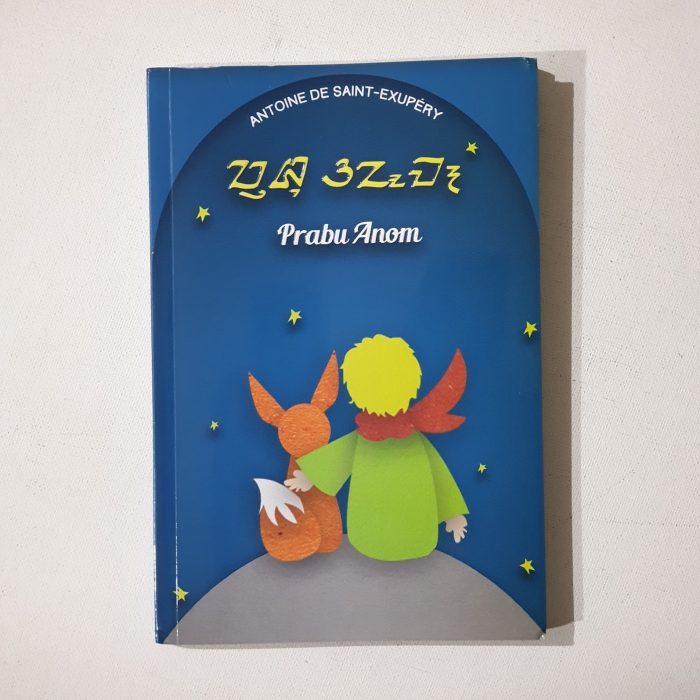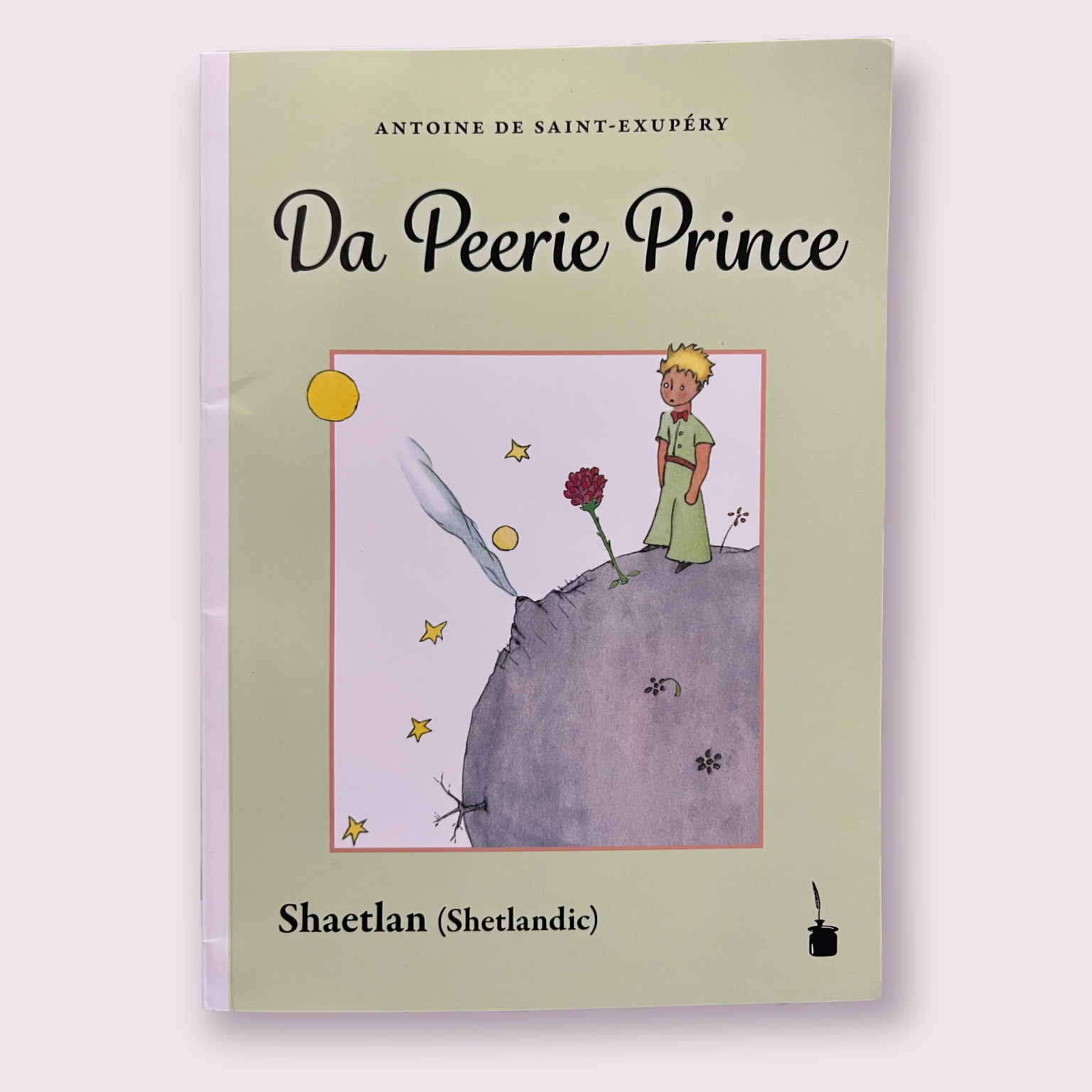
Da Peerie Prince — in Shetlandic.
Shetlandic, is the Shetland dialect of Scots. It is also variously known as broad or auld Shetland or Shaetlan, and referred to as Modern Shetlandic Scots (MSS). It is a dialect of Insular Scots spoken in Shetland, an archipelago to the north of mainland Scotland. It is derived from the Scots dialects brought to Shetland from the end of the fifteenth century by Lowland Scots, mainly from Fife and Lothian, with a degree of Norse influence from the Norn language, which is an extinct North Germanic language spoken on the islands until the late 18th century. Consequently Shetland dialect contains many words of Norn origin.
Like Doric in North East Scotland, Shetland dialect retains a high degree of autonomy due to geography and isolation from southern dialects. It has a large amount of unique vocabulary but as there are no standard criteria for distinguishing languages from dialects, whether or not Shetland dialect is a separate language from Scots is much debated.
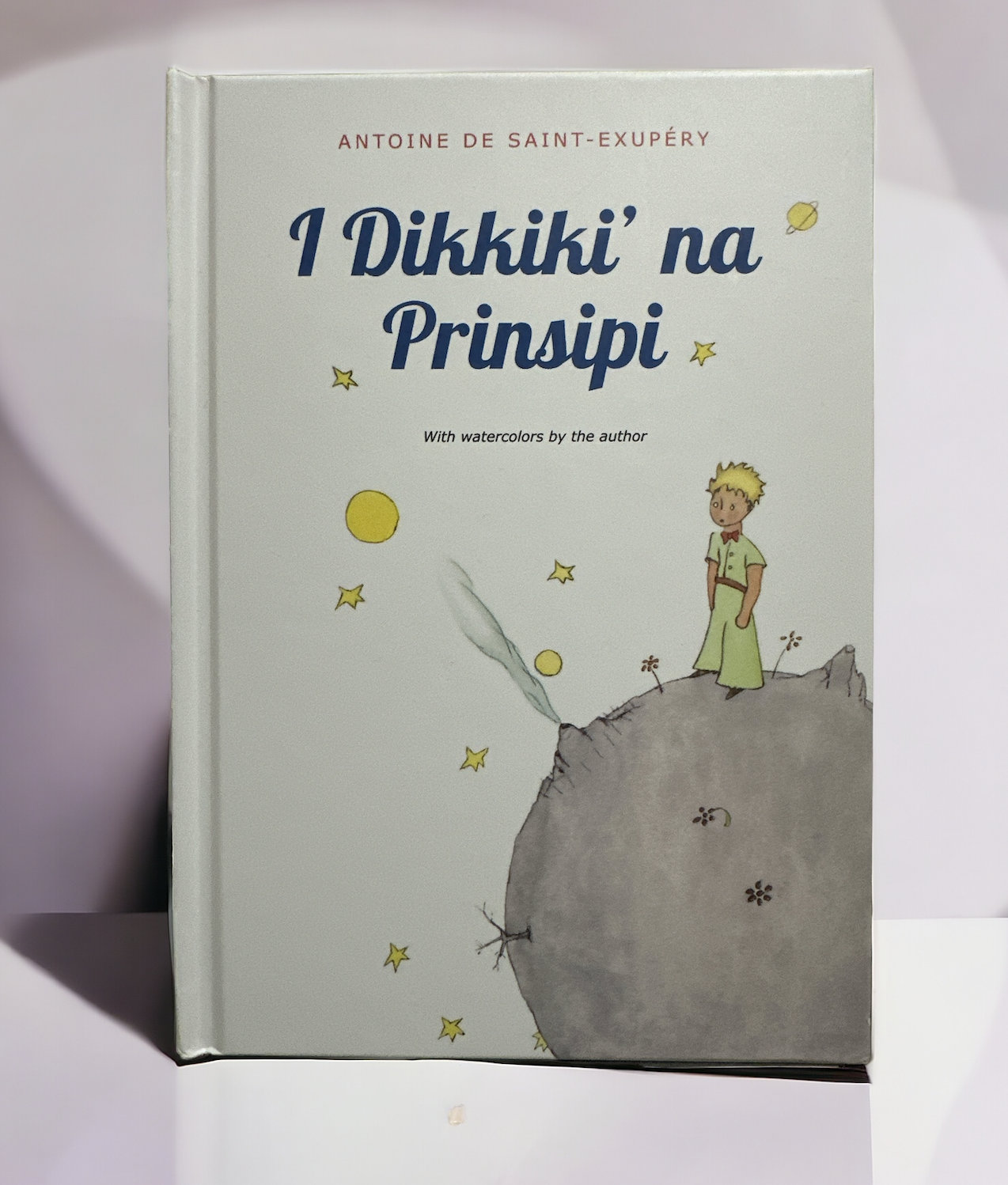
I Dikkiki’ na Prinsipi — in Chamorro language.
Chamorro is an Austronesian language spoken by the Chamorro people, the indigenous inhabitants of the Mariana Islands in the western Pacific Ocean. Chamorro is primarily spoken in Guam and the Northern Mariana Islands. These islands are situated in Micronesia, a region in the western Pacific Ocean. Guam and the CNMI are U.S. territories, with Guam being the most populous island and the political and economic center.
Chamorro is classified as an Austronesian language, specifically within the Chamorro-Fijian subfamily. Chamorro has a rich linguistic history, shaped by centuries of contact with other cultures. Spanish colonisation in the 17th century introduced Spanish loanwords into the language. Later, Guam was under U.S. administration after the Spanish-American War in the late 19th century, further influencing the language with English loanwords.
Chamorro was traditionally an oral language, and it did not have a standardised writing system until relatively recently. Today, it is written using the Latin script, with a standardised orthography developed to represent Chamorro phonology.
Occitan language or lenga d’òc is a Romance language spoken in Southern France and surrounding area; collectively sometimes referred to as Occitània.
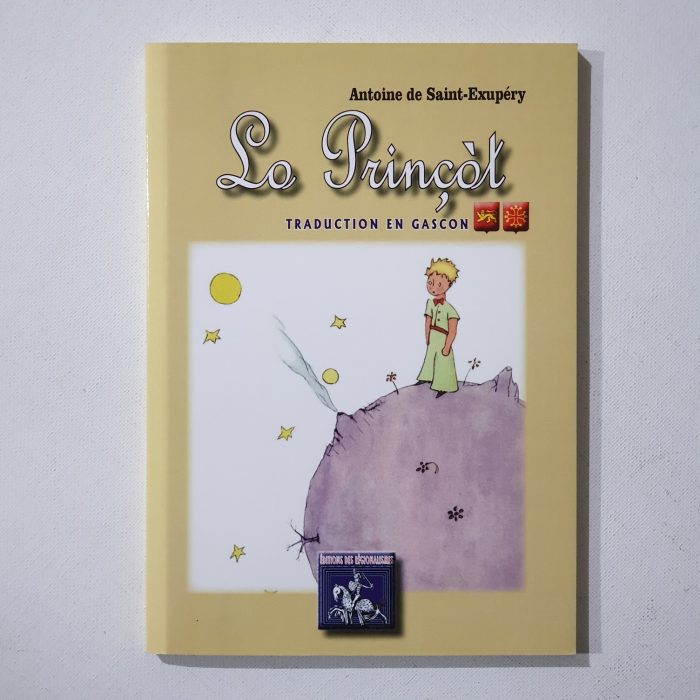
Lo Prinçòt — in Gascon language, a dialect of Occitan language mostly spoken in Gascony and Béarn in southwestern France (in parts of the following French départements: Pyrénées-Atlantiques, Hautes-Pyrénées, Landes, Gers, Gironde, Lot-et-Garonne, Haute-Garonne, and Ariège) and in the Aran Valley of Catalonia.
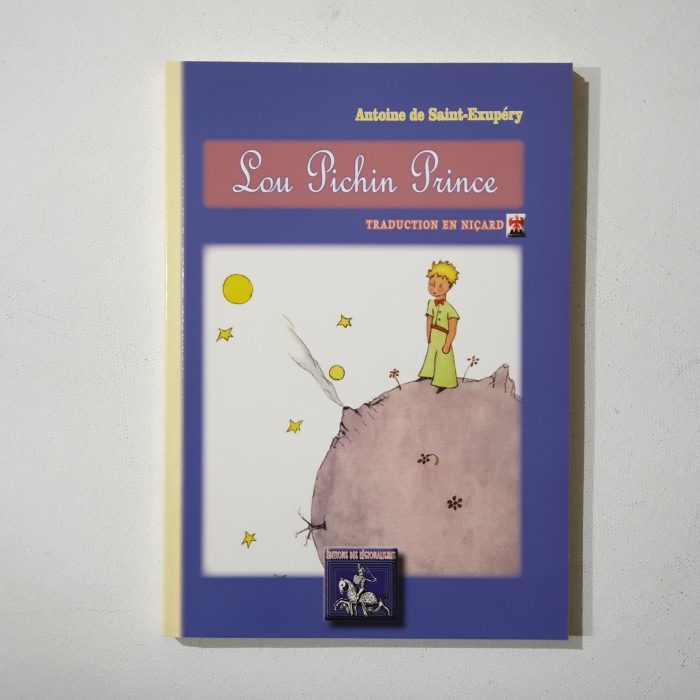
Lou Pichin Prince — in Niçard / Nissart / Niçart / Niçois / Nizzardo, which is considered a distinct subdialect of the Occitan language (Provençal dialect) spoken in the city of Nice and in the historical County of Nice (since 1860 the main part of the current French département of Alpes-Maritimes). In addition to Monégasque, Niçard is also spoken by some in Monaco.
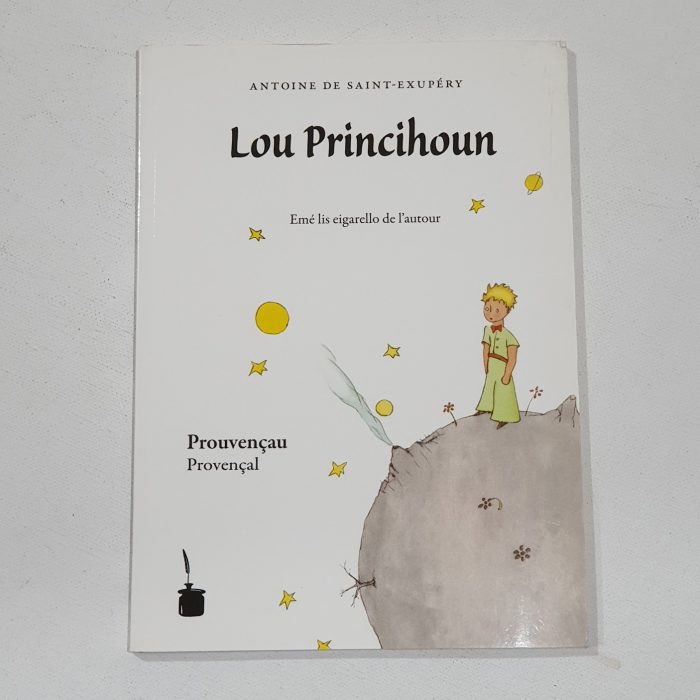
Lou Princihoun — in Provençal, a variety of Occitan language spoken by a minority of people in southern France, mostly in Provence.

Lo Prinçonet — in Limousin / Lemosin dialect of the Occitan language, which is spoken in the three departments of Limousin, parts of Charente and the Dordogne in the southwest of France.
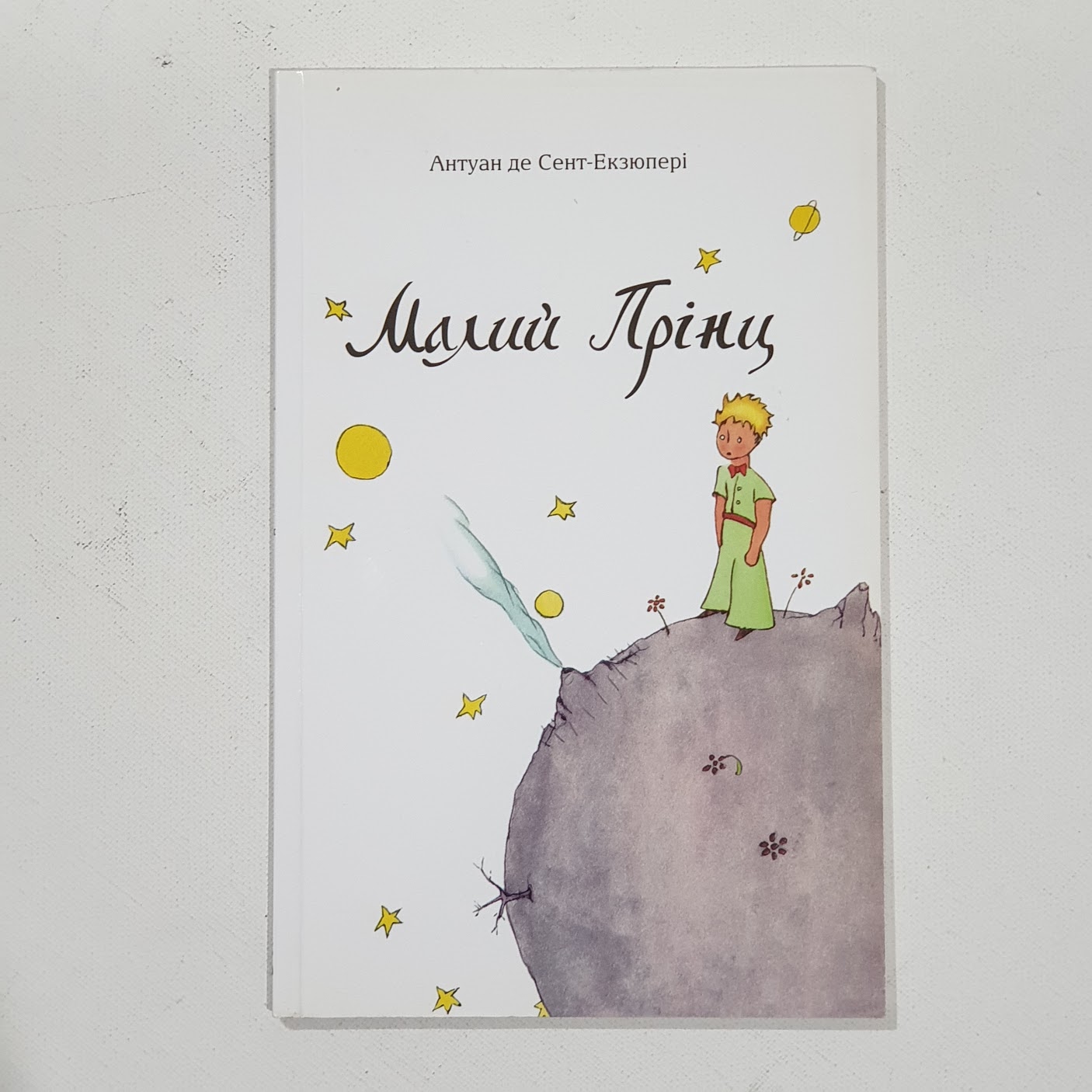
Малий Прінц (Maly Printz) — in Rusyn language.
Rusyn or Ruthenian language (русиньскый язык, руски язик, руснацькый язык) is an East Slavic language spoken by Rusyns in several parts of Central and Eastern Europe, and written in the Cyrillic script. The majority of speakers live in Transcarpathia part of Ukraine, eastern Slovakia and southeast Poland; plus a sizeable linguistic island in the Vojvodina, Serbia. Rusyn is officially recognised as a protected minority language by Poland (where it is called Lemko), Slovakia, Hungary, Romania, Bosnia and Herzegovina, Croatia, and Serbia.
Czech, Slovak, and Hungarian, as well as American and some Polish and Serbian linguists treat Rusyn as a distinct language (with its own ISO 639-3 code), whereas other scholars (in Ukraine, Poland, Serbia, and Romania) treat it only as a dialect of Ukrainian. Ukraine denies separate ethnic and linguistic status of the Rusyn, unlike other neighbouring countries.
In the English language, the term Rusyn is recognised officially by the ISO. Other names are sometimes also used to refer to the language, mainly deriving from exonyms such as Ruthenian or Ruthene that have more general meanings, and thus (by adding regional adjectives) some specific designations are formed, such as: Carpathian Ruthenian/Ruthene or Carpatho-Ruthenian/Ruthene.
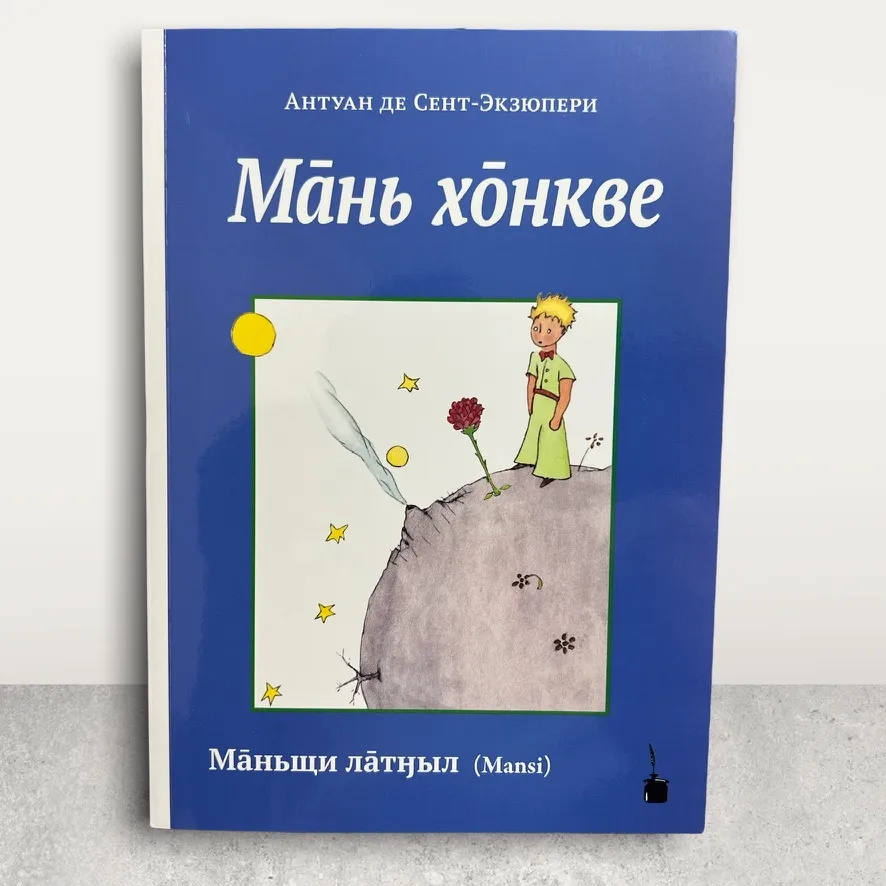
Ма̄нь Хо̄нкве — in Mansi language.
The Mansi languages, also previously called Vogul, are spoken by the Mansi people in Russia along the Ob River and its tributaries, in the Khanty–Mansi-Yugra Autonomous Okrug, and Sverdlovsk Oblast. Traditionally considered a single language, they constitute a branch of the Uralic languages, often considered most closely related to the neighbouring Khanty languages and then to Hungarian. According to the 2010 census, there were only 940 Mansi-speaking people in Russia out of an ethnic population of 12,000.
The base dialect of the Mansi literary language is the Sosva dialect, a representative of the northern language. Fixed word order is typical in Mansi. Adverbials and participles play an important role in sentence construction.
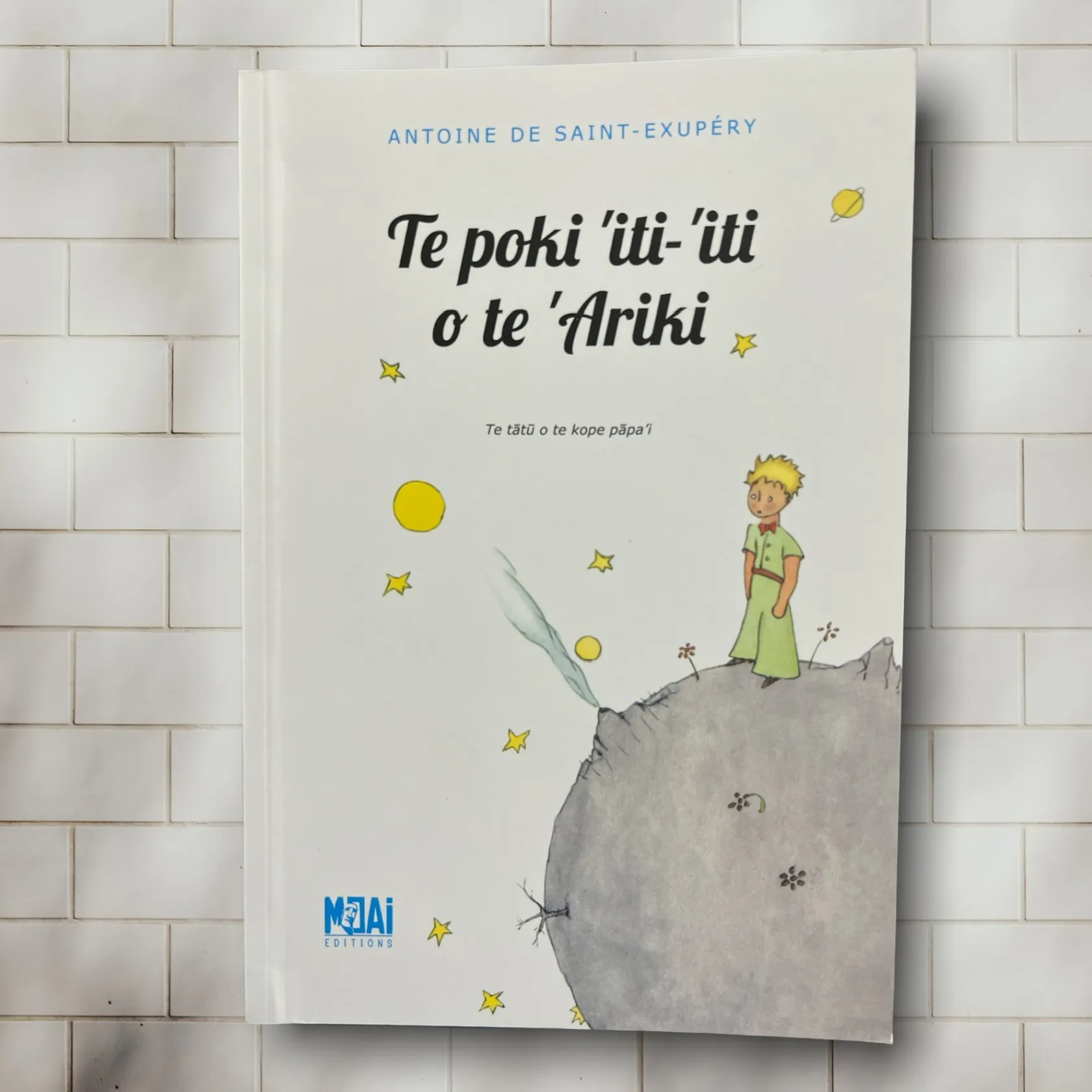
Te poki ‘iti-‘iti o te ‘Ariki — in Rapa Nui language.
Rapa Nui, also known as Pascuan or Pascuense, is an Eastern Polynesian language of the Austronesian language family. It is spoken on the island of Rapa Nui, also known as Easter Island.
The island is home to a population of just under 6,000 and is a special territory of Chile. There are 9,399 people (on both the island and the Chilean mainland) who identify as ethnically Rapa Nui. Census data does not exist on the primary known and spoken languages among these people. In 2008, the number of fluent speakers was reported as low as 800. Rapa Nui is a minority language and many of its adult speakers also speak Spanish. Most Rapa Nui children now grow up speaking Spanish and those who do learn Rapa Nui begin learning it later in life.
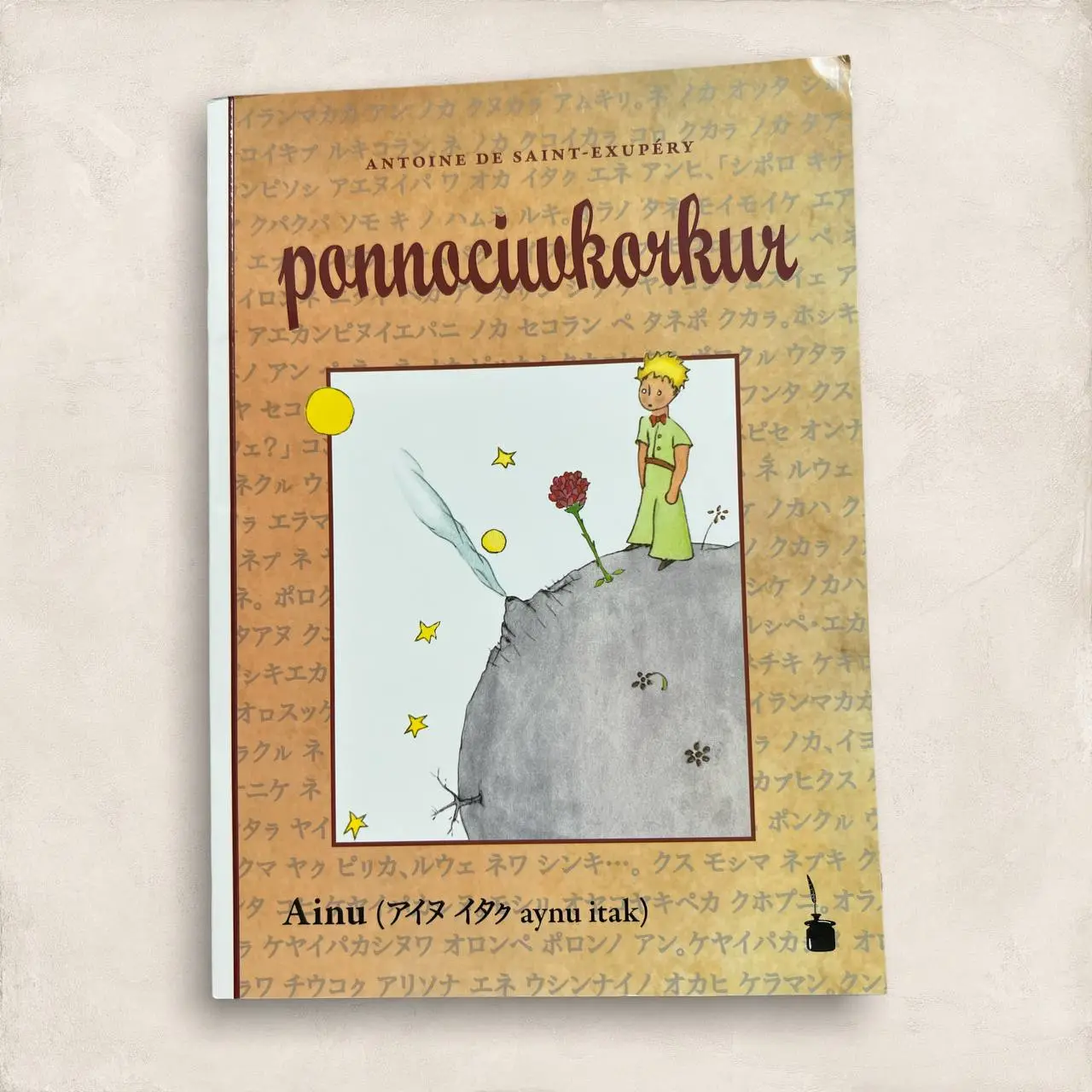
Ponnociwkorkur — in Ainu.
Ezo is a Japanese word meaning “foreigner” and referred to the Ainu lands to the north, which the Japanese named “Ezo-chi”. Ainu, Ainu-itak (アイヌ・イタㇰ), or Hokkaido Ainu, is a language spoken by Ainu people on this area. It is a member of the Ainu language family, itself considered a language family isolate with no academic consensus of origin.
Until the 20th century, the Ainu languages — the extant Hokkaido Ainu and the now-extinct Kuril Ainu and Sakhalin Ainu — were spoken throughout the southern half of the island of Sakhalin and by small numbers of people in the Kuril Islands.
Due to the extreme colonisation policy employed by the Japanese government, the number of Ainu language speakers plunged down through the 20th century, and very few people can speak the language fluently. Hokkaido Ainu is a moribund language, though attempts are being made to revive it.
The Ainu languages are a contact language, i.e. have strong influences from various Japonic dialects/languages during different stages, suggesting early and intensive contact between them somewhere in the Tōhoku region, with Ainu borrowing a large amount of vocabulary and typological characteristics from early Japonic.
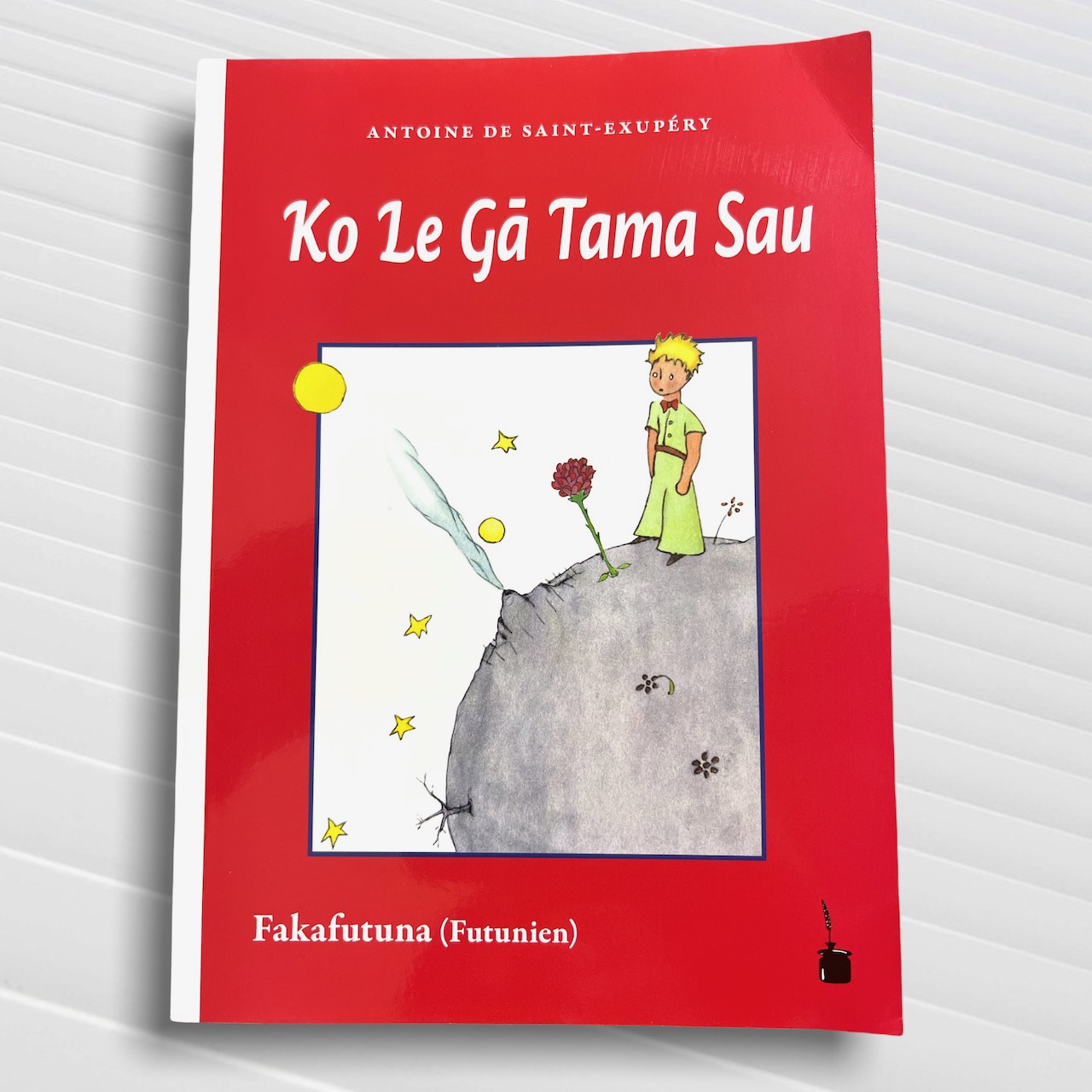
Ko Le Gā Tama Sau — in Futunan.
Futunan, Futunian, or Fakafutuna is a Polynesian language spoken on Futuna and Alofi. The term East-Futunan is also used to distinguish it from the related West Futunan (Futuna-Aniwan) spoken on the outlier islands of Futuna and Aniwa in Vanuatu. The language is closely related to other Western Polynesian languages, Fagauvea, Wallisian, Tongan, Samoan, Tokelau, and Niuafo’ou.
In 1987, Fakafutuna was spoken by 3,600 on Futuna, as well as by some of the 3,000 migrant workers in New Caledonia. This language is a member of the diminishing set of native Pacific languages, it is classified as endangered.
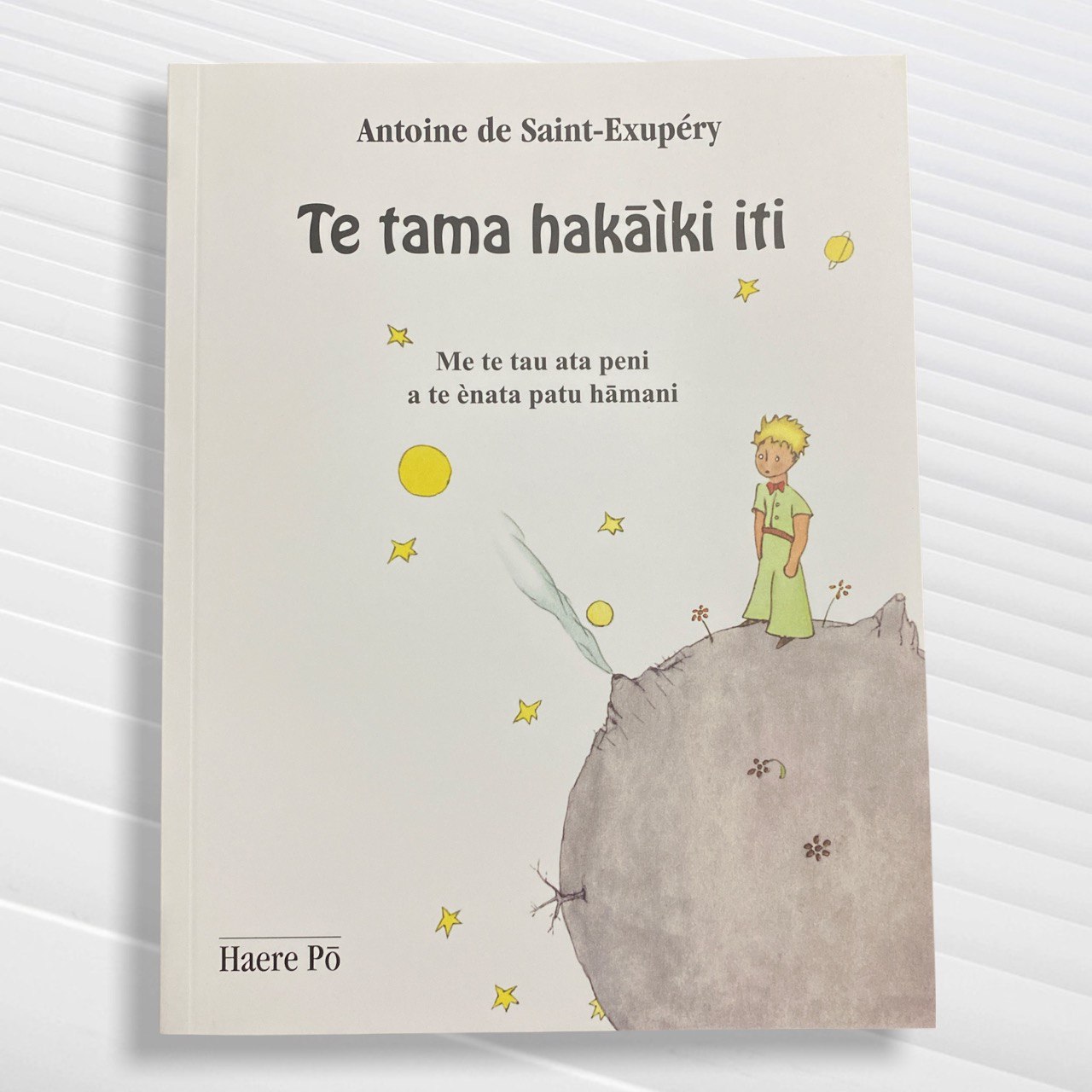
Te Tama Hakāìki Iti — in Marquesan.
Marquesan is a collection of East-Central Polynesian dialects, of the Marquesic group, spoken in the Marquesas Islands of French Polynesia.
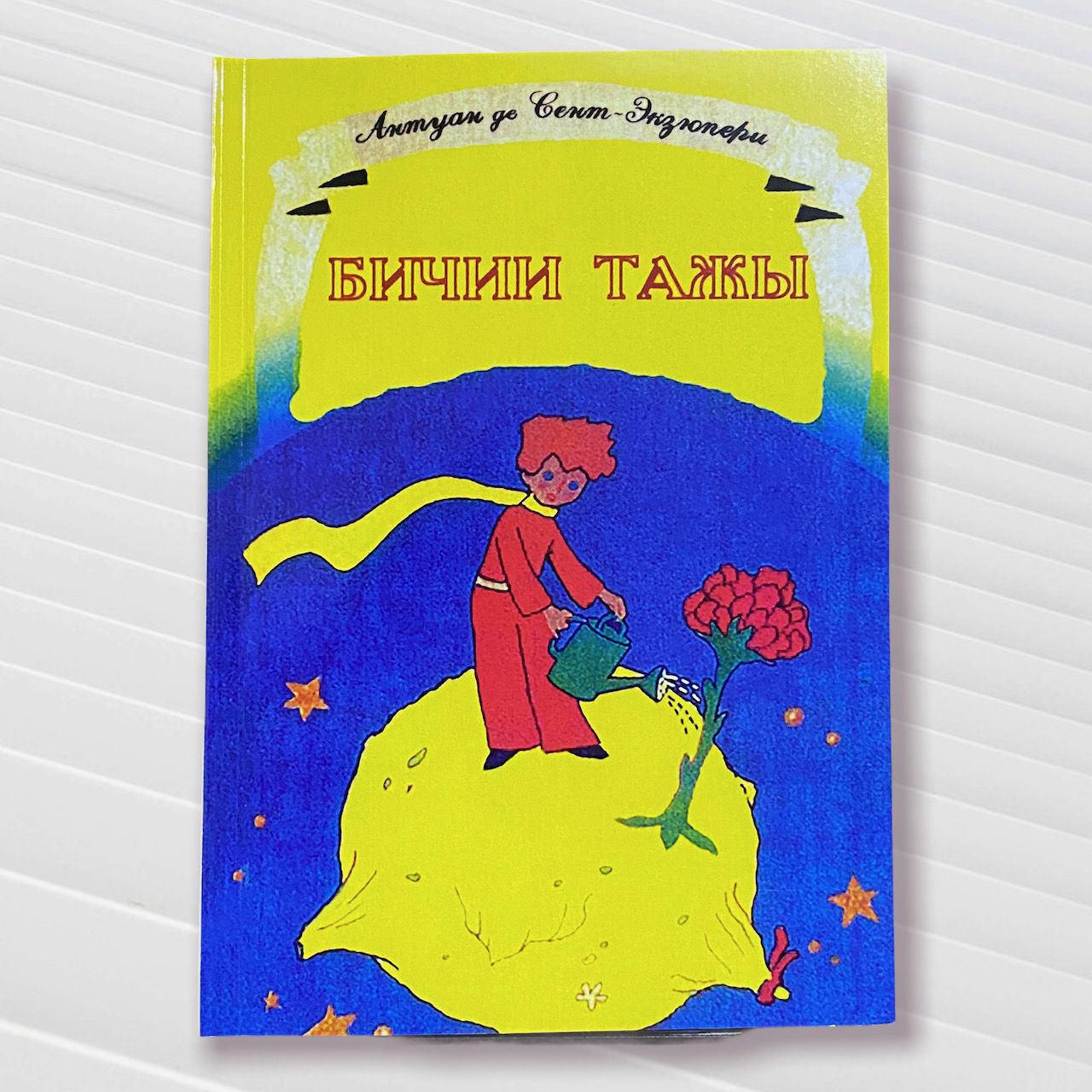 Бичии Тажы / Bichii Tazhy — in Tuvan language. Tuvan / Tyva Dyl / Тыва Дыл is a Turkic language spoken in the Republic of Tuva in South-Central Siberia in Russia. The language has borrowed a great number of roots from the Mongolian language, Tibetan and the Russian language. There are also small diaspora groups of Tuvan people that speak distinct dialects of Tuvan in the People’s Republic of China and in Mongolia.
Бичии Тажы / Bichii Tazhy — in Tuvan language. Tuvan / Tyva Dyl / Тыва Дыл is a Turkic language spoken in the Republic of Tuva in South-Central Siberia in Russia. The language has borrowed a great number of roots from the Mongolian language, Tibetan and the Russian language. There are also small diaspora groups of Tuvan people that speak distinct dialects of Tuvan in the People’s Republic of China and in Mongolia.
This tranlation has been decades in my wish list, since the story of Richard Feynman who tried to visit a small country called Tuva with Kyzyl as its capital city. “A city spelled k-y-z-y-l must be interesting to visit,” he said. He failed to pay a visit to this country anyway.
The Tuva have historically been referred to as Soyons, Soyots or Uriankhais.The Tuvan people have been ruled by China, Russia, and Mongolia for thousands of years. Their most recent time of independence was from 1921 to 1944, when they were considered the Tuvan’s People’s Republic. Tuva lost its independence to the Soviets in 1944. In 1990, the Tuvan people wanted to be as independent as possible from the Russian Federation following the collapse of the Soviet Union. They especially emphasized their want for independence in terms of their language and culture.
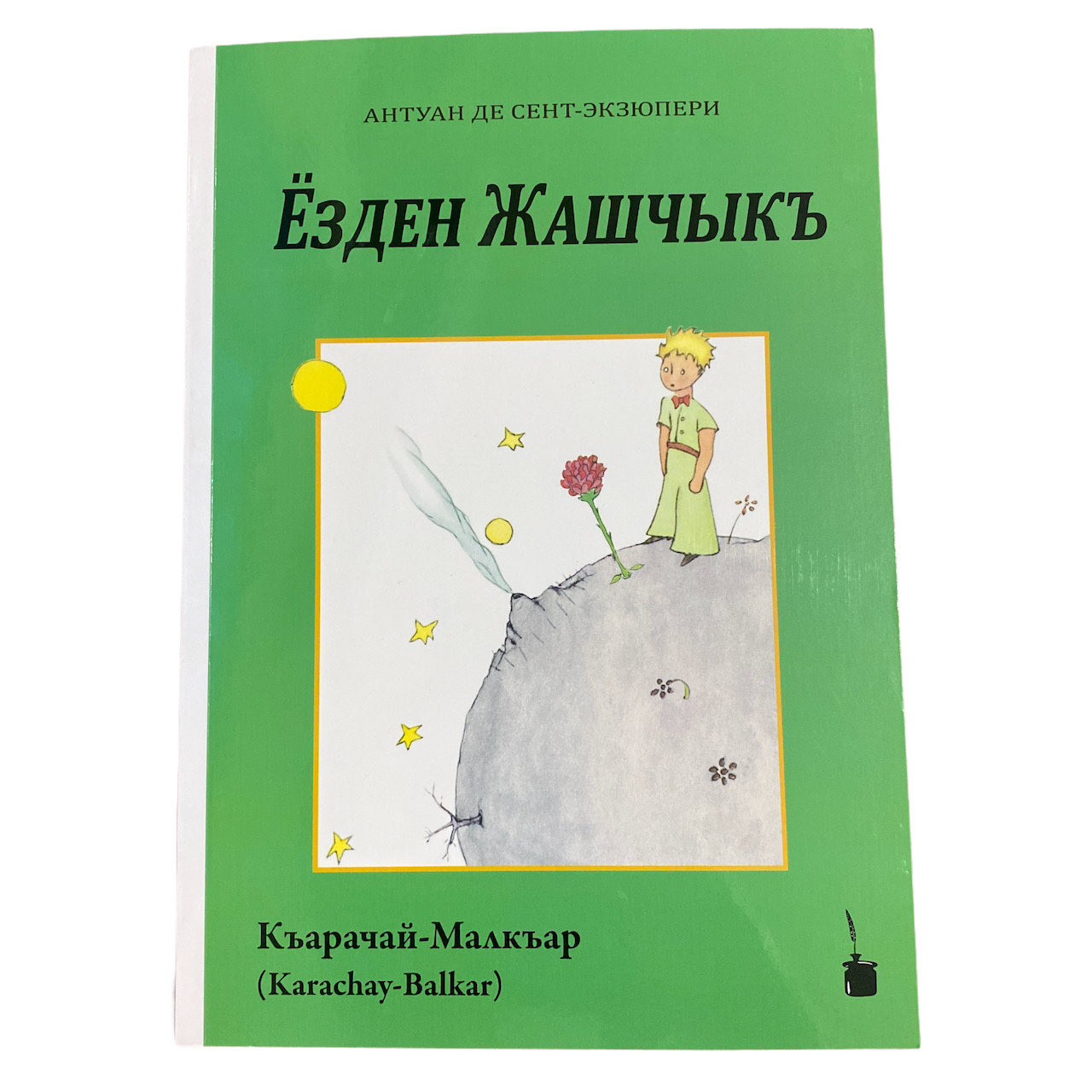
Ёзден Жашчыкъ / Ëzden Zhashçeq — in Karachay-Balkar.
Karachay-Balkar / Къарачай-Малкъар тил / Qaraçay-Malqar Til is a Turkic language spoken by the Karachays and Balkars in Kabardino-Balkaria and Karachay–Cherkessia, European Russia, as well as by an immigrant population in Afyonkarahisar Province, Turkey. It is divided into two dialects: Karachay-Baksan-Chegem and Malkar. The modern Karachay-Balkar written language is based on the Karachay-Baksan-Chegem dialect. The language is closely related to Kumyk.

Muna Kaïsa — in Batanga language.
Batanga, Tanga, or Noho, is a language spoken in Cameroon and Equatorial Guinea. Limba speakers report some degree of mutual intelligibility and call it “Old Malimba”. It is a part Sawabantu languages.
Sawabantu languages are a group of Bantu languages comprising most of zones A.20 and A.30 of Guthrie’s classification, and most likely also part of zone A.10. According to Nurse & Philippson (2003), the A.20 and A.30 languages apart from Bubi form a valid node. The most important of these languages is Duala, which is a vehicular language.
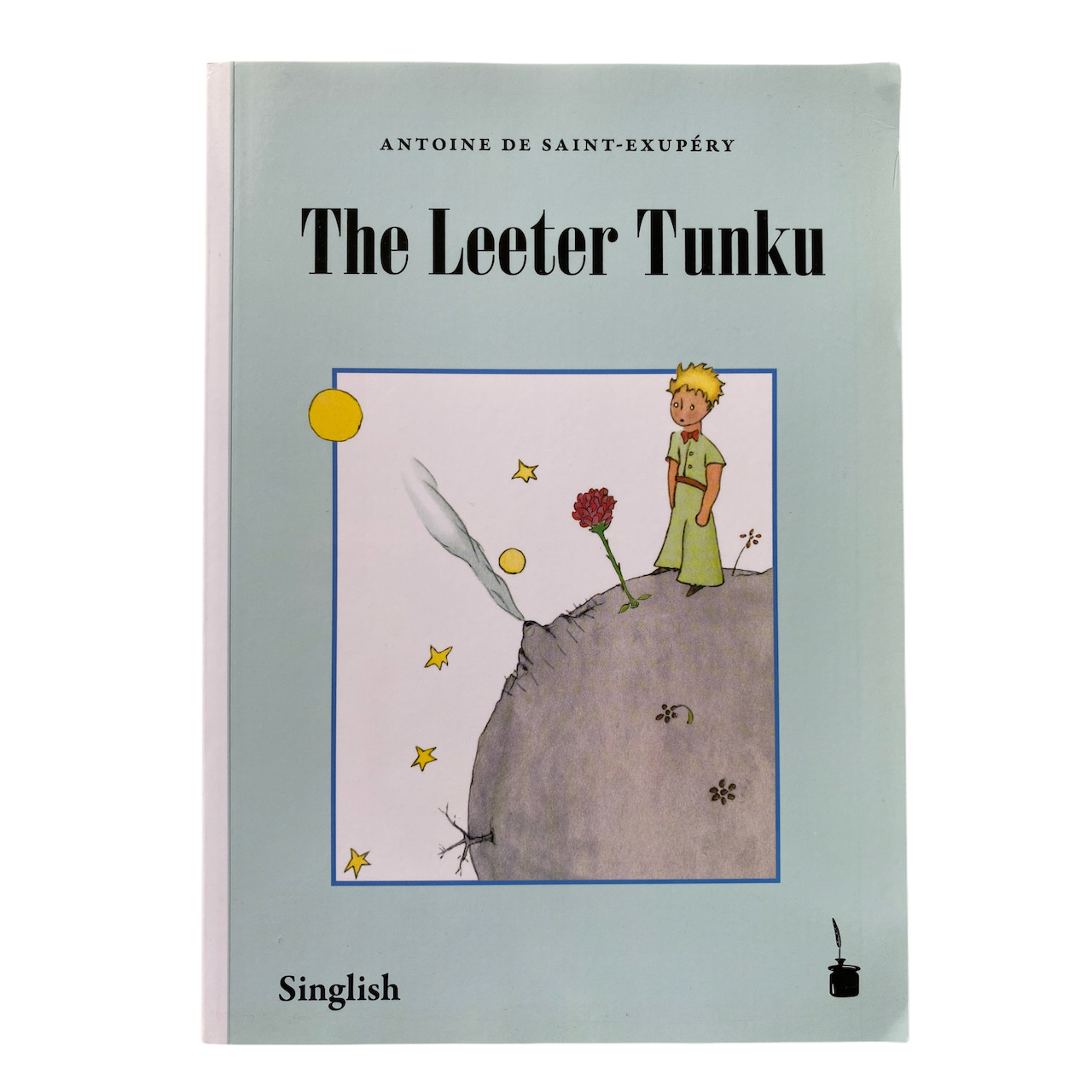
The Leeter Tunku — in Singlish.
Singlish is an English-based creole language spoken in Singapore. The term Singlish was first recorded in 1973. English is one of Singapore’s official languages, so Singlish is regarded as having low prestige. Singlish is also heavily discouraged in the mass media and in schools. However, such official discouragement and routine censorship are actually countered by other presentations in mainstream media, including routine usage by ordinary people in street interviews broadcast on TV and radio on a daily basis, as well as occasional usage in newspapers.
There have been recent surges in interest in Singlish usage, sparking several national conversations. The vocabulary of Singlish consists of words originating from English, Malay, Cantonese, Japanese, Hokkien, Teochew, and Tamil. Elements of American and Australian slang have come into Singlish through imported television series and films.
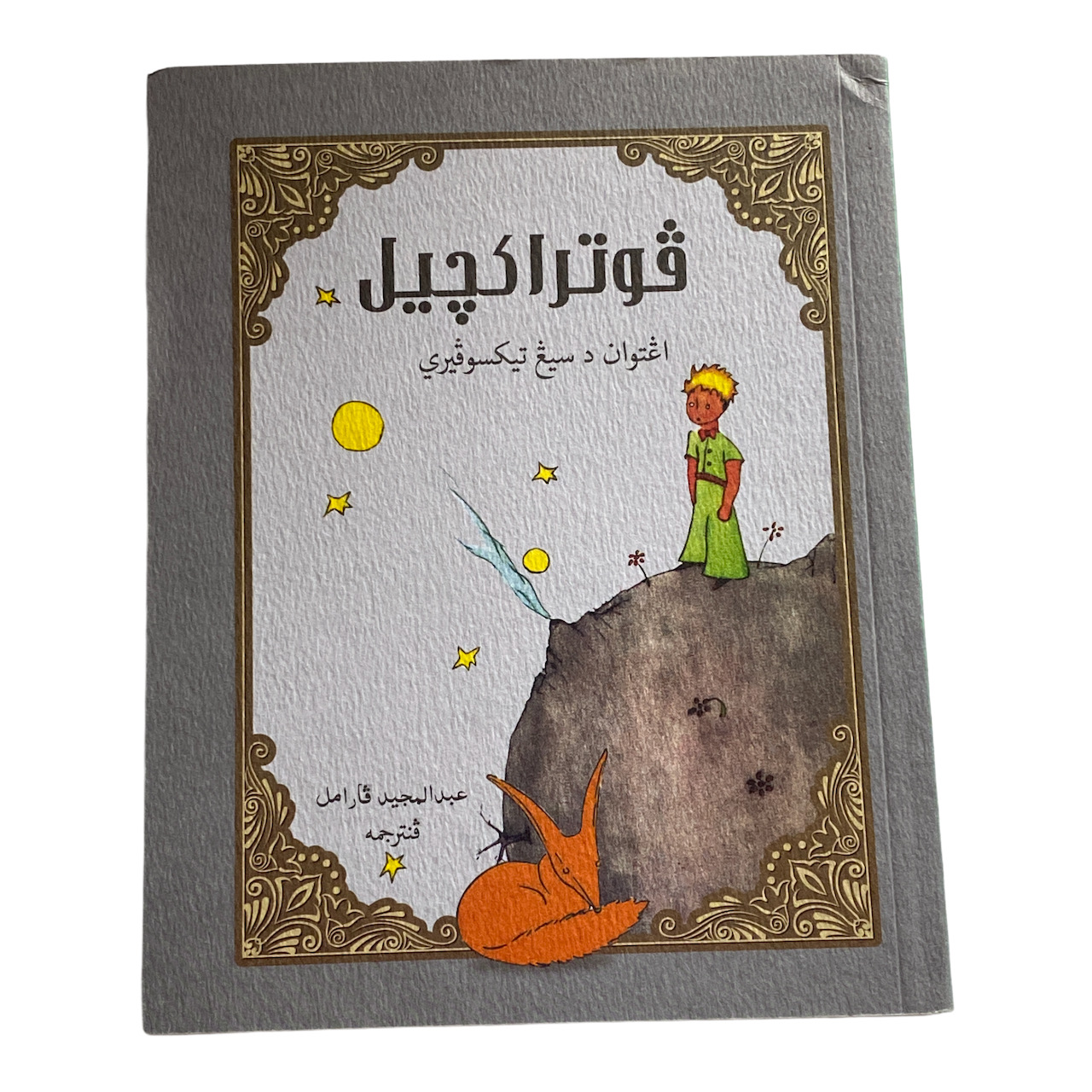
ڤوتراكچيل / Putra Kecil in Pattani Malay.
Pattani Malay, or Kelantan-Pattani Malay, or referred in Thailand as Jawi / Yawi, is an Austronesian language of the Malayic subfamily spoken in the southernmost provinces of Thailand and the neighbouring Malaysian state of Kelantan. It is the primary spoken language of Thai Malays, but is also used as a lingua franca by ethnic Southern Thais in rural areas.
Pattani Malay is highly divergent from other Malay varieties because of its geographical isolation from the rest of the Malay world by high mountains, deep rainforest and the Gulf of Thailand. It is also influenced by Thai language.
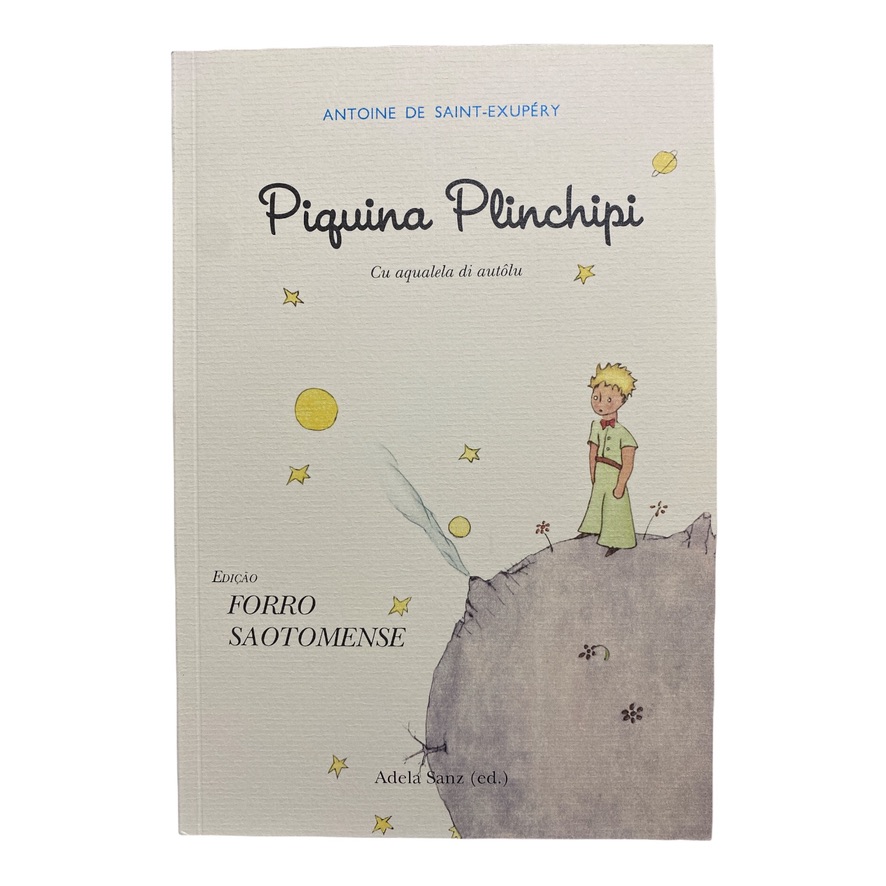
Piquina Plinchipi — in Forro Sãotomense.
Forro Creole or Sãotomense (Sãotomense: forro, santomense) is a Portuguese creole language spoken in São Tomé and Príncipe. It is also called by its native speakers as sãotomense creole or santomense creole.
São Tomé is an island of the Gulf of Guinea, discovered by the Portuguese in the 15th century. It was reported as uninhabited at the time, but Portuguese settlers used the island as a center of the slave trade, and there was a need for slaves in the island. It has been theorised that since both parties needed to communicate, a pidgin was formed. The substrate languages were from the Bantu and Kwa groups. It is believed that his pidgin then became fixed (creolised) as it became the mother language of children born from Portuguese men and African women slaves. Mixed marriages were then encouraged by the Portuguese Crown, for the sake of settlement.
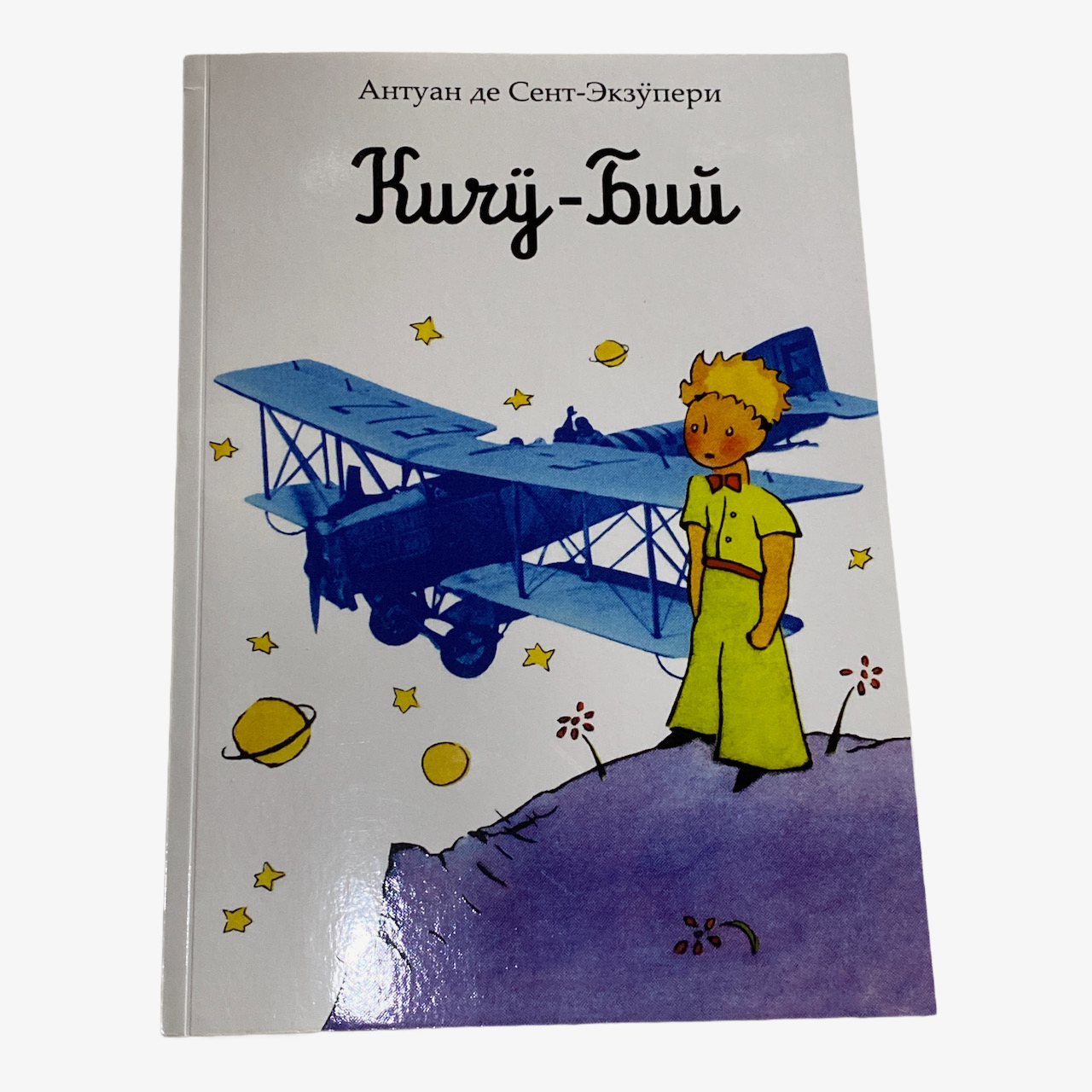
Кичӱ-Бий / Kichü-Bey — in Altai language.
Altai (Алтай тил / Altay til) is a Turkic language, spoken officially in the Altai Republic, Russia. The official language is based on the Southern Altai language spoken by the group called the Altay-Kiži, however in the few years it has also spread to the Northern Altai Republic. The language was called Oyrot (ойрот) prior to 1948.
The classification of Altai within the Turkic languages has often been disputed. Because of its geographic proximity to the Shor and Khakas languages, some classifications place it in a Northern Turkic subgroup. Due to certain similarities with Kyrgyz, it has been grouped as the Kyrgyz–Kipchak subgroup with the Kypchak languages which is within the Turkic language family. Another classification places Southern Altai in its own subgroup within Turkic and groups the Northern Altai dialects with Lower Chulym and the Kondoma dialect of Shor.
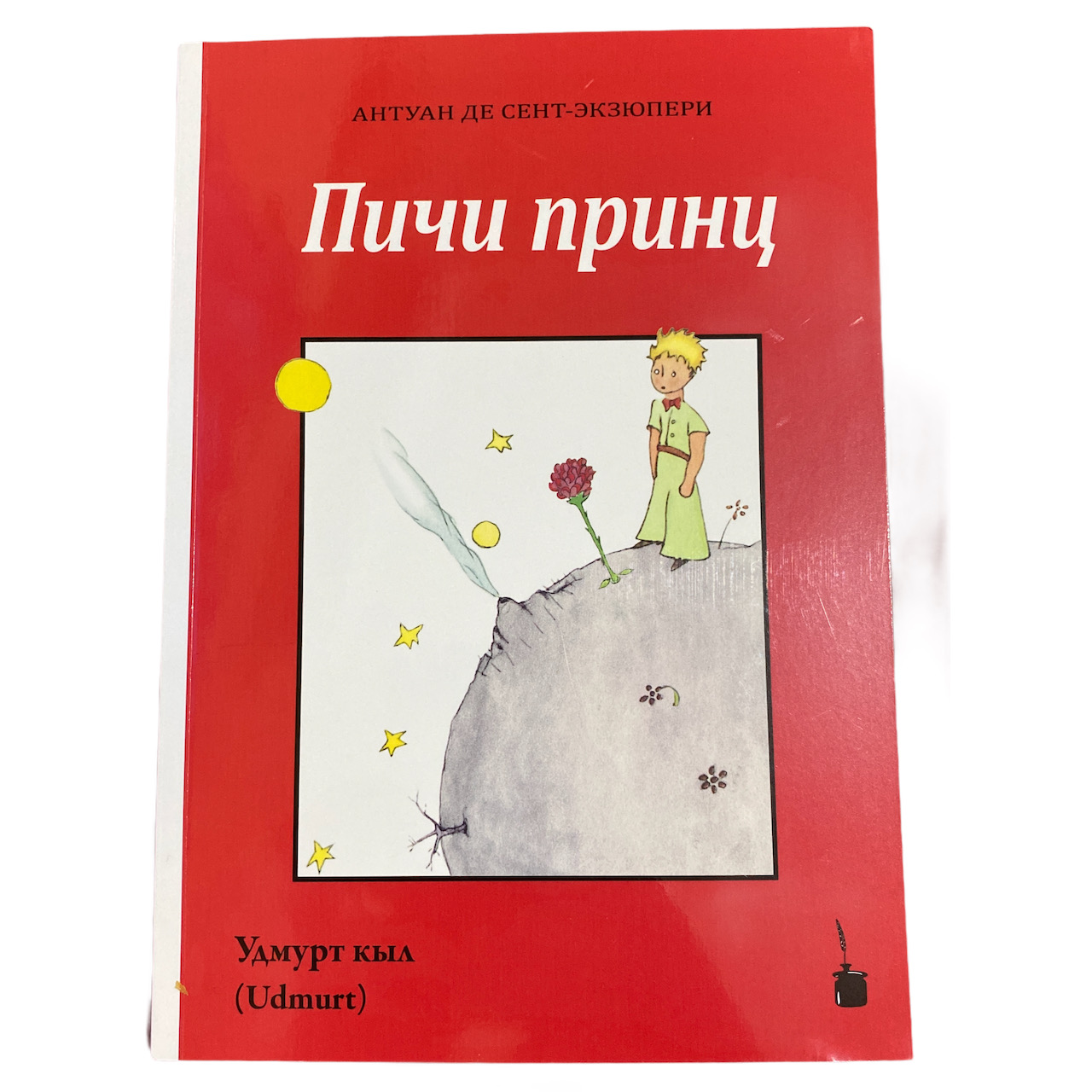
Пичи Принц / Pici Prints — in Udmurt.
Udmurt (удмурт кыл, udmurt kyl) is a Uralic language, part of the Permic subgroup, spoken by the Udmurt natives of the Russian constituent republic of Udmurtia, where it is co-official with Russian. It is written using the Cyrillic alphabet with the addition of five characters not used in the Russian orthography: Ӝ/ӝ, Ӟ/ӟ, Ӥ/ӥ, Ӧ/ӧ, and Ӵ/ӵ. Together with Komi and Permyak languages, it constitutes the Permic grouping of the Uralic family, related to Finnic and Ugric languages (which includes, among others, Finnish, Karelian, Estonian, Hungarian). Among outsiders, it has traditionally been referred to by its Russian exonym, Votyak. Udmurt has borrowed vocabulary from neighboring languages Tatar and Russian.
Ethnologue estimates 550,000 native speakers (77%) in an ethnic population of 750,000 in the former USSR (1989 census).
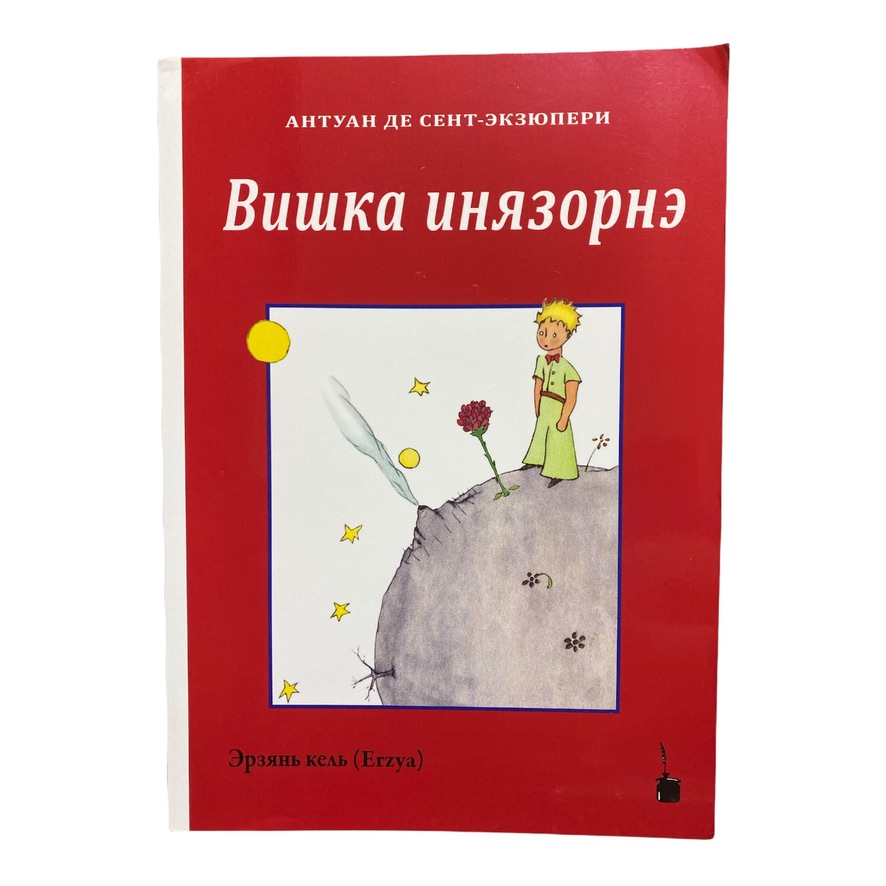
Вишка Инязорнэ / Vishka Inäzorne — in Erzya language.
The Erzya language (эрзянь кель / erzäń këľ / erzian) is spoken by about 37,000 people in the northern, eastern and north-western parts of the Republic of Mordovia and adjacent regions of Nizhny Novgorod, Chuvashia, Penza, Samara, Saratov, Orenburg, Ulyanovsk, Tatarstan and Bashkortostan in Russia.
The language belongs to the Mordvinic branch of the Uralic languages. Erzya is a language that is closely related to Moksha but has distinct phonetics, morphology and vocabulary.

Ичӧтик Принц / Ichötik Prints — in Komi.
Komi language (or also called Komi-Zyryan or Zyran languange, or Коми кыв / Komi kyv) is one of the two regional varieties of the pluricentric Komi language, the other regional variety being Permyak. Komi is spoken by the Komi-Zyryans’ ethnic group in Komi Republic and some other parts of Russia.
This language was written in the form of Old Permic alphabet for liturgical purposes as early as the 14th century in the Old Permic script. The alphabet was then replaced by Cyrillic in the 17th century.
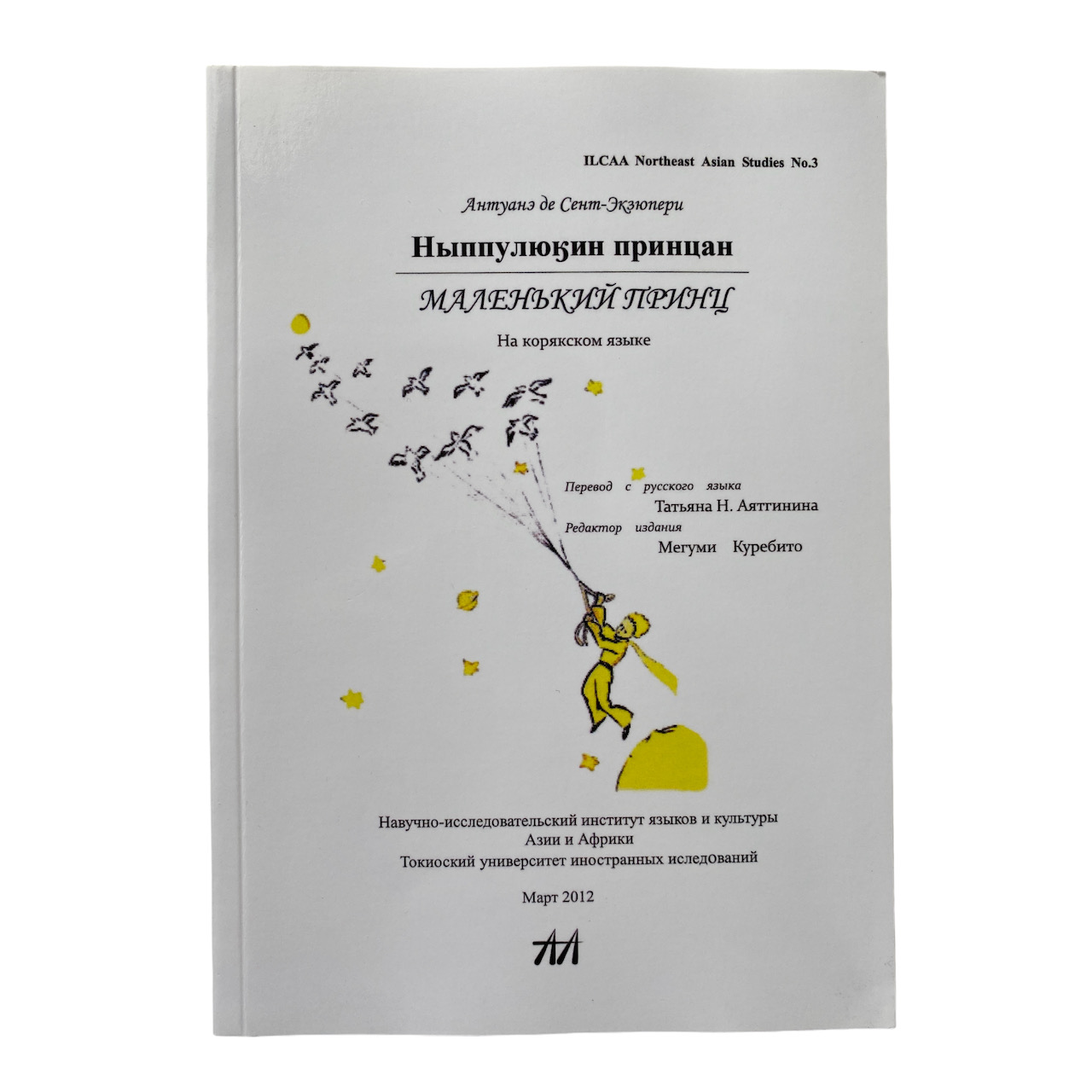
Ныппулюӄин Принцан / Nyppulyuqin Printsan — in Koryak language.
Koryak is a Chukotko-Kamchatkan language spoken by about 1,700 people as of 2010 in the easternmost extremity of Siberia. It is mostly spoken by Koryaks. Its close relative, the Chukchi language, is spoken by about three times that number. The language together with Chukchi, Kerek, Alutor and Itelmen forms the Chukotko-Kamchatkan language family. Its native name in Koryak is нымылан / nymylan, but variants of the Russian “Koryak” name are most commonly used in English and other languages.
The Chukchi and Koryaks form a cultural unit with an economy based on reindeer herding and both have autonomy within the Russian Federation.
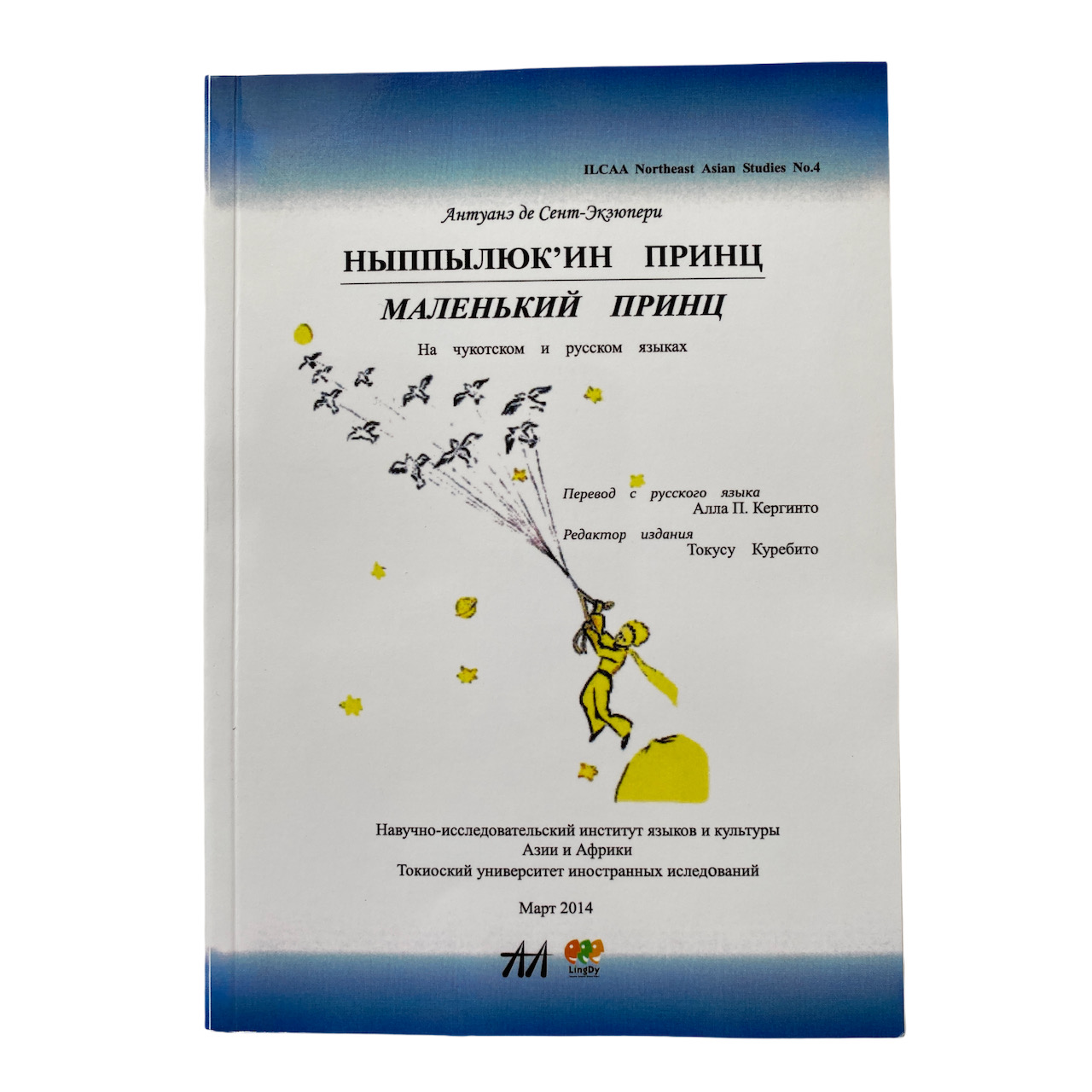
Ныппылюк’ин Принц / Nyppylyuk’in Prints — in Chukchi languange.
Chukchi is a Chukotko–Kamchatkan language spoken by the Chukchi people in the easternmost extremity of Siberia, mainly in Chukotka Autonomous Okrug.
Chukchi, Koryak, Kerek, Alutor, and Itelmen form the Chukotko-Kamchatkan language family. There are many cultural similarities between the Chukchis and Koryaks, including economies based on reindeer herding. Both peoples refer to themselves by the endonym Luorawetlat (ԓыгъоравэтԓьат; singular Luorawetlan / ԓыгъоравэтԓьан), meaning the real people. All of these peoples and other unrelated minorities in and around Kamchatka are known collectively as Kamchadals.
In the UNESCO Red Book, the language is on the list of endangered languages.
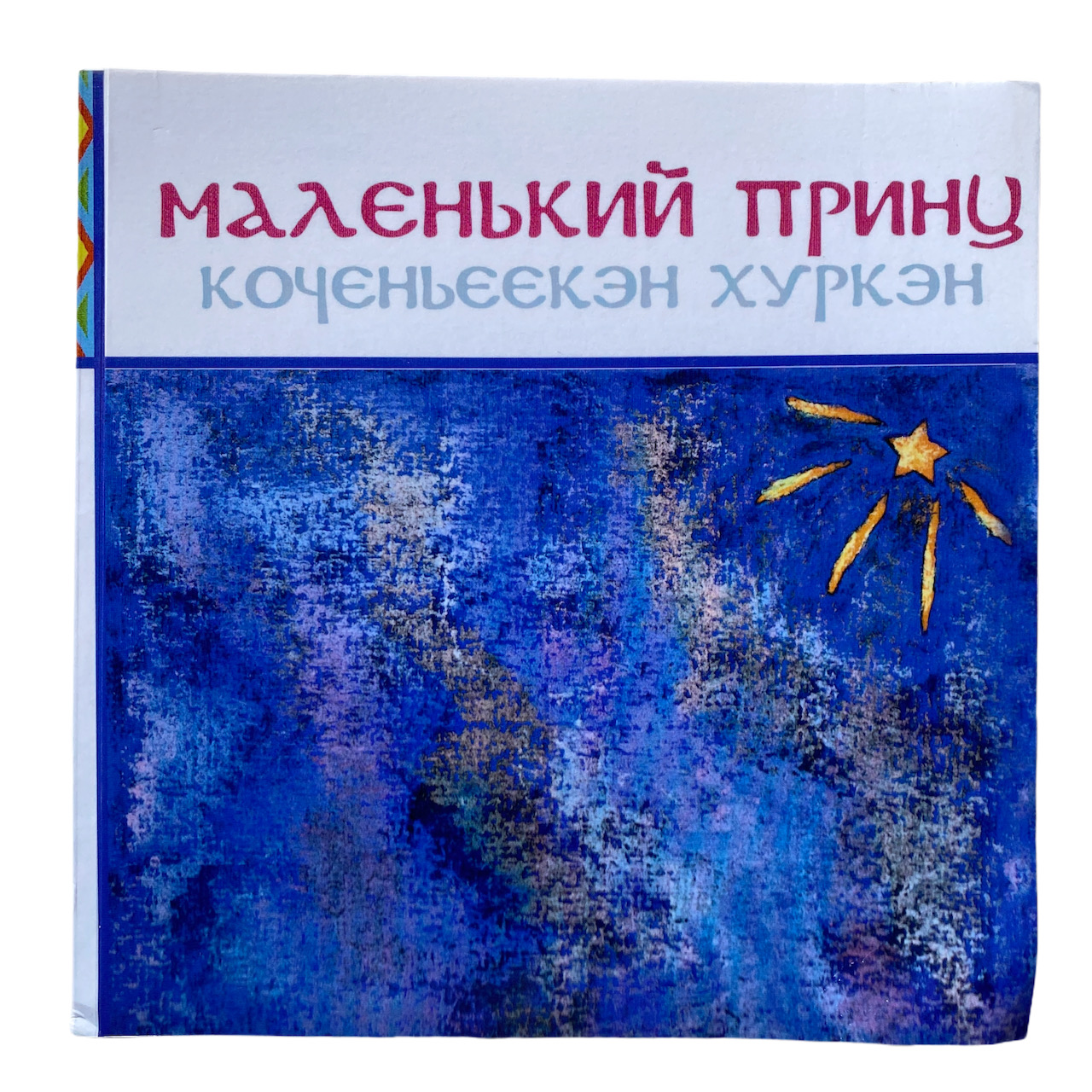
Коченьеекэн Хуркэн (Kocenyiekèn Khurkèn), in Even language.
The Even language, also known as Lamut, Ewen, Eben, Orich, Ilqan (Russian: Эве́нский язы́к, earlier also Ламутский язы́к), is a Tungusic language spoken by the Evens in Siberia. It is spoken by widely scattered communities of reindeer herders from Kamchatka and the Sea of Okhotsk in the east to the Lena river in the west, and from the Arctic coast in the north to the Aldan river in the south. Even is an endangered language, with only some 5,700 speakers. These speakers are specifically from the Magadan region, the Chukot region and the Koryak region.
This edition is a translation from Russian language to Even language by Zinaida Ivanovna Babtseva, a famous social activist of the the people of North Magadan area. Unfortunately she might never see her work published.
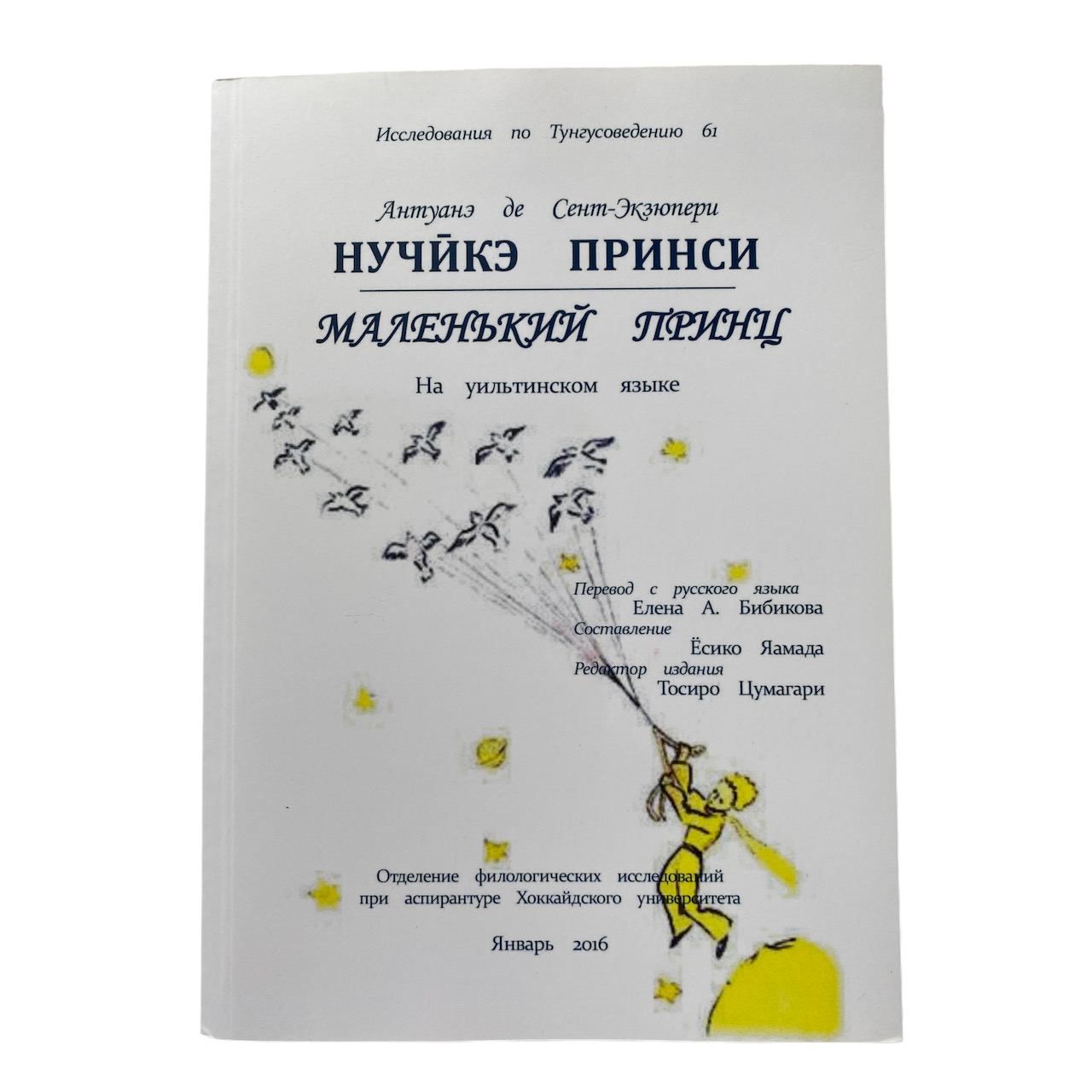
Нучӣкэ Принси / Nutshiike Prinsi — in Uilta language.
Uilta (уйльта), Ulta (ульта) or Orok is a language of the Manchu-Tungus family spoken in the Poronaysky and Nogliksky Administrative Divisions of Sakhalin Oblast, in the Russian Federation, by the small nomadic group known as the Orok or Ulta. The designation of Uilta may be related to the word ulaa which translates to «domestic reindeer».
The northern Uilta who live along the river of Tym’ and around the village of Val have reindeer herding as one of their traditional occupations. The group of southern Uilta live along the Polonay down the near city of Polonask. The two dialects come from northern and eastern groups, however having very few differences. The geographical spread of the language consists of the Sakhalin Province, Russian confederation, the Nogilkskiy District, and Poronayask. Some of the language contacts are Evek, Nivkhi, Ainu, Russian languages, and Japanese.
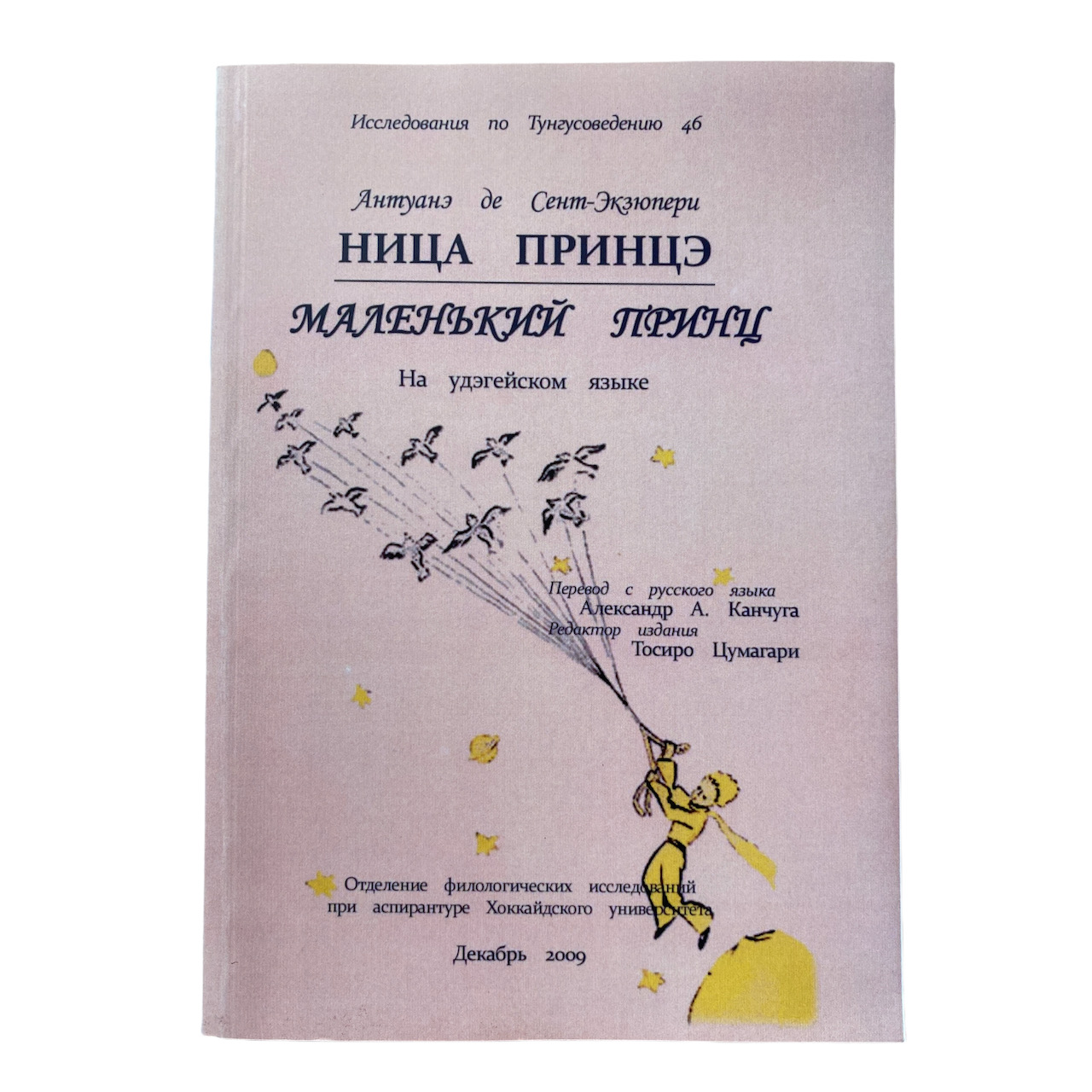
Ница Принцэ / Nitsa Printse — in Udege language.
Udege (Удэгейцы / удиэ / удиһе / Udihe / Udekhe / Udehe / Udeghe ) are people living in the Primorsky Krai and Khabarovsk Krai regions in Russia, the native population of this region. They live along the tributaries of the Ussuri, Amur, Kungari, and Anyuy Rivers. The Udege speak the Udege language, which belongs to the Tungusic language family. Their religious beliefs include animism, animal worship, and shamanism.
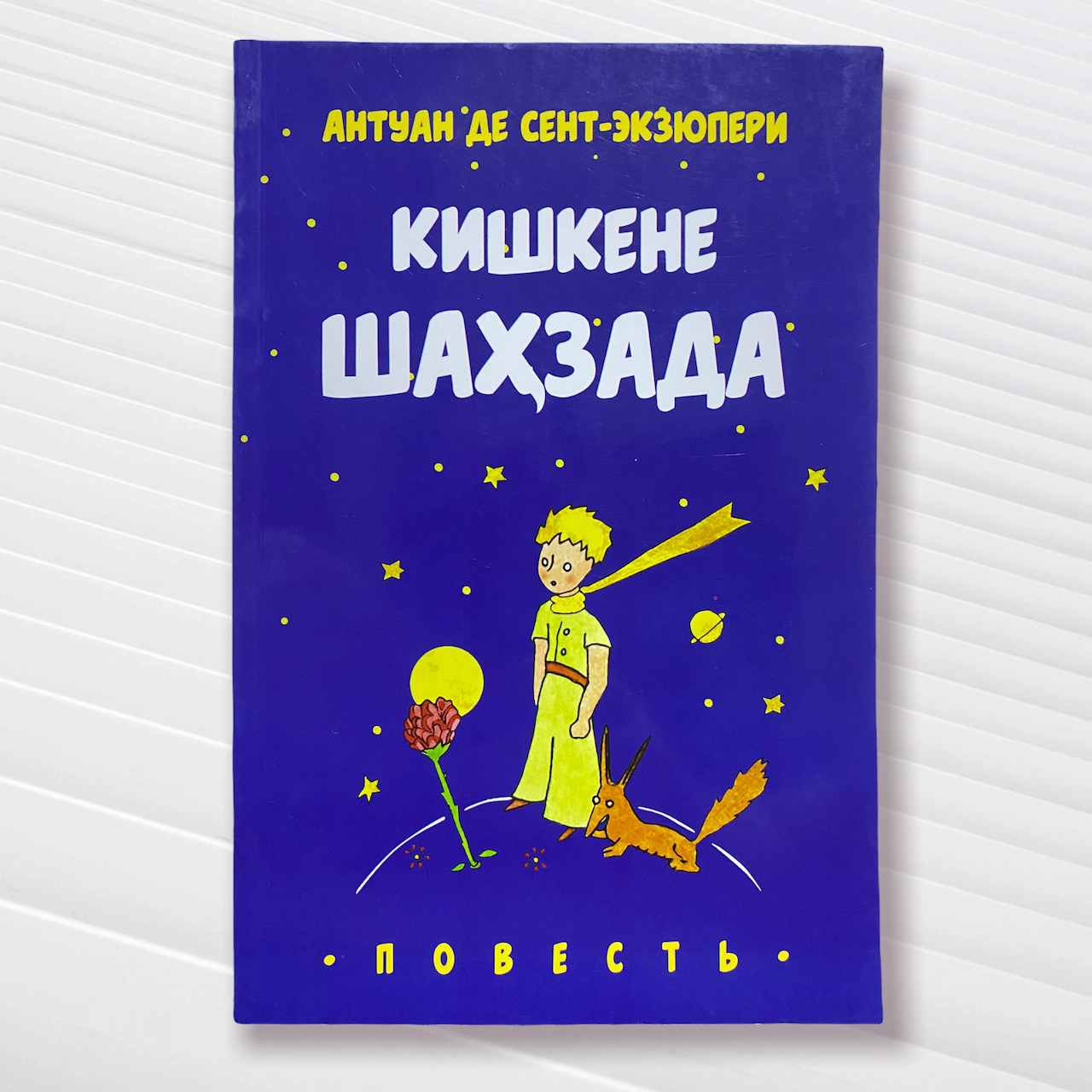
Кишкене Шаҳзада / Kishkene Shahzada — in Karakalpak Language, both in cyrillic (above) or in latin (below).
I’ve just got some new great friends from Karakalpakstan, an autonomous republic that is currently part of Uzbekistan. Two of them are Moldir Purkhanova and Jetes Dauletbaev. They contacted the Karakalpak translator of this book, Gúlnara Ibragimova. Gulnara gave the books, in cyrillic and latin editions to me; and Moldir & Jetes arranged to send the books to me. What a generous and kind people there in Karakalpakstan !

Karakalpak / Qaraqalpaq tili / Қарақалпақ тили / قاراقالپاق تىلى is a Turkic language spoken by Karakalpaks in Karakalpakstan. It is divided into two dialects, Northeastern Karakalpak and Southeastern Karakalpak. Karakalpak is a member of the Kipchak branch of Turkic languages, which includes Kazakh, Bashkir, Tatar, Kumyk, Karachay, Nogai, and Kyrgyz. Due to its proximity to Uzbek, much of Karakalpak’s vocabulary and grammar has been influenced by Uzbek. Karakalpak is one of the official languages in the Republic of Karakalpakstan (besides Uzbek language).
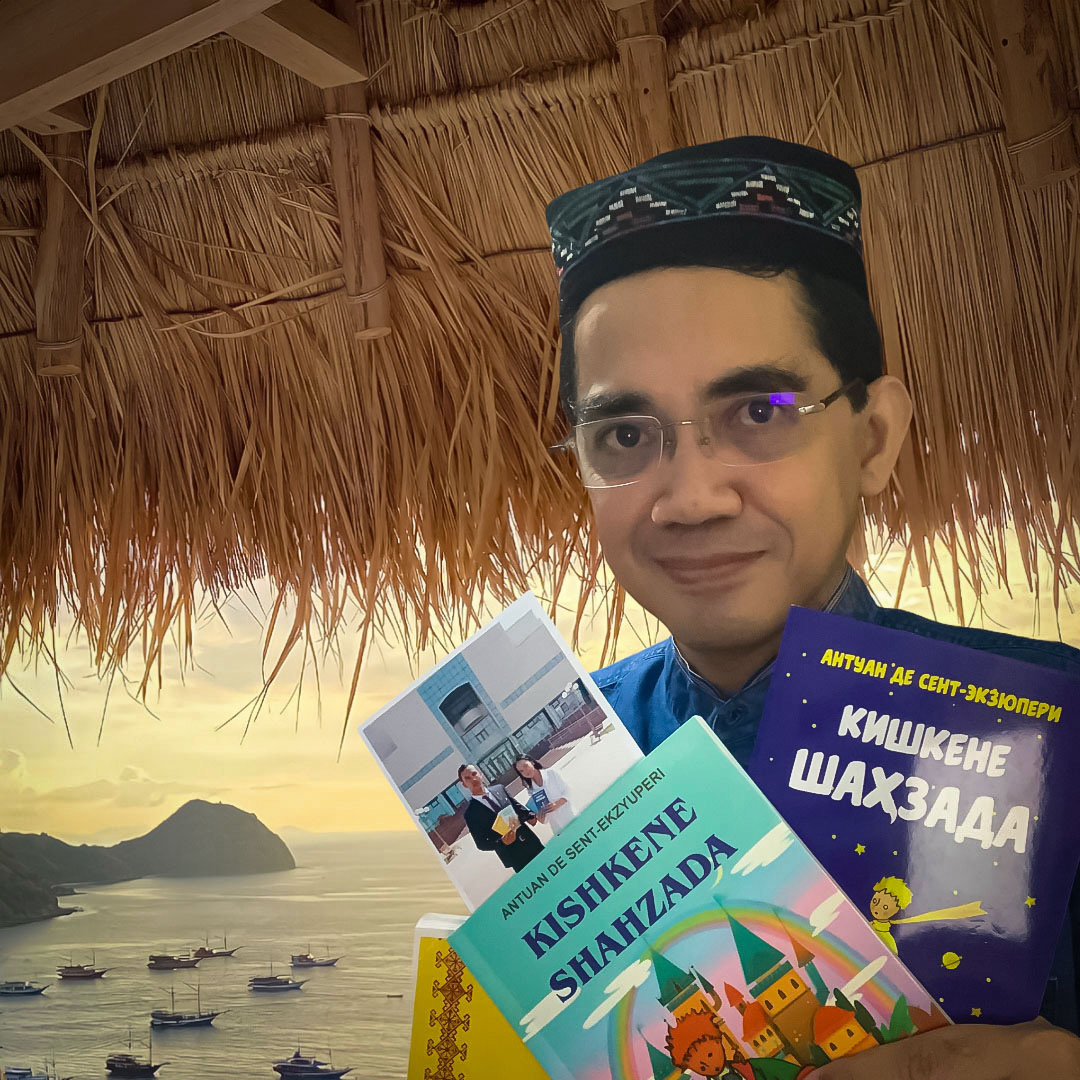
Here’s a picture of yours truly after receiving the books from Gulnara via Moldir and Jetes. They also send me a black hat — the identity from where the Karakalpaks take their name of their country: qara is black, and qalpaq is black. The picture in picture is Moldir (right) and Jetes (left).
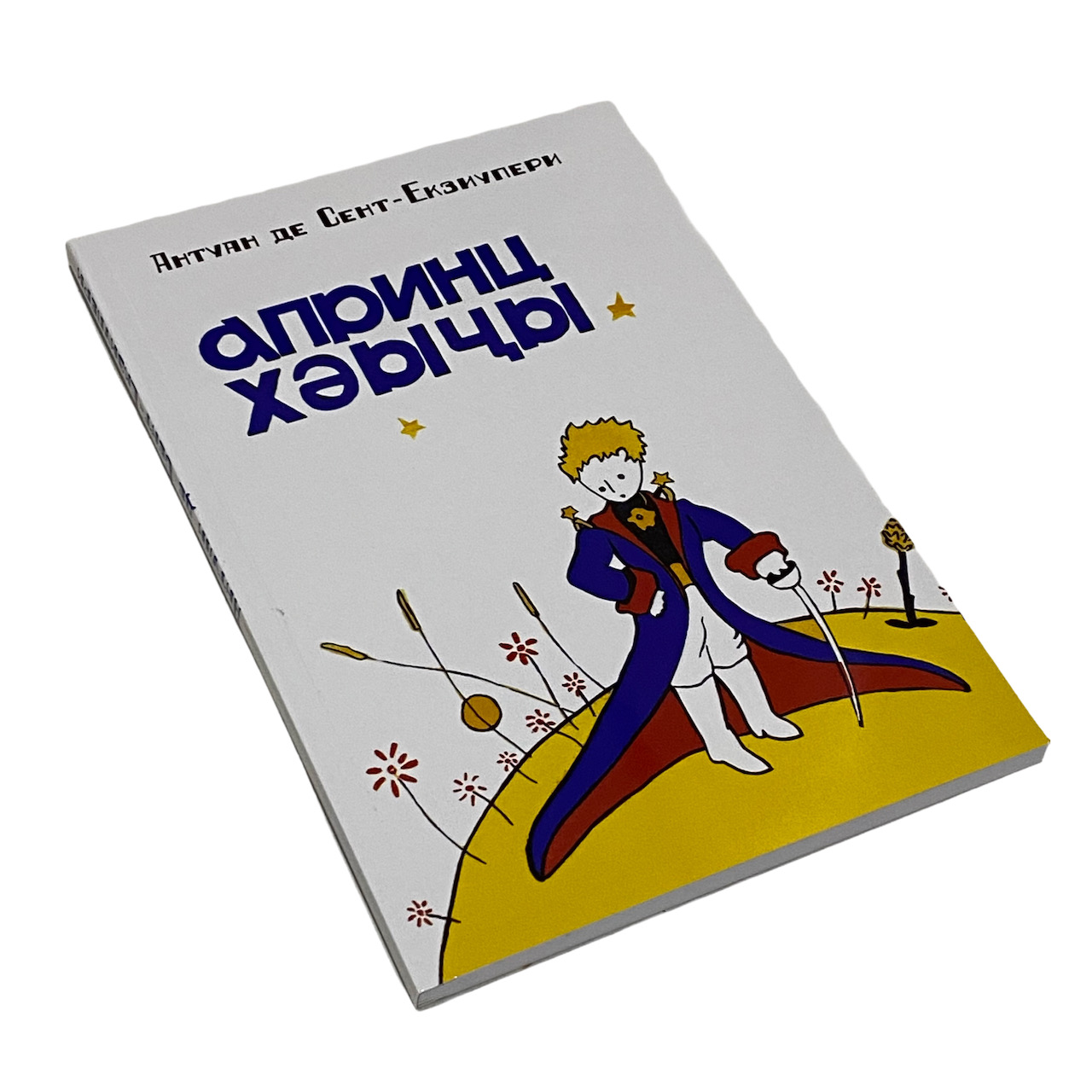
Апринц Хәыҷы / Aprints Khutshy — in Abkhaz. Abkhaz, Abkhazian, or Abxaz (Аԥсуа бызшәа / apʰswa bɨzʃʷa) is a Northwest Caucasian language most closely related to Abaza. It is spoken mostly by the Abkhaz people. It is one of the official languages of Abkhazia, where around 100,000 people speak it. Furthermore, it is spoken by thousands of members of the Abkhazian diaspora in Turkey, Georgia’s autonomous republic of Adjara, Syria, and Jordan. Abkhaz is related to Adyghe. It is especially close to Abaza, and they are sometimes considered dialects of the same language, Abazgi, of which the literary dialects of Abkhaz and Abaza are simply two ends of a dialect continuum. Grammatically, the two are very similar; however, the differences in phonology are substantial and are the main reason for many other linguists preferring to keep the two separate. Most linguists believe that Ubykh is the closest relative to the Abkhaz–Abaza dialect continuum.
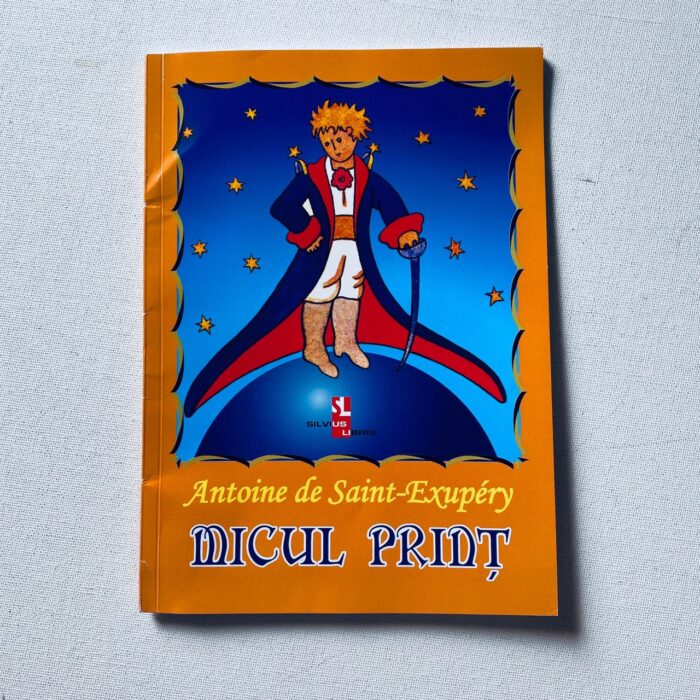
Micul Prinț — in Moldovan. Moldovan (limba moldovenească / лимба молдовеняскэ) is the Romanian language used in the Republic of Moldova. Romanian (including Moldovan) language is a part of the Eastern Romance sub-branch of Romance languages, a linguistic group that evolved from several dialects of Vulgar Latin, which was separated from the Western Romance during the 5th–8th centuries.
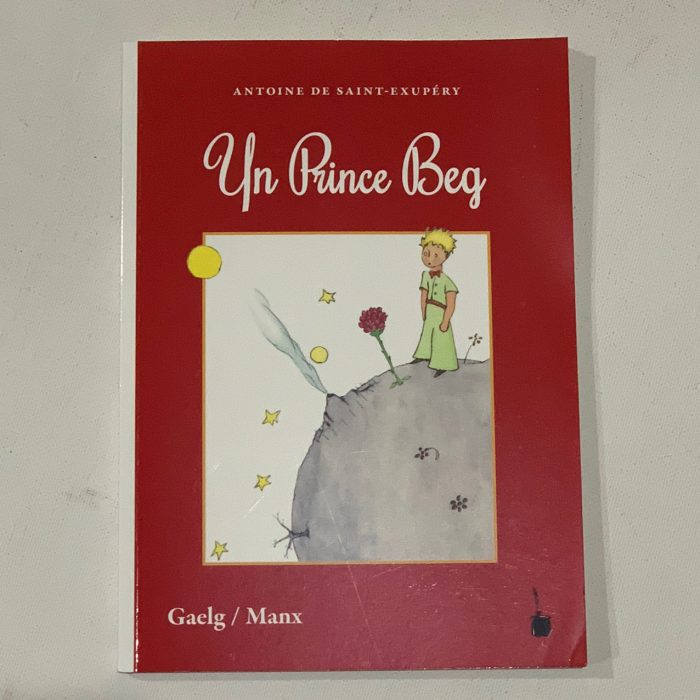
Yn Prince Beg, in Manx Celtic language used in the Isle of Man. Manx (native name Gaelg or Gailck) is a member of the Goidelic (Gaelic) language branch of the Celtic languages of the Indo-European language family. The language has never fallen completely out of use, with a minority having some knowledge of it; in addition, Manx still has a role as an important part of the island’s culture and heritage. Manx has been the subject of language revival efforts; in 2015, around 1,800 people had varying levels of second language conversational ability. Since the late 20th century, Manx has become more visible on the island, with increased signage, radio broadcasts and a Manx-medium primary school.
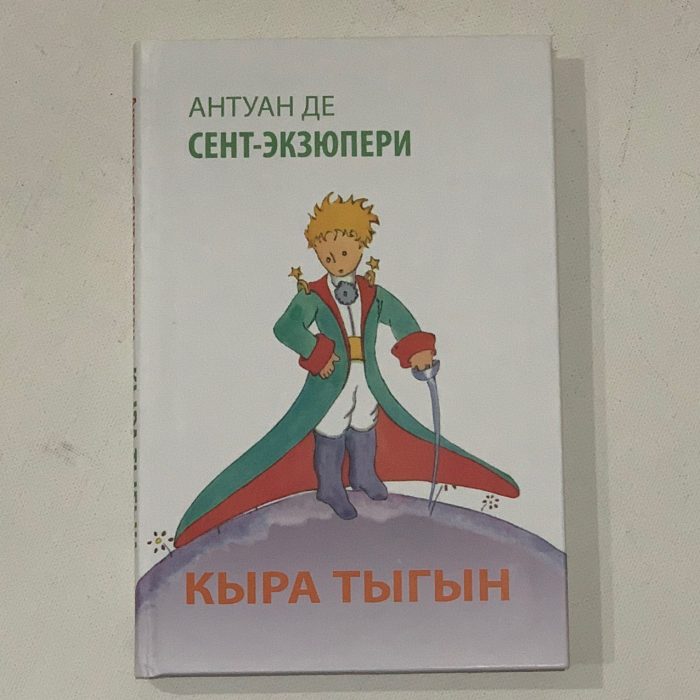
Кыра Тыгын — in The Yakut, also known as Sakha, Saqa or Saxa, a language with around 450,000 native speakers, mainly in the Sakha Republic, a federal republic in the Russian Federation. It is also used by ethnic Yakut in Khabarovsk Region.
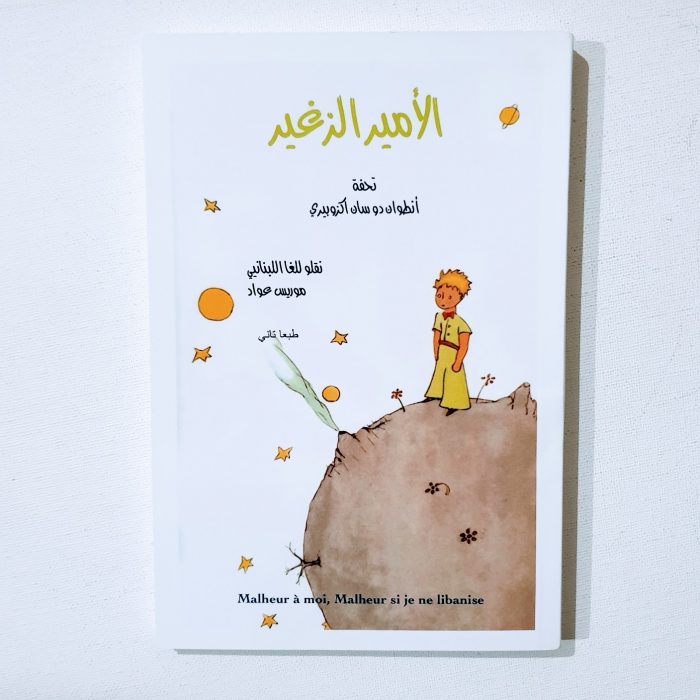
الأمير الزغير (Al Amiruz Zaghir), in Lebanese dialect of Arab language
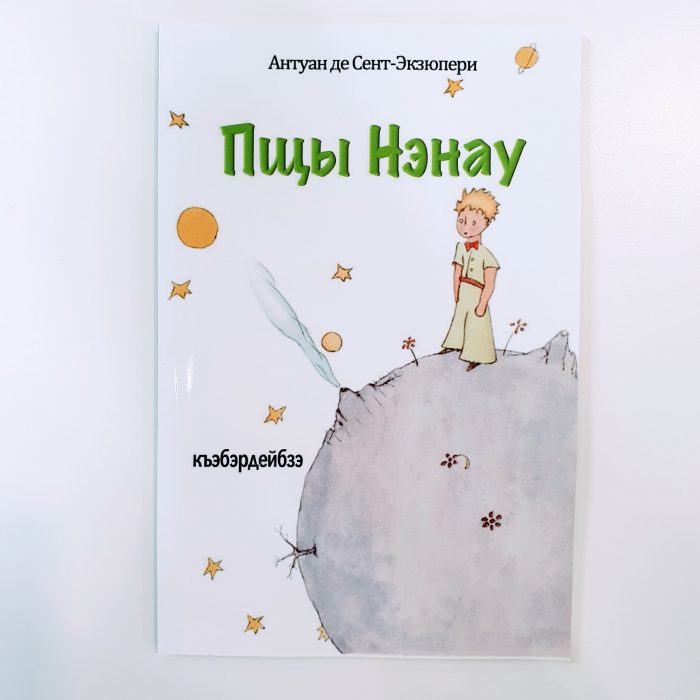
Пщы Нэнау и Псысэ (Pshchy Nenau i Psyse). This is one of the story inside a story collection “Псысэфӏ Дыдэхэр” in Kabardian / адыгэбзэ / къэбэрдей адыгэбзэ / къэбэрдейбзэ or East Circassian. This is a Caucasian language closely related to the Adyghe language. It is spoken mainly in parts of the North Caucasus republics of Kabardino-Balkaria and Karachay-Cherkessia (Eastern Circassia). The Kabardian language has two major dialects: Kabardian and Besleney. It is written in a form of Cyrillic and serves as the literary language for Circassians in both Kabardino-Balkaria (where it is usually called the “Kabardian language”) and Karachay-Cherkessia (where it is called the “Cherkess language”).
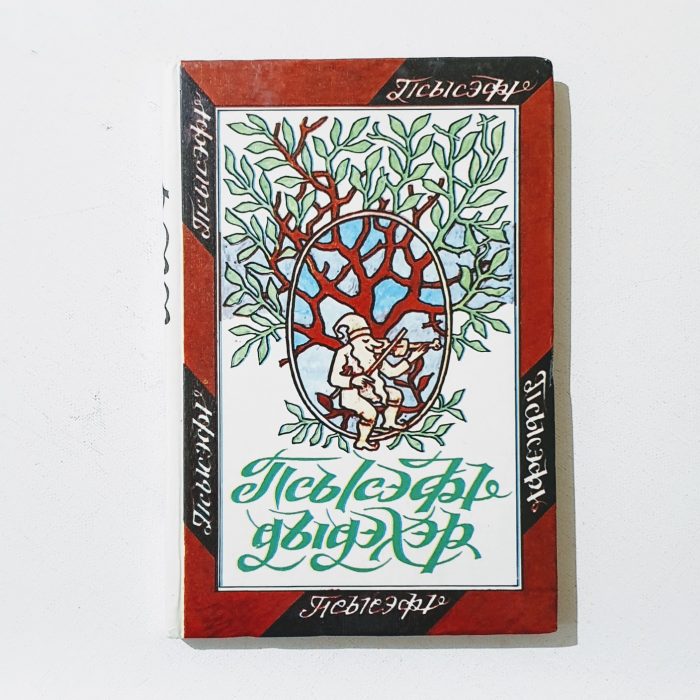
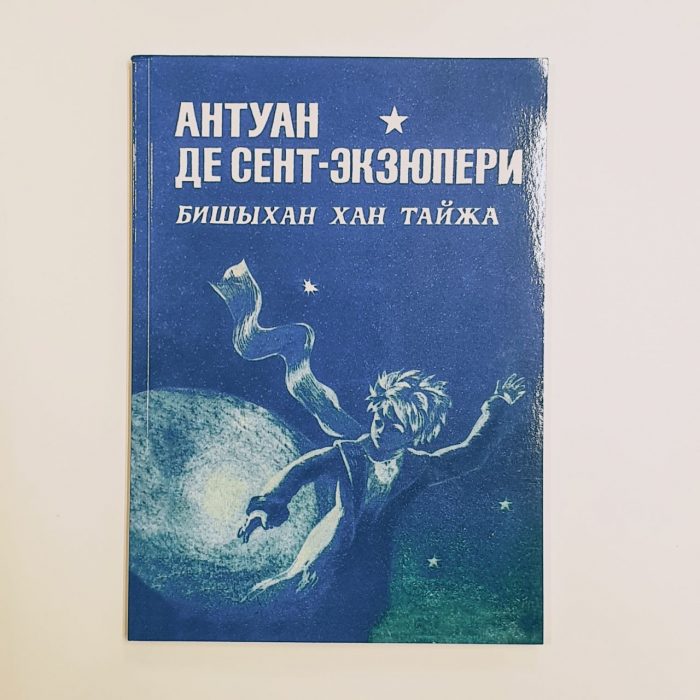
Бишыхан Хан Тайжа / Bishkhan Khan Tayzha — in Buryat / буряад хэлэн, a variety of the Mongolic languages spoken by the Buryats that is classified either as a language or major dialect group of Mongolian. The Republic of Buryatia (Респу́блика Буря́тия / Буряад Улас) is a republic within Russia Federation, located in Siberia in Asia.
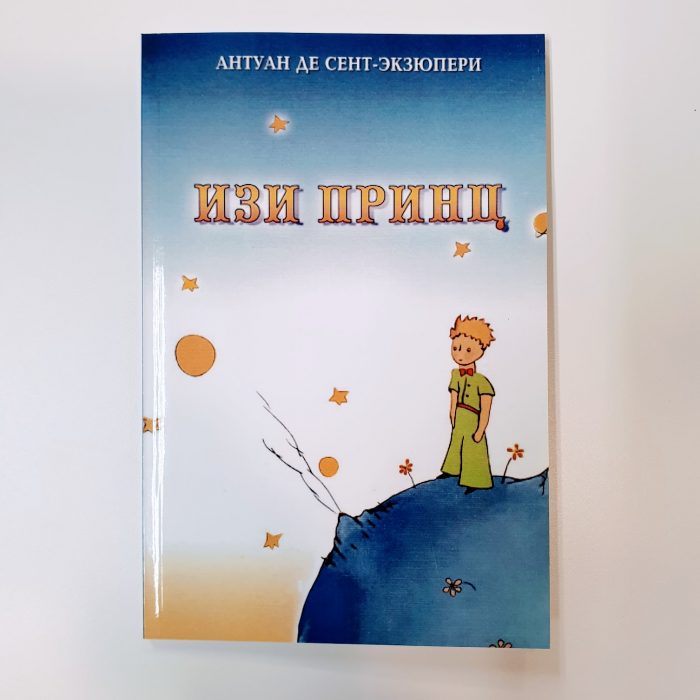
Изи Принц / Izi Prints — in Hill Mari. The Mari language / марий йылме / марийский язык is spoken by approximately 400,000 people. It belongs to the Uralic language family. It is spoken primarily in the Mari Republic (Mari: Марий Эл, Marii El) of the Russian Federation as well as in the area along the Vyatka river basin and eastwards to the Urals. Mari speakers, known as the Mari, are found also in the Tatarstan, Bashkortostan, Udmurtia, and Perm regions.
The Mari language today has two standard forms: Hill Mari and Meadow Mari. The latter is predominant and spans the continuum Meadow Mari to Eastern Mari from the Republic into the Ural dialects of Bashkortostan, Sverdlovsk Oblast and Udmurtia), whereas the former, Hill Mari, shares a stronger affiliation with the Northwestern dialect (spoken in the Nizhny Novgorod Oblast and parts of the Kirov Oblast). Both language forms use modified versions of Cyrillic script.
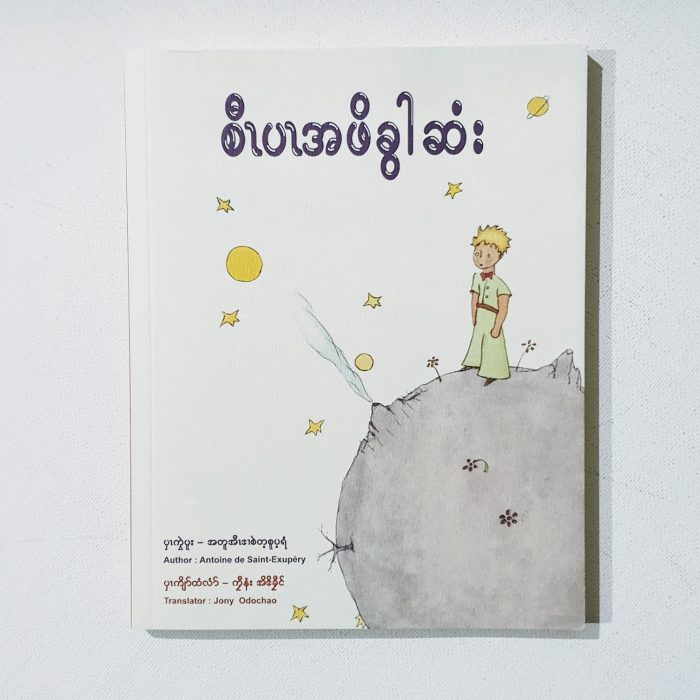
Le Petit Prince in the Karen language, a language spoken by some seven million Karen people. This language has an unclear affiliation within the Sino-Tibetan languages.
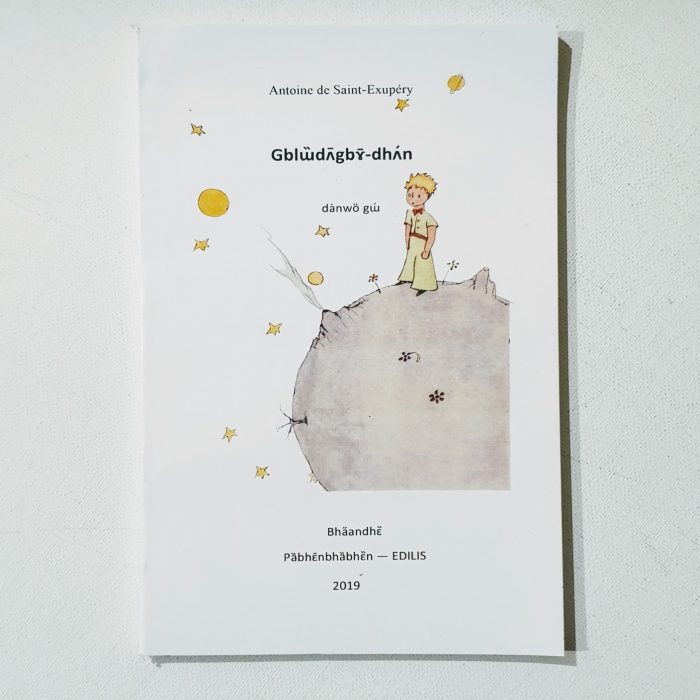
Gblẅdᴧgbɣ-dhᴧn — in Dan, a Mande language spoken primarily in Ivory Coast (~800,000 speakers) and Liberia (150,000–200,000 speakers). Dan is a tonal language, with three main tones and two glide/contour tones. Alternative names for the language include Yacouba or Yakubasa, Gio, Gyo, Gio-Dan, and Da. Dialects are Gweetaawu (Eastern Dan), Blowo (Western Dan), and Kla. Kla is evidently a distinct language.

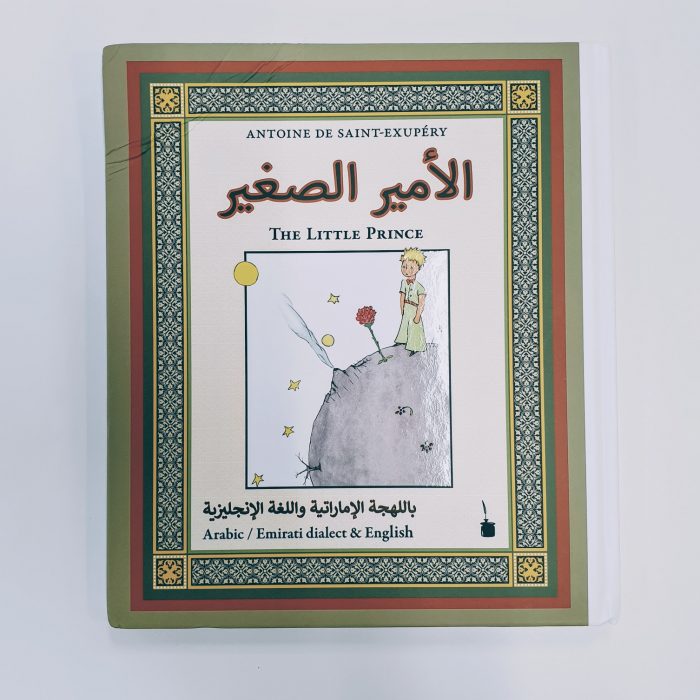
الأمير الصغير (Al Amirus Shaghir), in Emirati dialect of Arab language
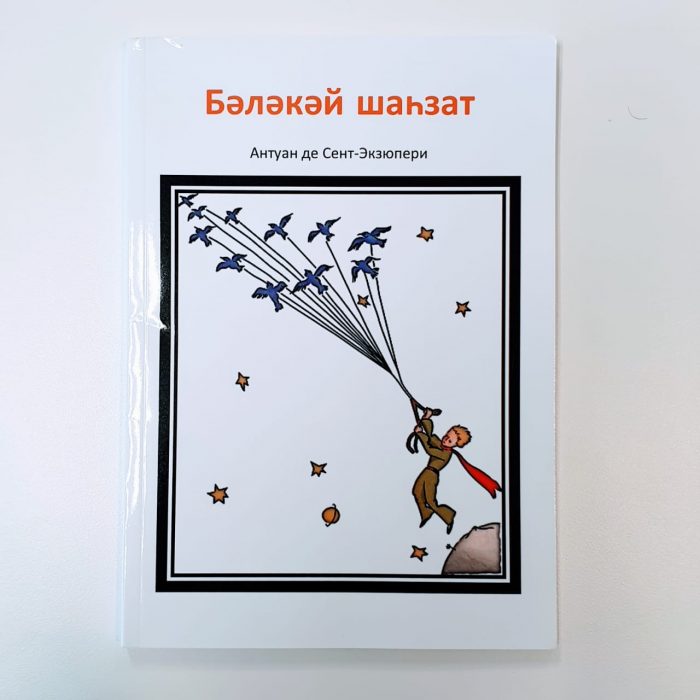
Бәләкәй шаһзат (Balakai Shahzat) — in The Bashkir language (башҡорт теле), a Turkic language belonging to the Kipchak branch. This language is co-official with Russian in the Republic of Bashkortostan, European Russia and has approximately 1.2 million speakers in Russia. Bashkir has three dialects: Southern, Eastern and Northwestern.
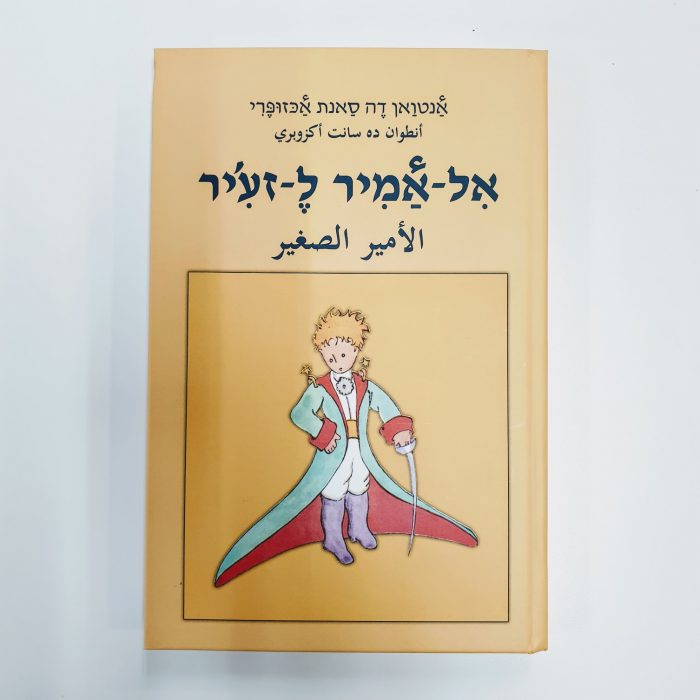
الأمير الصغير (Il Amir lezgir), in Palestinian Arabic.
Palestinian Arabic is a dialect of Arabic spoken in Palestine and by Palestinian communities around the world. It has distinct characteristics that set it apart from other Arabic dialects.
A difference between Palestinian Arabic and other Arabic dialects is its pronunciation. Palestinian Arabic has distinct sounds that are not found in other dialects, such as the ayn sound (a guttural sound produced deep in the throat) and the ghayn sound (a voiced pharyngeal fricative sound). These sounds are used in words that are pronounced differently in other Arabic dialects.
Palestinian Arabic is also influenced by the unique history and culture of Palestine. The language has been shaped by the region’s diverse cultural influences, including those of the Ottoman Empire, the British Mandate, and neighbouring countries like Jordan and Lebanon.
As the translators mentioned, an issue they faced in translating the book is that the Arabic language is diglossic: the difference bwtween its spoken and written forms is so great that they could almost be defined as separate laguages. The written language has clear & uniform rules. The spoken language remains flexible and inconsistent. In the end the translator decided to adopt a flexible approach and use a form of transcription reflecting the spelling used by native Arabic speakers when they write brief colloquial texts on computer etc.
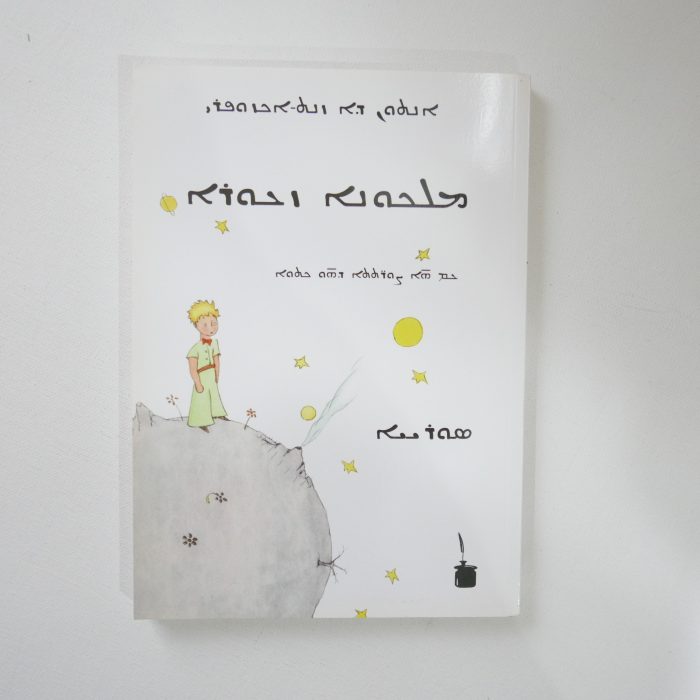
Malkuno Zcuro, in Aramaic. Aramaic is a language or group of languages belonging to the Semitic subfamily of the Afroasiatic language family. The Aramaic alphabet was widely adopted for other languages and is ancestral to the Hebrew, Syriac and Arabic alphabets. During its approximately 3,100 years of written history, Aramaic has served variously as a language of administration of empires, as a language of divine worship and religious study, and as the spoken tongue of a number of Semitic peoples from the Near East.
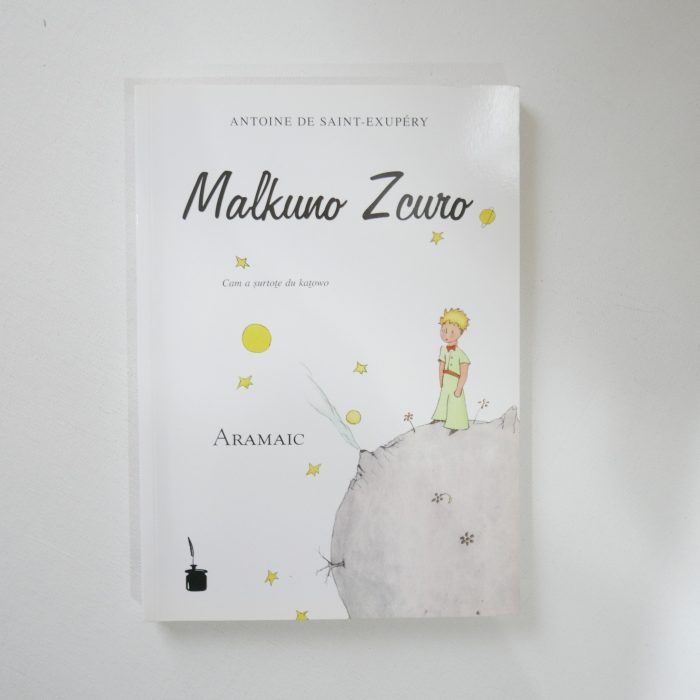
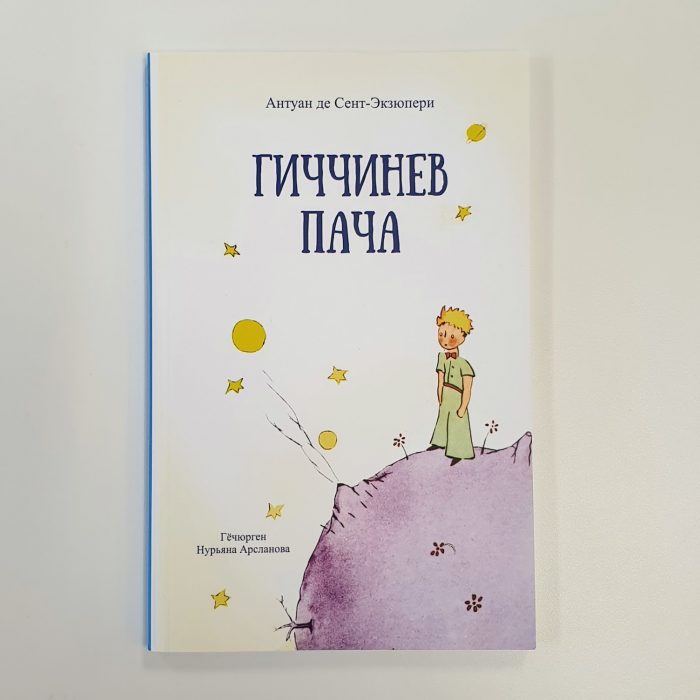
Гиччинев Пача (Giččinev Pača) — in Kumyk (ҡумуҡ тил / qumuq til), which is a Turkic language, spoken by about 400,000 speakers — the Kumyks — in the Dagestan, North Ossetia, and Chechen republics of the Russian Federation.
This translator for this edition is Nuryana Arslanova, an award-winning Kumyk poet living in Makachkala, Dagestan. She sent this book directly to Indonesia. Thank you, Nuryana.
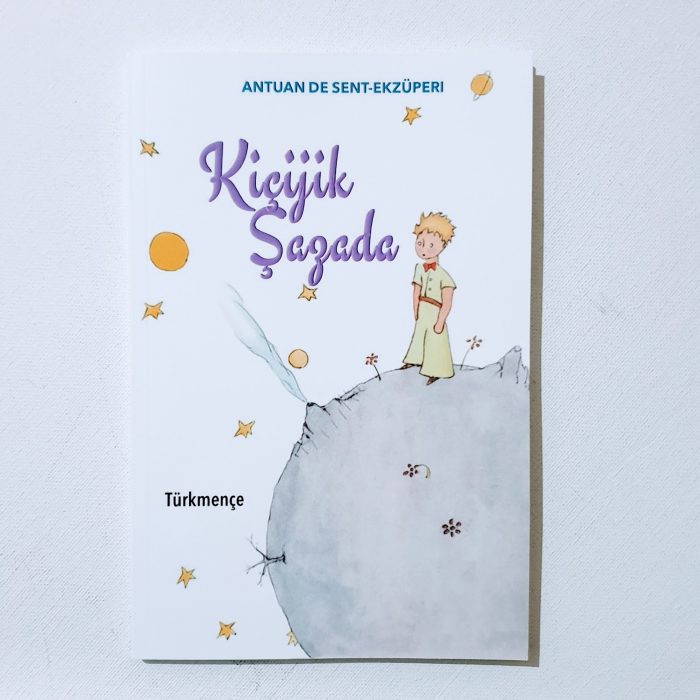
Kiçijik Şazada — in Turkmen language / Türkmençe / Türkmen Dili / Түркменче, which is the official language of Turkmenistan and the language of the Turkmen peoples of Central Asia. It is a Turkic language spoken by 3.5 million people in Turkmenistan as well as by around 719,000 people in northeastern Iran and 1.5 million people in northwestern Afghanistan.
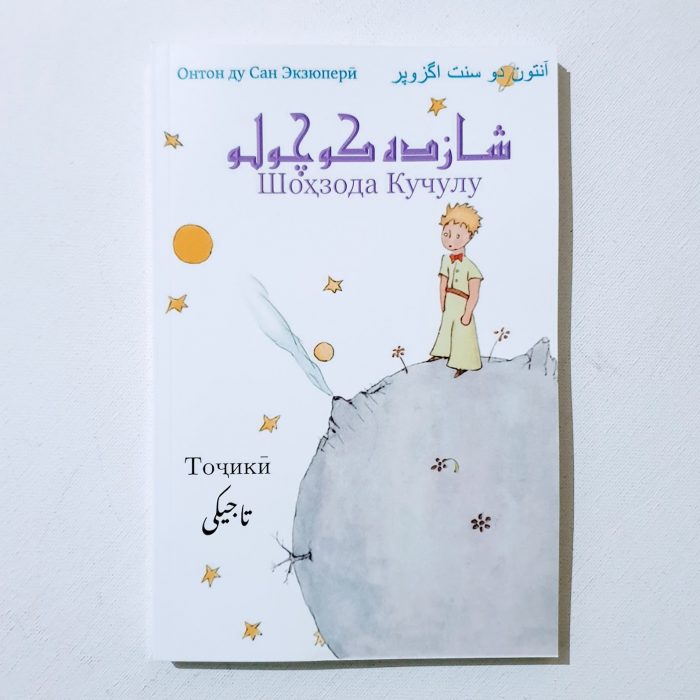
شــــازده كوچـولـو / Шоҳзода Кучулу / Syahzada Kujulu — in Tajik. Tajik / Tajiki / забо́ни тоҷикӣ́ is the official language of Tajikistan. This language has diverged from Persian as spoken in Afghanistan and Iran due to political borders, geographical isolation, the standardisation process, and the influence of Russian and neighbouring Turkic languages. The standard language is based on the northwestern dialects of Tajik, which have been somewhat influenced by the neighbouring Uzbek language as a result of geographical proximity. Tajik also retains numerous archaic elements in its vocabulary, pronunciation, and grammar that have been lost elsewhere in the Persophone world, in part due to its relative isolation in the mountains of Central Asia.
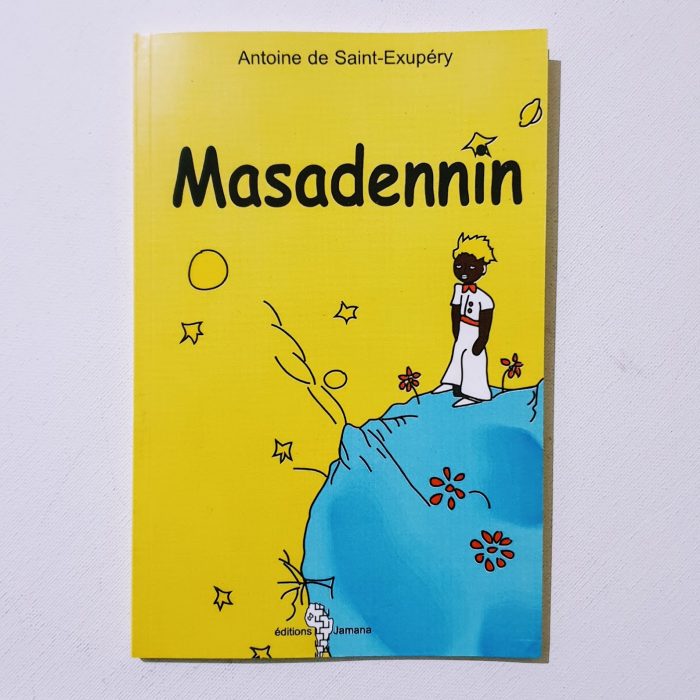
Masadennin — in the Bambara (Bamana) language, which is a lingua franca and national language of Mali, spoken by perhaps 15 million people, natively by 5 million Bambara people and about 10 million second-language users. It is estimated that about 80 percent of the population of Mali speak Bambara as a first or second language.
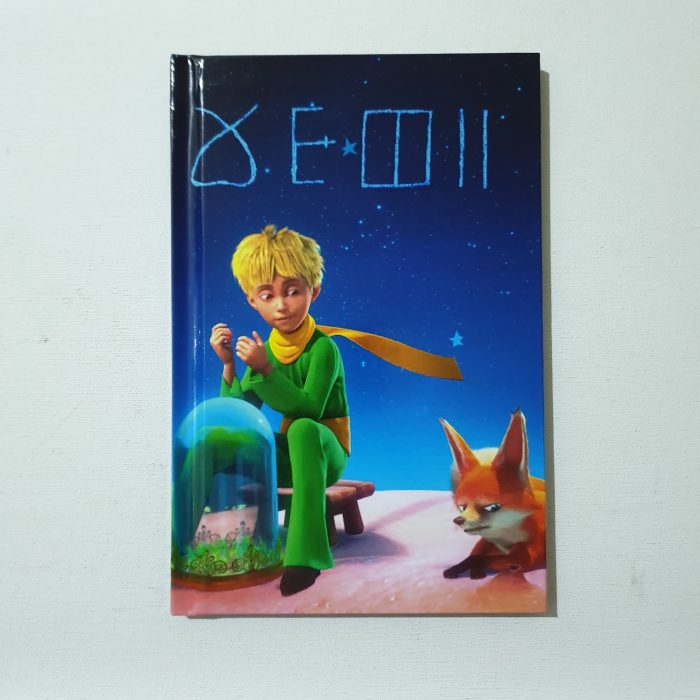
This book is a reprint of the a classical unfinished / incomplete translation of Le Petit Prince in Tamasheq, in 1958.
Tamasheq is a variety of the Tuareg languages, spoken by the Tuareg people, principally in the Timbuktu area. There are two divergent dialects: Timbuktu (Tombouctou, Tanaslamt) and Tadghaq (Kidal), both in Mali. The name Tamasheq is sometimes applied to the Tuareg languages in general.
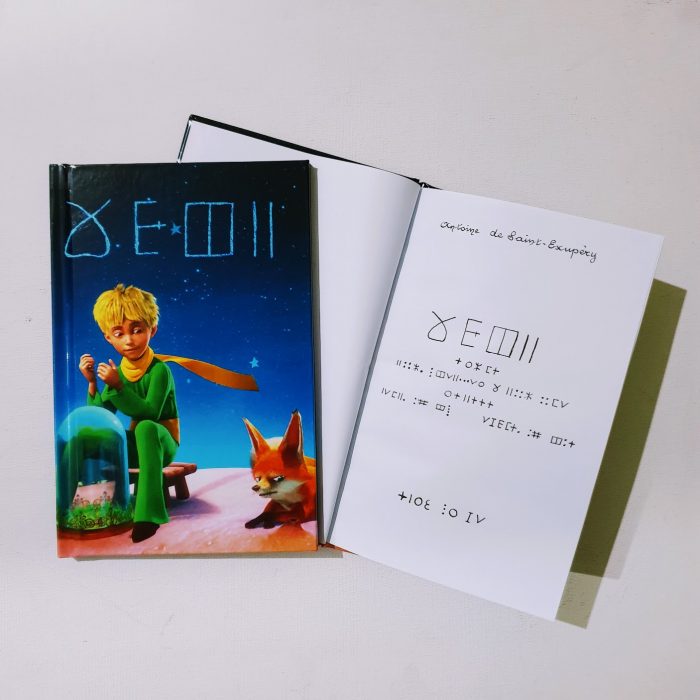
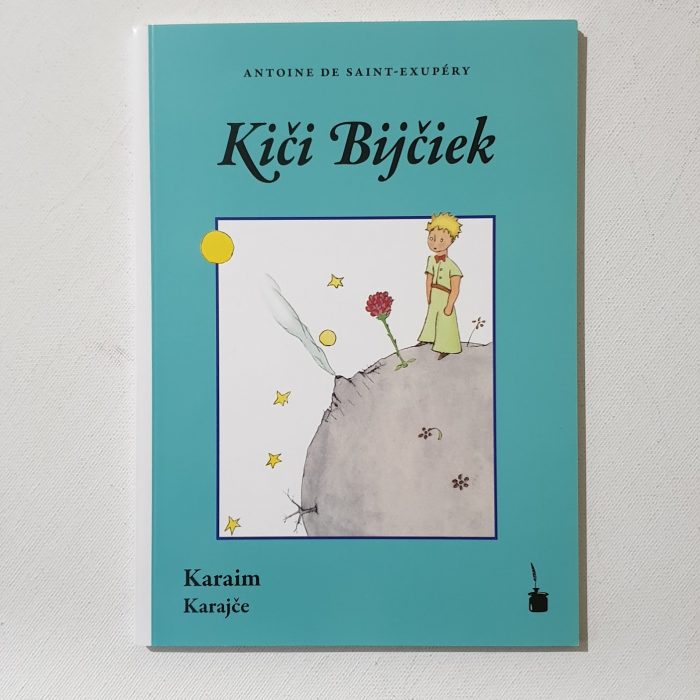
Kiči Bijčiek — in Karaim language (Crimean dialect: къарай тили, Trakai dialect: karaj tili), which is a Turkic language with Hebrew influences. It is spoken by only a few dozen Crimean Karaites (Qrimqaraylar) in Crimea, Lithuania, Poland, and Galicia in Ukraine.
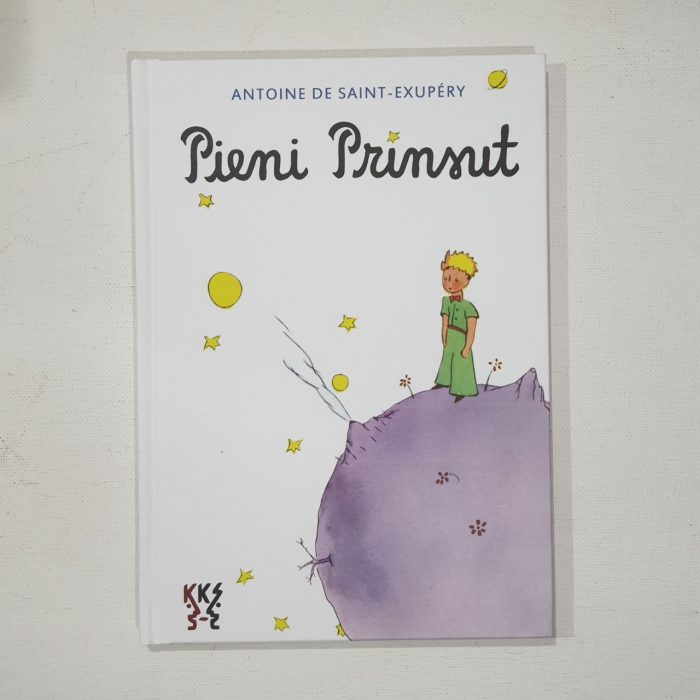
Pieni Prinsut — in Karelian / Karjala / Karjal / Kariela, which is a Finnic language spoken by Karelian people. Karelia, or the land of Karelian people, is currently divided among the northwestern Russian Federation (in two Russian federal subjects: Republic of Karelia, and Leningrad Oblast) and Finland (the regions of South Karelia and North Karelia).
Linguistically, Karelian is closely related to the Finnish dialects spoken in eastern Finland, and some Finnish linguists have even classified Karelian as a dialect of Finnish. There is no single standard Karelian language. Each writer writes in Karelian according to their own dialectal form. Three main written standards have been developed, for North Karelian, Olonets Karelian and Tver Karelian. All variants are written with the Latin-based Karelian alphabet, though the Cyrillic script has been used in the past.
This book is published by Karjalan Kielen Seura (Karelian Language Society).
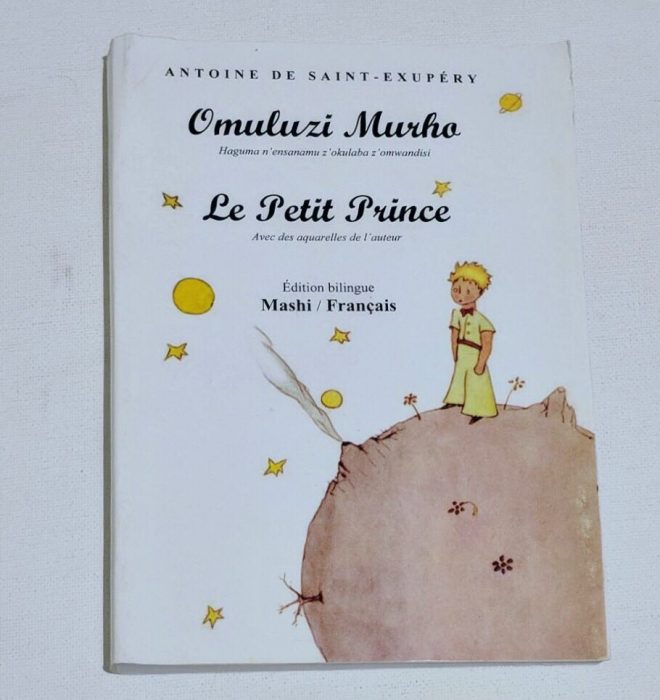
Omuluzi Murho – in Mashi (Kamaxi) or Kwandu, which is a Bantu language of Zambia, Bukavu, Congo and Angola. This book is published in Kinshasa, Democratic Republic of the Congo.
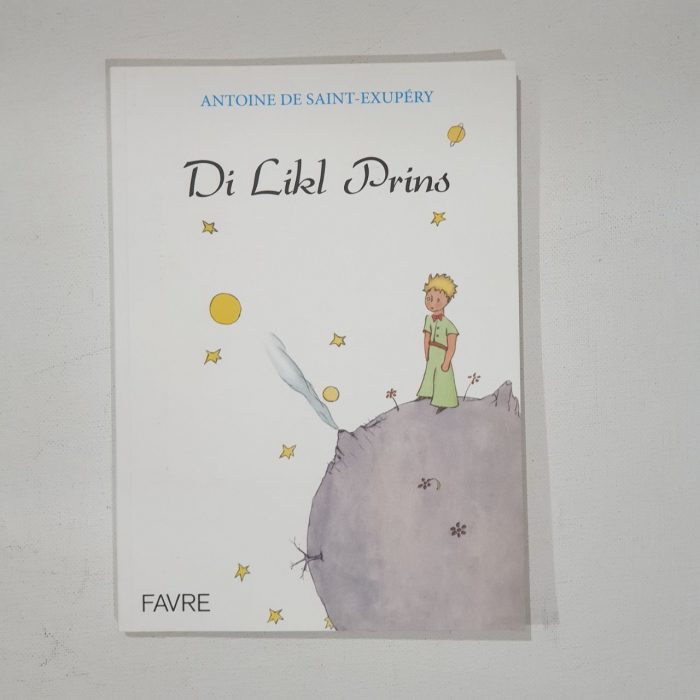
Di Likl Prins — in Jamaican Patois, known locally as Patois (Patwa or Patwah) and called Jamaican Creole by linguists. It is an English-based creole language with West African influences (a majority of loan words of Akan origin) spoken primarily in Jamaica; it is spoken by the majority of Jamaicans as a native language.
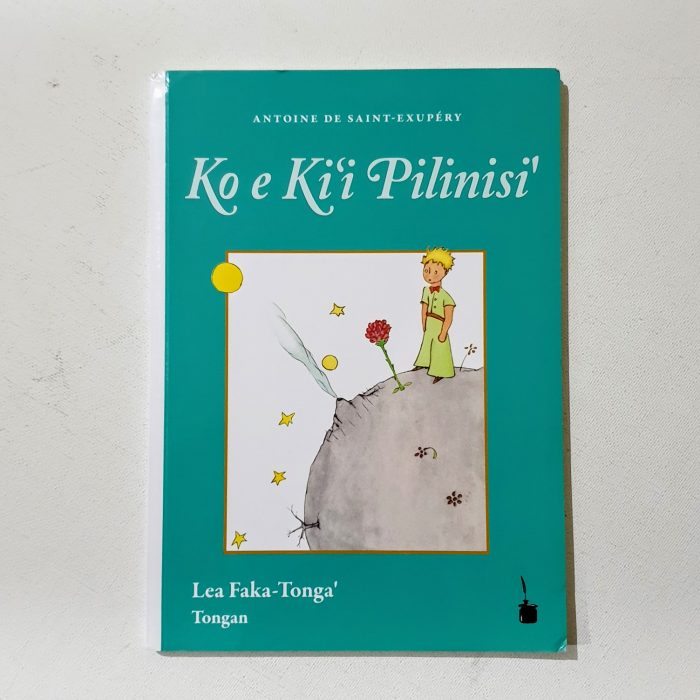
Ko e Ki’i Pilinisi’ — in Tongan language, which is an Austronesian language of the Polynesian branch spoken in Tonga. It has around 180,000 speakers.
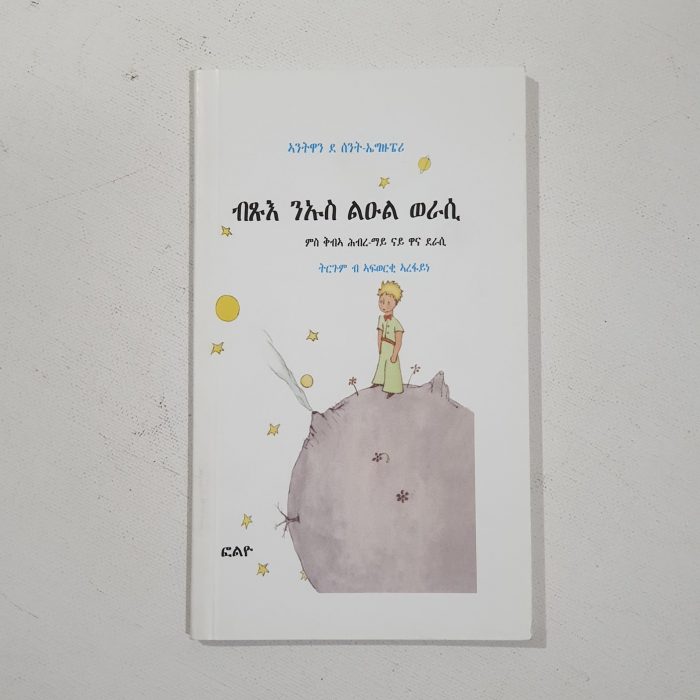
ብጹእ ንኡስ ልዑል ወራሲ / Basu’a Na’usa La’ul Warasi — in Tigrinya / Tigrigna / ትግርኛ, an Afro-Asiatic language, belonging to the family’s Semitic branch. It is spoken by ethnic Tigray-Tigrinya in the Horn of Africa. Tigrinya speakers primarily inhabit the Tigray Region in northern Ethiopia (96%), as well as the contiguous borders of southern and central Eritrea (57%). It is one of recognised language in Eritrea.
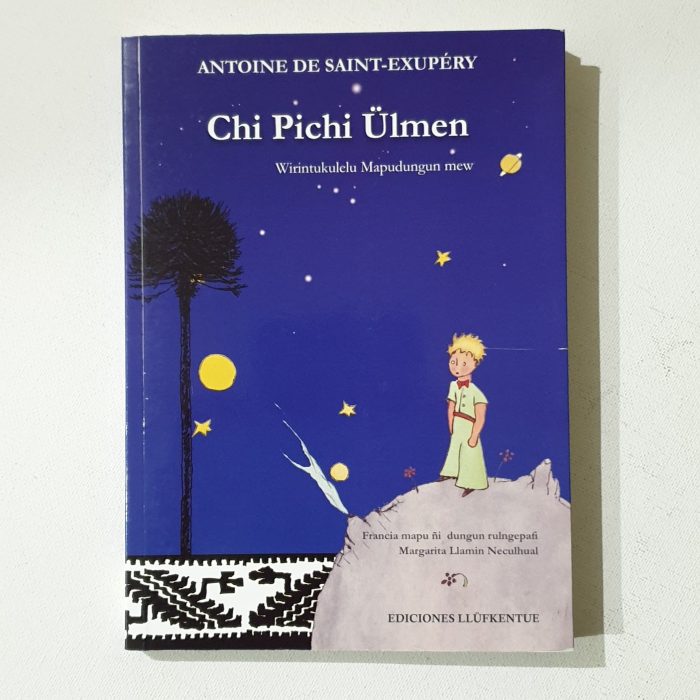
Chi Pichi Ülmen — in Mapuche or Mapudungun. It is a language isolate spoken in south-central Chile and west central Argentina by the Mapuche people. Mapudungun is not an official language of Chile or Argentina and has received virtually no government support throughout its history. It is not used as a language of instruction in either country’s educational system despite the Chilean government’s commitment to provide full access to education in Mapuche areas in southern Chile. There is an ongoing political debate over which alphabet to use as the standard alphabet of written Mapudungun. There are approximately 144,000 native speakers in Chile and another 8,400 in west central Argentina.


الأمير الصغير (Al Amirus Shaghir), in Iraqi Baghdadi dialect of Arab language
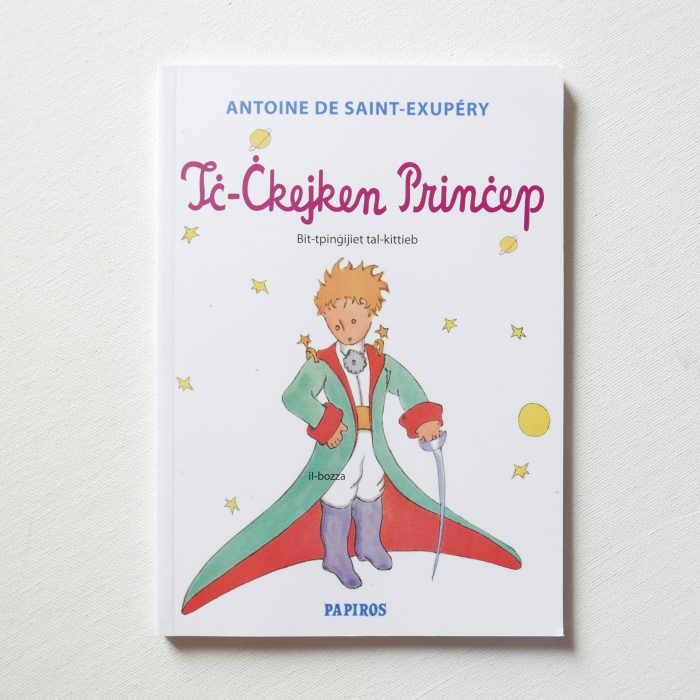
Ic-Ckejken Princep — in Maltese / Malti, which is the national language of Malta. Maltese is descended from Siculo-Arabic, the otherwise extinct variety of Arabic that developed in Sicily and was later introduced to Malta, between the end of the ninth century and the end of the twelfth century AD.
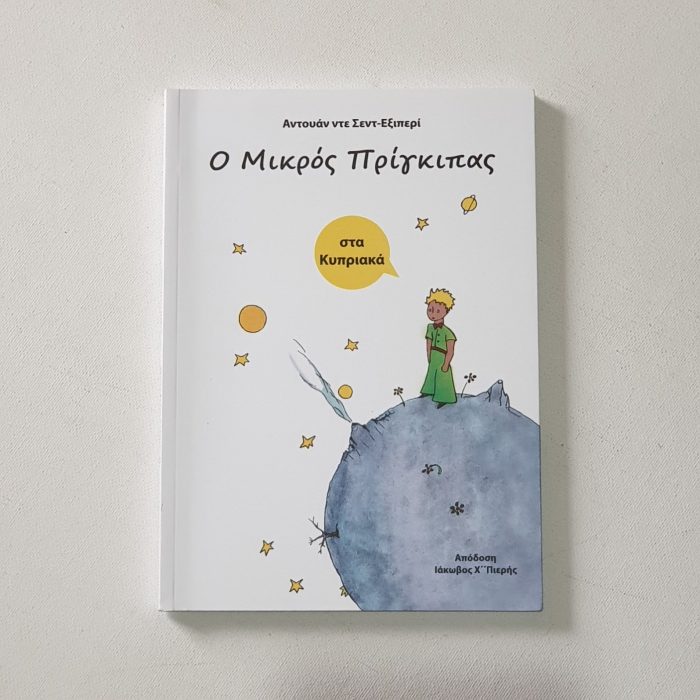
Ο Μικρός Πρίγκιπας (O Mikrós Prínkipas) — in Cypriot Greek (Κυπριακά) language spoken by the population of Cyprus.
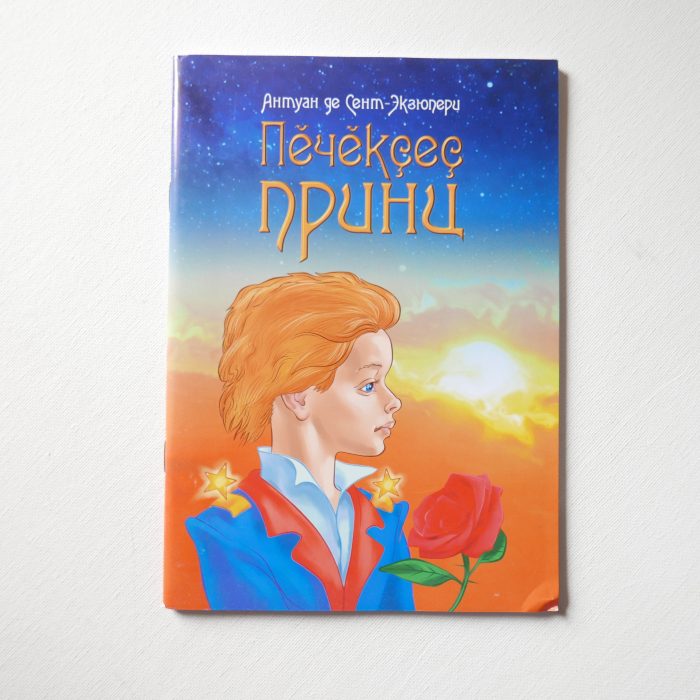
Пӗчӗӄҫеҫ Принц (Pèchèkses Prints) — in Chuvash language. The Chuvash Republic is located in the center of European Russia, in the heart of the Volga-Vyatka economic region, mostly to the west of the Volga River, in the Volga Upland.
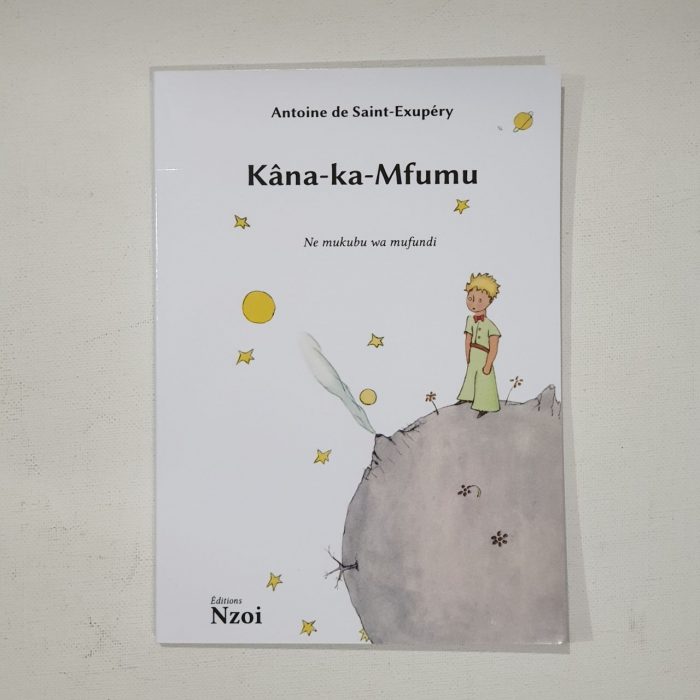
Kana-ka-Mfumu — in Luba-Kasai / Western Luba / Bena-Lulua / Ciluba / Tshiluba / Luba-Lulua / Luva, a Bantu language of Central Africa and a national language of the Democratic Republic of the Congo, alongside Lingala, Swahili, and Kikongo.
Besides the national languages, the most notable other languages of the Democratic Republic of the Congo are Mashie, Mongo, Lunda, Kilega, Tetela, Chokwe, Budza, Ngbandi, Lendu, Mangbetu, Nande, Ngbaka, Zande, Lugbara and Komo.
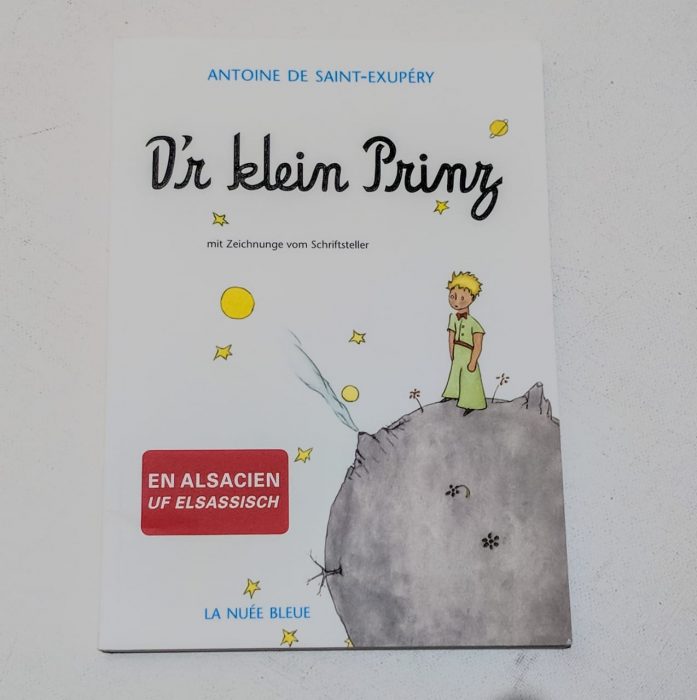
D’r Klein Prinz, in Alsatian. Alsatian is a set of Allemannic dialects closely related to Swabian and Swiss German. Alsace is a cultural and historical region in eastern France, located in the administrative region of Grand Est. Alsace is located on France’s eastern border and on the west bank of the upper Rhine adjacent to Germany and Switzerland
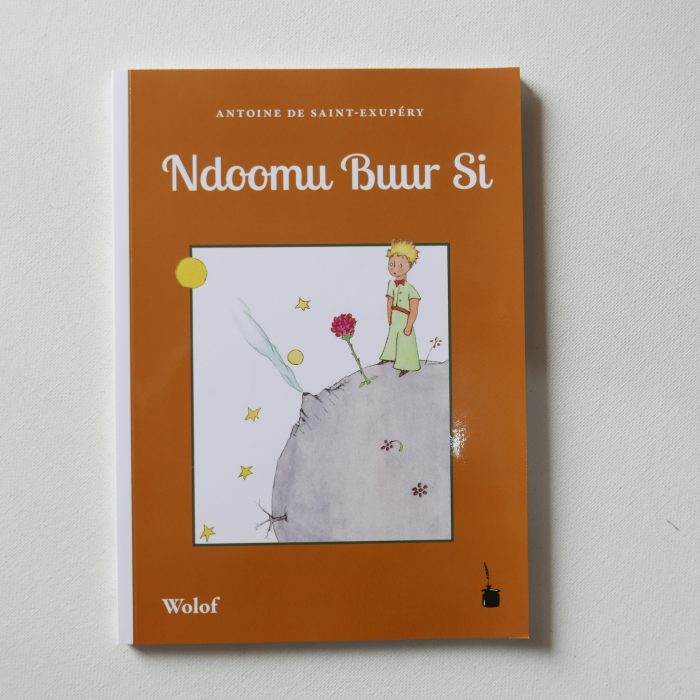
Ndoomu Buur Si — in Wolof language, which is spoken in Senegal, the Gambia and Mauritania. This language belongs to the Senegambian branch of the Niger–Congo language family.

This is the LPP edition in Cantonese, a variety of Chinese spoken within Guangdong (Kwangtung / Canton) and its vicinity in southeastern China. It is the traditional prestige variety of Yue Chinese, one of the major subdivisions of Chinese.
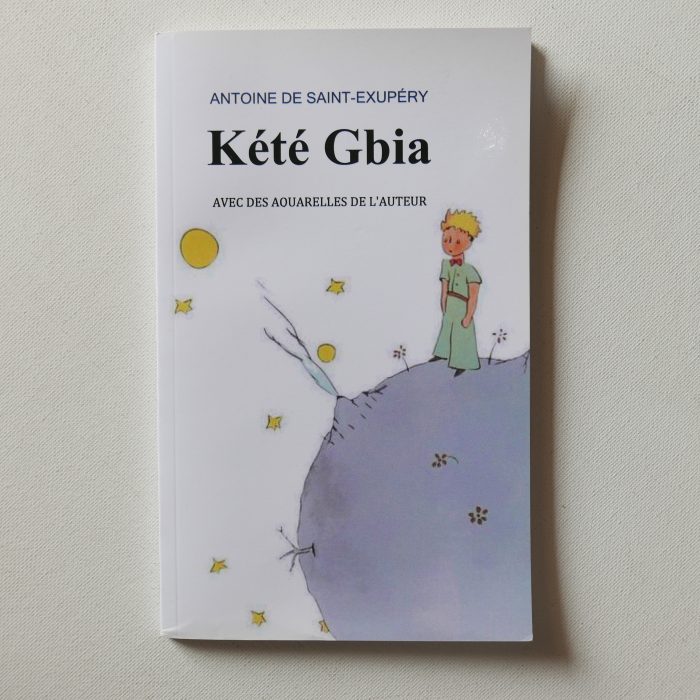
Kété Gbia — in Sango, a language in the Central African Republic and the primary language spoken in the country. It is an official language of the Central African Republic, making the Central African Republic one of the few African countries with an indigenous language as an official language. It is used as a lingua franca across the country and had 450,000 native speakers in 1988. It also has 1.6 million second language speakers.
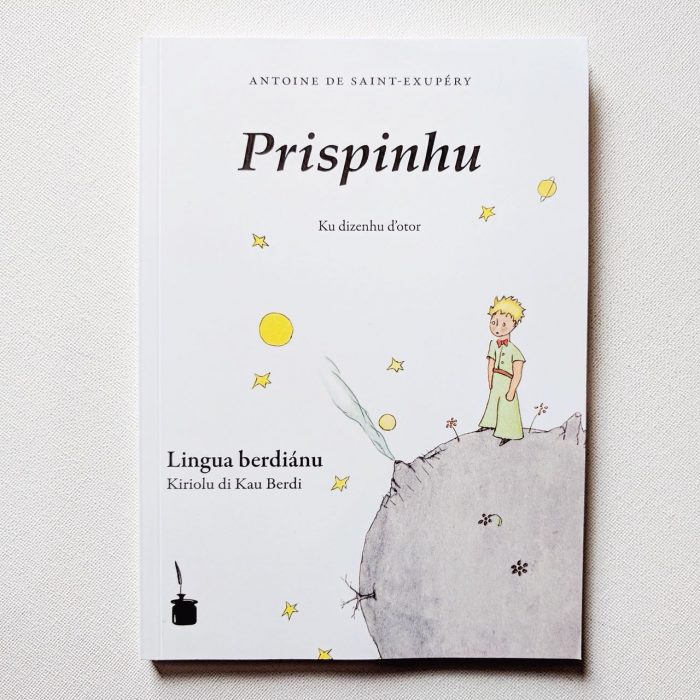
Prispinhu – in Berdiánu, a Portugues creole spoken in Kau Berdi (Cabo Verde / Cape Verde)
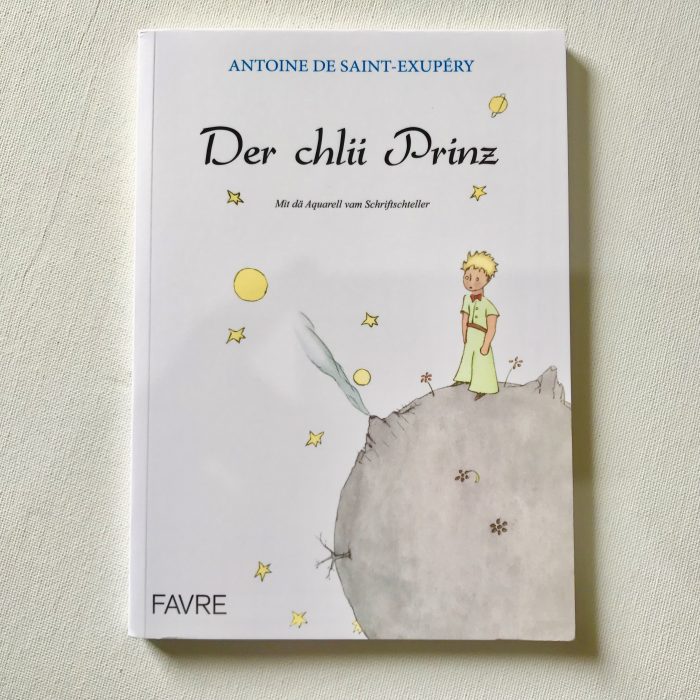
Der Chlii Prinz, an edition in Walser German language, which is spoken in Liechtenstein and some parts of neighbouring countries: Switzerland (Valais, Ticino, Grisons), Italy (Piedmont, Aosta Valley), Austria (Vorarlberg).
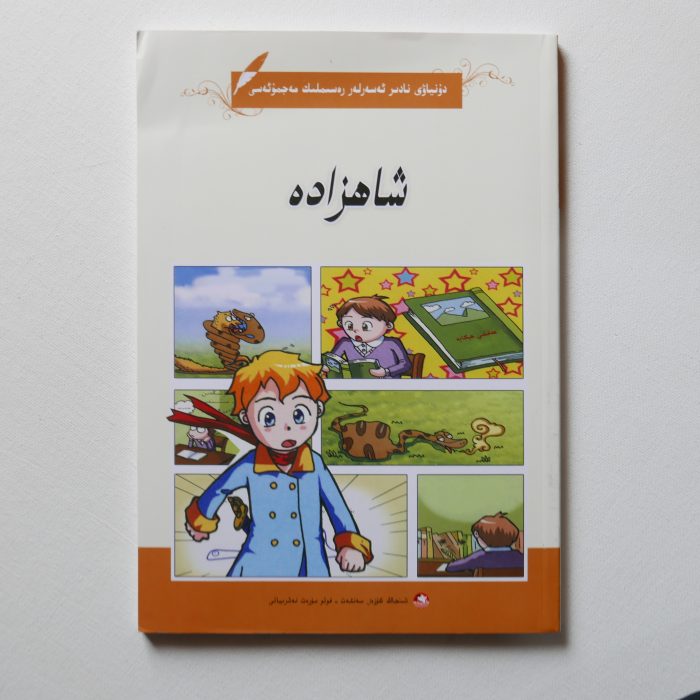
شاهزاده (Syahzadah) – in Uyghur language (ئۇيغۇر تىلى). Uyghur is Turkic language with 10 to 25 million speakers, spoken primarily as the official language of the Xinjiang Uyghur Autonomous Region of Western China. Significant communities of Uyghur-speakers are also located in Kazakhstan and Uzbekistan.
Switzerland comprises four main linguistic and cultural regions: German, French, Italian and Romansh. Due to its linguistic diversity, Switzerland is known by a variety of native names: Schweiz (German); Suisse (French); Svizzera (Italian); and Svizra (Romansh). On coins and stamps, Helvetia (Latin) is used instead of the four living languages.
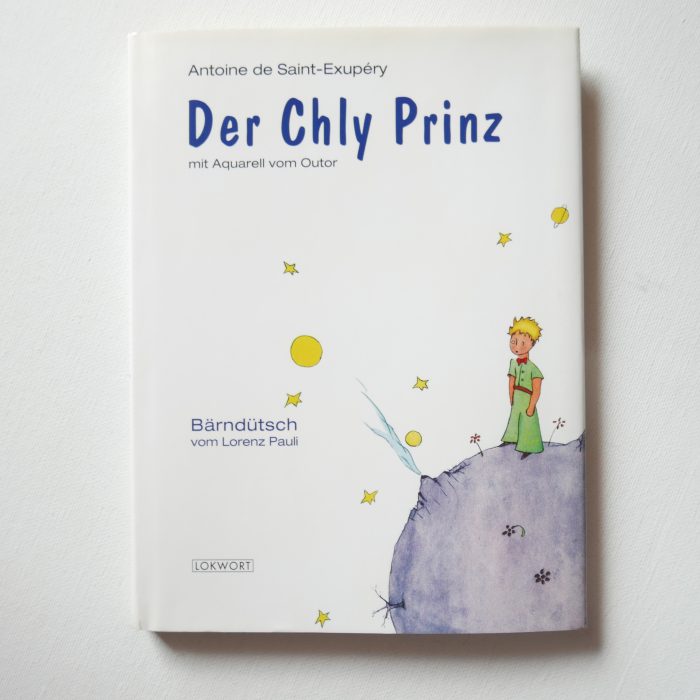
Bern: Der Chly Prinz, in Bernese German, an Alemannic Swiss German dialect.
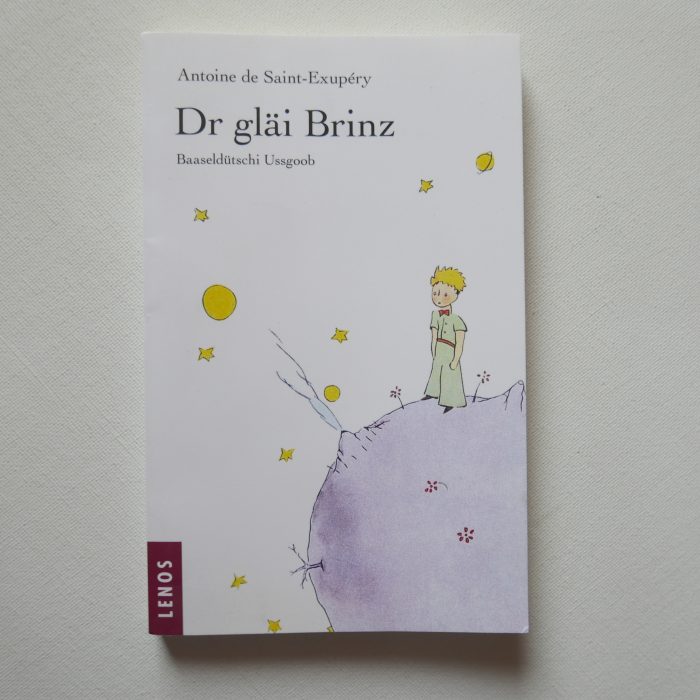
Basel: Dr Gläi Brinz, in a local Basel dialect of Alemannic Swiss German.

Valais: Der Chlii Prinz, in Walser German language, spoken in a part of Switzerland (Valais, Ticino, Grisons), Italy (Piedmont, Aosta Valley), Liechtenstein, and Austria (Vorarlberg).
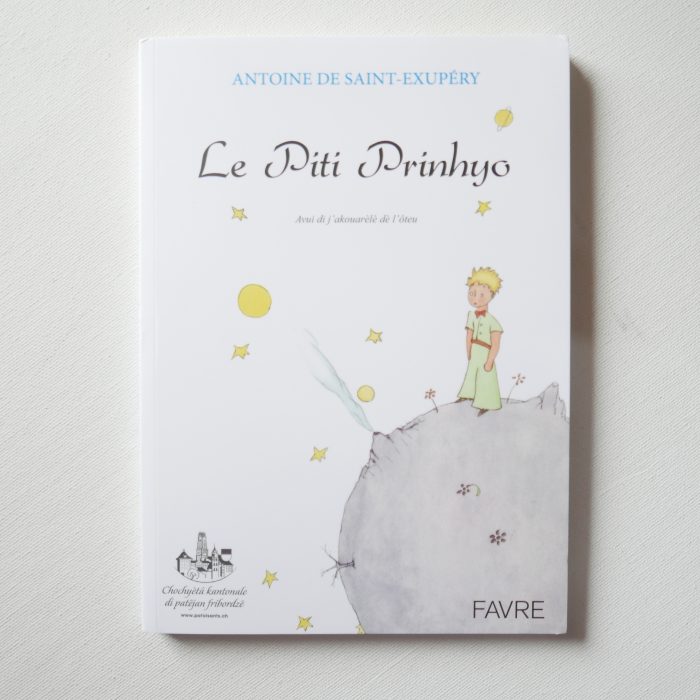
Fribourg: Le Piti Prinhyo, in Franco-Provençal (Arpitan) Canton of Fribourg dialect.
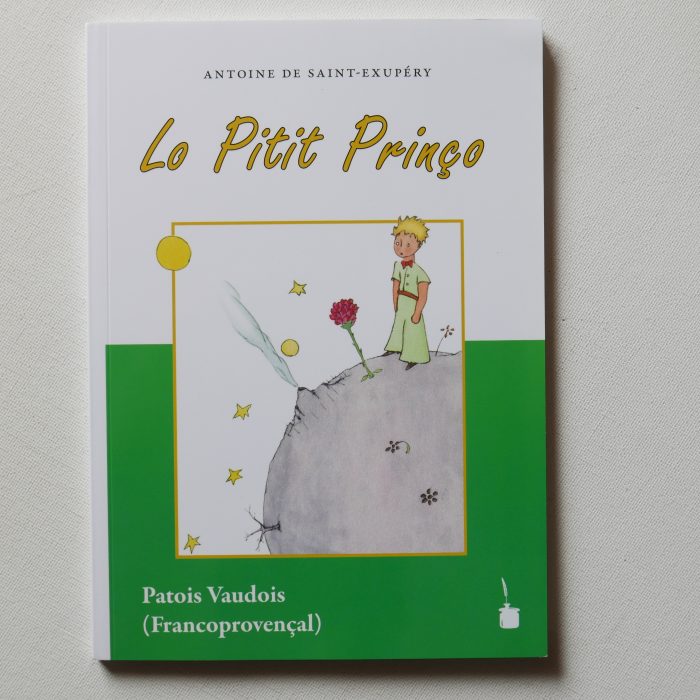
Lausanne: Lo Pitit Prinço, in Franco-Provençal (Arpitan) Canton of Vaud dialect.
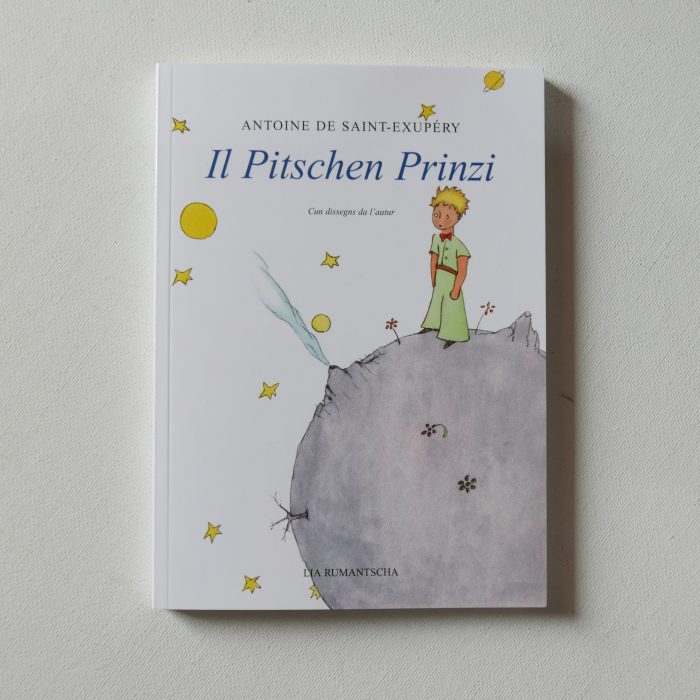
Davos: Il Pitschen Prinzi, in Romansh, a dialect of Rhaeto-Romance language spoken in southeastern Swiss canton of Grisons.
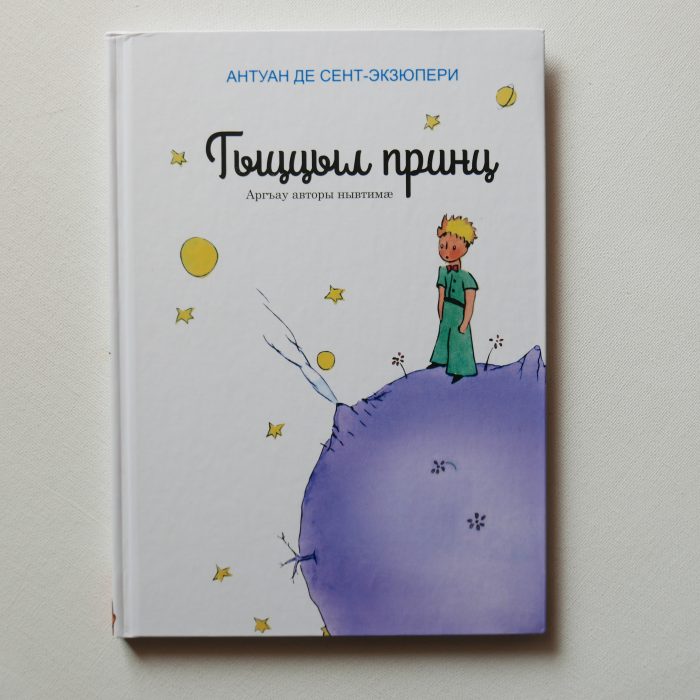
Тыццыл Принц (Tyccyl Prints), in Iron language, spoken by the majority of Ossetians, notably in the East, South and Central parts of North Ossetia; while in the West the Digor dialect is more prevalent. The Iron dialect has been the basis of the Ossetian written language since 1939.
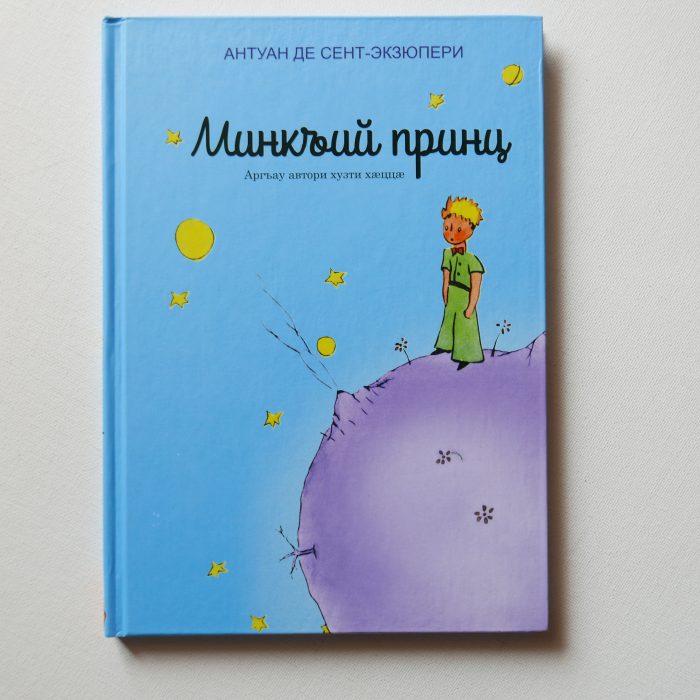
Минкъий Принц (Mink’y Prints), in Digor language. Digor is a dialect of the Ossetian language. The differences between the two are large enough to call them two languages. Digorian speakers live in the west of North Ossetia (Digora, Chikola and other places); and in the capital citi, Vladikavkaz.
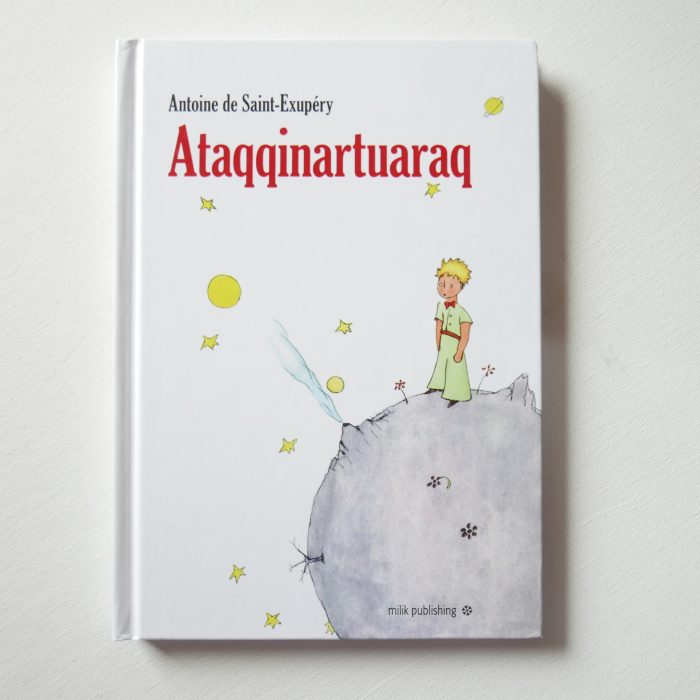
Ataqqinartuaraq — in Greenlandic, which is Eskimo–Aleut language spoken by about 57,000 Greenlandic Inuit in Greenland.
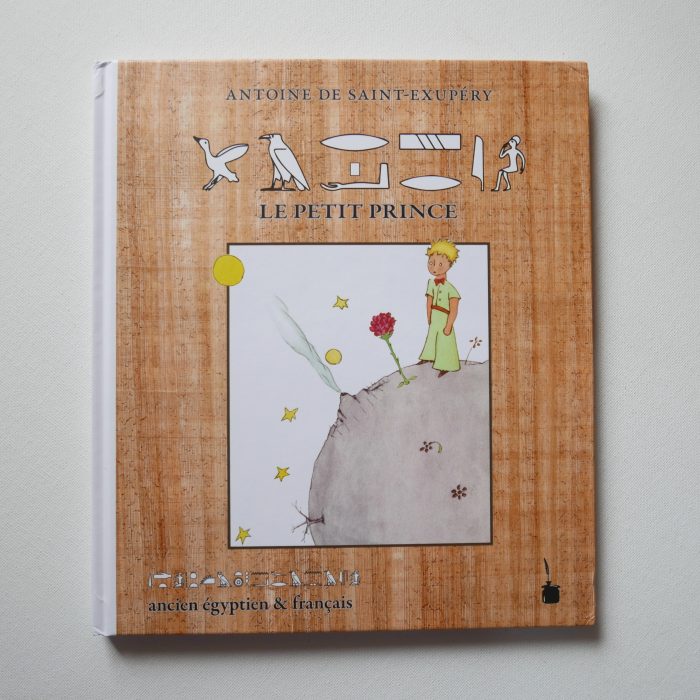
Special edition of Le Petit Prince in Ancient Egyptian, written in Hieroglyphic letters. The original french text is also included.
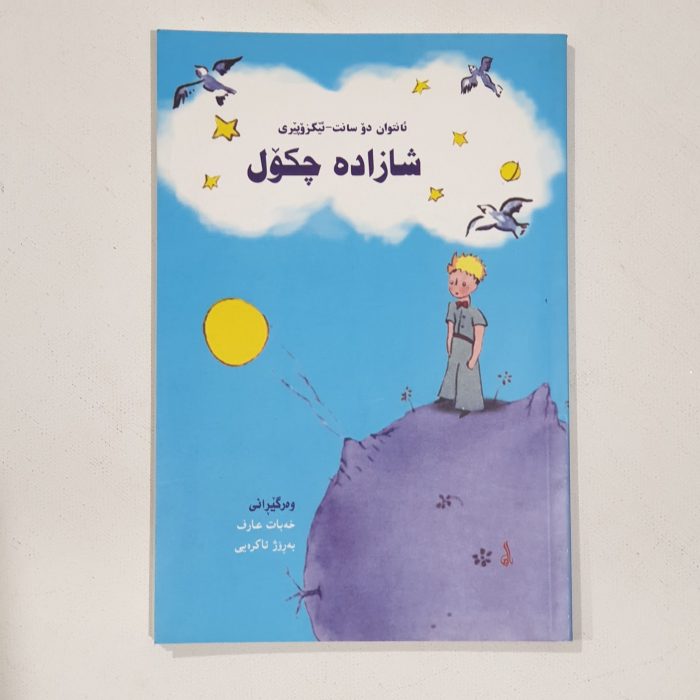
Shazadah Cukul – in Kurdish Sorani, spoken in Central Kurdistan (part of Iraq and Azerbaijan).
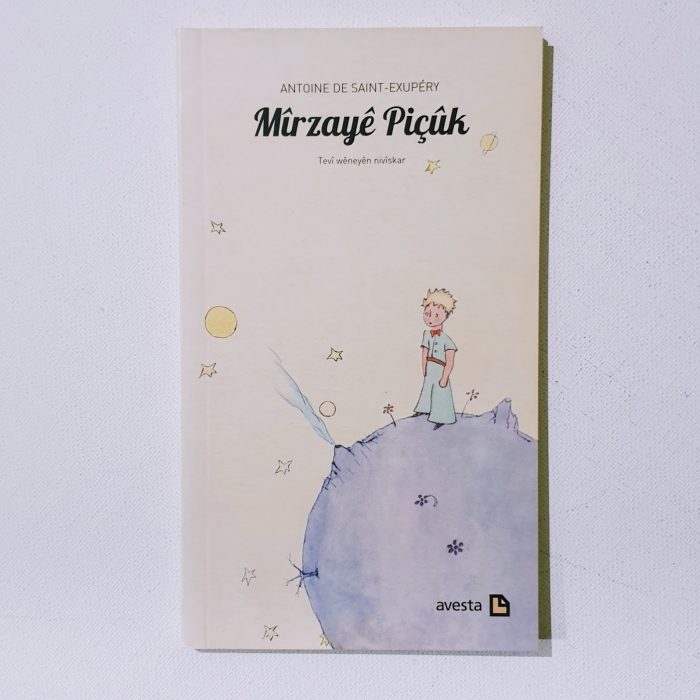
Mîrzayê Piçûk – in Kurdish Kurmanji, spoken in Northern Kurdistan (part of Turkey).
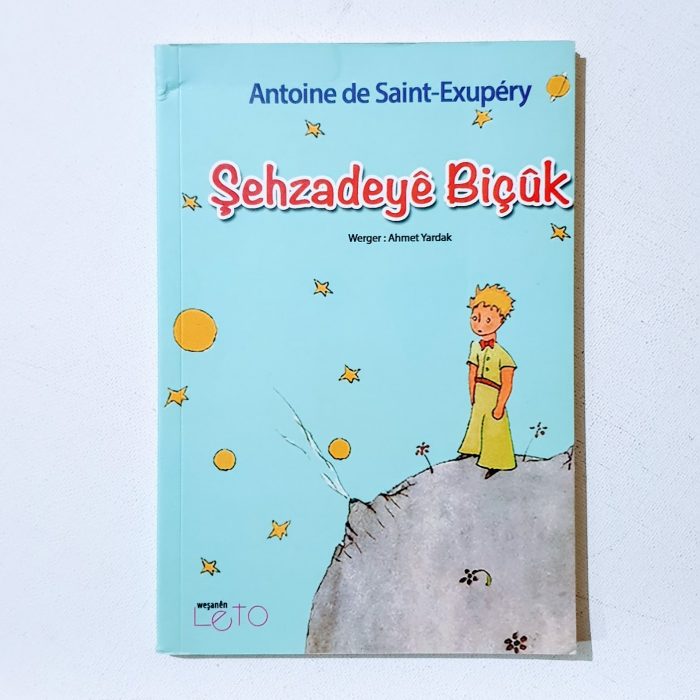
Sehzadeyê Biçûk – in Kurdish Kurmanji, spoken in Northern Kurdistan (part of Turkey).
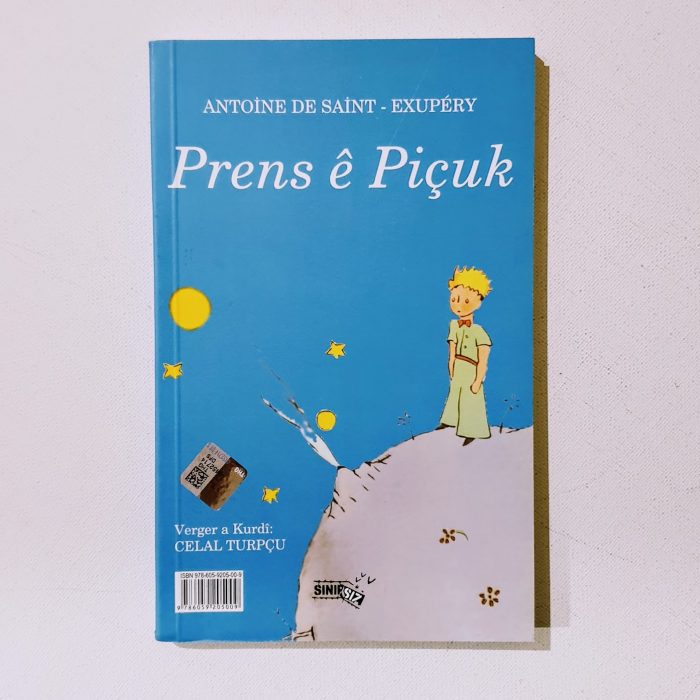
Prens ê Piçûk – in Kurdish Kurmanji, spoken in Northern Kurdistan (part of Turkey).
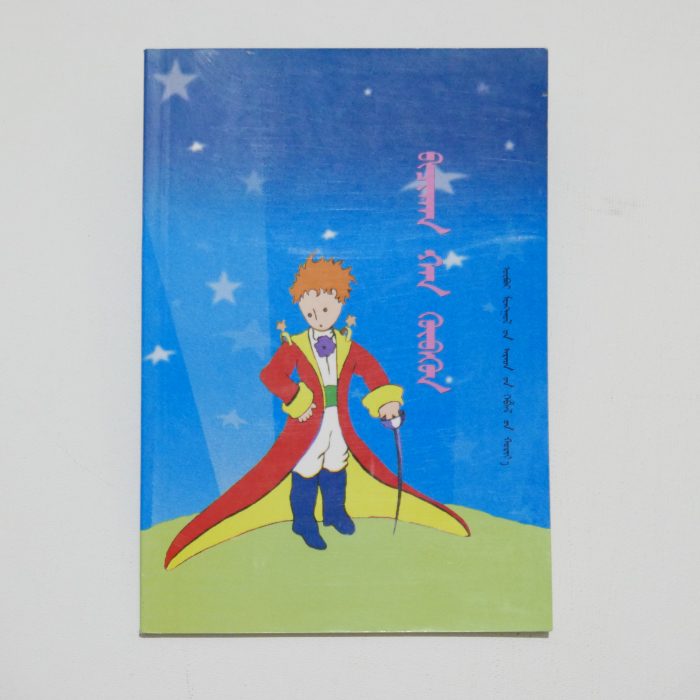
 Byatshan Han Howuun — in Mongolian script (Öbür Monggol), which is the first writing system created specifically for the Mongolian language, derived from the Old Uyghur alphabet.
Byatshan Han Howuun — in Mongolian script (Öbür Monggol), which is the first writing system created specifically for the Mongolian language, derived from the Old Uyghur alphabet.
Nei Mongol or Inner Mongolia is an autonomous region of China, located in the north of the country, containing most of China’s border with Mongolia.
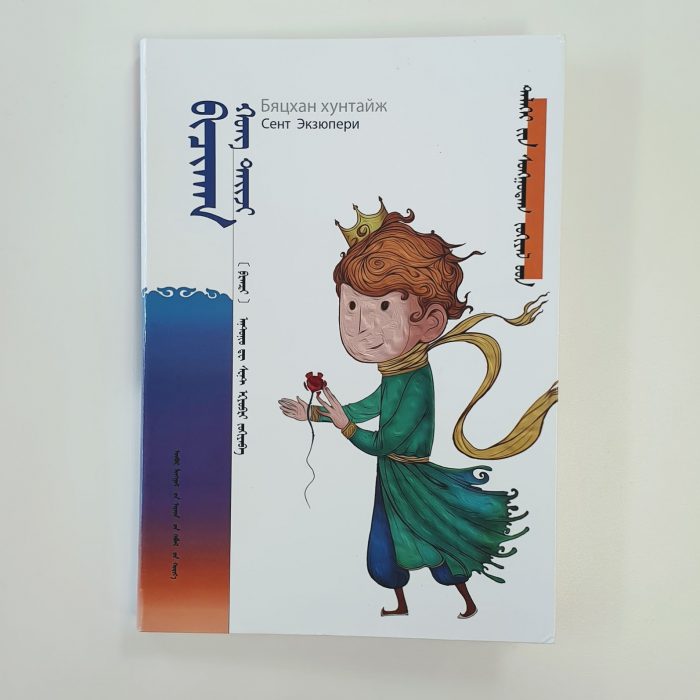
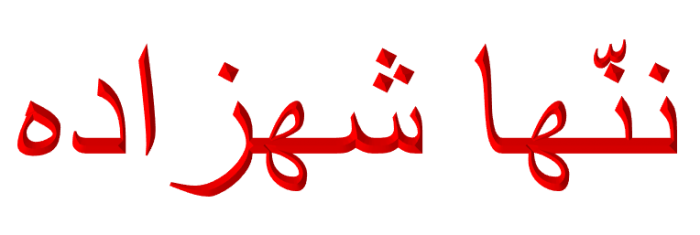
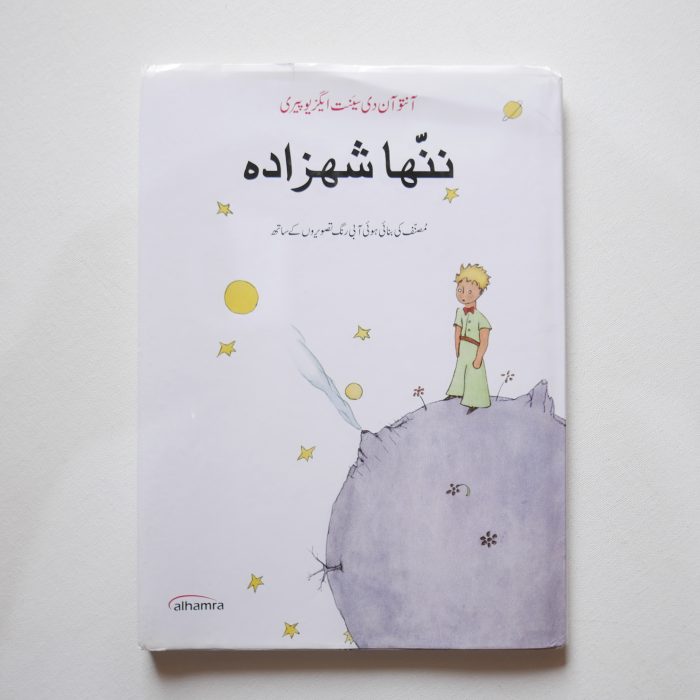
Nanha Shahzadah (ننهاشهزاده) – in Urdu language / اُردُو or also called Lashkari / لشکری. This language is a Persianised standard register of the Hindustani language. It is the official national language and lingua franca of Pakistan. In India, it is one of the 22 official languages recognised in the Constitution of India, having official status in the six states of Jammu and Kashmir, Telangana, Uttar Pradesh, Bihar, Jharkhand and West Bengal, as well as the national capital territory of Delhi. It is also a registered regional language of Nepal.
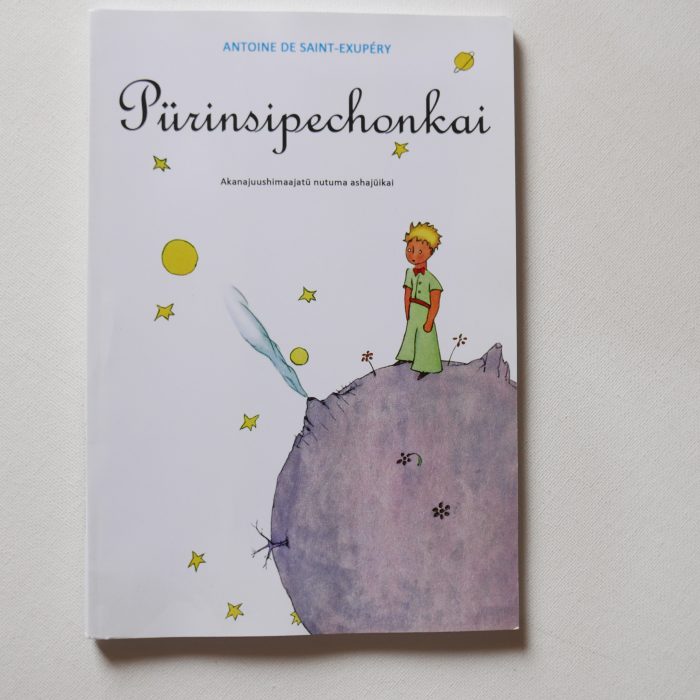
Pürinsipechonkai – in Wayuu or Goajiro language, which is spoken by indigenous Wayuu people in northwestern Venezuela and northeastern Colombia on the Guajira Peninsula.

Mali Princ – in Bosnian language; published in Sarajevo, Bosnia.
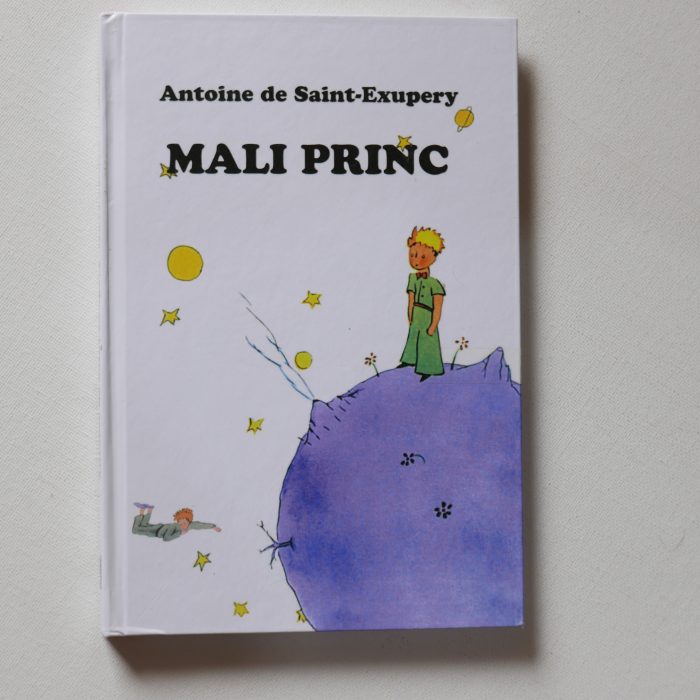
Mali Princ – in Bosnian language; published in Tuzla, Bosnia.

Da Klane Prinz – in Viennese, a dialect spoken in Austria.
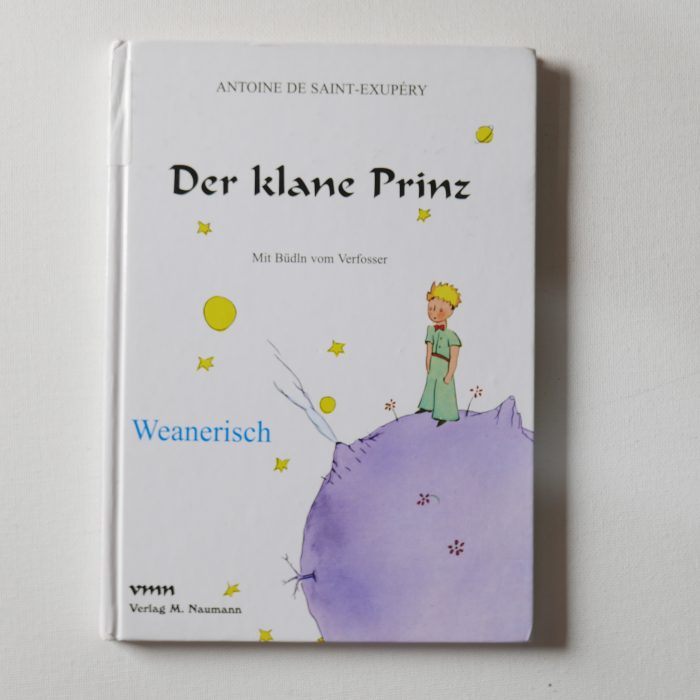
Der Klane Prinz – in Viennese, a dialect spoken in Austria.
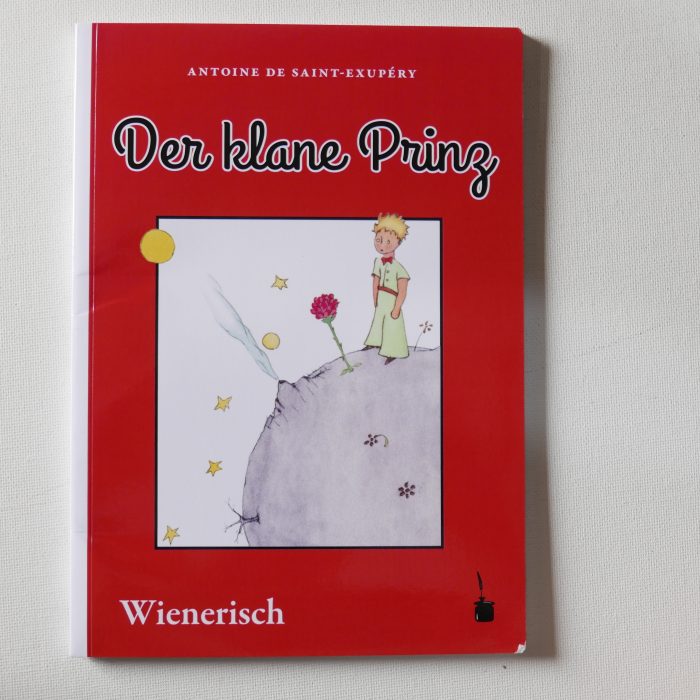
Der Klane Prinz – also in Viennese, a dialect spoken in Austria.
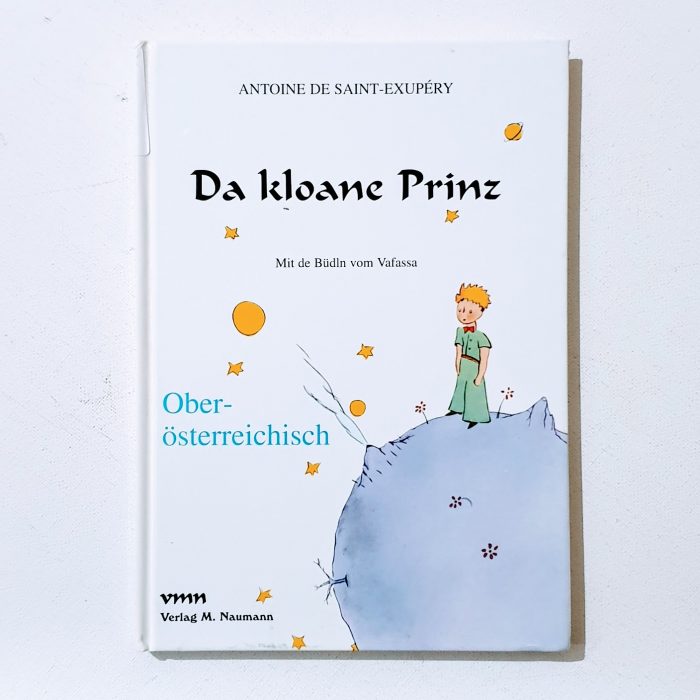
Da Kloane Prinz – in Upper Austrian, a language spoken in Upper Austria (Oberösterreich / Obaöstarreich), one of the nine states or Bundesländer of Austria. Its capital is Linz.
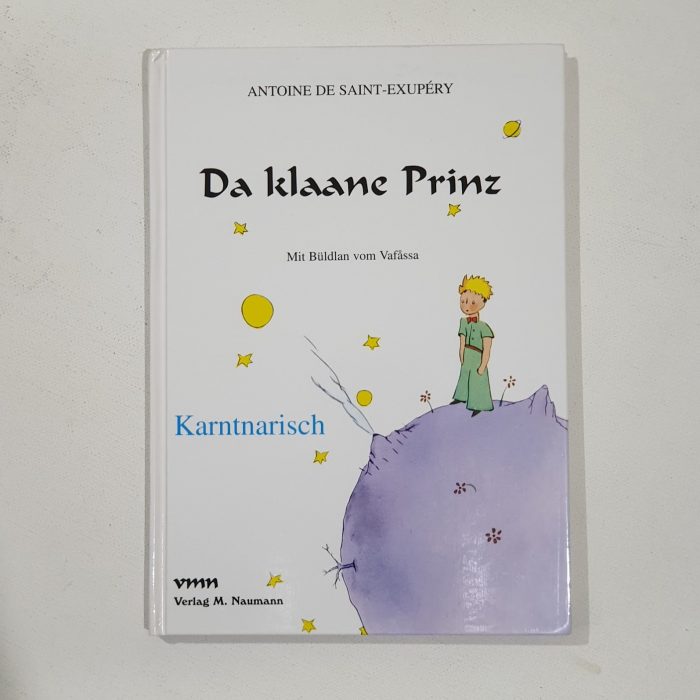
Da Klaane Prinz – in Carinthian, a language spoken in Southern Austria.
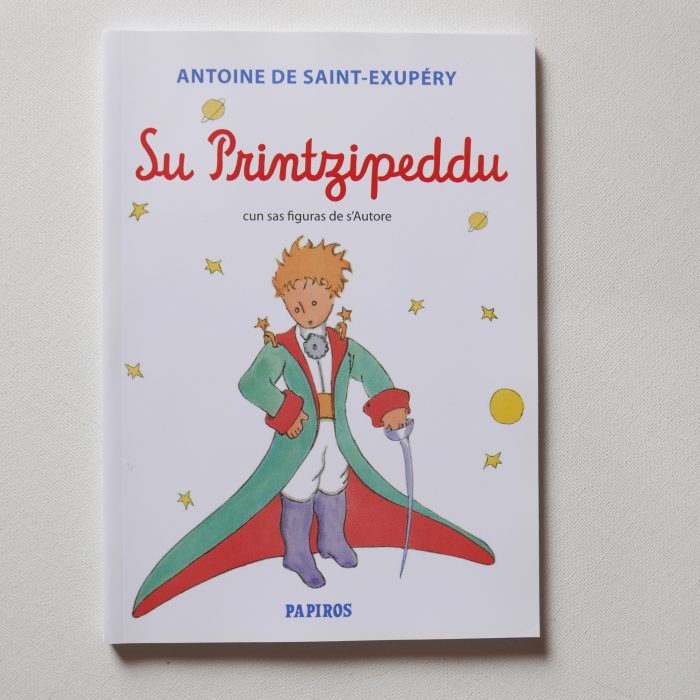
Su Printzipeddu – in Sardinian language.
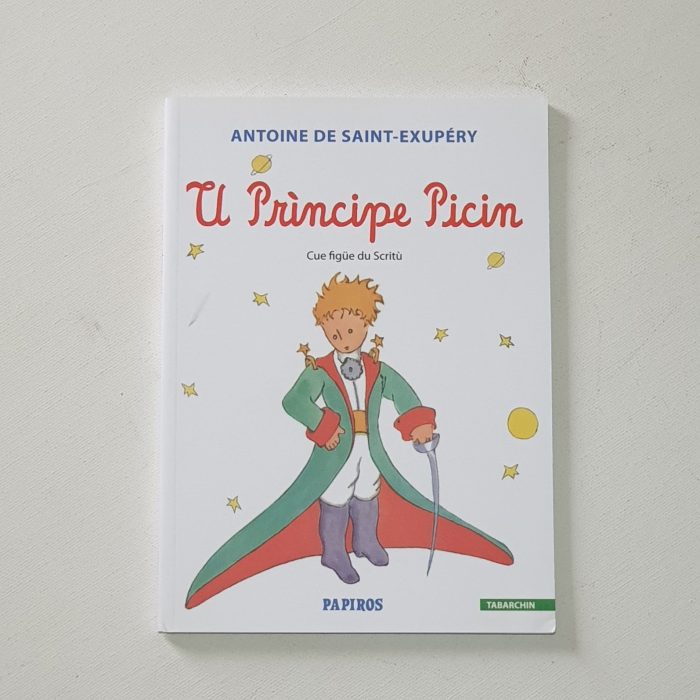
U Prìncipe Picin — in Tabarchino, language spoken in the communities of Carloforte on San Pietro Island and Calasetta on Sant’Antioco Island, which are located in the Archipelago of Sulcis in the Province of South Sardinia.
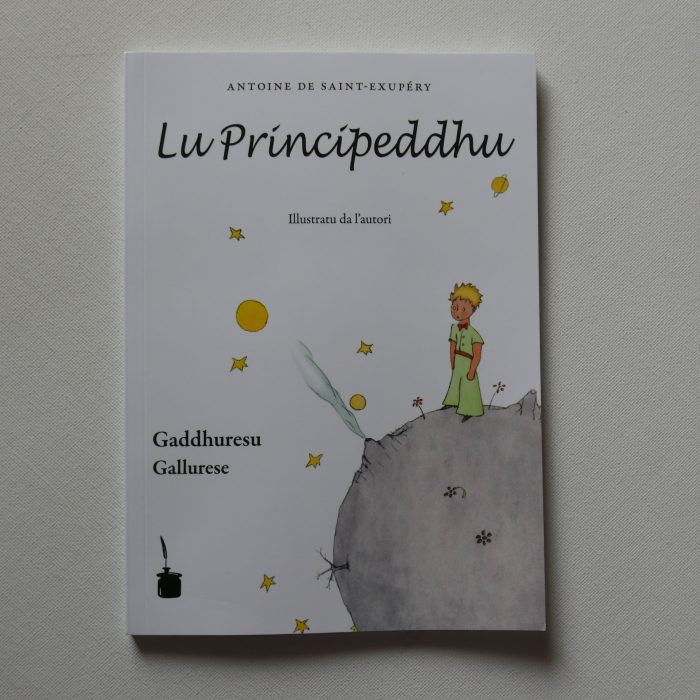
Lu Principeddhu – in Gallurese, a language spoken in northeastern Sardinia.
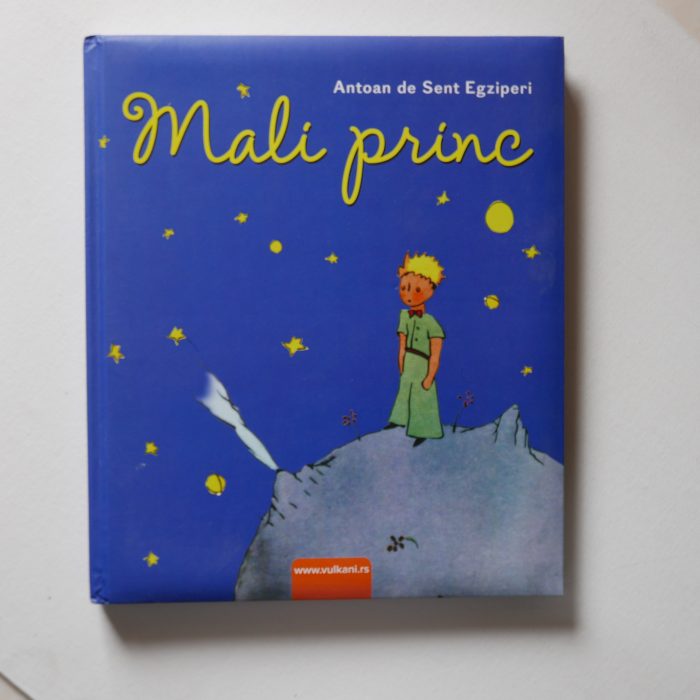
Mali Princ — in Srpski, the standardised variety of the Serbo-Croatian language mainly used by Serbia.

Мали Принц (Mali Princ) — also in Srpski, written in Cyrillic letters.
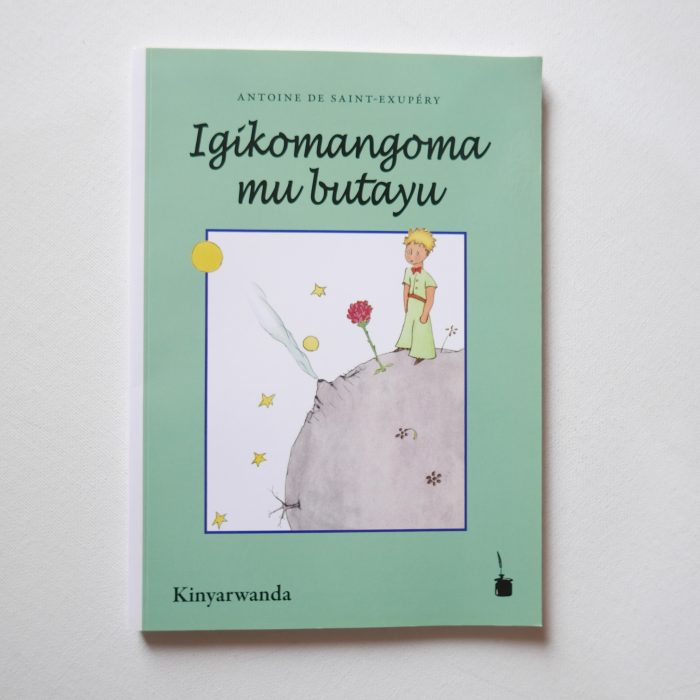
Igikomangoma Mu Butayu — in Kinyarwanda, which is an official language of Rwanda and a dialect of the Rwanda-Rundi language spoken by 12 million people in Rwanda, Eastern Democratic Republic of the Congo and adjacent parts of southern Uganda.
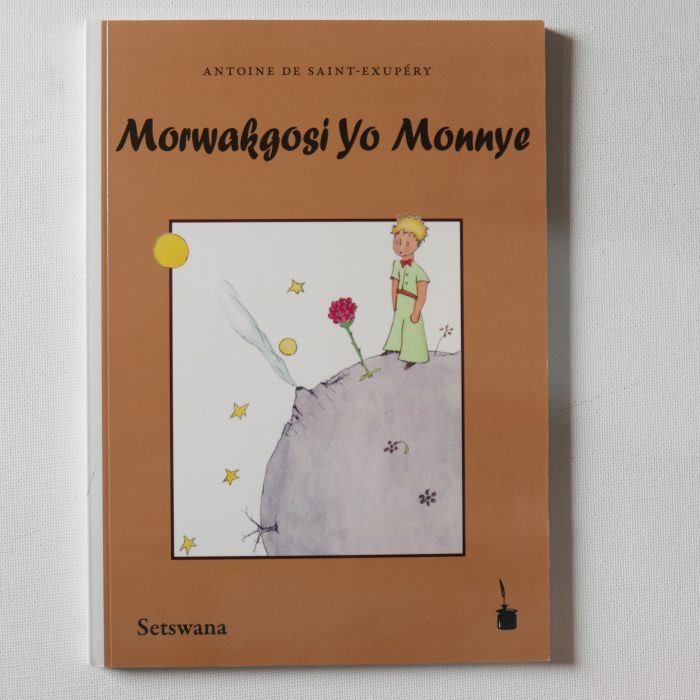
Morwakgosi Yo Monnye, in Tswana / Setswana language. Tswana is a language spoken in Southern Africa, including Botswana and Namibia.
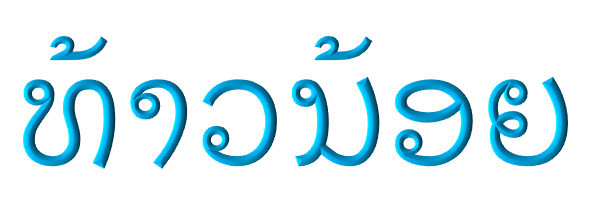
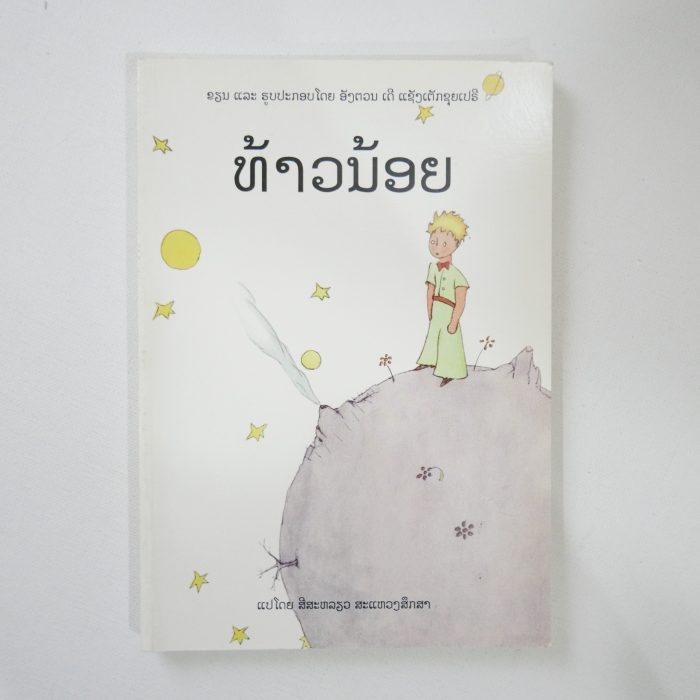
ທ້າວນ້ອຍ / Thāo nō̧i – in Laotian language spoken in Laos (ລາວ) or Muang Lao (ເມືອງລາວ). It is a Kra–Dai language and the language of the ethnic Lao people. It is spoken in Laos, where it is the official language, as well as northeast Thailand, where it is usually referred to as Isan. Lao serves as a lingua franca among all citizens of Laos, who speak approximately 90 other languages, many of which are unrelated to Lao. Modern Lao is heavily influenced by the Thai language. A vast number of technical terms as well as common usage are adopted directly from Thai.

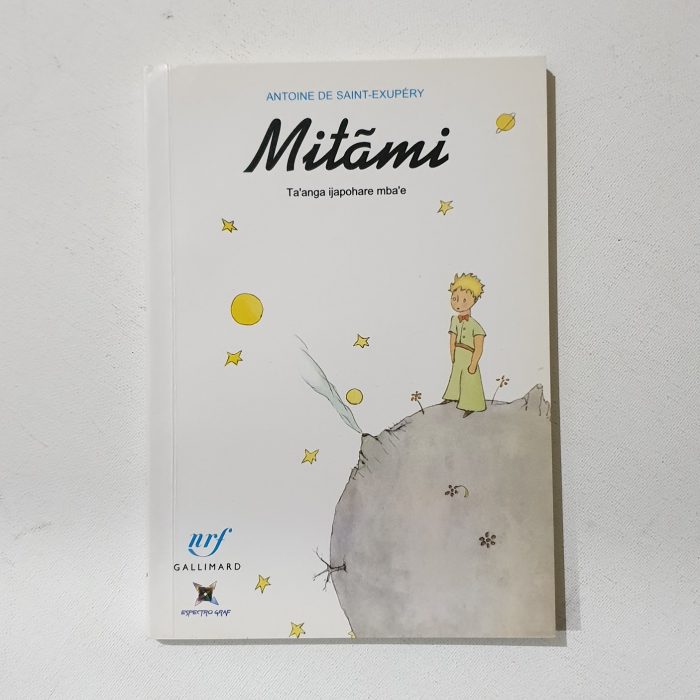
Mitãmi, in Guarani language. Guarani is one of the official languages of Paraguay, where it is spoken by the majority of the population, and where half of the rural population is monolingual. It is spoken by communities in neighbouring countries, including parts of northeastern Argentina, southeastern Bolivia and southwestern Brazil.
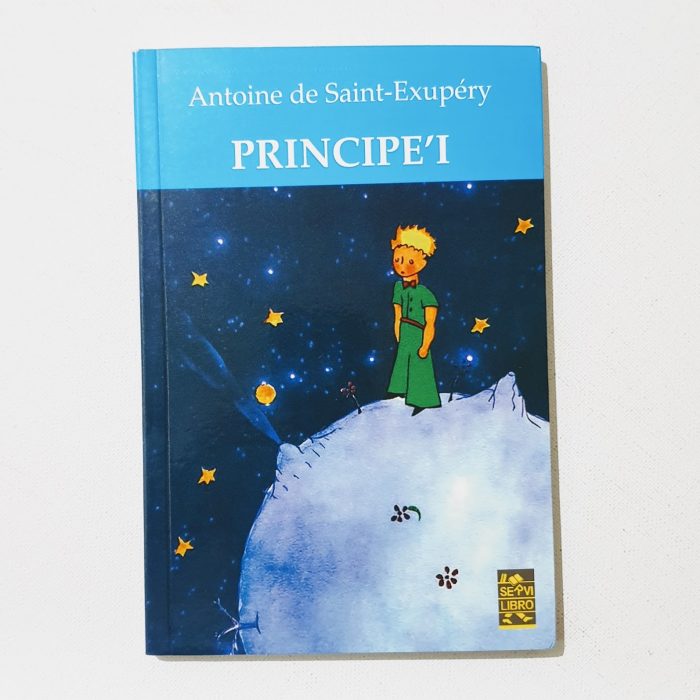
Principe’i — also in Guarani language

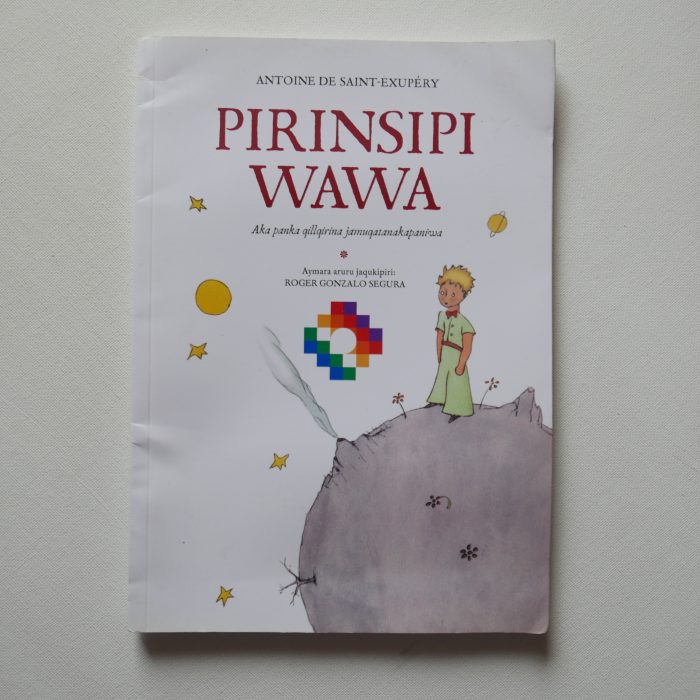
Pirinsipi Wawa, in Aymaran language. Aymaran language is spoken by the Aymara people of the Andes. It is one of only a handful of Native American languages with over three and a half million speakers. Aymara, along with Quechua and Spanish, is an official language of Bolivia. It is also spoken around the Lake Titicaca region of southern Peru and, to a much lesser extent, by some communities in northern Chile and in Northwest Argentina.
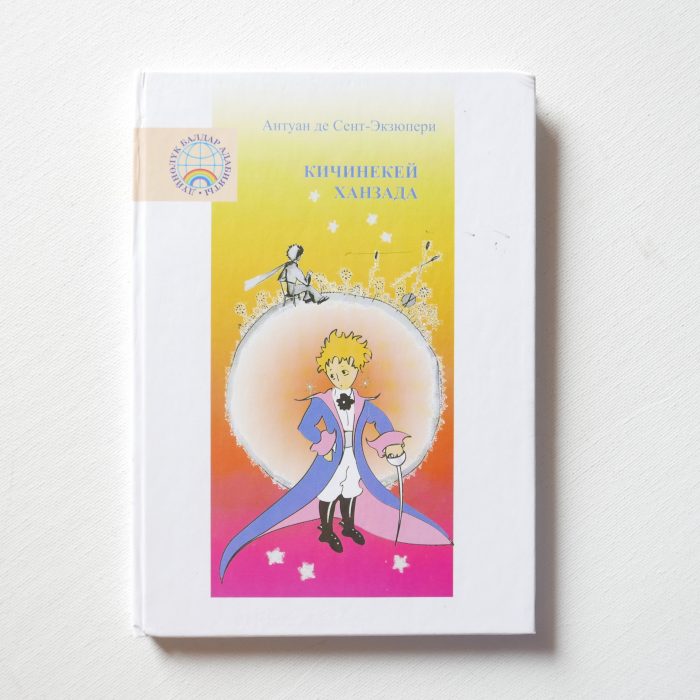
Кичинекей Ханзада (Kichinekey Khanzada), in Kirghiz or Kyrgyz language (кыргызча).
Kyrgyz is a Turkic language spoken by about four million people in Kyrgyzstan as well as China, Afghanistan, Kazakhstan, Tajikistan, Turkey, Uzbekistan, Pakistan and Russia. Kyrgyz is a member of the Kyrgyz–Kipchak subgroup of the Kypchak languages, and modern-day language convergence has resulted in an increasing degree of mutual intelligibility between Kyrgyz and Kazakh.
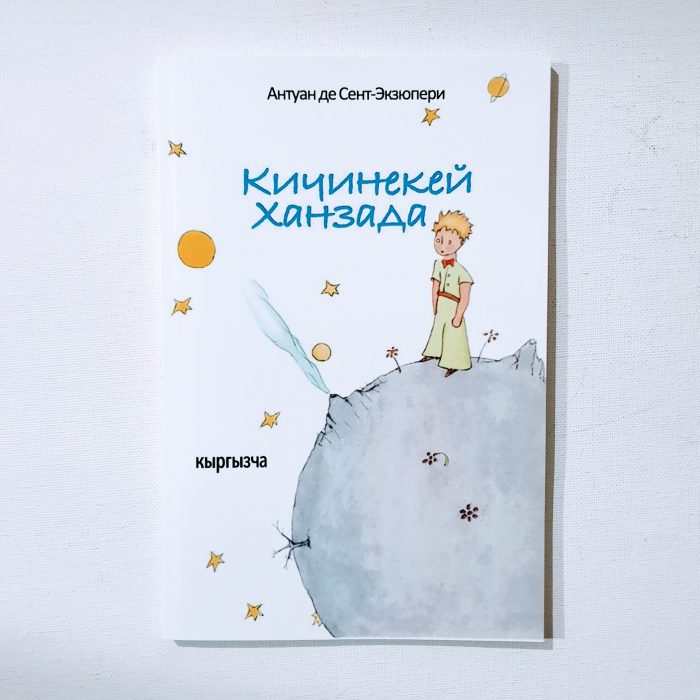
Кичинекей Ханзада (Kichinekey Khanzada), in Kirghiz or Kyrgyz language (кыргызча).

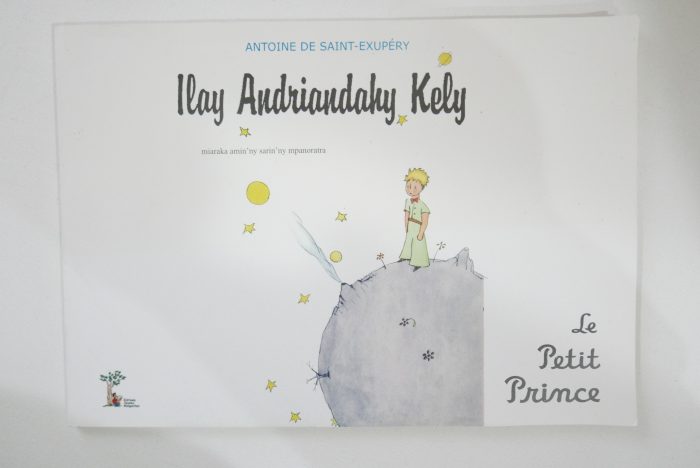
Ilay Andriandahy Kely, in Malagasy — an austronesian language spoken in Madagascar.
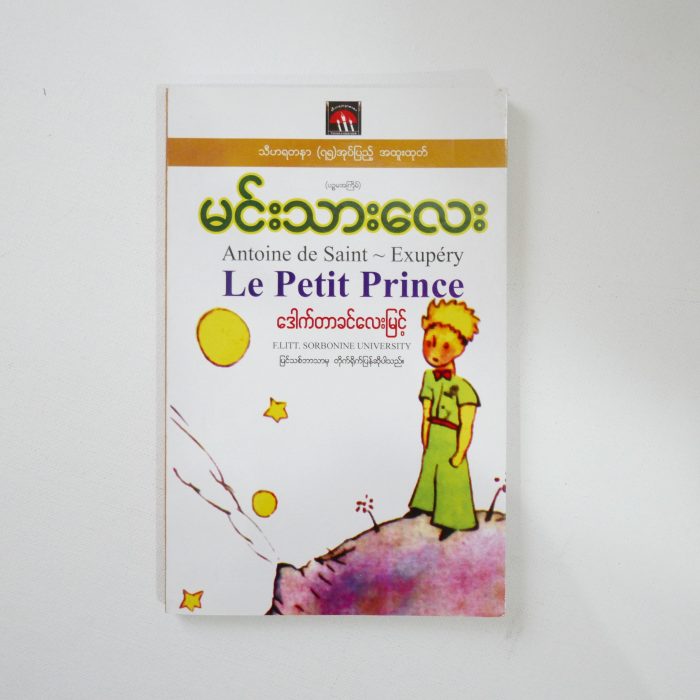
မင်းသားသေး / Myinthale, in Burmese. The Burmese language is the Sino-Tibetan language spoken in Burma where it is an official language and the language of the Bamar people, the country’s principal ethnic group. It is spoken as a first language by 33 million, primarily the Bamar (Burman) people and related ethnic groups, and as a second language by 10 million, particularly ethnic minorities in Burma and neighbouring countries.

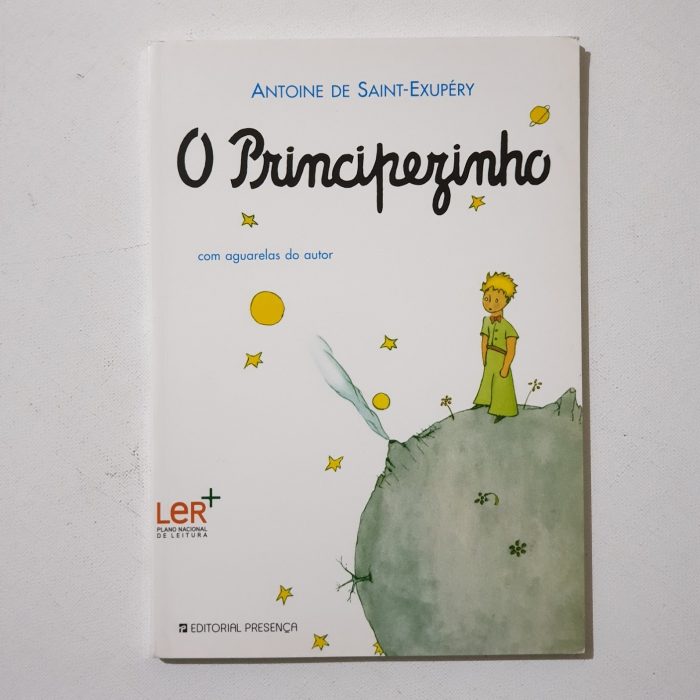
O Principezinho — in Portuguese. I used to think that the people in Portugal speak European dialect of Brazilian language. Hahahah, kidding. I just need to make up a reason that I get this Portuguese edition only now, after more than a hundred other translations in many languages.
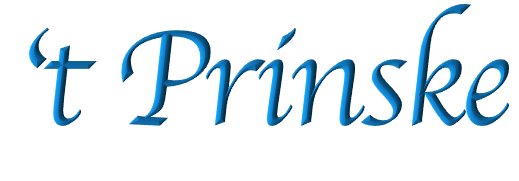

‘t Prinske — in Limburgish, a group of East Low Franconian languages spoken in the Belgian and Dutch provinces both named Limburg and some neighbouring areas of Germany. The area in which it is spoken roughly fits within a wide circle from Venlo to Düsseldorf to Aachen to Maastricht to Tienen and back to Venlo. In some parts of this area it is generally used as the colloquial language in daily speech.

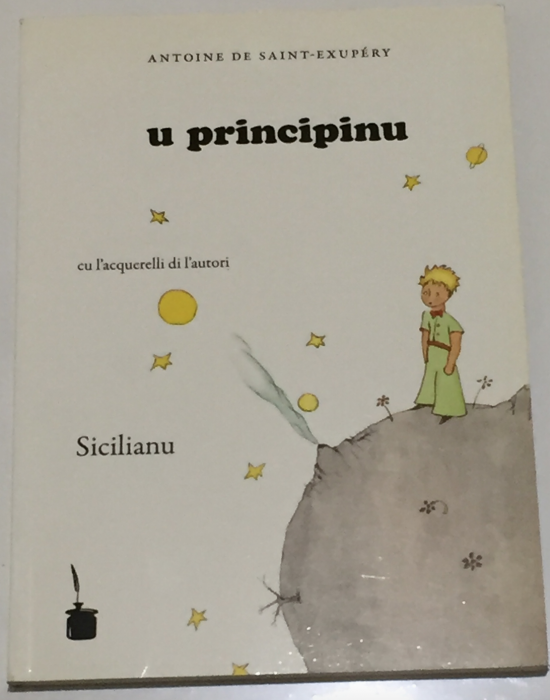
U Principinu, in Sicilian


U Principellu, in Corsican language.
If you read the story of the author, you would have wondered if the Corsican edition has ever been published. Saint-Exupéry’s last flying was to collect intelligence on German troop movements in and around the Rhone Valley preceding the Allied invasion of southern France. He took off in an unarmed P-38 on his ninth reconnaissance mission from an airbase on Corsica. He did not return, dramatically vanishing without a trace. Just like the Little Prince.

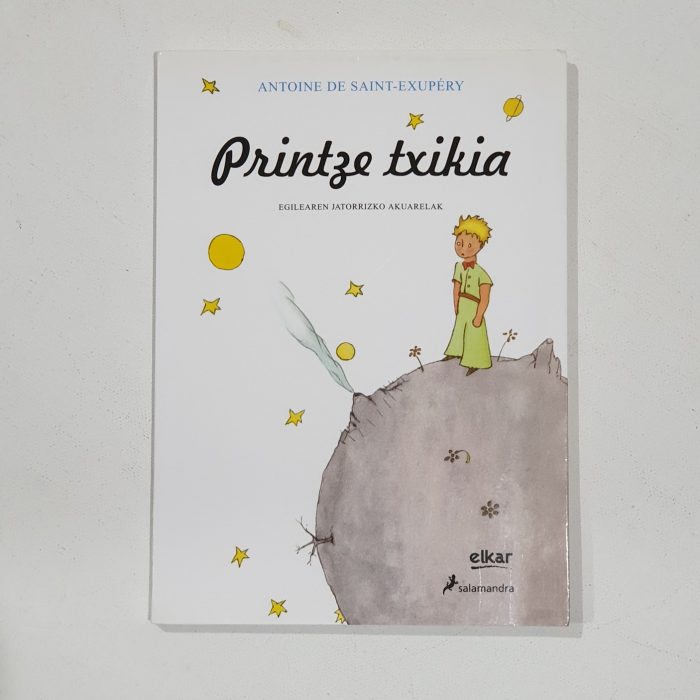
Printze Txikia. As Javier Tejerina told me, this book was … written in the standarised Euskera (Euskera Batúa). The language was in danger of dissapearing, was forbidden in the years of Franco dictatorship. So, it was unificated, created common grammatical rules based specially in the central dialects (less exposed to the borderline languages, Spanish and French). This way is was possible to teach to children in schools after the death of Franco. And now every children speak Euskera again, so future exists for this stoneage language.
Again, from Javier Tejerina: Basque Country is one of the most beautiful places in Spain. San Sebastián is a beauty, Bilbao too, and one of the best cuisine of the world. I hope you can visit it some day. Basque people are noble people, reserved but very friendly, and very proud of their culture. Basque language, also called Euskera, is wonderfully weird. It has no similarities to Celtic languages nor any other language in the world. Some say Armenian language has a lot of similar words, but I am not sure of that. It is a prehistoric language. There are some curiosities that suggest us that it is a very very old language.
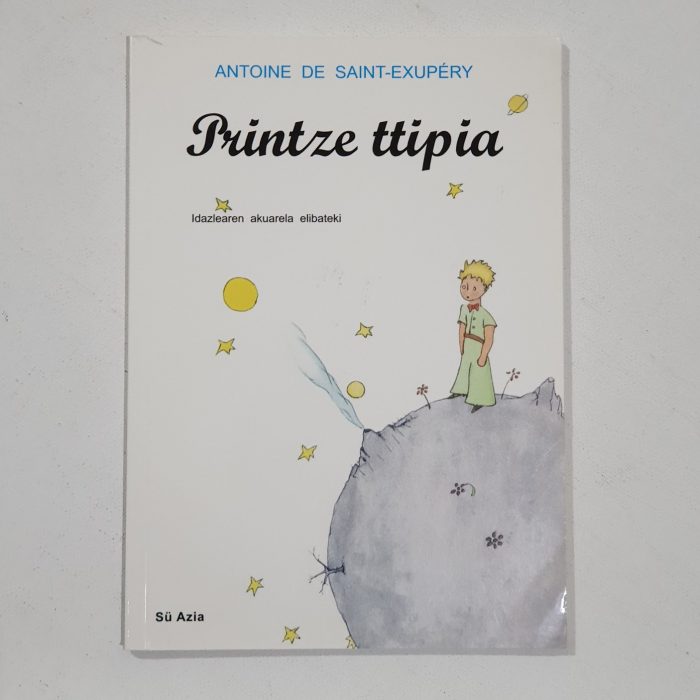
Printze Ttipia. Still, as Javier Tejerina told me, this book was written in Euskera Suletino, spoken is the eastest region of Basque Country (in France).

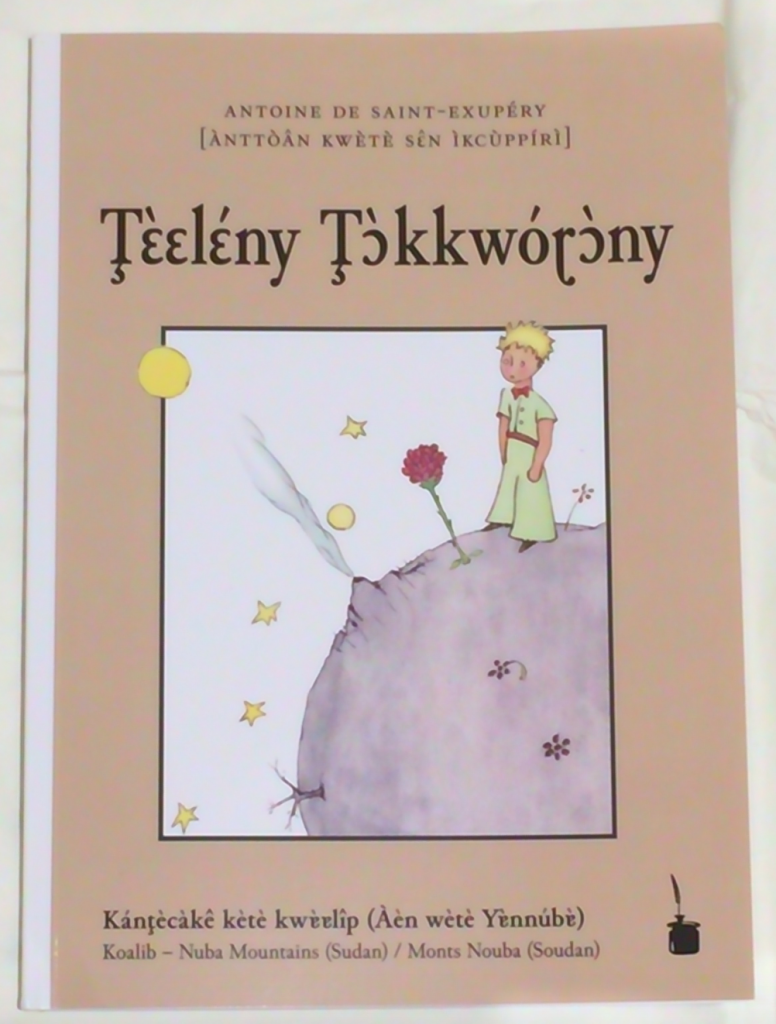
Tɛ̀ɛlɛ́ny Tɔ̀kkwóɽɔ̀ny, in Koalib language
This is a special book; that it mentions my name as one of the sponsor of its publishing. Thanks to Nadine & Walter Sauer for the opportunity to make a contribution.
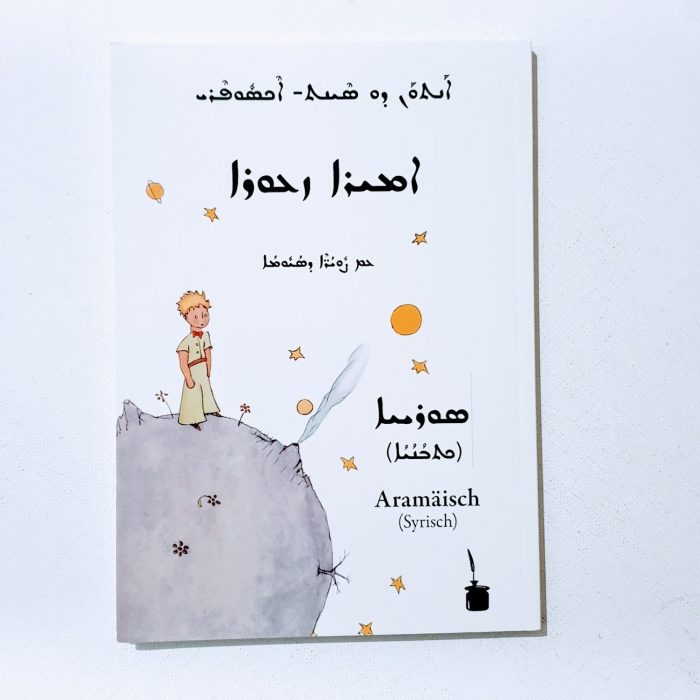
LPP translation in Syriac. Syriac, also known as Syriac / Syrian Aramaic or Classical Syriac, is a dialect of Middle Aramaic. Having first appeared in the early first century CE in Edessa, classical Syriac became a major literary language throughout the Middle East from the 4th to the 8th centuries, preserved in a large body of Syriac literature. Indeed, Syriac literature comprises roughly 90% of the extant Aramaic literature. Syriac was once spoken across much of the Near East as well as Anatolia and Eastern Arabia.

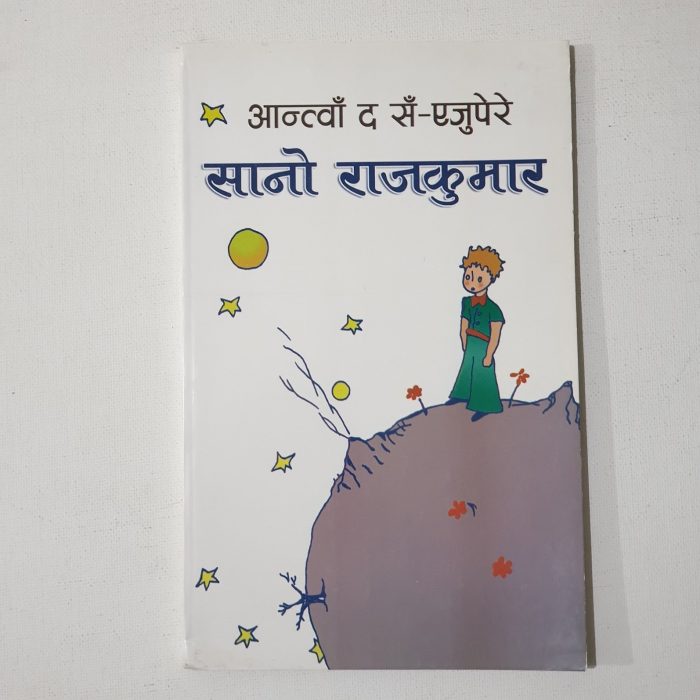
फुच्चे राजकुमार (Phuchhe Rajkumar) — in Nepali / Gorkhali / Khas Kura, an Indo-Aryan language of the sub-branch of Eastern Pahari. It is the official language of Nepal and one of the 22 official languages of India. It is spoken mainly in Nepal and by about a quarter of the population in Bhutan. In India, Nepali is listed in the Eighth Schedule to the Constitution as a language of India, with official status in the state of Sikkim, and spoken in Northeast Indian states such as Assam and in West Bengal’s Darjeeling district. Owing to Nepal’s location, this language has been influenced by Tibeto-Burman languages.

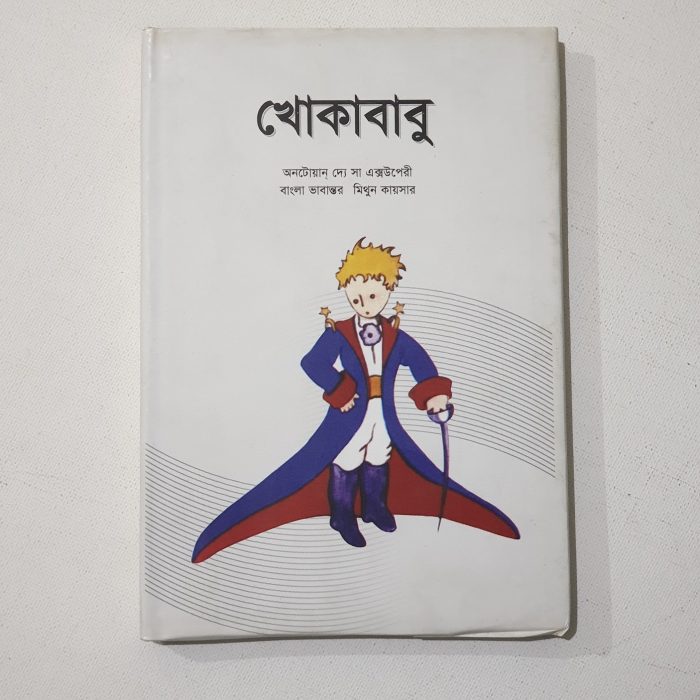
খোকাবাবু (Khokababu)
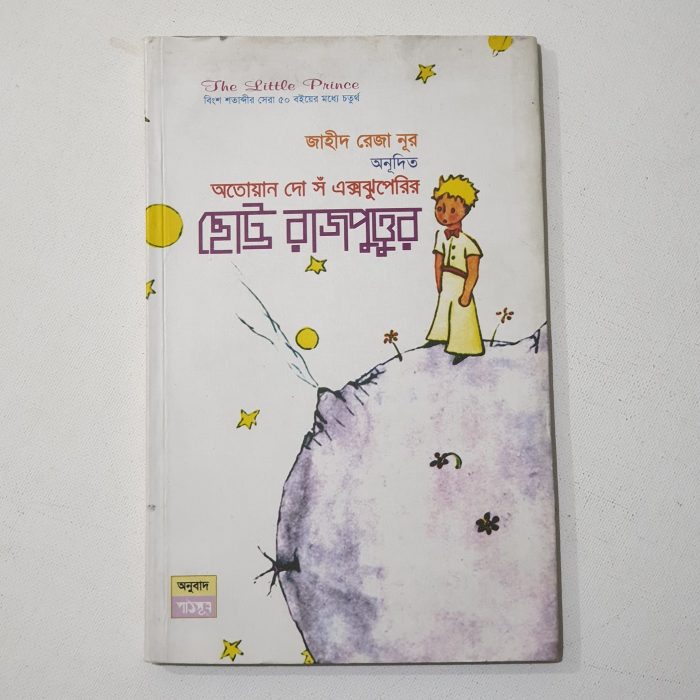
ছোট্ট রাজপুত্তুর (Chotto Rajputtur)

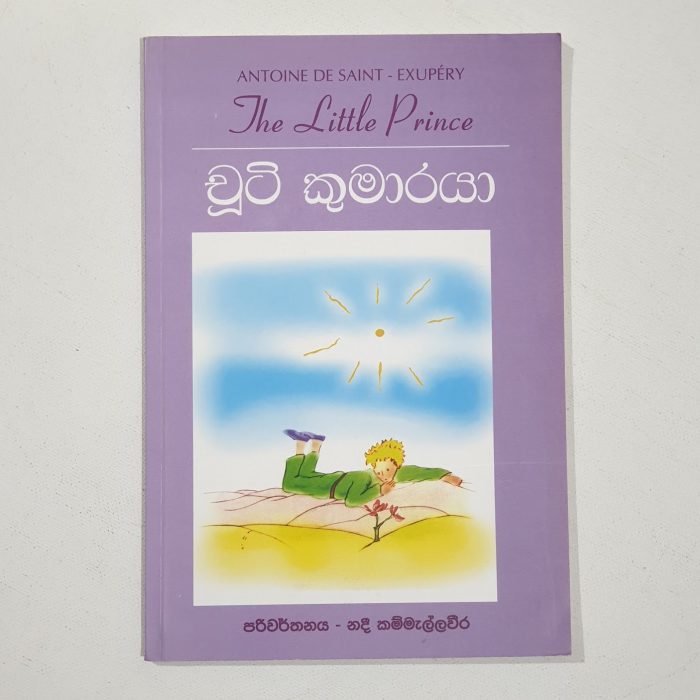
චූටි කුමාරයා / Chuti Kumaraya — in Sinhala, a native language of the Sinhalese people, who make up the largest ethnic group in Sri Lanka, numbering about 16 million. Sinhalese is also spoken as a second language by other ethnic groups in Sri Lanka, totalling about four million. It belongs to the Indo-Aryan branch of the Indo-European languages. Sinhalese is written using the Sinhalese script, which is one of the Brahmic scripts.
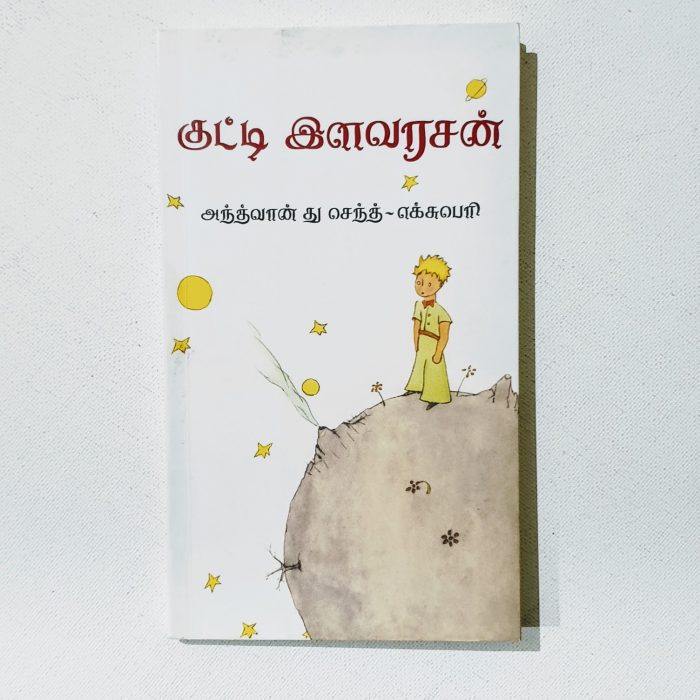
Kutti Ilavarasan — in Tamil, a Dravidian language predominantly spoken by the Tamil people of India and Sri Lanka. Tamil is an official language of two countries: Sri Lanka and Singapore and official language of the Indian state Tamil Nadu. Tamil is also spoken by significant minorities in the four other South Indian states of Kerala, Karnataka, Andhra Pradesh and Telangana and the Union Territory of the Andaman and Nicobar Islands.
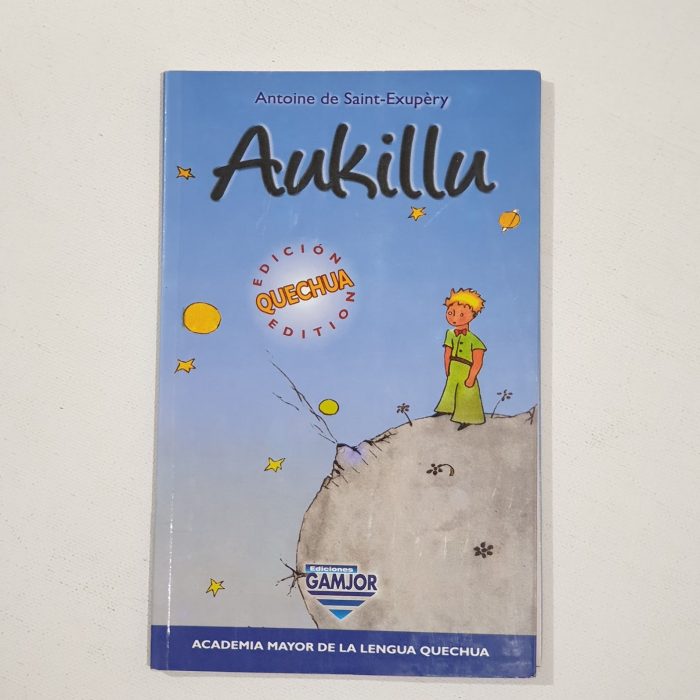
Aukillu — in Quechuan language. Quechuan, usually called Runasimi in Quechuan languages, is an indigenous language family spoken by the Quechua peoples, primarily living in the Andes and highlands of South America. Derived from a common ancestral language, it is the most widely spoken language family of indigenous peoples of the Americas, with a total of probably some 8–10 million speakers. Approximately 25% of Peruvians speak a Quechuan language. It is perhaps most widely known for being the main language family of the Inca Empire. The Spanish colonisers initially encouraged its use, but from the middle of their reign they suppressed it. However, Quechua ultimately survived, and variants are still widely spoken today.
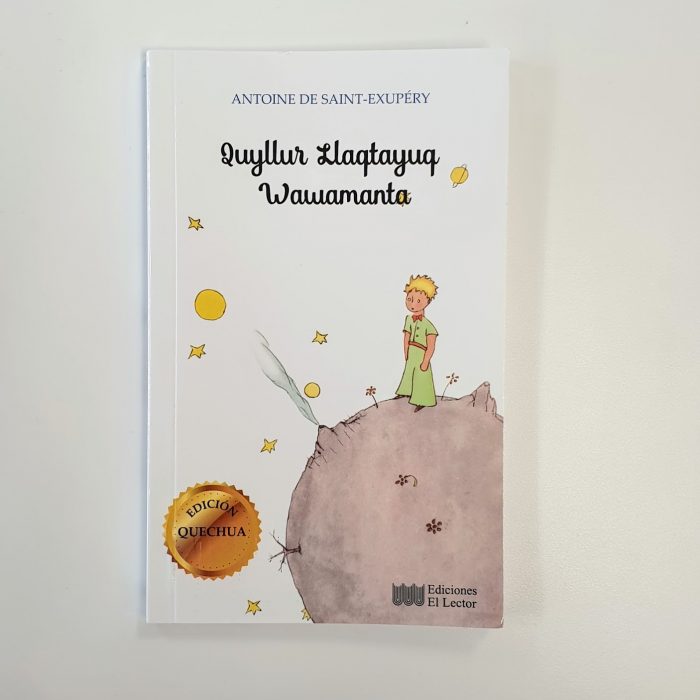
Quyllur Llaqtayuq Wawawanta — also in Quechuan language.
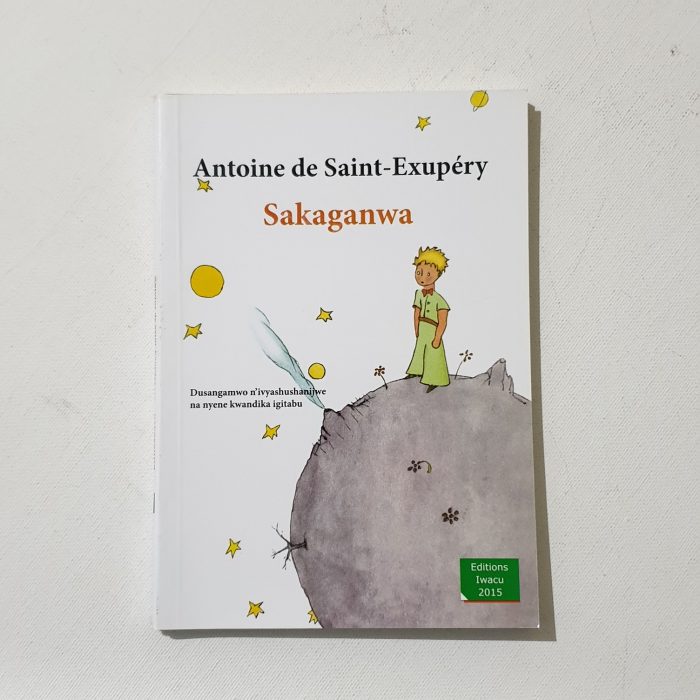
Sakaganwa, in Kirundi — a Bantu language spoken by nine million people in Burundi and adjacent parts of Tanzania and Congo-Kinshasa, as well as in Uganda.

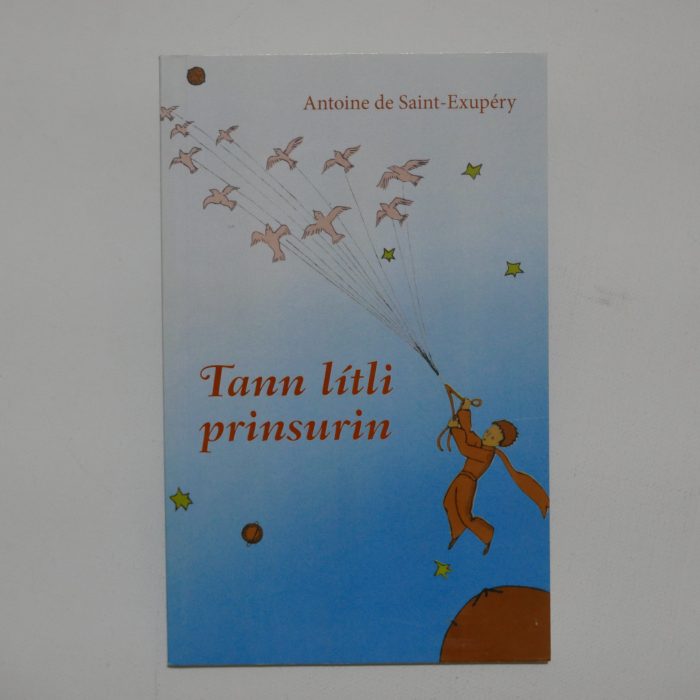
Tann Lítli Prinsurin — in Faroese (Føroyskt), the language of Faroe Islands. Faroese is one of five languages descended from Old West Norse spoken in the Middle Ages, the others being Norwegian, Icelandic, and the extinct Norn and Greenlandic Norse. Faroese and Icelandic, its closest extant relative, are not mutually intelligible in speech, but the written languages resemble each other quite closely, largely owing to Faroese’s etymological orthography.
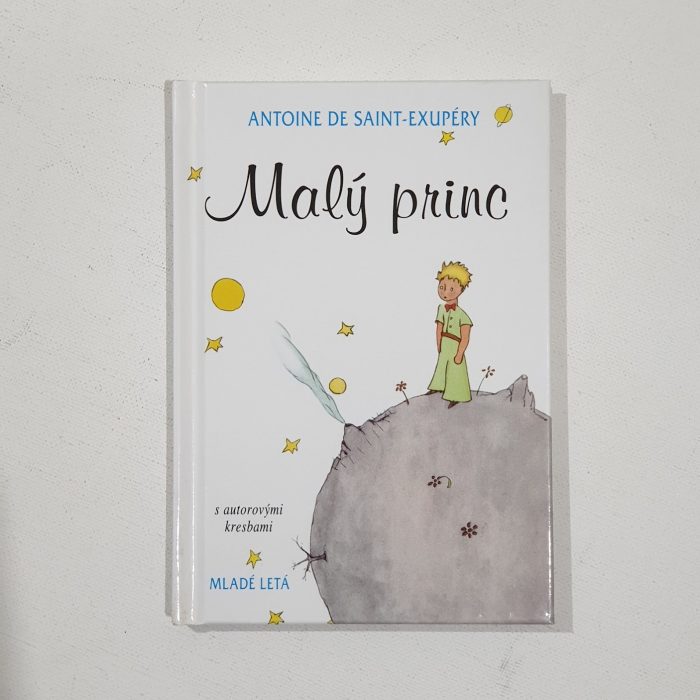
Malý Princ — in Slovak, an Indo-European language that belongs to the West Slavic languages (together with Czech, Polish, and Sorbian). Slovak is the official language of Slovakia, where it is spoken by approximately 5.51 million people (2014).

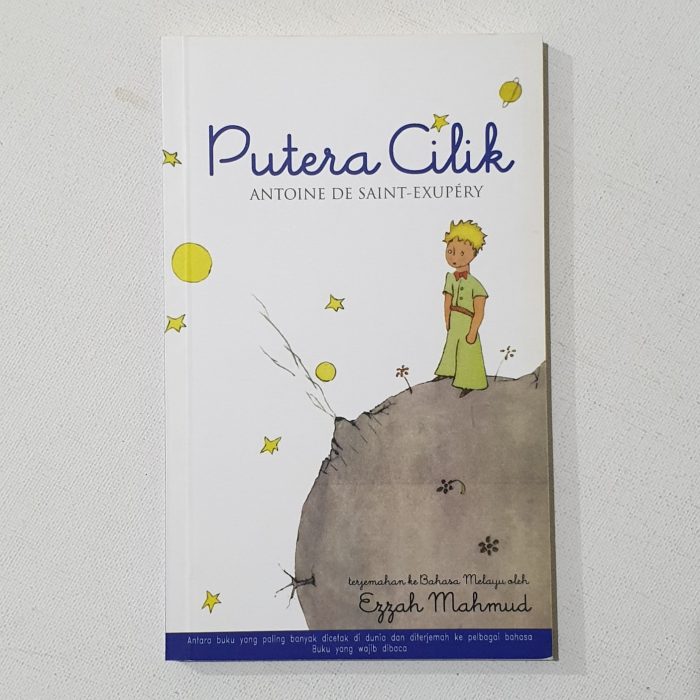
Putera Cilik, in Malay language. Malay language is spoken in Malaysia, Indonesia, Brunei, and Singapore, with slight differences.
I always tried to find this book when I visited west or east part of Malaysia. At last a small publisher published a new edition of this book. Proudly, I was their first overseas customer. Sending me the books was their first experience to send a package overseas. Then I shared the info to other LPP book lovers, so the publisher get more orders from other continents.

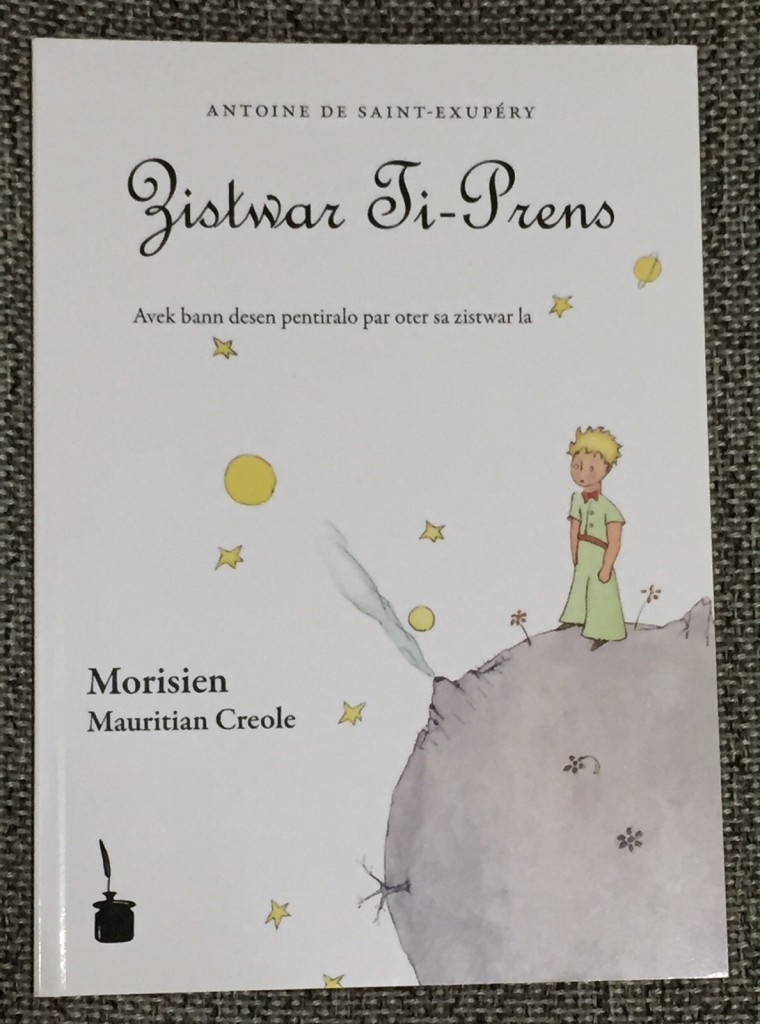
Zistwar Ti-Prens — in Mautirian creole. Please imagine it like: The histoire (du) Petit Prince. Mauritian Creole / Morisien / Morisyen is a French-based creole language spoken in Mauritius. In addition to the French base of the language, there are also a number of words from English and from the many African and South Asian languages that have been spoken on the island. Mauritian Creole is the lingua franca and de facto language of Mauritius, formerly a British colony, which has kept both English and French as its core languages, even though English is used mostly for administration and educational purposes and French for media and as a second language for speaking.
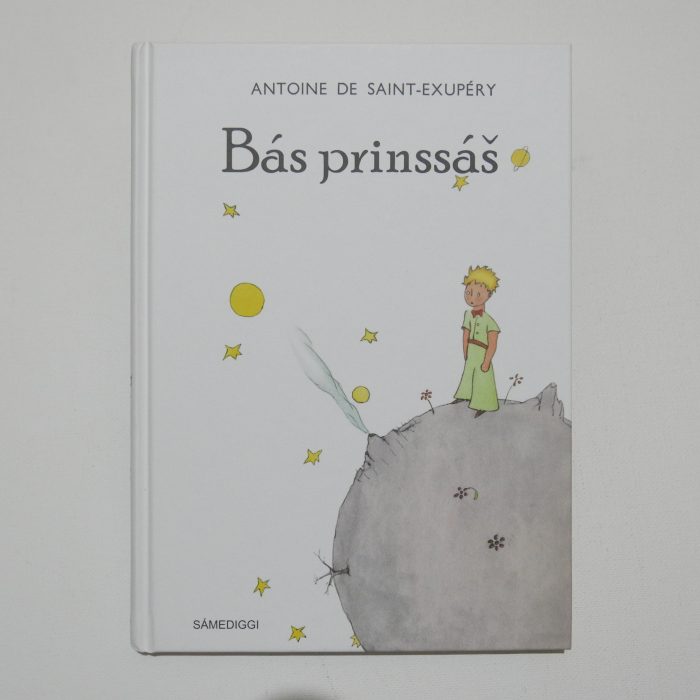
Bás Prinssáš — in Northern Sami language, or sometimes also simply referred to as Sami. The area where Northern Sami is spoken covers the northern parts of Norway, Sweden and Finland. The number of Northern Sami speakers is estimated to be somewhere between 15,000 and 25,000. About 2,000 of these live in Finland and between 5,000 and 6,000 in Sweden.
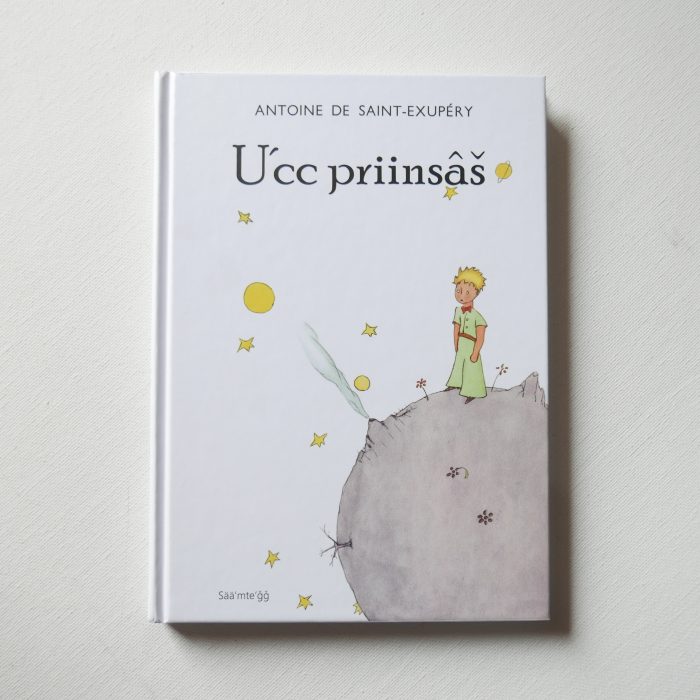
Úcc Priinsâš — in Skolt Sami language. This language spoken by the Skolts, with approximately 300 speakers in Finland, mainly in Sevettijärvi and approximately 20–30 speakers of the Njuõ’ttjäu’rr (Notozero) dialect in an area surrounding Lake Lovozero in Russia.
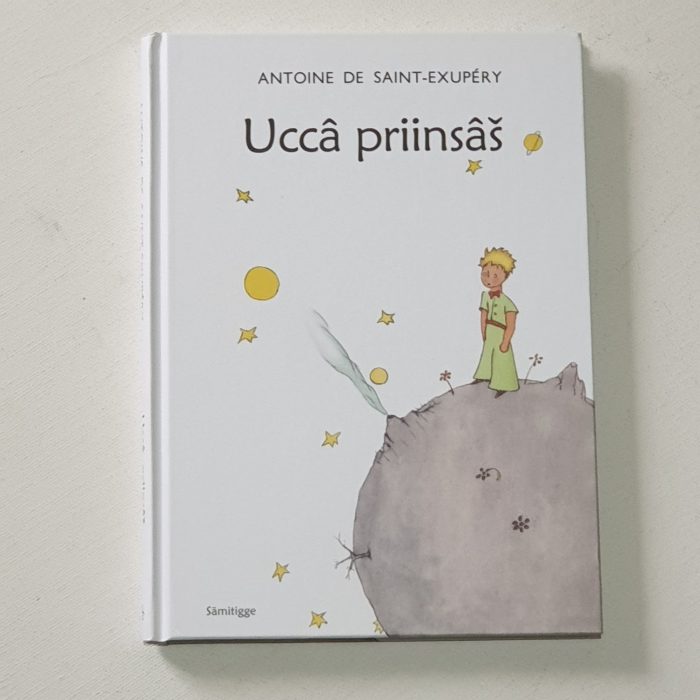
Uccâ Priinsâš — in Inari Sámi language. This language is spoken by approximately 300 speakers living in the municipality of Inari, Finland.

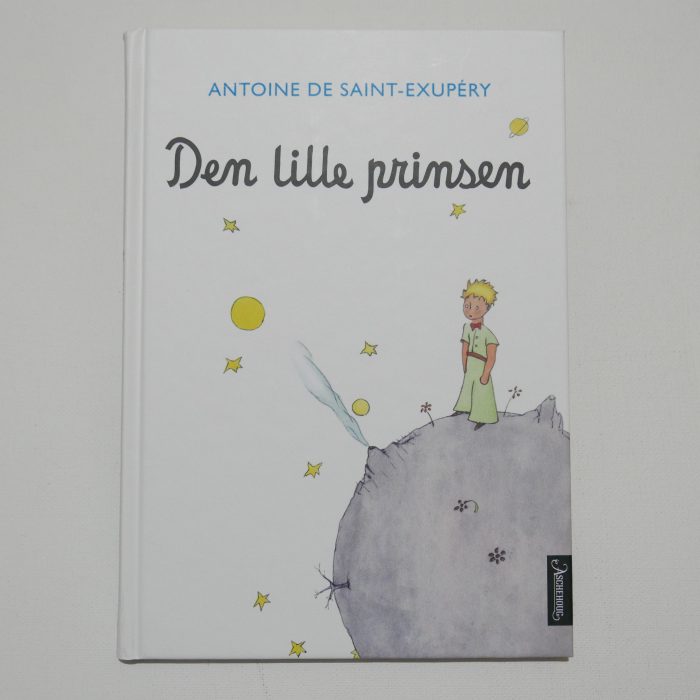
Den Lille Prinsen, in Norwegian.
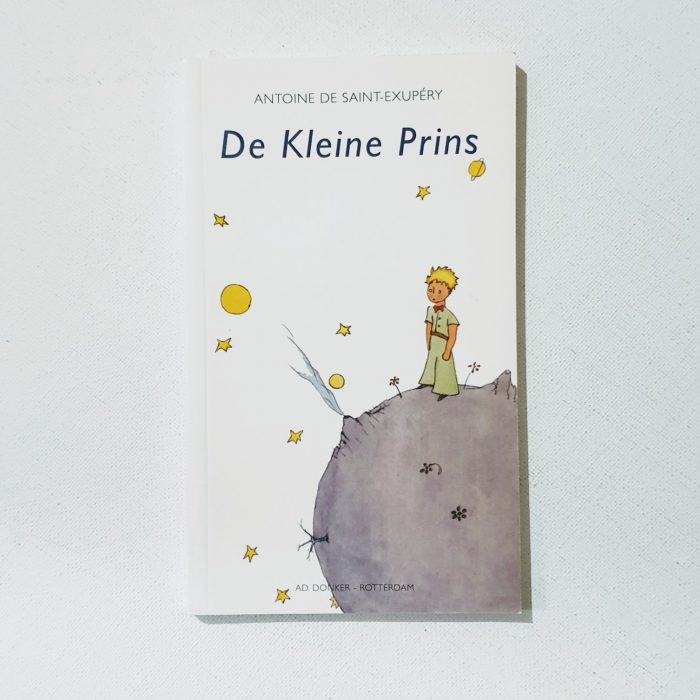
De Kleine Prins — in Dutch, a West Germanic language spoken by around 23 million people as a first language and 5 million people as a second language, constituting the majority of people in the Netherlands and Belgium.
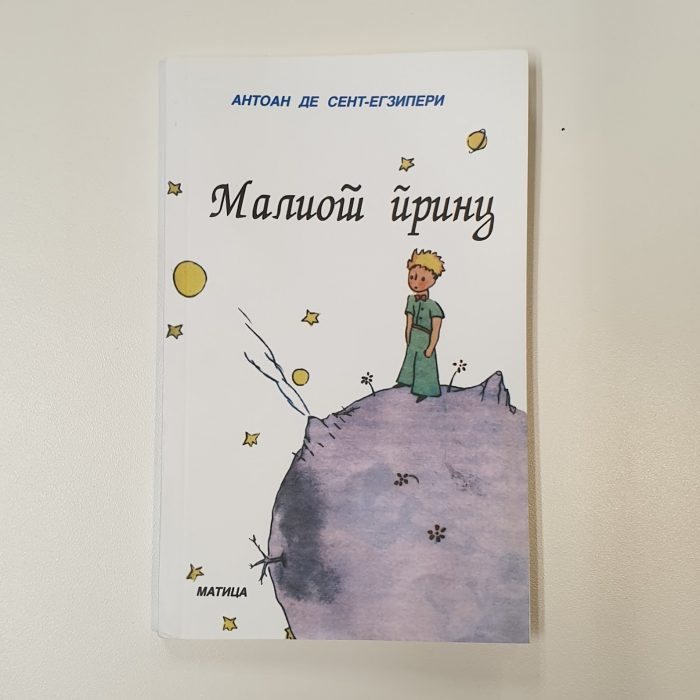
Малиот Принц / Maliot Prints — in Makedonski / Macedonian language, which is a South Slavic language spoken as a first language by around two million people, principally in the Republic of Macedonia, with a smaller number of speakers throughout the transnational region of Macedonia. It is the official language of the Republic of Macedonia and a recognised minority language in parts of Albania, Romania and Serbia.
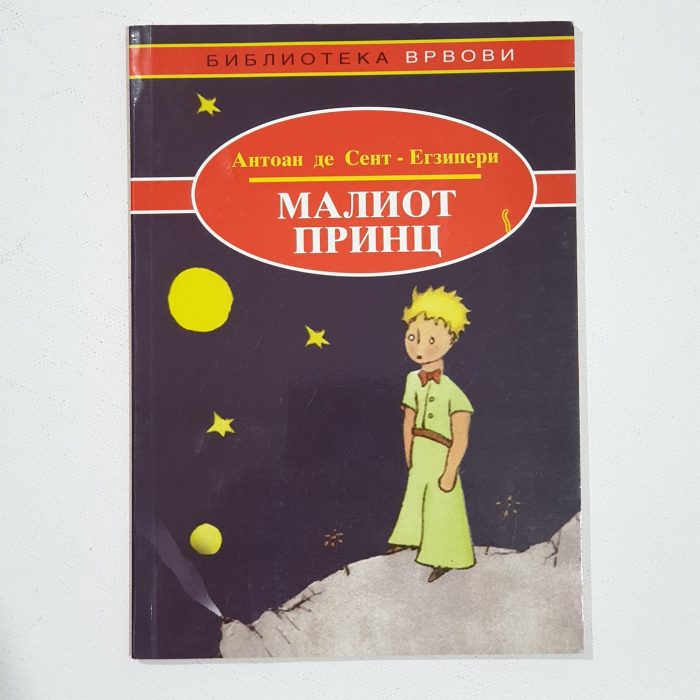
Малиот Принц / Maliot Prints

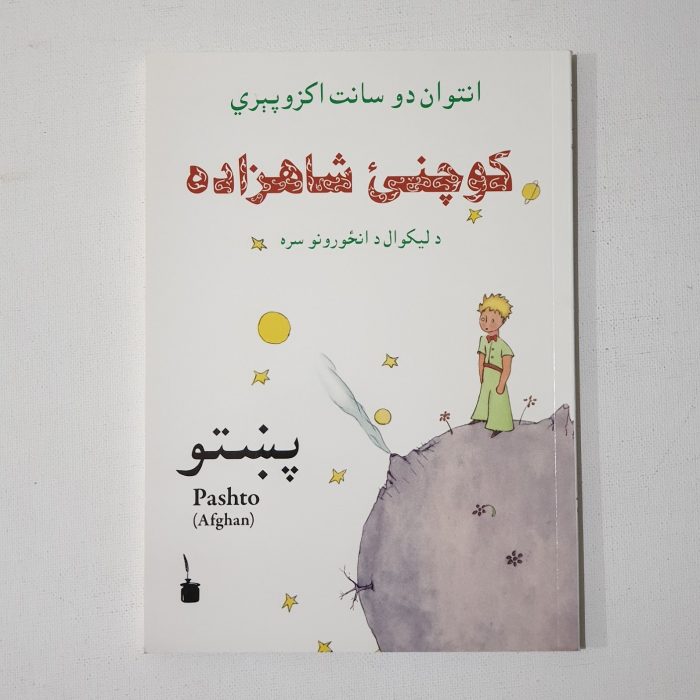
کوچني شاهزاده/ Kuchnay Shahzadah, in Pashto / Pashtuns / Pakhtuns / Afghans, which is one of the two official languages of Afghanistan, and it is the second-largest regional language of Pakistan, mainly spoken in the west and northwest of the country. In Pakistan, it is the majority language of the province of Khyber Pakhtunkhwa and the northern districts of Balochistan.

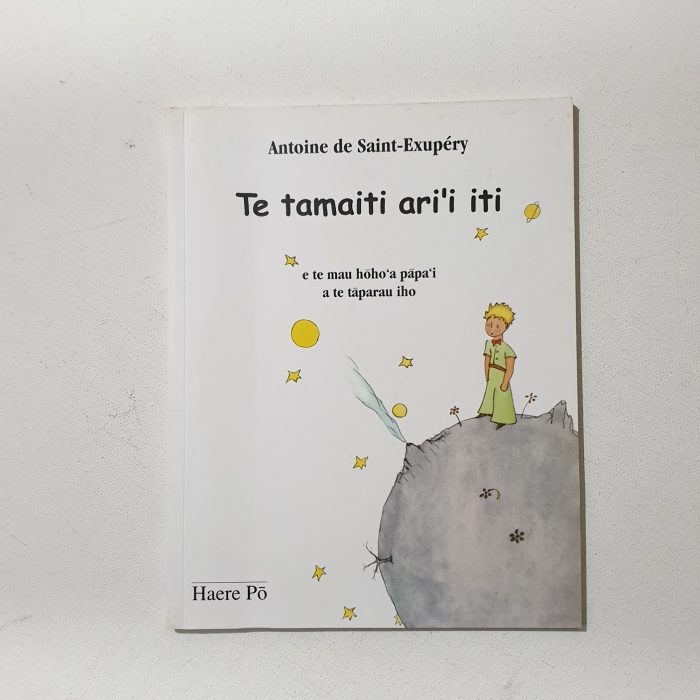
Te Tamaiti Ari’i Iti — in Tahitian language, a Polynesian language spoken mainly on the Society Islands in French Polynesia. It belongs to the Eastern Polynesian group. As Tahitian had no written tradition before the arrival of the European colonists, the spoken language was first transcribed by missionaries of the London Missionary Society in the early 19th century.


Бяцхан Хунтайж (Byatskhan Khuntayzh), in Mongolian.

Mali Princ — in Slovenian language, which belongs to the group of South Slavic languages. It is spoken by approximately 2.5 million speakers, the majority of whom live in Slovenia.

Mali Kralič — in Prekmurje Slovene, also known as the Prekmurje dialect, East Slovene, or Wendish. It is a Slovene dialect belonging to a Pannonian dialect group of Slovene, used in private communication, liturgy, and publications by authors from Prekmurje. It is spoken in the Prekmurje region of Slovenia and by the Hungarian Slovenes in Vas County in western Hungary.

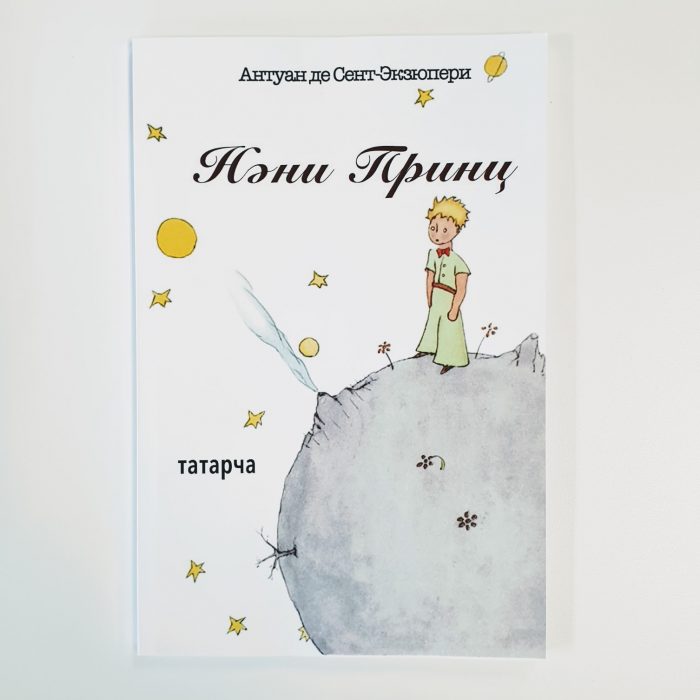
Нәни принц (Näni Prints) in Tatar language (татарча), the official language of Tatarstan. Tatarstan is an autonomous republic within the Russian Federation, located in the Volga Federal District.

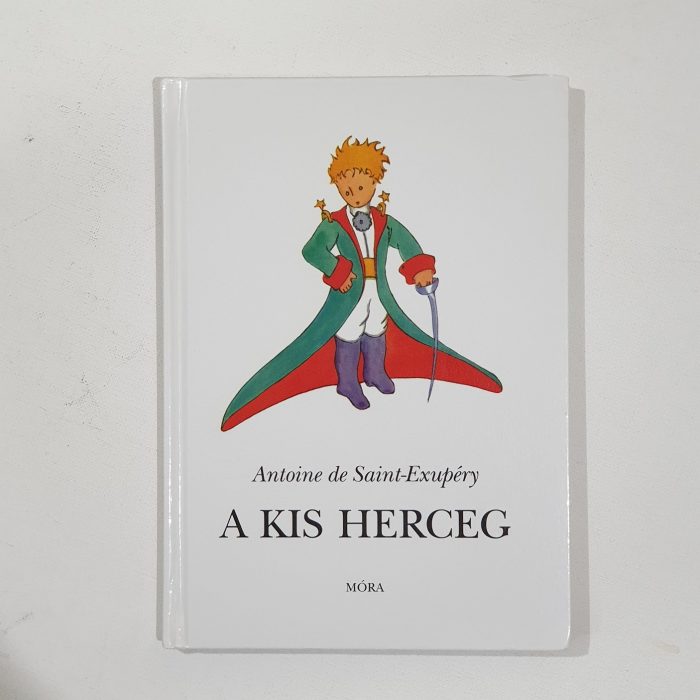
A Kis Herceg, in Hungarian language.
Hungarian is another mystery. This language is extremely different to its neighbouring countries. I’ve read the history of many Eastern European nations. The fascination brought me to Budapest in 2014. A short and meaningful journey. I’ll tell you later on.
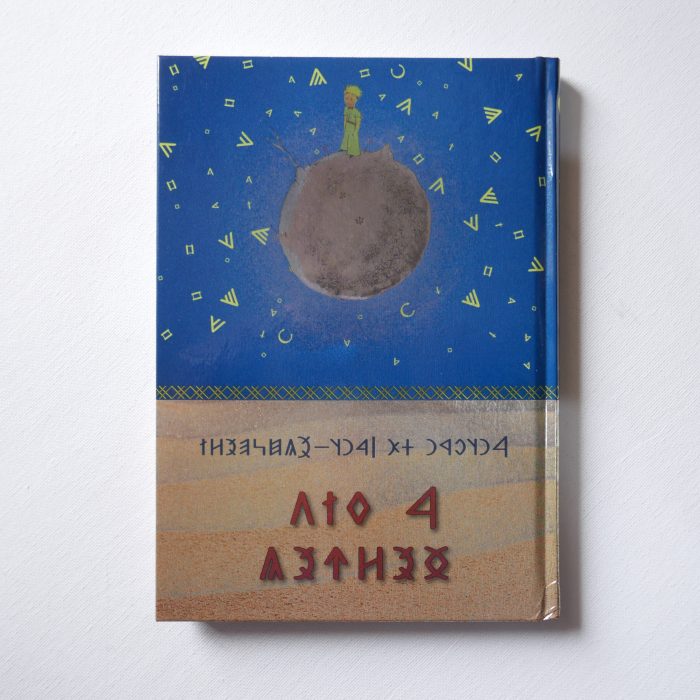
A Kis Herceg, in Hungarian language, written in the Old Hungarian script (Hungarian: rovásírás). Today Hungarian is predominantly written using the Latin-based Hungarian alphabet, but the Old Hungarian script is still in use in some communities. The Old Hungarian script is a child system of the Old Turkic alphabet.
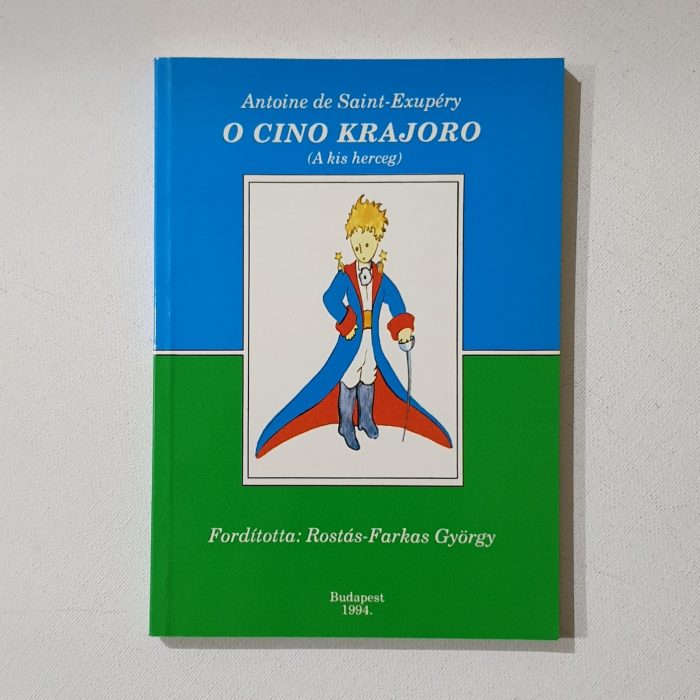
O Cino Krajoro — in Romani language, which is a language of the Romani people belonging to the Indo-Aryan branch of the Indo-European language family. There are seven varieties of Romani that are divergent enough to be considered languages of their own. Some Romani communities speak mixed languages based on the surrounding language with retained Romani-derived vocabulary – these are known by linguists as Para-Romani varieties, rather than dialects of the Romani language itself. Since this book is published in Budapest, I put this book in Hungary section.
პატარა პრინცი (Patara Uplistsuli) — in Georgian (ქართული ენა / Kartuli Ena), which is the official language of Georgia (საქართველო / Sakartvelo). Georgian is written in its own writing system, i.e. the Georgian script. Georgian is the literary language for all regional subgroups of Georgians, including those who speak other Kartvelian languages: Svans, Mingrelians and the Laz.
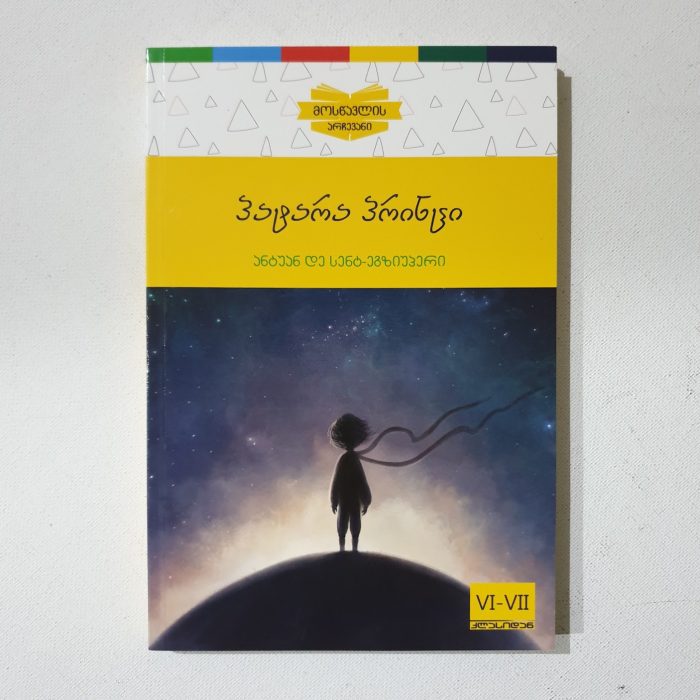
პატარა პრინცი (Patara Uplistsuli) — in Georgian
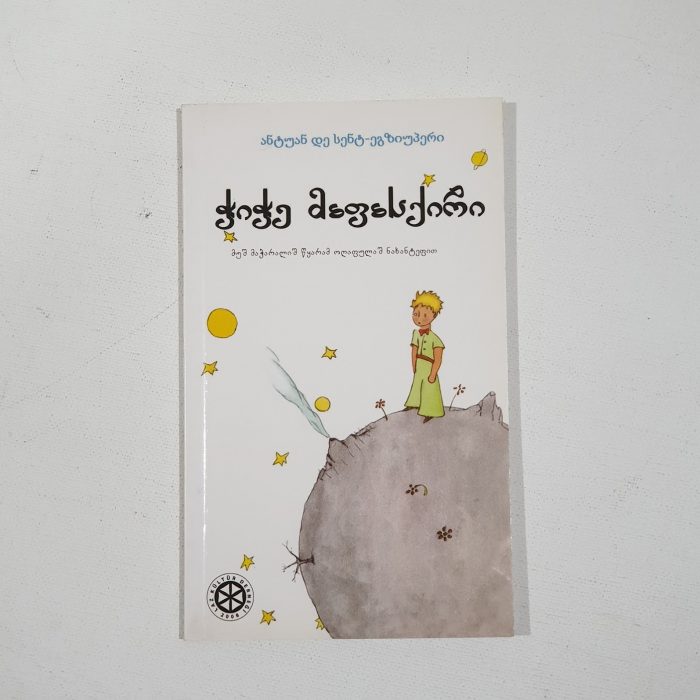
ჭიჭე მაფასქირი / Chiche Mapaskiri — in Mingrelian / Megrelian / მარგალური ნინა, which is a Kartvelian language spoken in Western Georgia (regions of Samegrelo and Abkhazia), primarily by the Mingrelians.
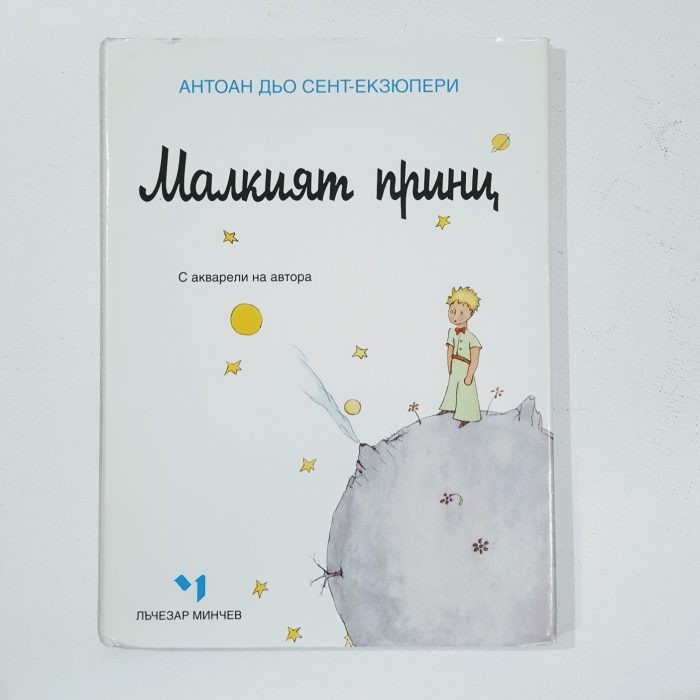
Малкият принц — in Bulgarian language, a member of the Southern branch of the Slavic language family. Bulgarian, along with the closely related Macedonian language (collectively forming the East South Slavic languages), has several characteristics that set it apart from all other Slavic languages: changes include the elimination of case declension, the development of a suffixed definite article, and the lack of a verb infinitive, but it retains and has further developed the Proto-Slavic verb system. Various evidential verb forms exist to express unwitnessed, retold, and doubtful action.
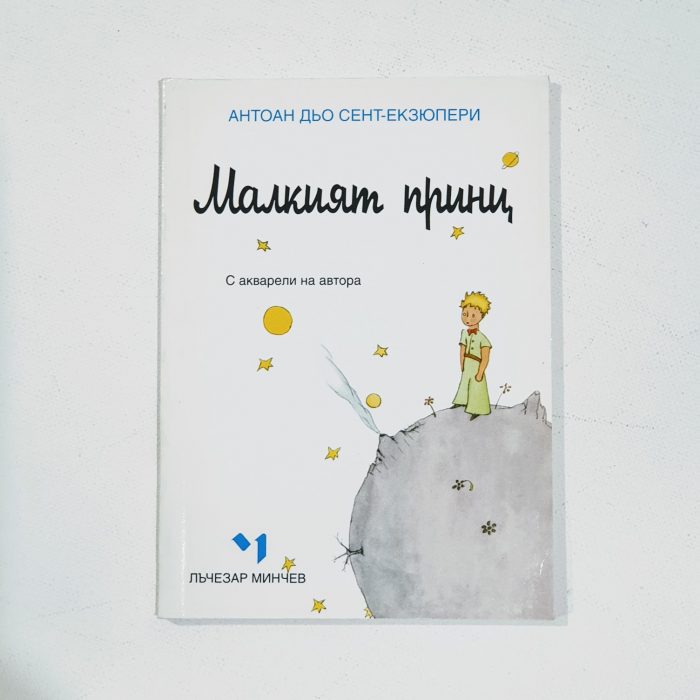

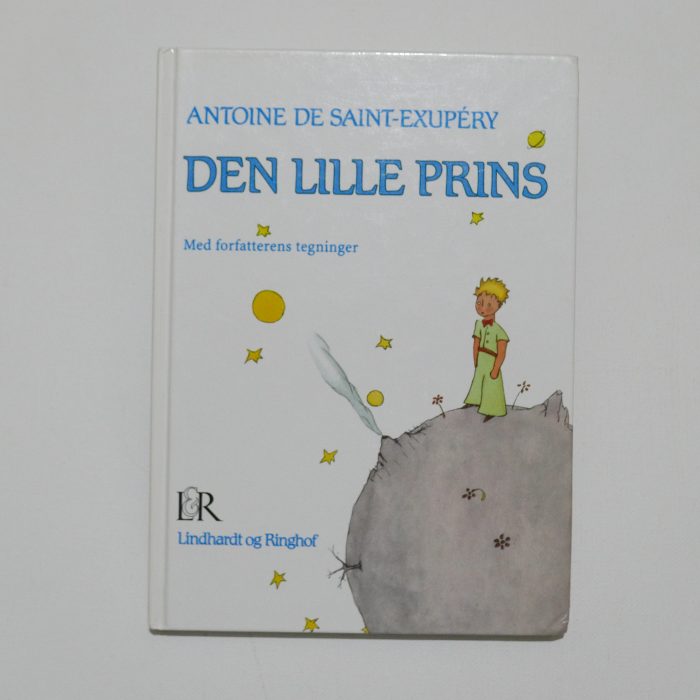
Den Lille Prins — in Danish
Den Lille Prins — in Danish
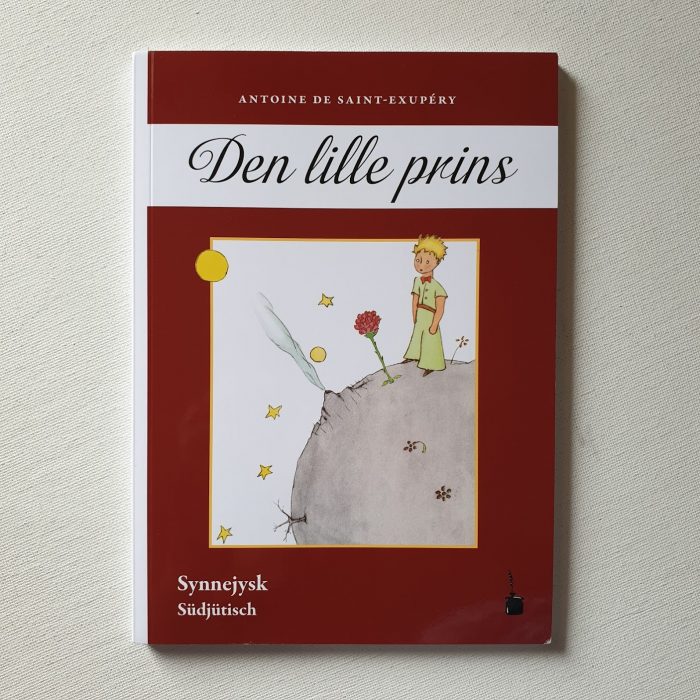
Den Lille Prins — in South Jutlandic / South Jutish / Synnejysk / Sønderjysk / Südjütisch / Plattdänisch dialect of the Danish language. South Jutlandic is spoken in Southern Jutland / Sønderjylland / Schleswig / Slesvig on both sides of the border between Denmark and Germany.

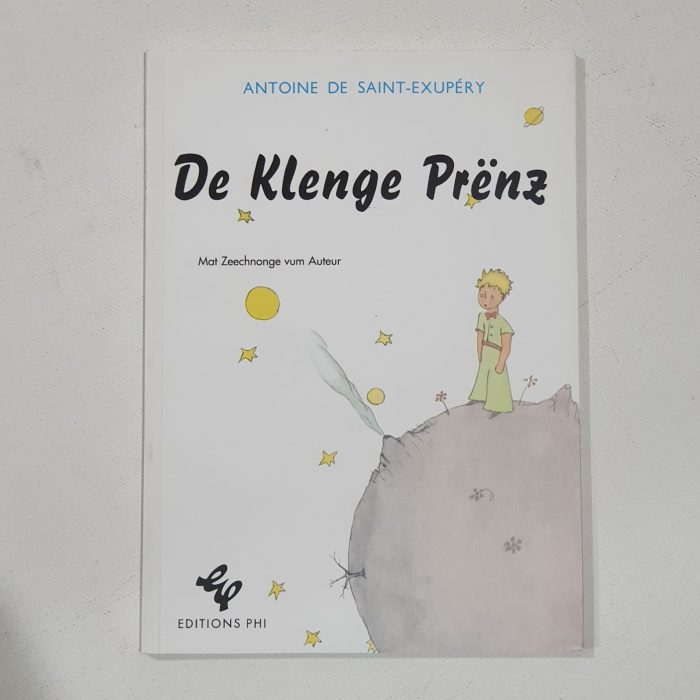
De Klenge Prënz, in Luxembourgish.
This is one of only a small number of books I bought in the country of publication, or where the language is officially spoken. I bought this book after a congress in Amsterdam, then paid a small visit to Luxembourg. A small yet beautiful country, it is.
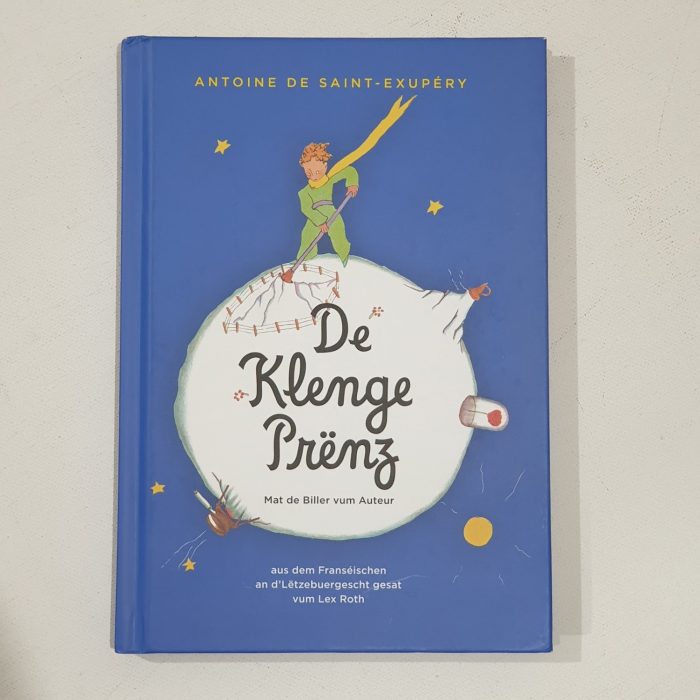
De Klenge Prënz, in Luxembourgish – another edition
Ri Ch’uti’ajpop — in the Kaqchikel language (or Cakchiquel / Cachiquel), which is an indigenous Mesoamerican language and a member of the Quichean–Mamean branch of the Mayan languages family. It is spoken by the indigenous Kaqchikel people in central Guatemala. It is closely related to the K’iche’ (Quiché) and Tz’utujil languages. Kaqchikel is taught in public schools through Guatemala’s intercultural bilingual education programs.
Tunkalenmaane — in Soninke, a Mande language spoken by the Soninke people of Africa. The language has an estimated 1 million speakers, primarily located in Mali, and also (in order of numerical importance of the communities) in Senegal, Ivory Coast, The Gambia, Mauritania, Guinea-Bissau, Guinea and Ghana. It enjoys the status of a national language in Mali, Senegal, The Gambia and Mauritania.
The language is relatively homogeneous, with only slight phonological, lexical, and grammatical variations.

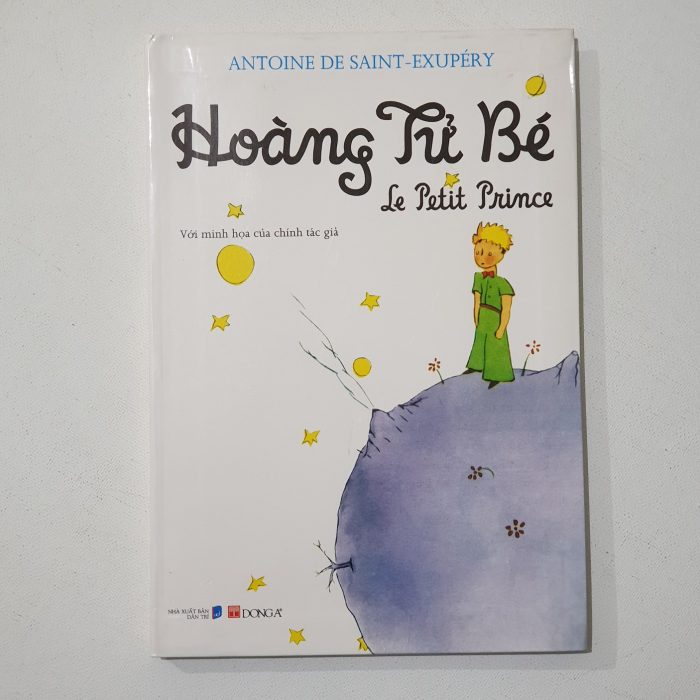
Hoàng Tử Bé, in Vietnamese.
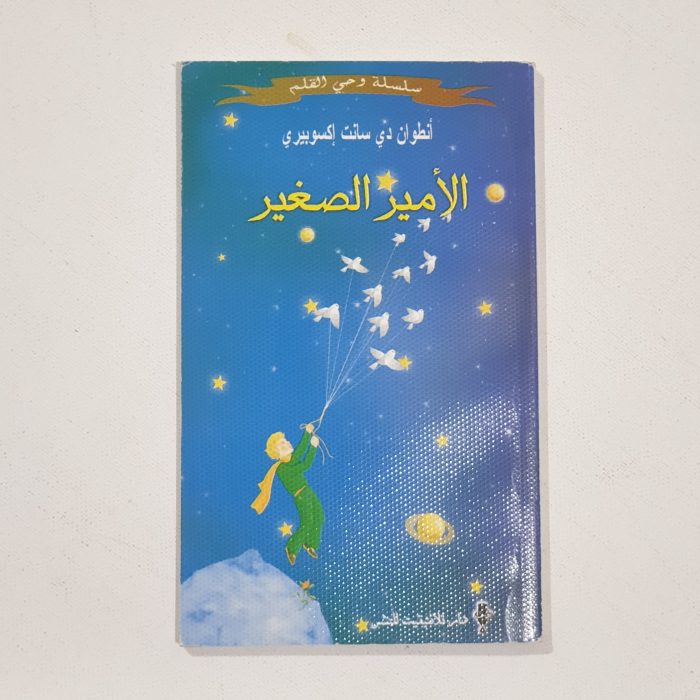
الأمير الصغير — in Arabic dialect spoten in Algier.
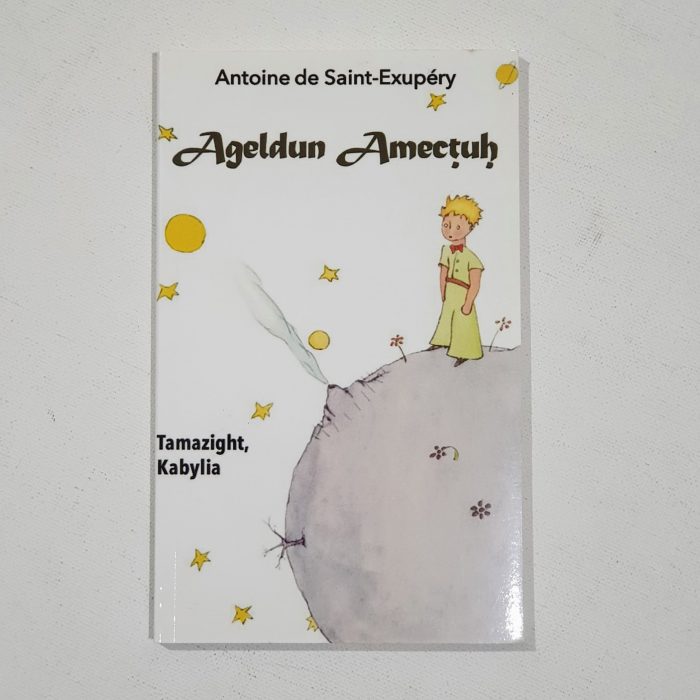
Ageldun Amecṭuḥ — in Berber Kabyle language spoken by a Berber ethnic group indigenous to Kabylia in the north of Algeria, spread across the Atlas Mountains, one hundred miles east of Algiers. They represent the largest Berber-speaking population of Algeria and the second largest in the continent of Africa.

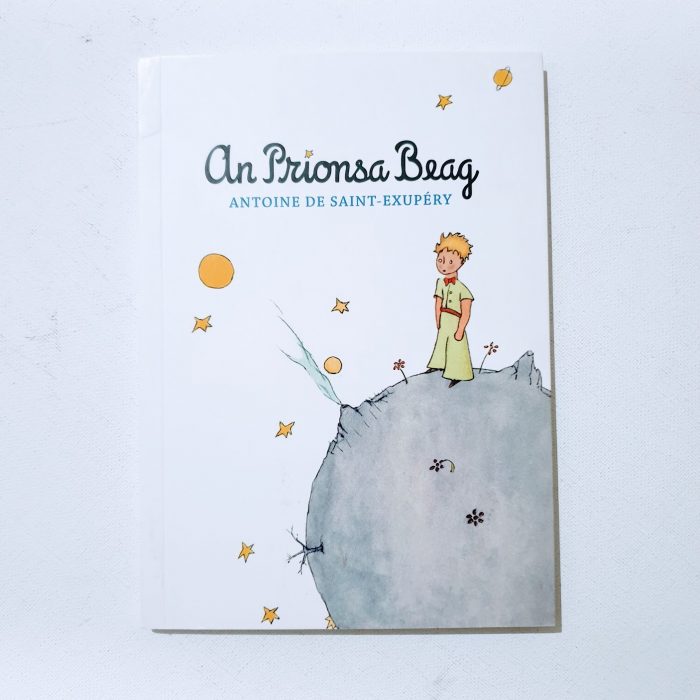
An Prionsa Beag, in an Irish Celtic language used in Ireland.
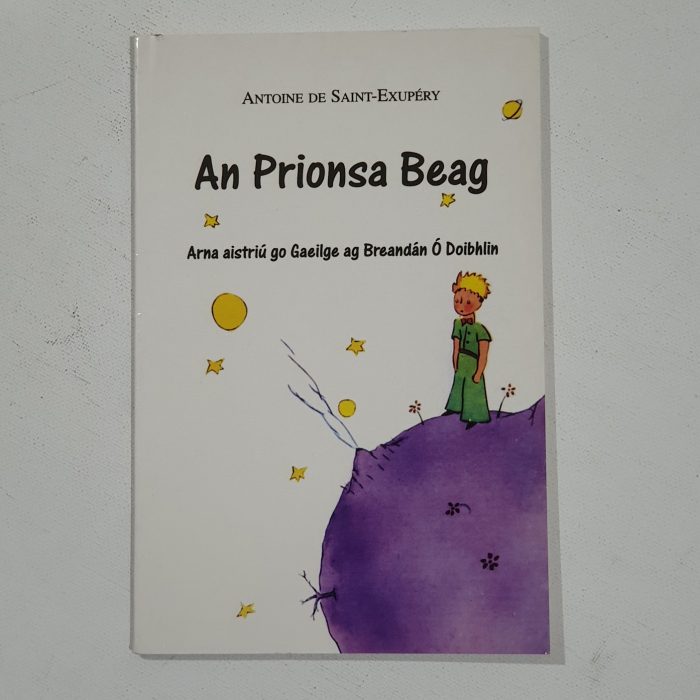

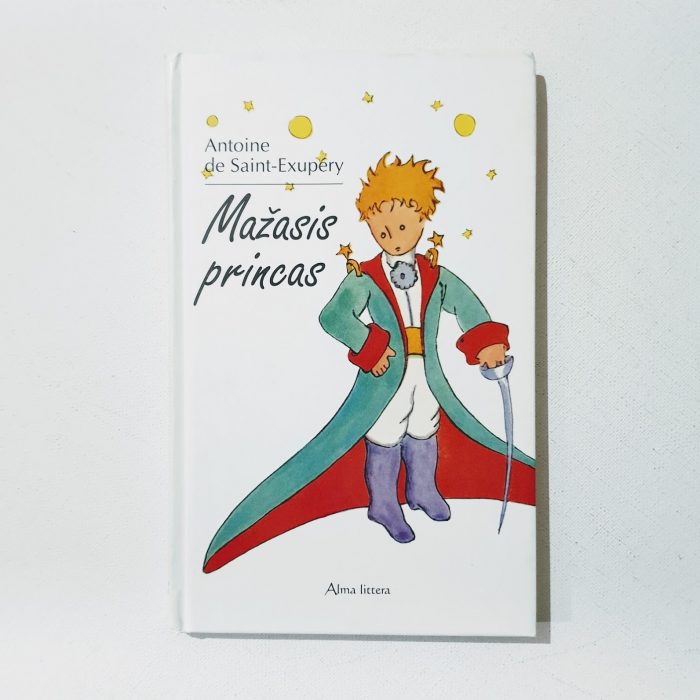
Mažasis Princas, in Lithuanian. Lithuanian is a Baltic language spoken in the Baltic region. It is the language of Lithuanians and the official language of Lithuania as well as one of the official languages of the European Union. There are about 2.9 million native Lithuanian speakers in Lithuania and about 200,000 abroad.
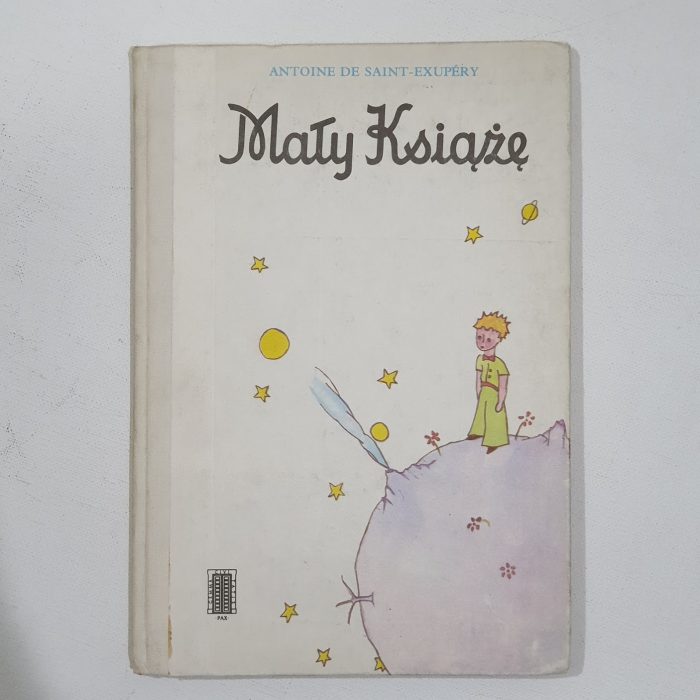
Mały Książę — in Polish
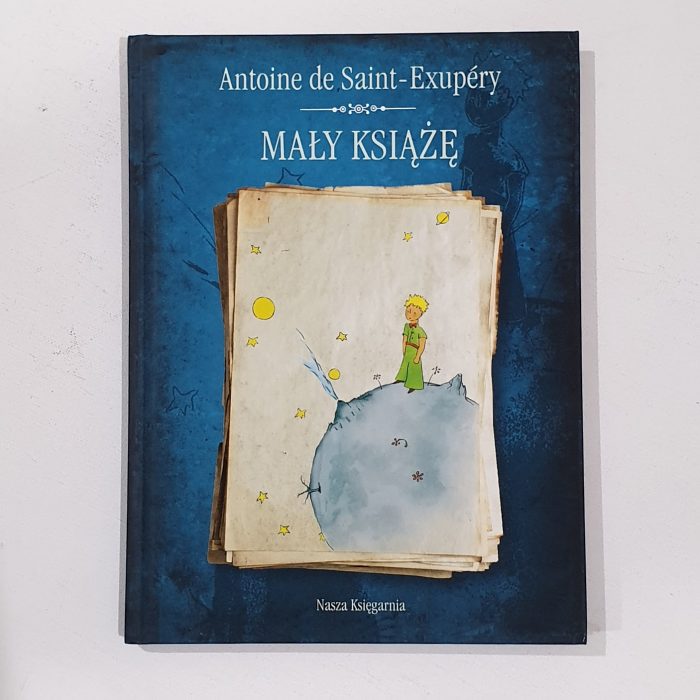
Mały Książę — in Polish
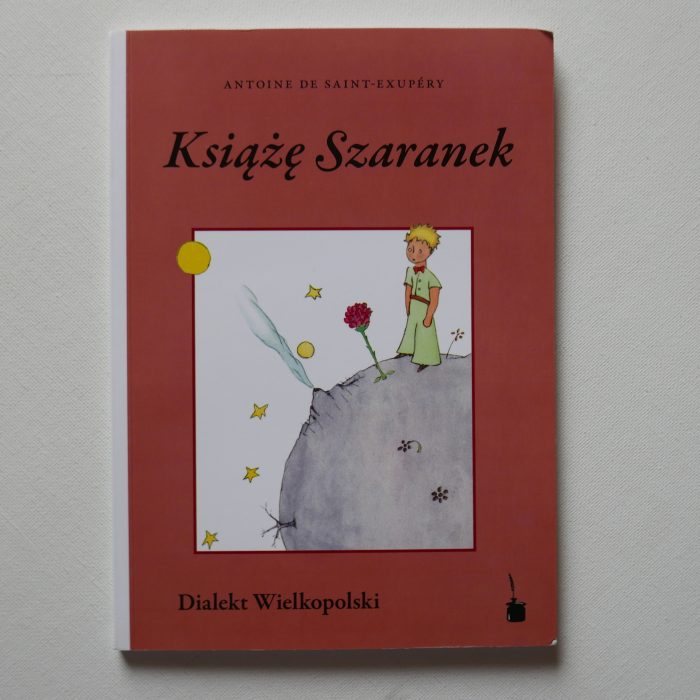
Książę Szaranek – in Wielkopolski dialect in a region named Greater Poland / Wielkopolska, which is a historical region of west-central Poland.

Mały Princ — in Silesian / Ślōnskŏ Gŏdka / Ślůnsko Godka / Slezština / Gwara Śląska / Wasserpolnisch, which is a West Slavic dialect, part of Lechitic group. Its vocabulary has been significantly influenced by Central German due to the existence of numerous Silesian German speakers in the area prior to World War II and after, until the 1990s. It is spoken in Upper Silesia and partly in Czech Silesia. While generally regarded as one of the four major dialects of Polish, it is sometimes classified as a distinct language.
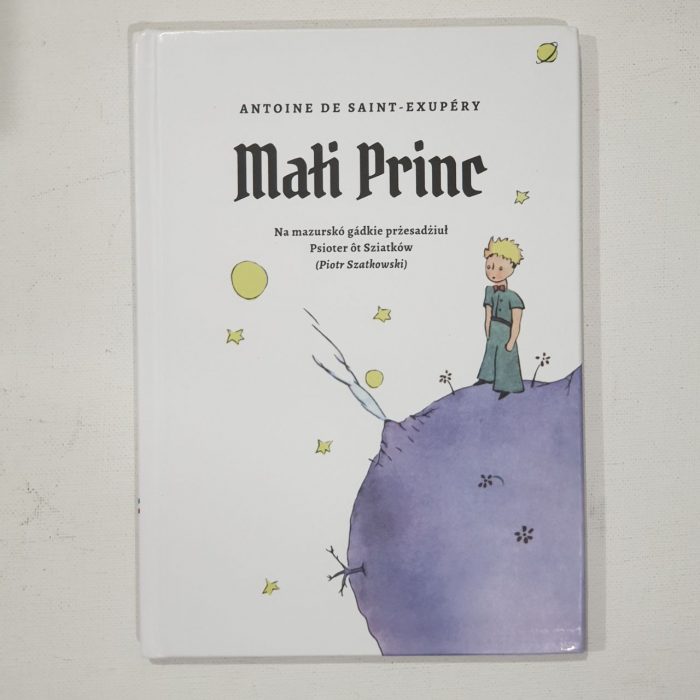
Małi Princ — in Masurian ethnolect / Mazurská gádkä / Mazurski, a language spoken by Masurians in a part of East Prussia that is now in Poland.
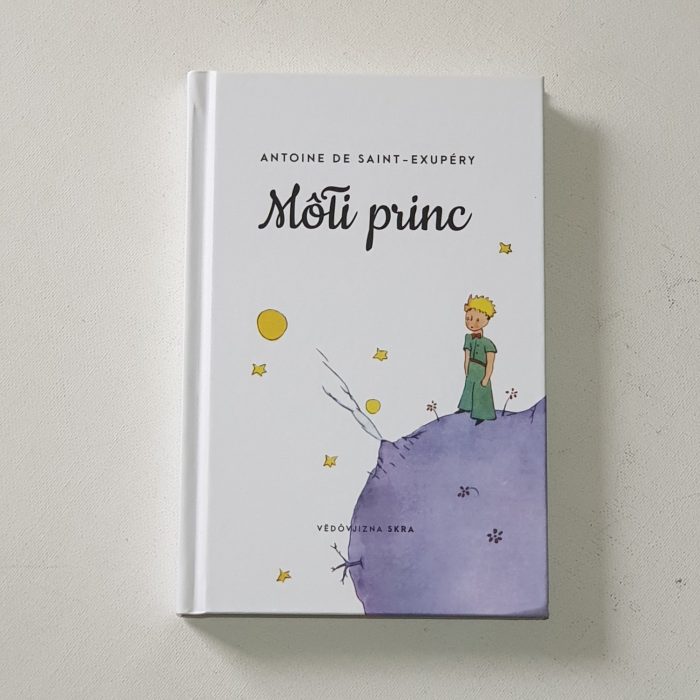
Môłi Princ — in Kashubian language spoken in North-Central Poland. Kashubian or Cassubian is a West Slavic lect belonging to the Lechitic subgroup along with Polish and Silesian. Although often classified as a language in its own right, it is sometimes viewed as a dialect of Polish.

Малий Прінц (Maly Printz) — in Rusyn or Ruthenian language, which is a Slavic language spoken by the Rusyns of Eastern Europe, including Poland. The Rusyn variety of Poland is generally known as Lemko. In Poland, the Lemko community live in a stretch of the Carpathian Mountains known as Lemkivshchyna.

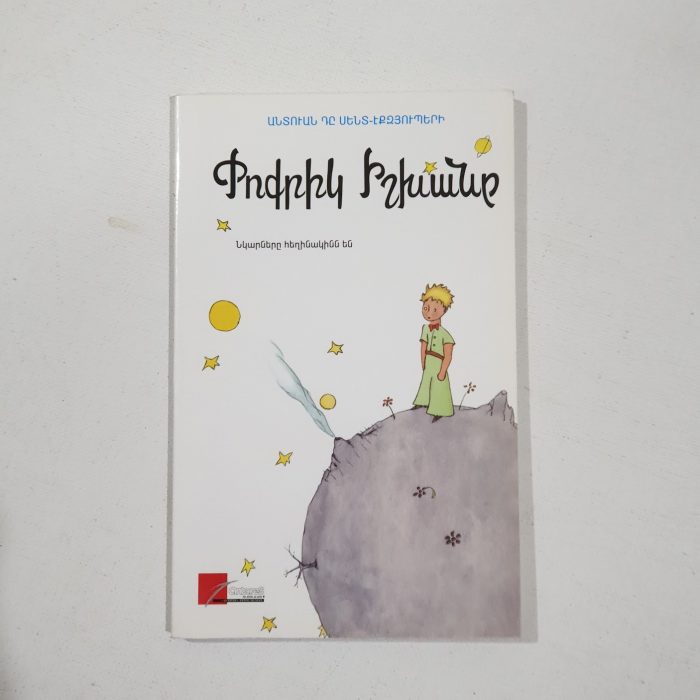
Փոքրիկ իշխանը / Pokrig Ishkhane — in Armenian. The Armenian language (classical: հայերէն; reformed: հայերեն [hɑjɛˈɾɛn] hayeren) is an Indo-European language spoken primarily by Armenians. It is the official language of Armenia.
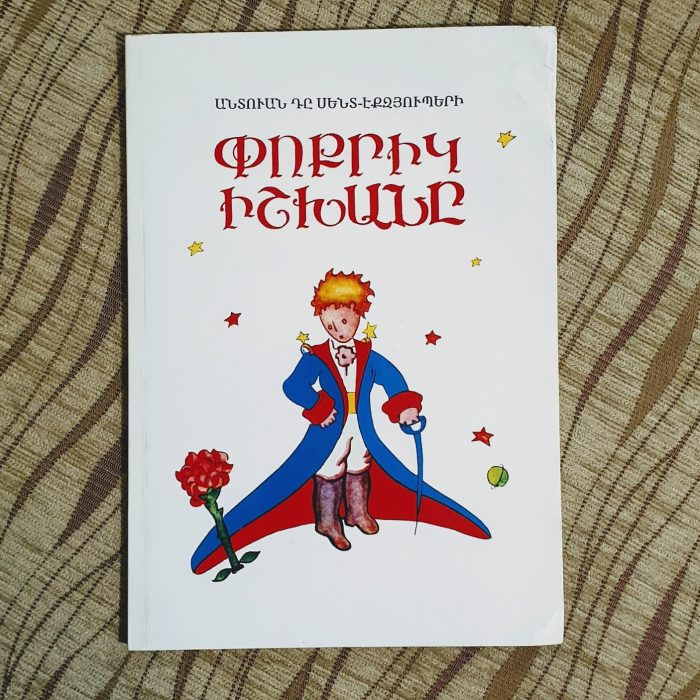
Փոքրիկ իշխանը / Pokrig Ishkhane — also in Armenian.
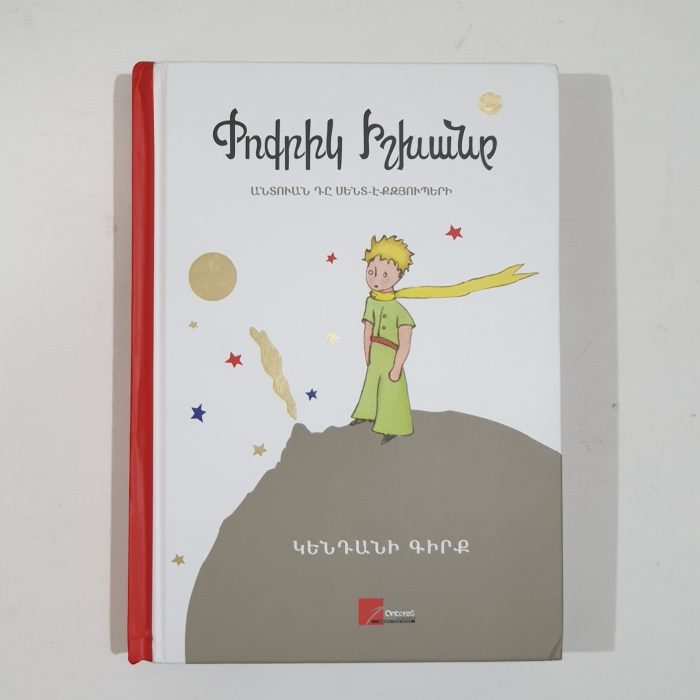
Armenia. This country somehow reminds me to a story written by William Saroyan: The Summer of the Beautiful White Horse. A character named John Byro said in this story, “A suspicious man would believe his eyes instead of his heart.” It reminds you to the fox, isn’t it?
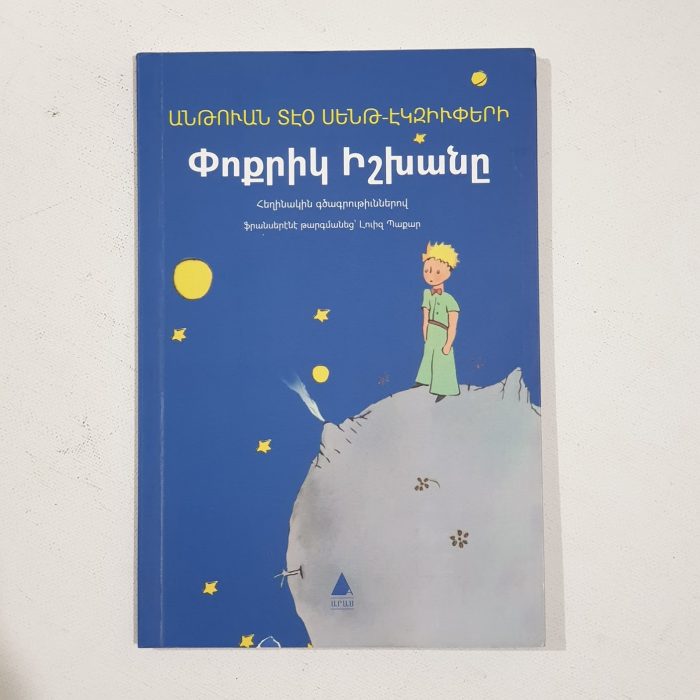
Փոքրիկ իշխանը / Pokrig Ishkhane — in West Armenian.
Until the early 20th century, various Western Armenian dialects were spoken in the Ottoman Empire, especially in the eastern regions historically populated by Armenians known as Western Armenia. Following the extermination of the Armenian population during the Armenian Genocide of 1915 Standard Western Armenian is now spoken, almost exclusively, in the Armenian diaspora communities around the world, while the spoken or dialectal varieties of Western Armenian currently in use include Homshetsi, spoken by the Hemshin peoples; the dialects of Armenians of Kessab (Քեսապի բարբառ), Latakia and Jisr al-Shughur (Syria), Anjar, Lebanon, and Vakıflı, Samandağ (Turkey), part of the “Sueidia” dialect (Սուէտիայի բարբառ). Forms of the Karin dialect of Western Armenian are spoken by several hundred thousand people in Northern Armenia, mostly in Gyumri, Artik, Akhuryan, and around 130 villages in the Shirak province, and by Armenians in Samtskhe–Javakheti province of Georgia (Akhalkalaki, Akhaltsikhe).
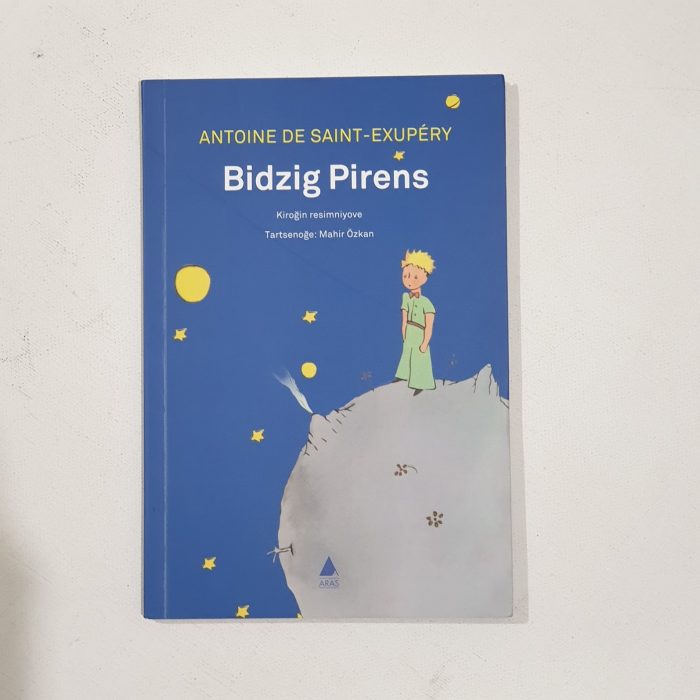
Bidzig Pirens — in West Armenian

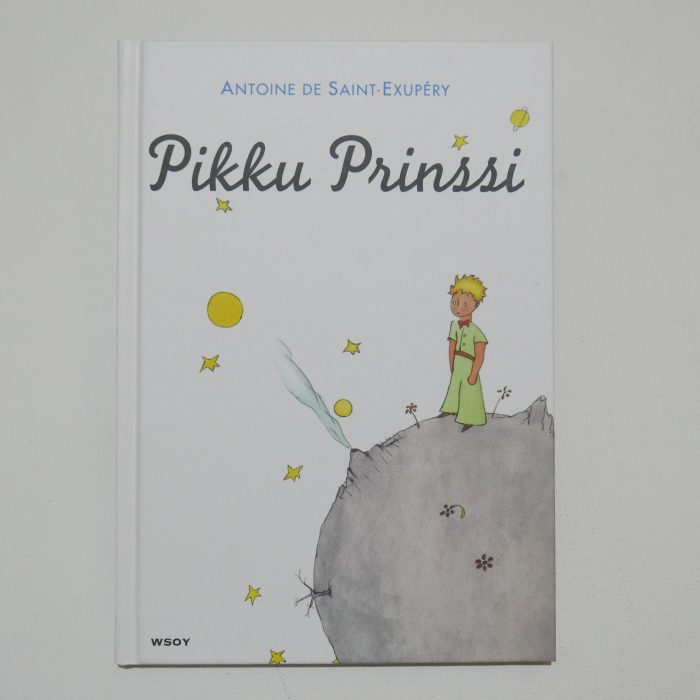
Pikku Prinssi, in Finnish.
I bought this book in Helsinki, Finland.
What is Finland? A Baltic or Scandinavian country? They speak two official languages here: Finnish & Swedish, besides other European languages. The name Finland is a Swedish name; in Finnish, it is Suomi. But Helsinki is a Finnish name; in Swedish, it is Helsingfors.
Finnish (Suomi or Suomen Kieli) is a member of Uralic family of languages. The Uralic family consists of about of 38 languages spoken by approximately 25 million people, including the languages of Hungarian, Finnish, and Estonian; also the languages of Erzya, Moksha, Mari, Udmurt, Sami, and Komi, etc spoken in northern regions of Scandinavia and the Russian Federation.
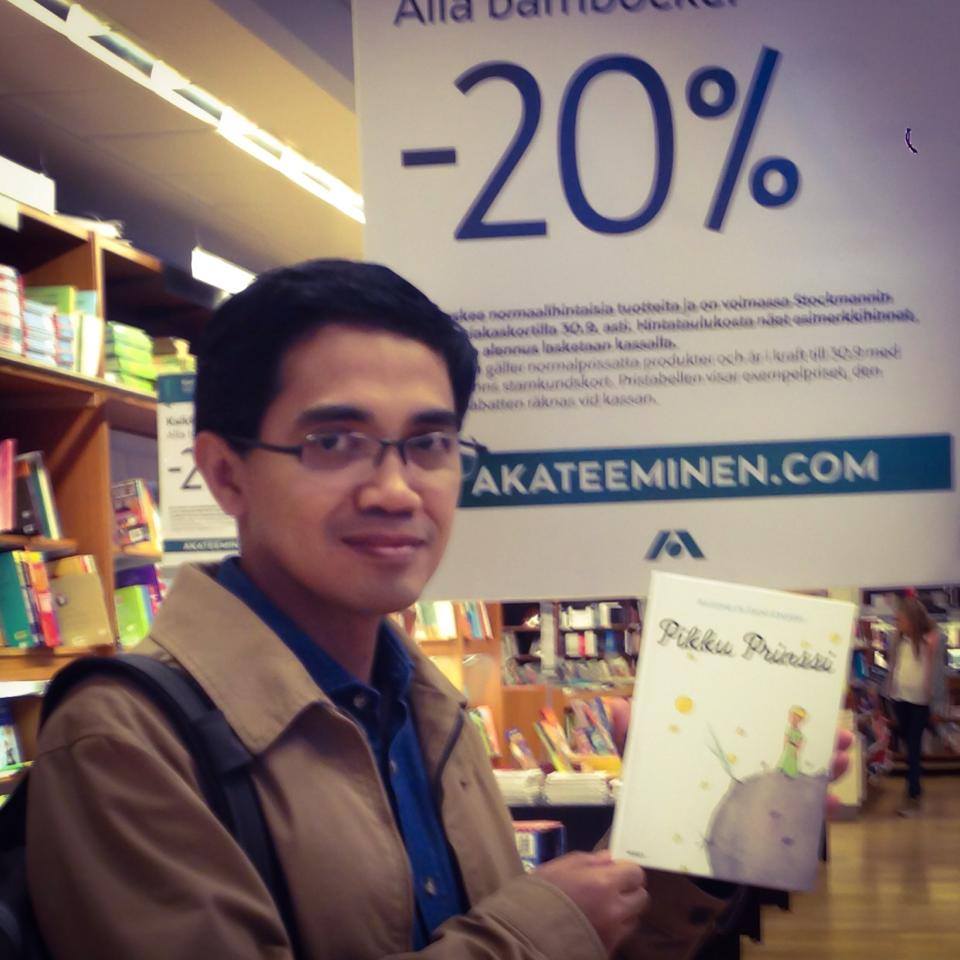
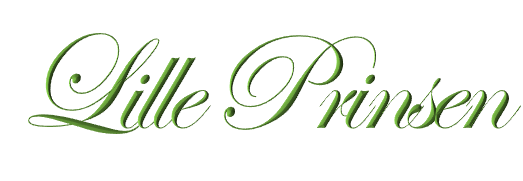
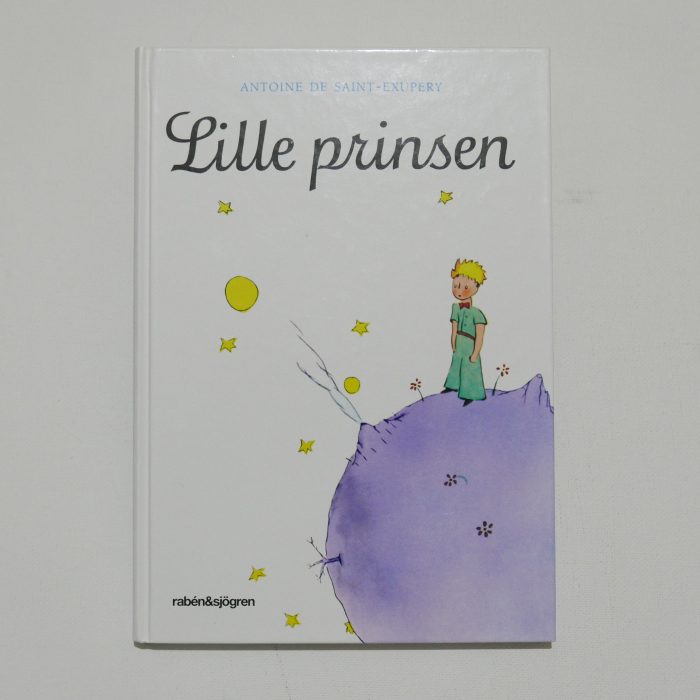
Lille Prinsen, in Swedish.
I bought this book in Helsinki. Besides Finnish, Swedish is also an official language in Finland.
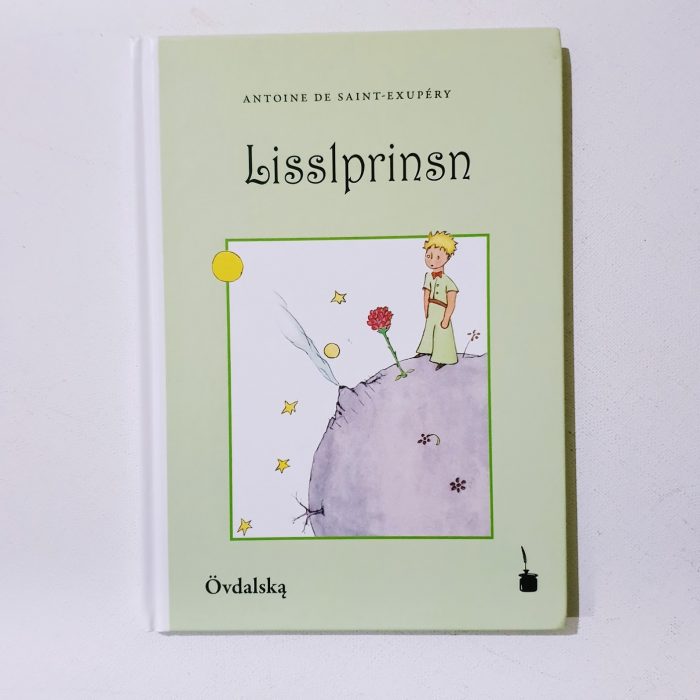
Lisslprinsn — in Elfdalian / Övdalian / Övdalsk / Övdalską / Älvdalska / Älvdalsmål, which is a North Germanic language spoken by up to 3,000 people living or having grown up in the locality of Älvdalen (Övdaln) located in the southeastern part of Älvdalen Municipality in northern Dalarna, Sweden.

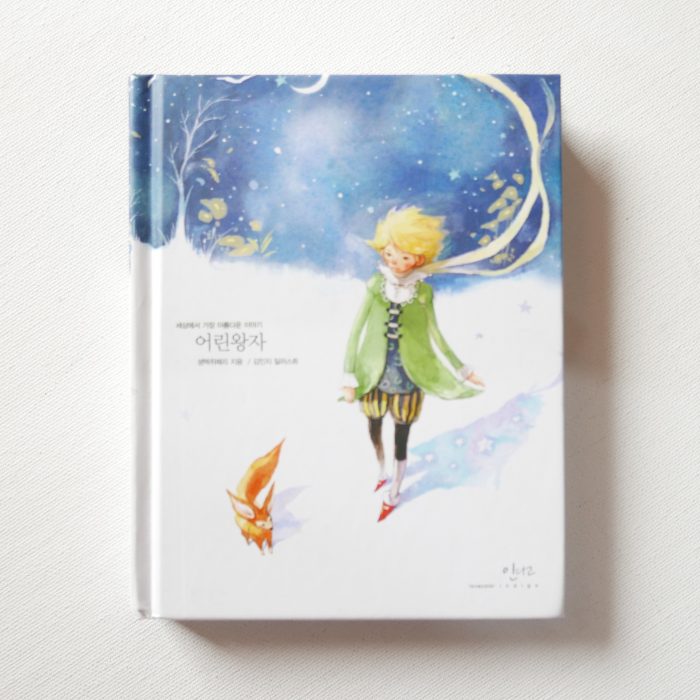
어린_왕자 — in Korean language. The Korean language is the official and national language of both Koreas: North Korea and South Korea, with different standardised official forms used in each territory. Historical and modern linguists classify Korean as a language isolate; however, it does have a few extinct relatives, which together with Korean itself and the Jeju language (spoken in the Jeju Province and considered somewhat distinct) form the Koreanic language family. The idea that Korean belongs to the controversial Altaic language family is discredited in academic research.
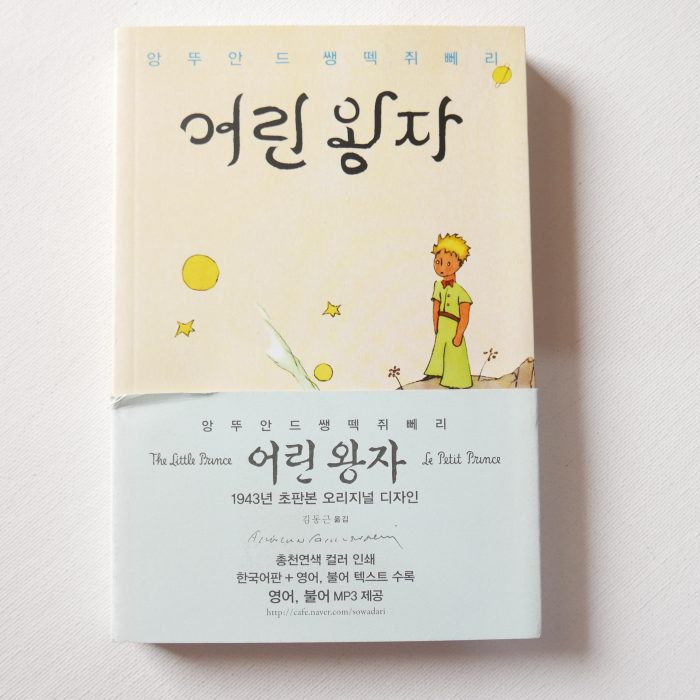
어린_왕자
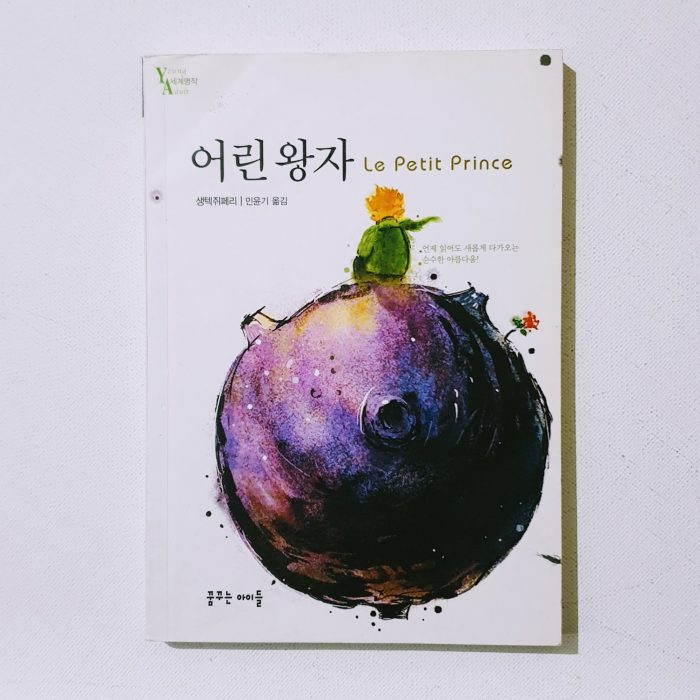
어린_왕자

குட்டி இளவரசன் (Kutti Ilavarasan) — in Tamil, a Dravidian language predominantly spoken by the Tamil people of India and Sri Lanka. Tamil is an official language of two countries: Sri Lanka and Singapore and official language of the Indian state Tamil Nadu. Tamil is also spoken by significant minorities in the four other South Indian states of Kerala, Karnataka, Andhra Pradesh and Telangana and the Union Territory of the Andaman and Nicobar Islands.
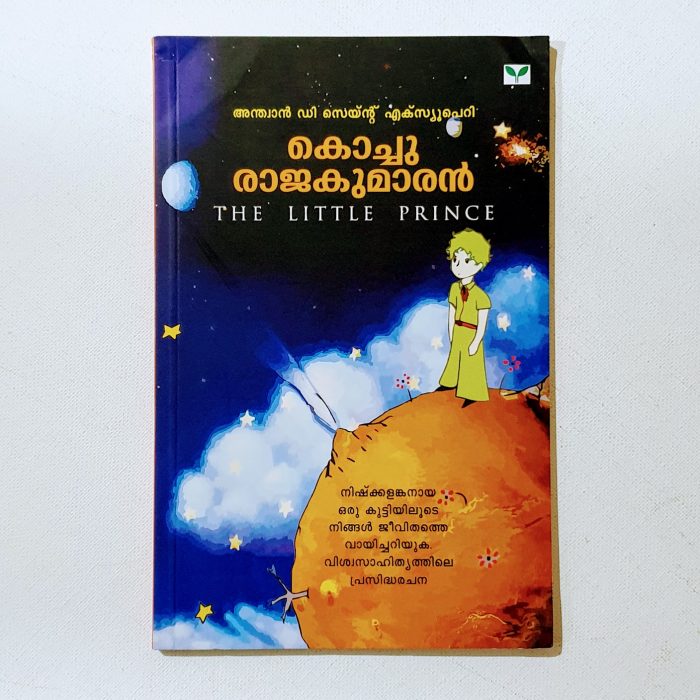
കൊച്ചുരാജകുമാരന് (Kochu Rajakumaran) — in Malayalam (മലയാളം), a Dravidian language spoken in the Indian state of Kerala and the union territories of Lakshadweep and Puducherry (Mahé) by the Malayali people, and it is one of 22 scheduled languages of India. Malayalam is spoken by 38 million people worldwide. Malayalam is also spoken by linguistic minorities in the neighbouring states; with significant number of speakers in the Nilgiris, Kanyakumari, and Coimbatore districts of Tamil Nadu, and Kodagu and Dakshina Kannada districts of Karnataka.
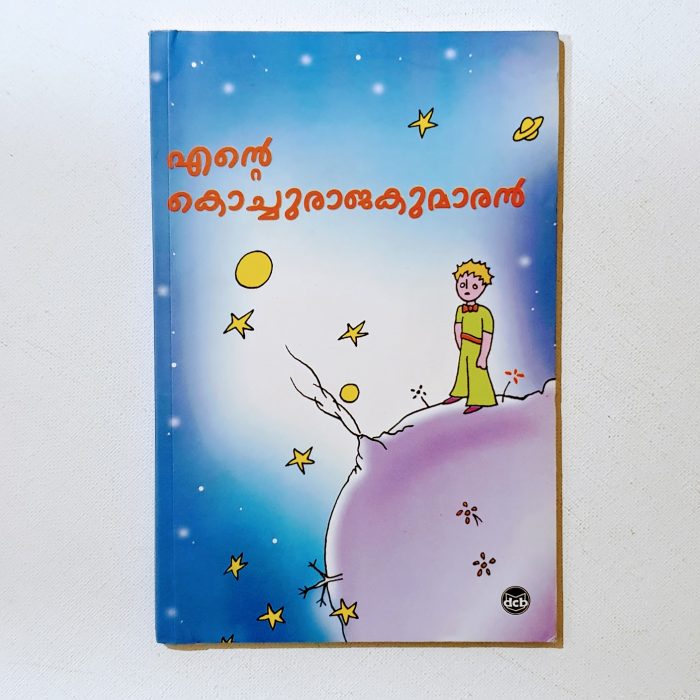
എന്റെ കൊച്ചുരാജകുമാരന് (Ente Kochu Rajakumaran)
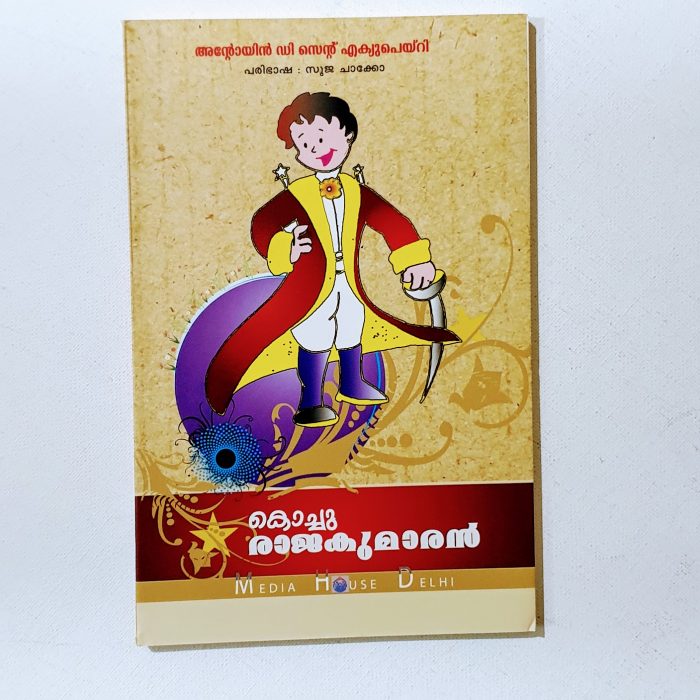
എന്റെ കൊച്ചുരാജകുമാരന് (Ente Kochu Rajakumaran)
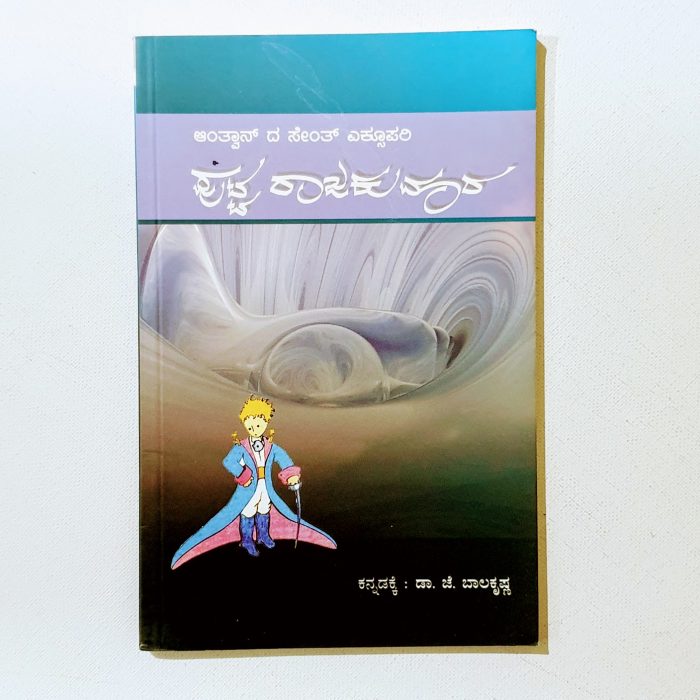
ಪುಟ್ಟ ರಾಜಕುಮಾರ (Putta Rajakumara) — in Kannada (ಕನ್ನಡ), is a Dravidian language spoken predominantly by Kannada people in India, mainly in the state of Karnataka, and by significant linguistic minorities in the states of Andhra Pradesh, Tamil Nadu, Telangana, Kerala and abroad. The language has roughly 43.7 million native speakers, who are called Kannadigas (Kannadigaru). The Kannada language is written using the Kannada script, which evolved from the 5th-century Kadamba script.
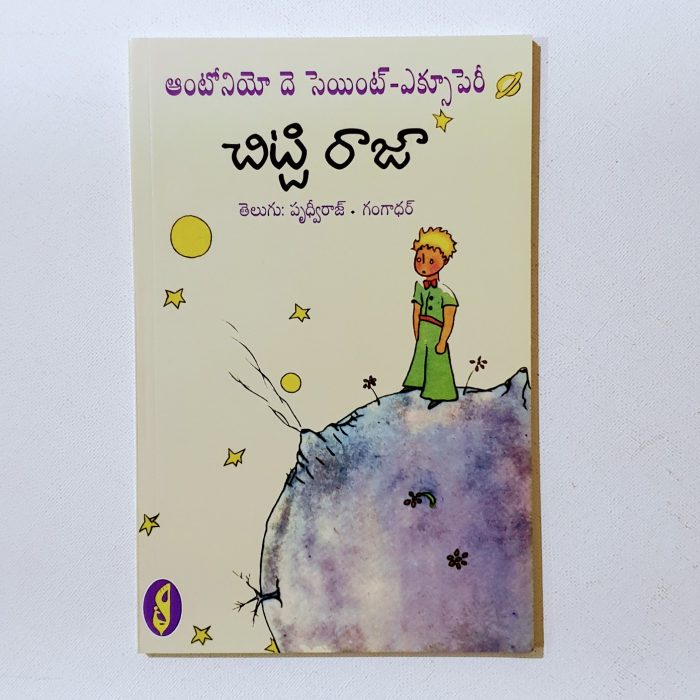
చిట్టి రాజా (Chitti Rājā) — in Telugu (తెలుగు), a Dravidian language spoken in the Indian states of Andhra Pradesh, Telangana and the union territories of Puducherry (Yanam) by the Telugu people. Telugu ranks fourth among the languages with the highest number of native speakers in India, with 6.93 percent at the 2011 census. It is the most widely spoken member of the Dravidian language family. It is one of the twenty-two scheduled languages of the Republic of India. Roughly 10,000 pre-colonial inscriptions exist in the Telugu language.
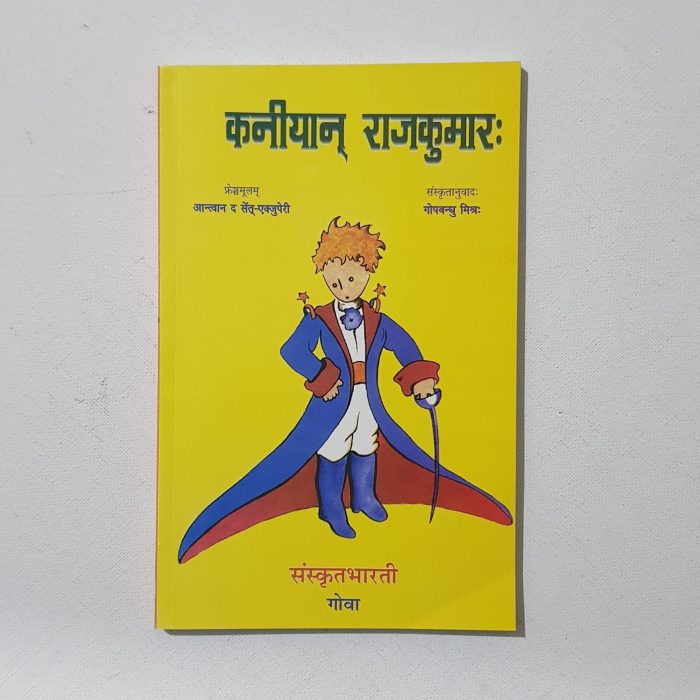
कनीयान् राजकुमारः (Kanīyān Rājakumāraḥ) — in Sanskrit. Sanskrit is a language of ancient India with a history going back about 3500 years (?). It is the primary liturgical language of Hinduism and the predominant language of most works of Hindu philosophy as well as some of the principal texts of Buddhism and Jainism. Sanskrit, in its variants and numerous dialects, was the lingua franca of ancient and medieval India.
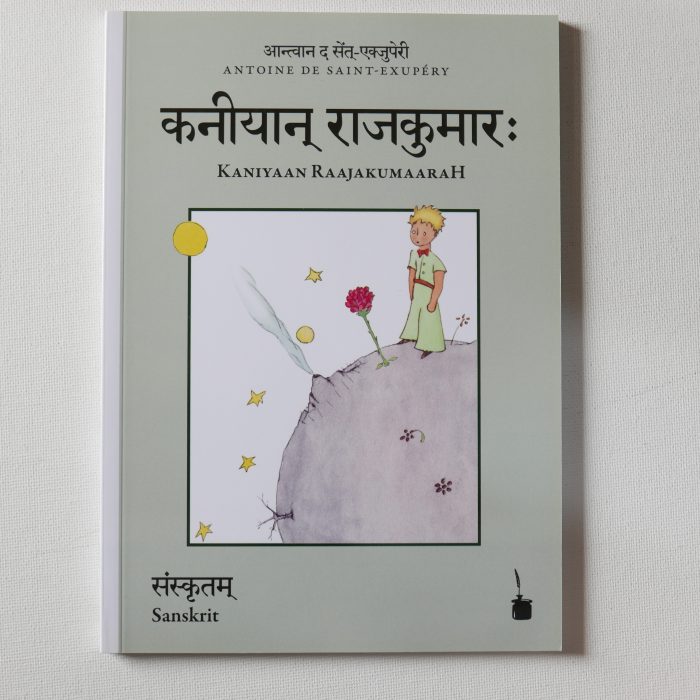
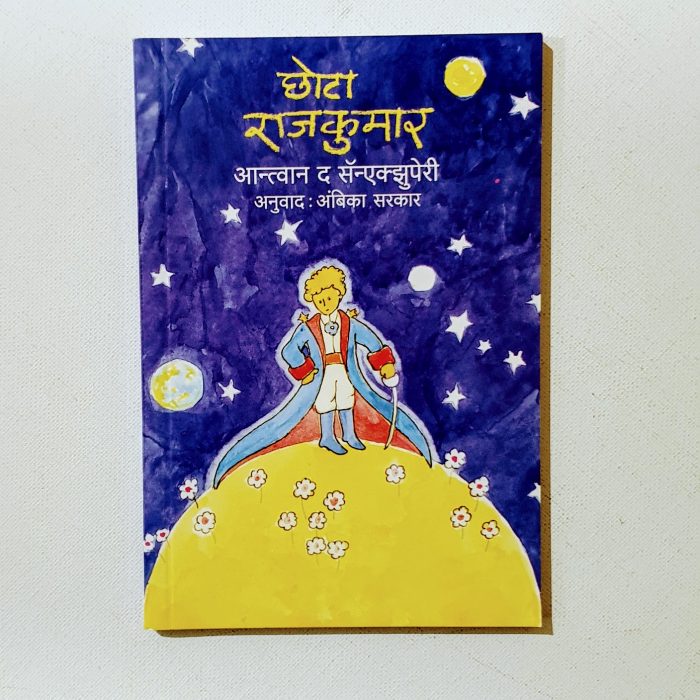
Chota Rajkumar — in Marathi, an Indo-Aryan language spoken predominantly by around 83 million Marathi people of Maharashtra, India. It is the official language and co-official language in the Maharashtra and Goa states of Western India, respectively, and is one of the 22 scheduled languages of India. Marathi distinguishes inclusive and exclusive forms of ‘we’ and possesses a three-way gender system that features the neuter in addition to the masculine and the feminine.

এখুদ ৰাজকুমাৰ (Ekhud Rajkumar) — in Assamese / Asamiya, an Eastern Indo-Aryan language spoken mainly in the Indian state of Assam, where it is an official language. It is the easternmost Indo-European language, spoken by over 15 million speakers, and serves as a lingua franca in the region.
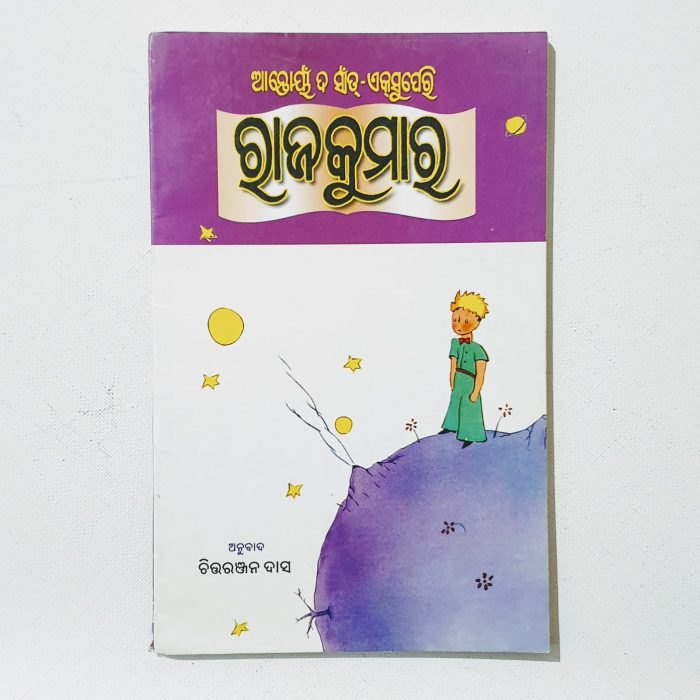
ରାଜକୁମାର (Rajkumar) — in Odiya or Oriya, a classical Indo-Aryan language spoken in the Indian state of Odisha. It is the official language in Odisha (Orissa) where native speakers make up 82% of the population.

Nikka Shahzada — in Punjabi. Punjabi / ਪੰਜਾਬੀ / پنجابی is an Indo-Aryan language with more than 100 million native speakers. It is the native language of the Punjabi people, an ethnic group of the cultural region of Punjab region of the Indian subcontinent, which extends from northwest India through eastern Pakistan. Punjabi is the most widely spoken language in Pakistan, the 11th most widely spoken language in India, and the third most-spoken native language in the Indian Subcontinent.
Punjabi is unusual among Indo-European languages in its use of lexical tone. The Punjabi language is written in one of two alphabets: Shahmukhi or Gurmukhi. In the Punjab, both writing systems are used (a rare occurrence called synchronic digraphia): Shahmukhi is used mainly by Punjabi Muslims, and Gurmukhi is used mainly by Punjabi Sikhs and Hindus.
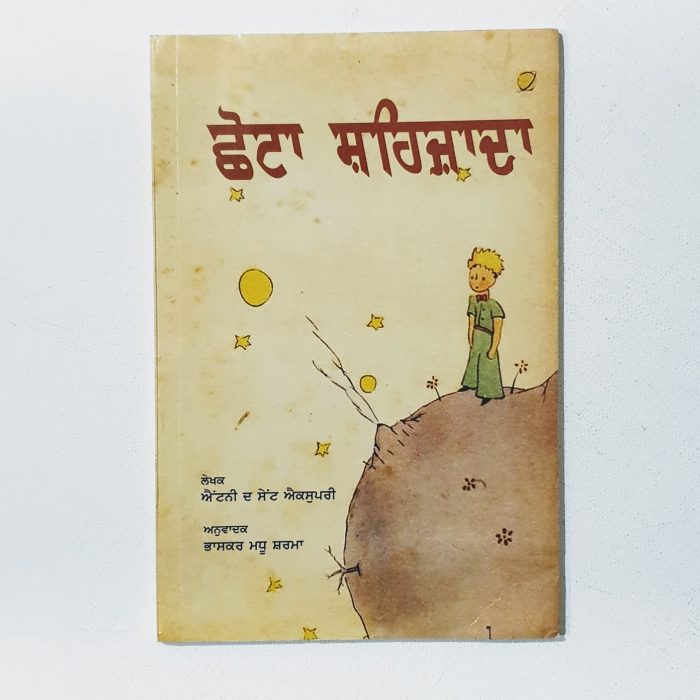
Nikka Shahzada — in Punjabi
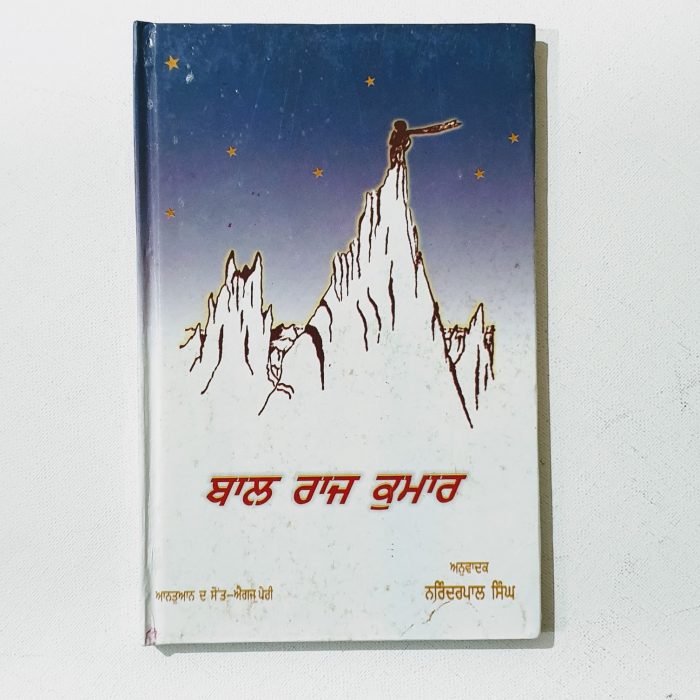
ਬਾਲ ਰਾਜ ਕੁਮਾਰ (Bal Rajkumar) — in Punjabi.
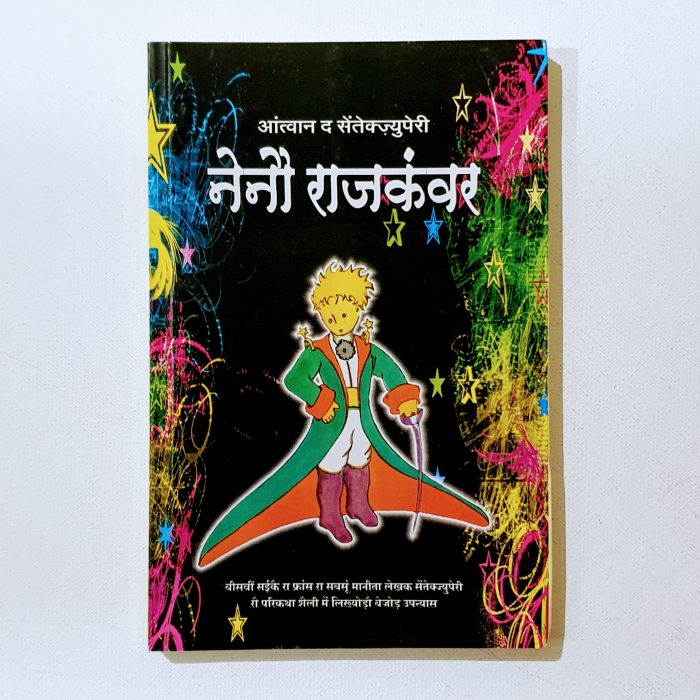
नैनो राजकंवर (Naino Rajkanwar) — in Rajasthani (राजस्थानी), a group of Indo-Aryan languages spoken primarily in the state of Rajasthan and adjacent areas of Haryana, Punjab, Gujarat, and Madhya Pradesh in India. There are also Rajasthani-speakers in the Pakistani provinces of Sindh and Punjab. The Rajasthani language is distinct from neighbouring related Hindi languages, however, it is officially considered to be a dialect of Hindi.
छोटा राजकुमार (Chotta Rajkumar) — in Hindi language. Hindi / हिन्दी is a standardised and sanskritised register of the Hindustani language. Hindi, written in the Devanagari script, is one of the official languages of India, along with the English language. It is one of the 22 scheduled languages of the Republic of India. However, it is not the national language of India because no language was given such a status in the Indian constitution.

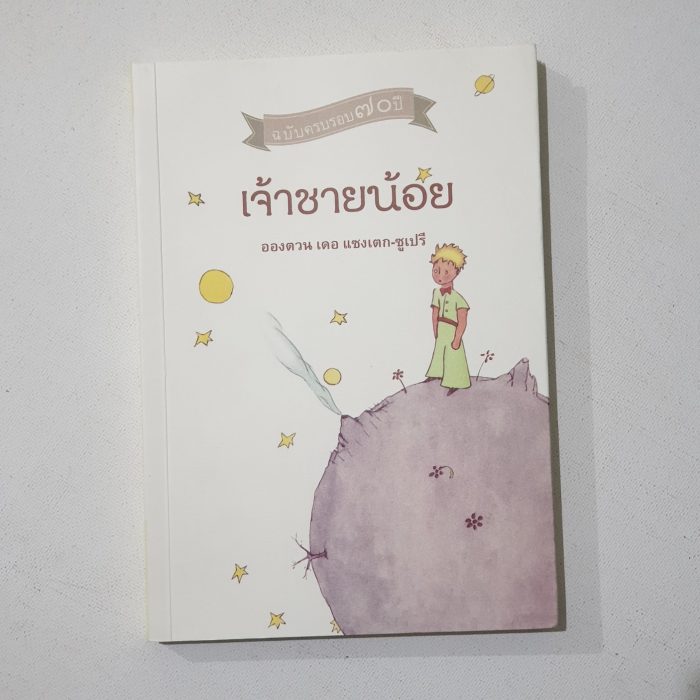
เจ้าชายน้อย / Jâau Chaai Nóoi, a translation of Le Petit Prince in Thai, which is the national language of Thailand.

เจ้าชายน้อย / Jâau Chaai Nóoi, another translation of Le Petit Prince in Thai.
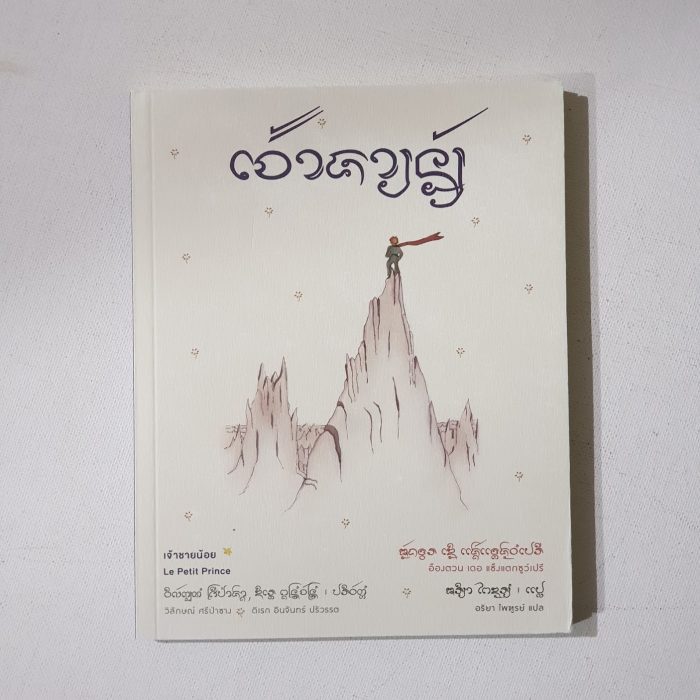
Chō Chāi Nī — A translation in the language of the Northern Thai people of Lanna, Thailand. It is a language that is phonotactically related to Lao. Northern Thai has approximately six million speakers, most of whom live in the native Northern Thailand, with a smaller community of approximately several thousand speakers in northwestern Laos.
Balaca Şahzadǝ — in Azerbaijani, which is a macrolanguage referring to two Turkic languages (North Azerbaijani and South Azerbaijani) that are spoken primarily by the Azerbaijanis, who live mainly in Transcaucasia and Iran. North Azerbaijani and South Azerbaijani have significant differences in phonology, lexicon, morphology, syntax, and loanwords. North Azerbaijani has official status in the Republic of Azerbaijan and Dagestan (a federal subject of Russia) but South Azerbaijani does not have official status in Iran, where the majority of Azerbaijanis live. It is also spoken to lesser varying degrees in Azerbaijani communities of Georgia and Turkey and by diaspora communities, primarily in Europe and North America.
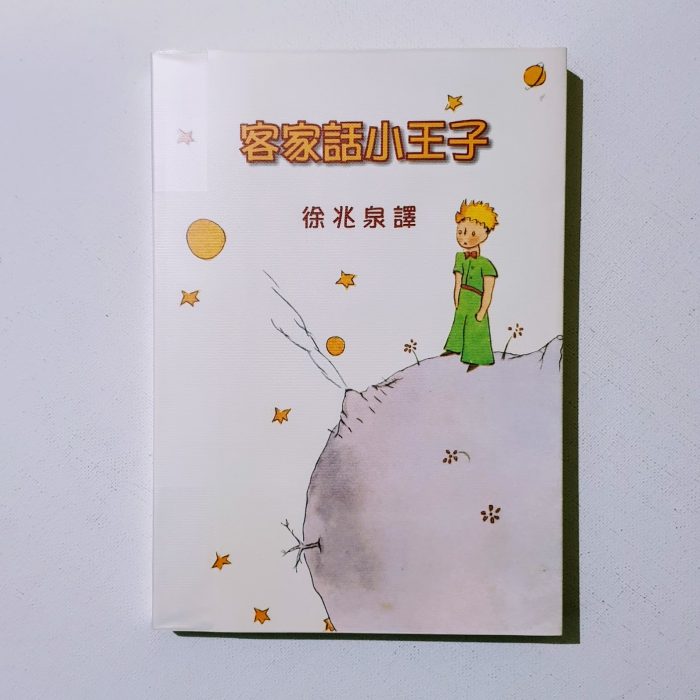
小王子 (Xiǎo Wáng Zǐ) — in Mandarin language. Mandarin / 官话 / 官話 is a group of related varieties of Chinese spoken across most of northern and southwestern China. The group includes the Beijing dialect, the basis of Standard Mandarin or Standard Chinese. Because Mandarin originated in North China and most Mandarin dialects are found in the north, the group is sometimes referred to as the Northern dialects (北方话). Many local Mandarin varieties are not mutually intelligible. Nevertheless, Mandarin is often placed first in lists of languages by number of native speakers (with nearly a billion).
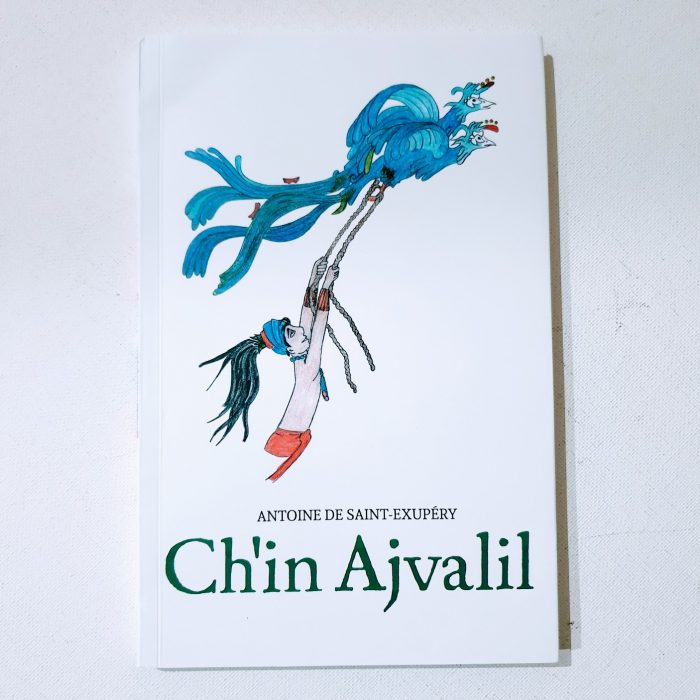
Ch’in Ajvalil — in Tzotzil language spoken by the Tzotzil, an indigenous Maya people of the central Chiapas highlands in southern Mexico. As of 2000, they numbered about 298,000.
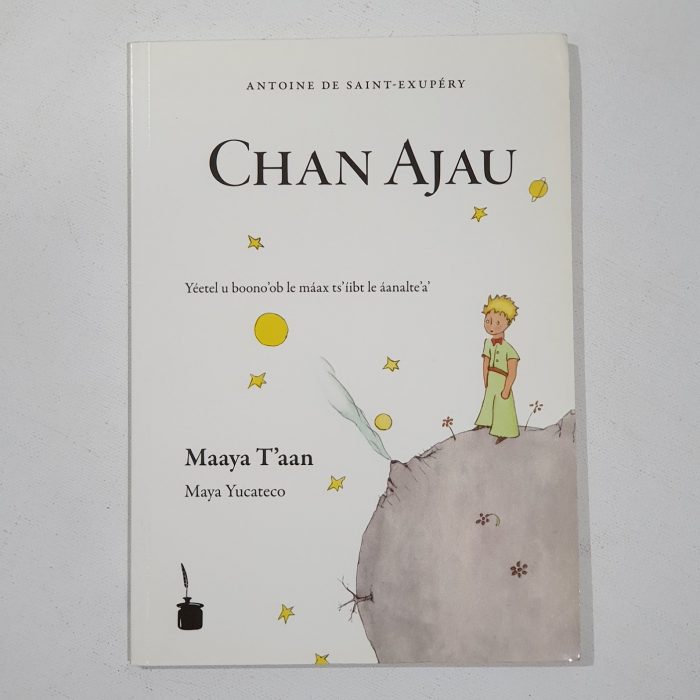
Chan Ajau — in Yucatec Maya, or called Màaya t’àan by its speakers. It is a Mayan language spoken in the Yucatán Peninsula and northern Belize. To native speakers, the proper name is Maya and it is known only as Maya. The qualifier Yucatec is a tag linguists use to distinguish it from other Mayan languages (such as K’iche’ and Itza’). In the Mexican states of Yucatán, some parts of Campeche, Tabasco, Chiapas, and Quintana Roo, Maya remains many speakers’ first language today, with 800,000 speakers. There are 6,000 speakers in Belize.
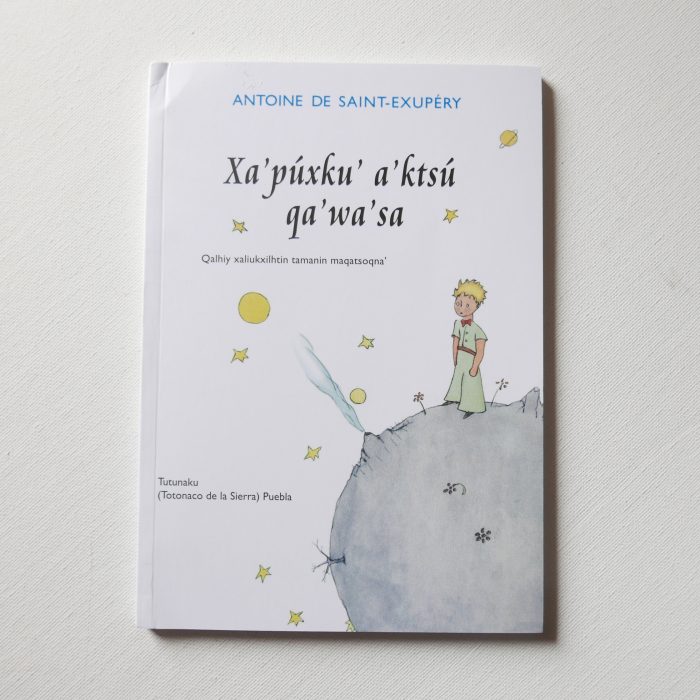
Xa’ púxku’ a’ktsú qa’wa’sa — in Sierra Totonac language. Sierra Totonac is a native American language complex spoken in Puebla and Veracruz, Mexico. One of the Totonacan languages, it is also known as Highland Totonac.
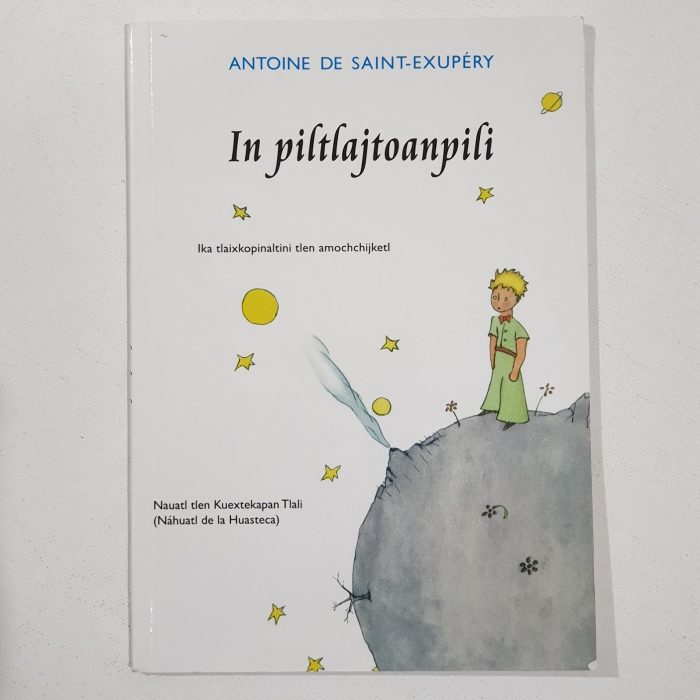
In Piltlajtoanpili — in Nahuatl (known historically as Aztec), which is a language or group of languages of the Uto-Aztecan language family. Varieties of Nahuatl are spoken by about 1.7 million Nahua peoples, most of whom live in central Mexico. Nahuatl has been spoken in central Mexico since at least the seventh century CE. It was the language of the Aztecs, who dominated what is now central Mexico during the Late Postclassic period of Mesoamerican history. During the centuries preceding the Spanish conquest of the Aztec Empire, the Aztecs had expanded to incorporate a large part of central Mexico, and their influence caused the variety of Nahuatl spoken by the residents of Tenochtitlan to become a prestige language in Mesoamerica. At the conquest, with the introduction of the Latin alphabet, Nahuatl also became a literary language, and many chronicles, grammars, works of poetry, administrative documents and codices were written in it during the 16th and 17th centuries. This early literary language based on the Tenochtitlan variety has been labeled Classical Nahuatl, and is among the most studied and best-documented languages of the Americas.
Inkosana Encane — in Zulu language, which is the language of the Zulu people, with about 10 million speakers, the vast majority (over 95%) of whom live in South Africa. Zulu is the most widely spoken home language in South Africa (24% of the population), and it is understood by over 50% of its population.
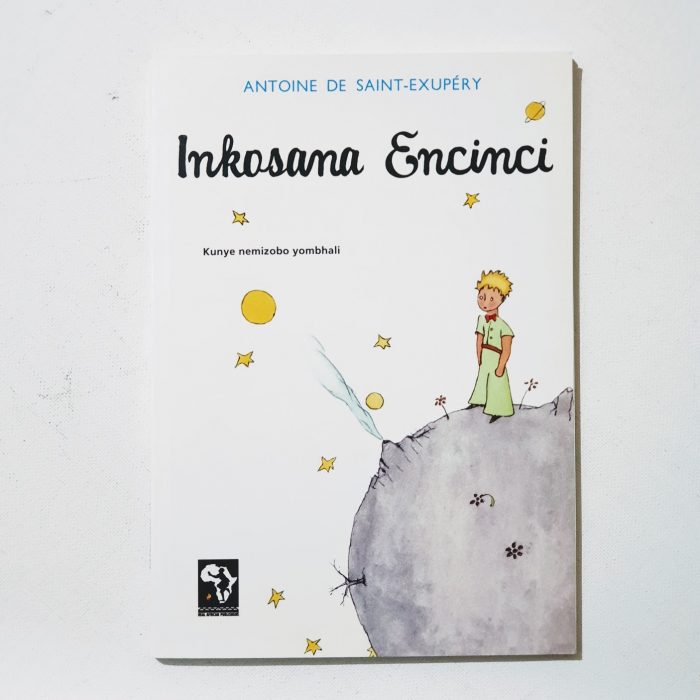
Inkosana Encinci — in Xhosa, which is a Nguni Bantu language with click consonants (“Xhosa” begins with a click) and is one of the official languages of South Africa. It is also an official language of Zimbabwe. “Xhosa is spoken as a first language by 8.2 million people and by 11 million as a second language in South Africa, mostly in Eastern Cape Province. Total number of users in all countries is 19.2 million
Wiil yar oo Amiir ah — in Somali language, which is an Afroasiatic language belonging to the Cushitic branch. It is spoken as a mother tongue by Somalis in Greater Somalia and the Somali diaspora. Somali is an official language of Somaliland, Somalia, a national language in Djibouti, and a working language in the Somali Region of Ethiopia.

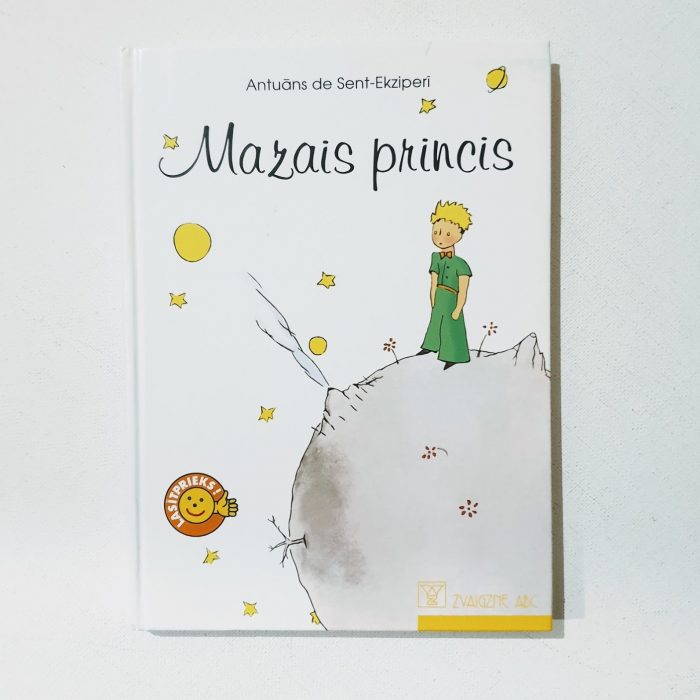
Mażais Princis, in Latvian. Latvian is a Baltic language spoken in the Baltic region. It is the language of Latvians and the official language of Latvia as well as one of the official languages of the European Union. It is sometimes known in English as Lettish, and cognates of the word remain the most commonly used name for the Latvian language in Germanic languages other than English.
Latvia is the first ex Soviet Union country I have visited.
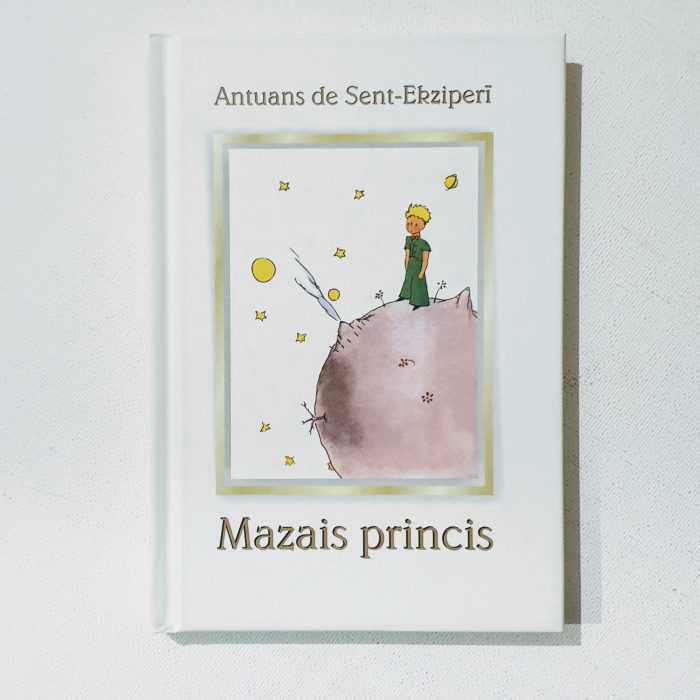
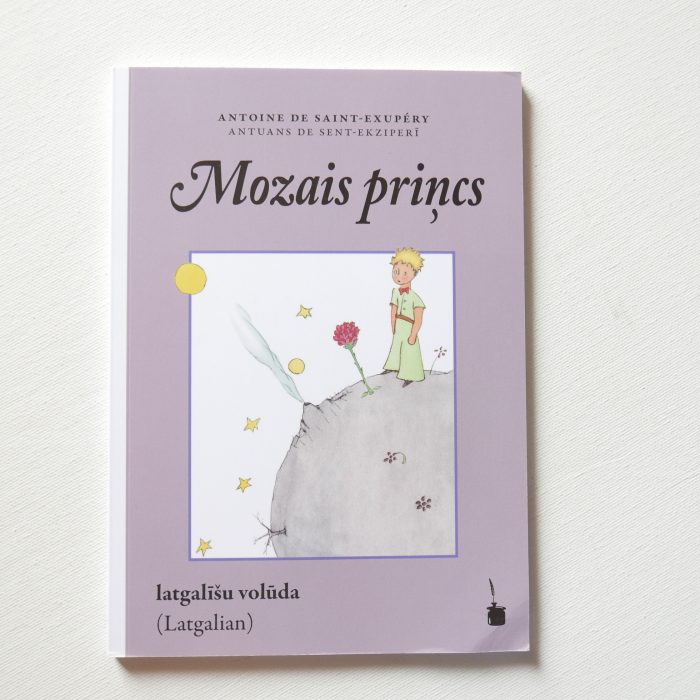
Mozais Priņcs — in Latgalian. Latgalian is a Baltic language spoken in Latgale, the eastern part of Latvia. It is debated whether it is a separate language with heavy Latvian influence, due to historical mutual exposure, or a distinct dialect of Latvian. Nevertheless, its standardised form is recognised and protected as a “historical variety of the Latvian language” (vēsturisks latviešu valodas paveids) by Latvian law.
Rey Siñu — in a variant of Upper Guinea Creole known as Ziguinchor Creole (Kriyol di Sicor) spoken in the Casamance, the southern part of Senegal. Casamance was subject to both French and Portuguese colonial efforts before a border was negotiated in 1888 between the French colony of Senegal and Portuguese Guinea (now Guinea-Bissau) to the south. Portugal lost possession of Casamance, then the commercial hub of its colony.

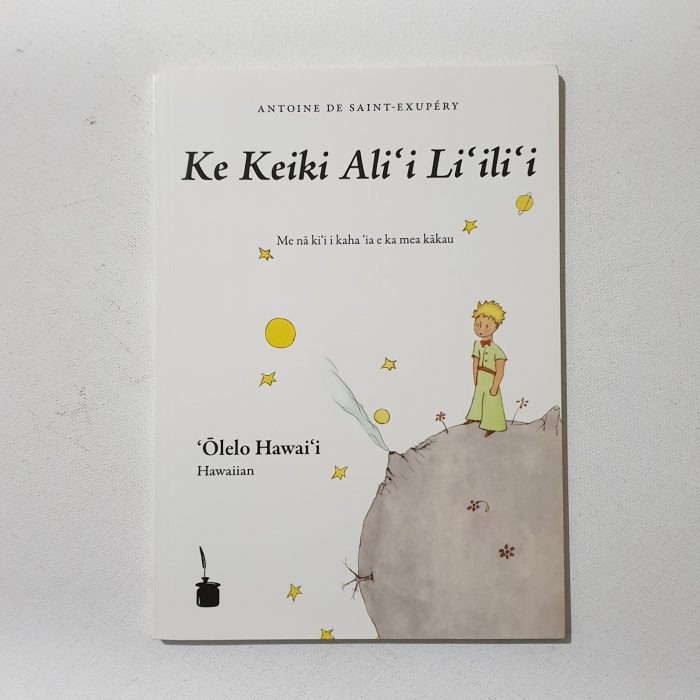
Ke Keiki Ali’i Li’ili’i – in Hawaiian, a Polynesian language that takes its name from Hawaiʻi, the largest island in the tropical North Pacific archipelago where it developed. Hawaiian, along with English, is an official language of the State of Hawaii in the USA. King Kamehameha III established the first Hawaiian-language constitution in 1839 and 1840.
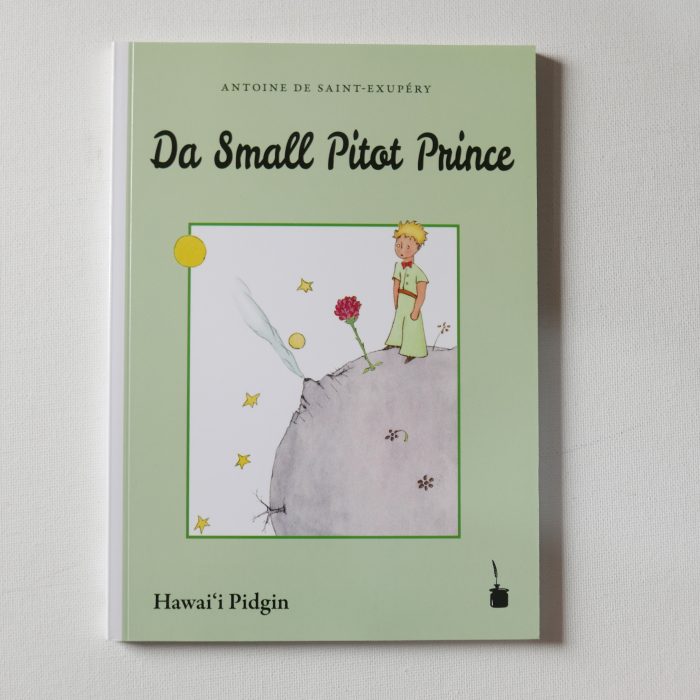
Da Small Pitot Prince – in Hawaii Pidgin, an English-based creole language spoken in Hawaiʻi. Hawaiian Pidgin is spoken by many Hawaiʻi residents in everyday conversation and is often used in advertising targeted toward locals in Hawaiʻi. In the Hawaiian language, Hawaiian Creole English is called “ʻōlelo paʻi ʻai”, which literally means “pounding-taro language”.

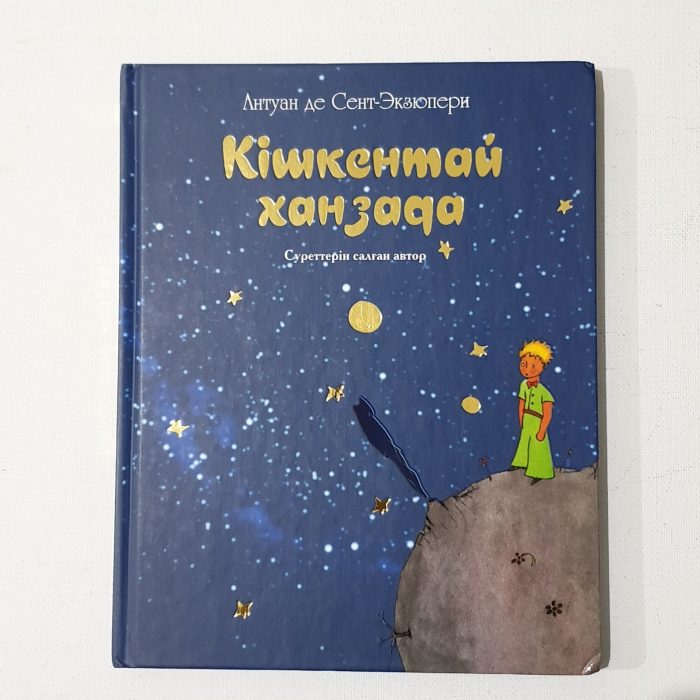
Кішкентай ханзада / Kishkentay Khanzada — in Kazakh / Kazak / қазақша / қазақ тілі / قازاقشا / قازاق تئلئ, a language belongs to the Kipchak branch of the Turkic languages. It is closely related to Nogai, Kyrgyz, and Karakalpak. Kazakh is the official language of the Republic of Kazakhstan and a significant minority language in the Ili Kazakh Autonomous Prefecture in Xinjiang, China and in the Bayan-Ölgii Province of Mongolia. Kazakh is also spoken by many ethnic Kazakhs through the former Soviet Union (approximately 472,000 in Russia according to the 2010 Russian Census), Afghanistan, Iran, Turkey, and Germany.


An Pennsevik Byhan — in Cornish. Cornish (Kernewek / Kernowek) is a Celtic language spoken in Cornwall, UK.
As many other nations, Scottish has a long history of political and cultural interaction and annexations. There are therefore many roots related to the languages used in Scotland.
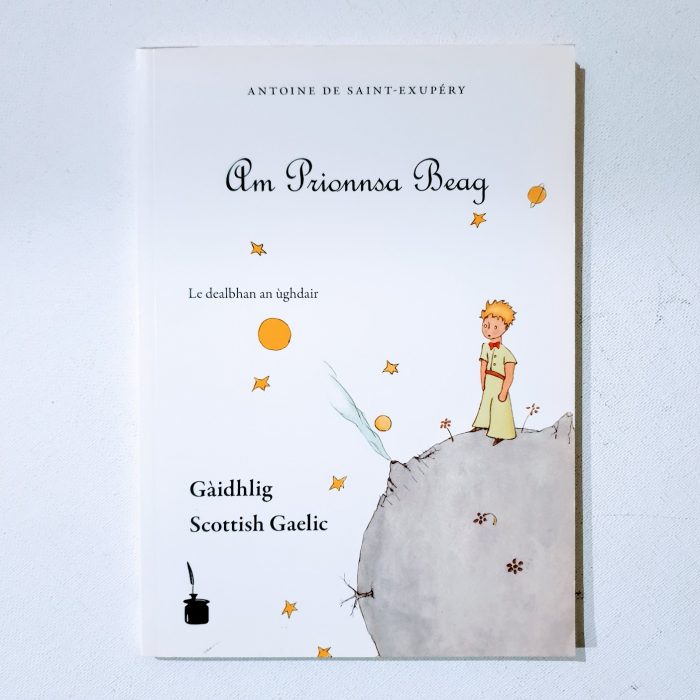 Am Prionnsa Beag, in Scottish Gaelic. Scottish Gaelic (Gàidhlig / Scots Gaelic) is a Goidelic language (in the Celtic branch of the Indo-European language family) native to the Gaels of Scotland. As a Goidelic language, Scottish Gaelic, as well as both Irish and Manx, developed out of Old Irish. It became a distinct spoken language sometime in the 13th century in the Middle Irish period, although a common literary language was shared by Gaels in both Ireland and Scotland down to the 16th century. Most of modern Scotland was once Gaelic-speaking, as evidenced especially by Gaelic-language place names. Estimated ±50.000 people (1.1% of the Scottish) can speak Gaelic. The highest percentages of Gaelic speakers were in the Outer Hebrides. Scottish Gaelic is not an official language of the United Kingdom. However, it is classed as an indigenous language under the European Charter for Regional or Minority Languages, which the UK Government has ratified, and the Gaelic Language (Scotland) Act 2005 established a language-development body, Bòrd na Gàidhlig.
Am Prionnsa Beag, in Scottish Gaelic. Scottish Gaelic (Gàidhlig / Scots Gaelic) is a Goidelic language (in the Celtic branch of the Indo-European language family) native to the Gaels of Scotland. As a Goidelic language, Scottish Gaelic, as well as both Irish and Manx, developed out of Old Irish. It became a distinct spoken language sometime in the 13th century in the Middle Irish period, although a common literary language was shared by Gaels in both Ireland and Scotland down to the 16th century. Most of modern Scotland was once Gaelic-speaking, as evidenced especially by Gaelic-language place names. Estimated ±50.000 people (1.1% of the Scottish) can speak Gaelic. The highest percentages of Gaelic speakers were in the Outer Hebrides. Scottish Gaelic is not an official language of the United Kingdom. However, it is classed as an indigenous language under the European Charter for Regional or Minority Languages, which the UK Government has ratified, and the Gaelic Language (Scotland) Act 2005 established a language-development body, Bòrd na Gàidhlig.
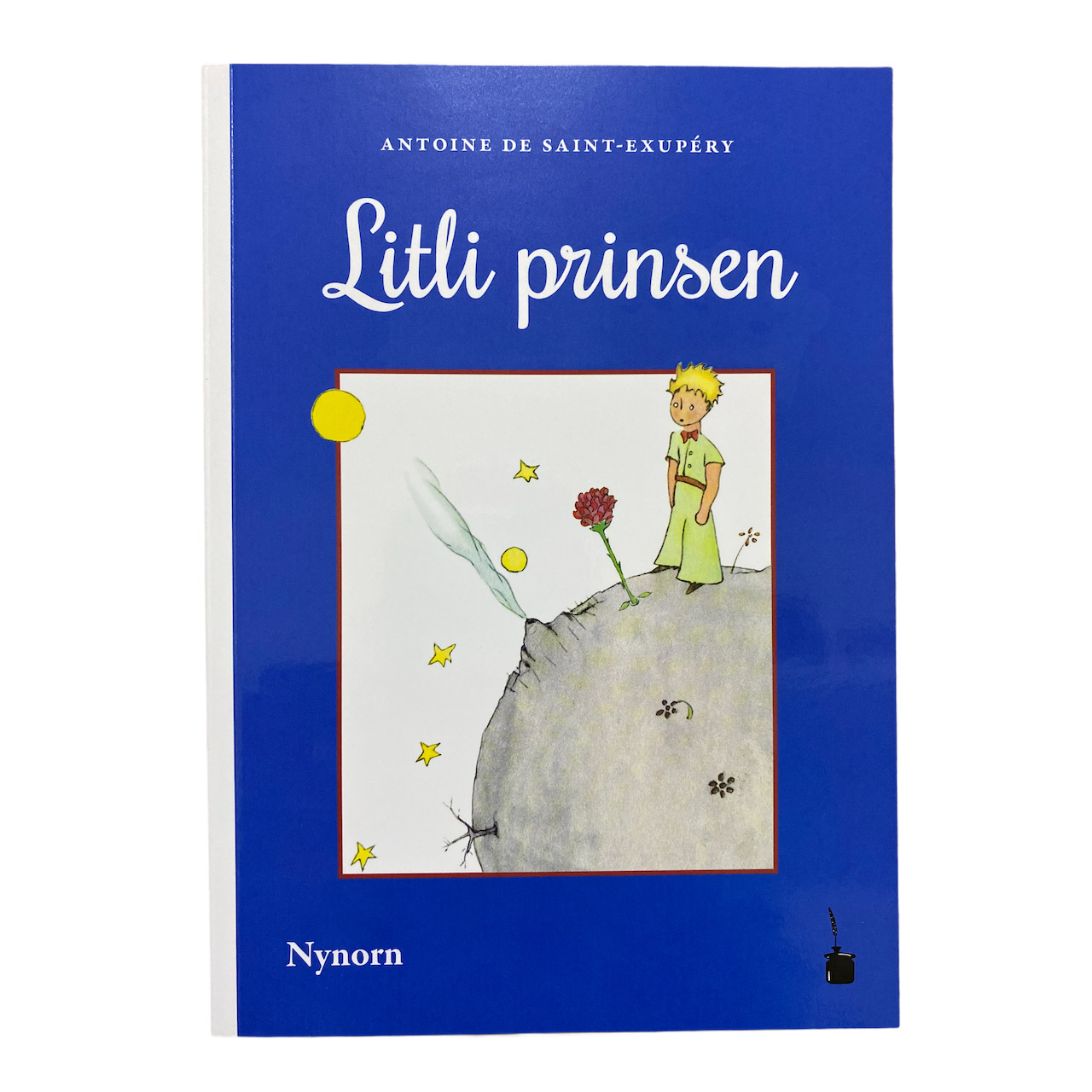 Litli Prinsen — in Nynorn. Nynorn (New Norn) is a virtual language created as an attempt to recreate Norn, an extinc Scandinavian language once spoken or used in the Northern Isles (Orkney and Shetland) off the north coast of mainland Scotland and in Caithness in the far north of the Scottish mainland. After Orkney and Shetland were pledged to Scotland by Norway in 1468–69, it was gradually replaced by Scots. Norn is thought to have become extinct in 1850, after the death of Walter Sutherland, the language’s last known speaker. Together with Faroese, Icelandic and Norwegian, the Norn language belongs to the West Scandinavian group, separating it from the East Scandinavian group consisting of Swedish, Danish and Gutnish. While this classification is based on the differences between the North Germanic languages at the time they split, their present-day characteristics justify another classification, dividing them into Insular Scandinavian and Mainland Scandinavian language groups based on mutual intelligibility. Under this system, Norwegian is grouped together with Danish and Swedish because the last millennium has seen all three undergo important changes, especially in grammar and lexis, which have set them apart from Faroese and Icelandic. Norn is generally considered to have been fairly similar to Faroese, sharing many phonological and grammatical traits, and might even have been mutually intelligible with it. Thus, it can be considered an Insular Scandinavian language.
Litli Prinsen — in Nynorn. Nynorn (New Norn) is a virtual language created as an attempt to recreate Norn, an extinc Scandinavian language once spoken or used in the Northern Isles (Orkney and Shetland) off the north coast of mainland Scotland and in Caithness in the far north of the Scottish mainland. After Orkney and Shetland were pledged to Scotland by Norway in 1468–69, it was gradually replaced by Scots. Norn is thought to have become extinct in 1850, after the death of Walter Sutherland, the language’s last known speaker. Together with Faroese, Icelandic and Norwegian, the Norn language belongs to the West Scandinavian group, separating it from the East Scandinavian group consisting of Swedish, Danish and Gutnish. While this classification is based on the differences between the North Germanic languages at the time they split, their present-day characteristics justify another classification, dividing them into Insular Scandinavian and Mainland Scandinavian language groups based on mutual intelligibility. Under this system, Norwegian is grouped together with Danish and Swedish because the last millennium has seen all three undergo important changes, especially in grammar and lexis, which have set them apart from Faroese and Icelandic. Norn is generally considered to have been fairly similar to Faroese, sharing many phonological and grammatical traits, and might even have been mutually intelligible with it. Thus, it can be considered an Insular Scandinavian language.
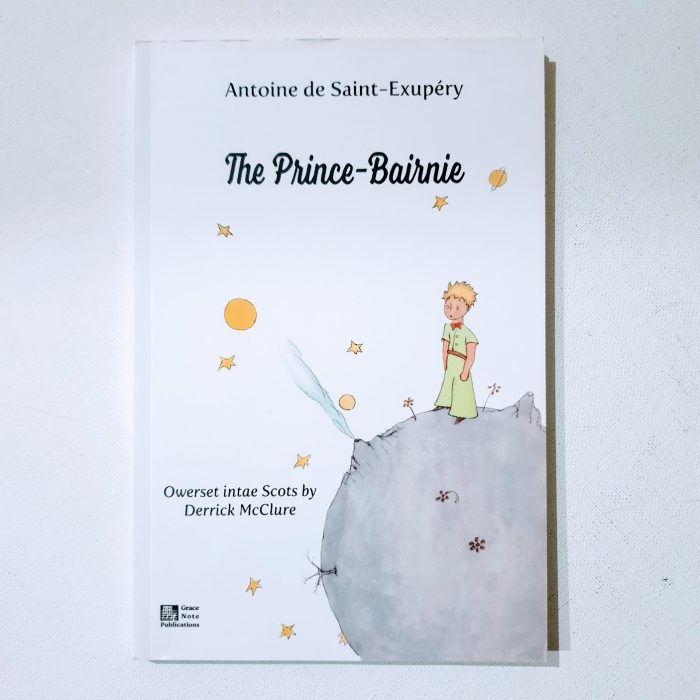
The Prince-Bairnie – in modern Scots.
Scots is a West Germanic language variety spoken in Scotland and parts of Ulster in the north of Ireland (where the local dialect is known as Ulster Scots). It is sometimes called Lowland Scots or Broad Scots to distinguish it from Scottish Gaelic. Modern Scots is a sister language of Modern English, as the two diverged independently from the same source: Early Middle English.
Scots is recognised as an indigenous language of Scotland. In the 2011 Scottish Census, over 1.5 million people in Scotland reported being able to speak Scots.
As there are no universally accepted criteria for distinguishing a language from a dialect, scholars and other interested parties often disagree about the linguistic, historical and social status of Scots, particularly its relationship to English. Broad Scots is at one end of a bipolar linguistic continuum, with Scottish Standard English at the other. Scots is sometimes regarded as a variety of English, though it has its own distinct dialects; other scholars treat Scots as a distinct Germanic language, in the way that Norwegian is closely linked to but distinct from Danish.
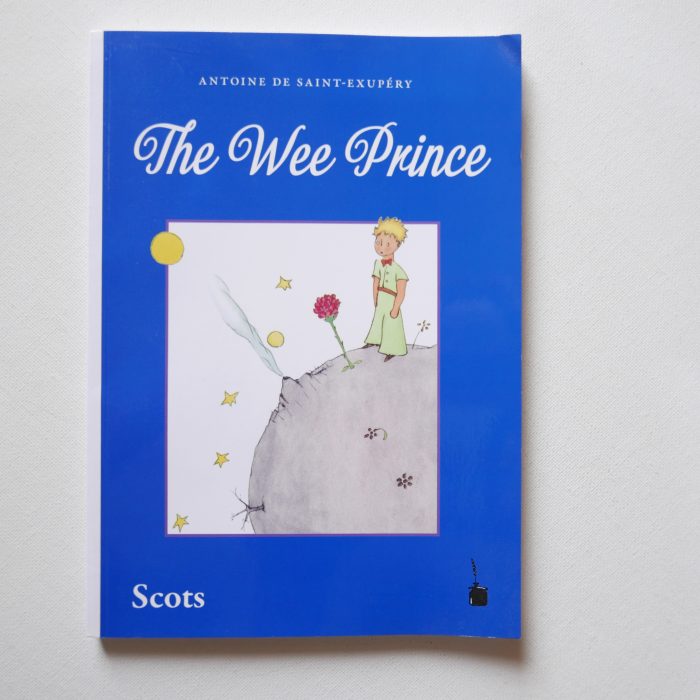
The Wee Prince – also in modern Scots.

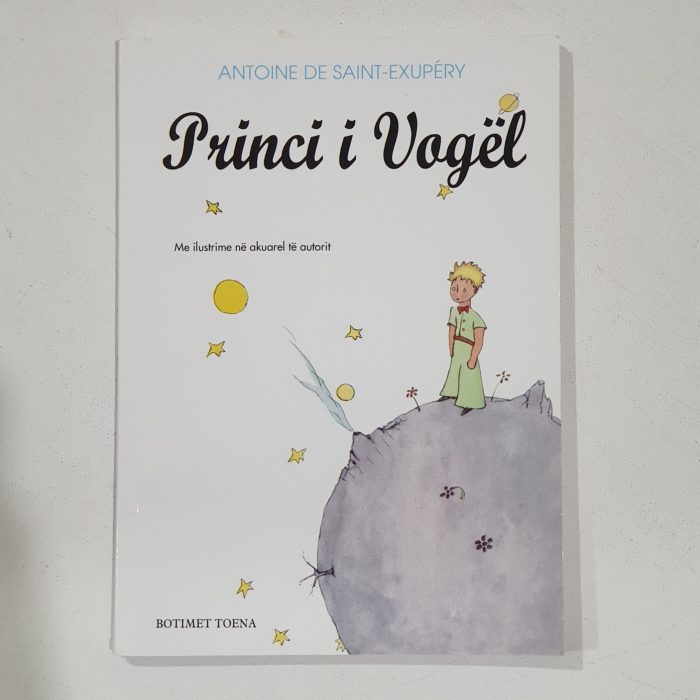
Princi i Vogël, in Albanian Tosk language. Albanian is a language of the Indo-European family, in which it occupies an independent branch. It is an official language in Albania, Kosovo, and the Republic of Macedonia. The two main dialects of Albanian are Gheg and Tosk. Gheg is primarily spoken in the north, while Tosk is spoken in the south. Standard Albanian is based on the Tosk dialect.

Princi i Vogël, in Albanian Tosk language
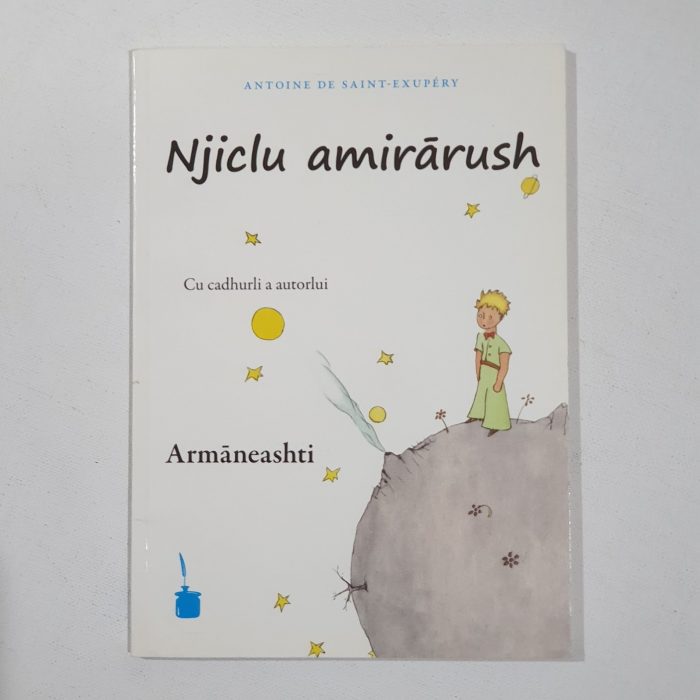
Njiclu Amirārush — in Aromanian, also known as Macedo-Romanian or Vlach, which is an Eastern Romance language, similar to Meglenoromanian, or a dialect of the Romanian language spoken in Southeastern Europe. Its speakers are called Aromanians or Vlachs. Aromanian shares many features with modern Romanian, including similar morphology and syntax, as well as a large common vocabulary inherited from Latin. An important source of dissimilarity between Romanian and Aromanian is the adstratum languages (external influences); whereas Romanian has been influenced to a greater extent by the Slavic languages, Aromanian has been more influenced by Greek, with which it has been in close contact throughout its history.

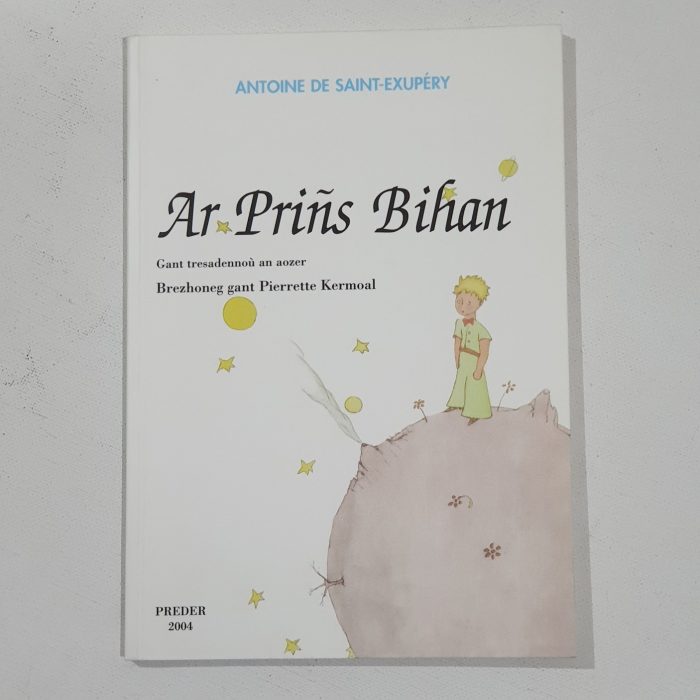
Ar Priñs Bihan, in Breton (Brezhoneg). Breton is a Celtic language spoken in Brittany (Bretagne). Bretagne should remind you to Astérix the Gaul. But for me, it reminds me to my first journey overseas. Paris is the first city I visited, but then I spent one week in Bretagne: Lannion, Perros-Guirec, Pleumeur-Bodou, Guingamp, etc.
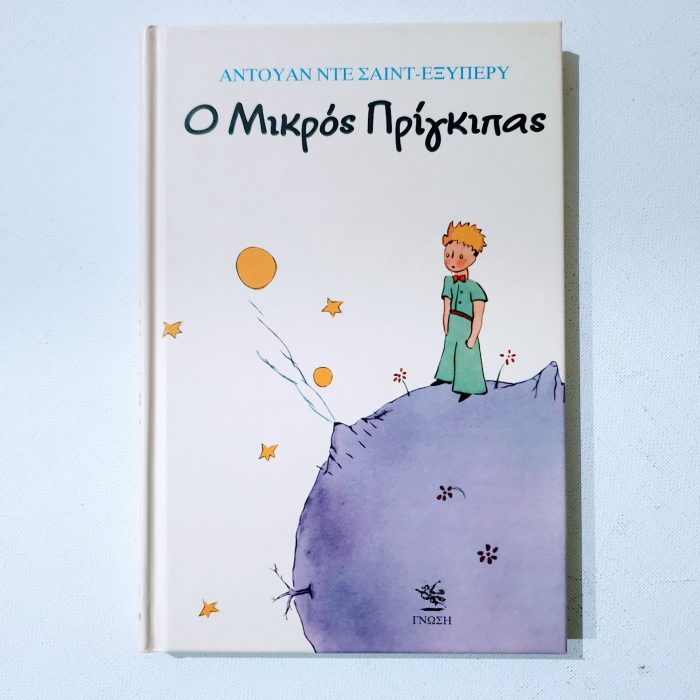
Ο Μικρός Πρίγκιπας / O Mikrós Prínkipas — in modern Greek.
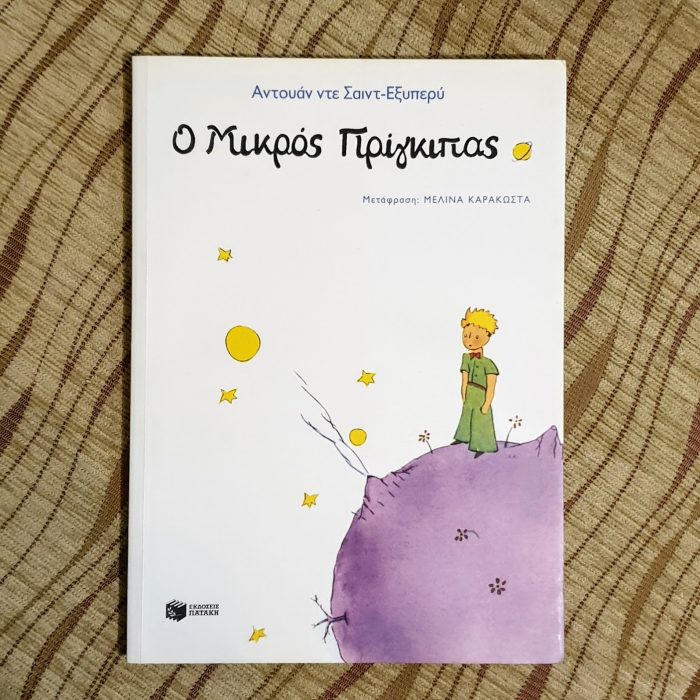
Ο Μικρός Πρίγκιπας / O Mikrós Prínkipas — also in modern Greek.
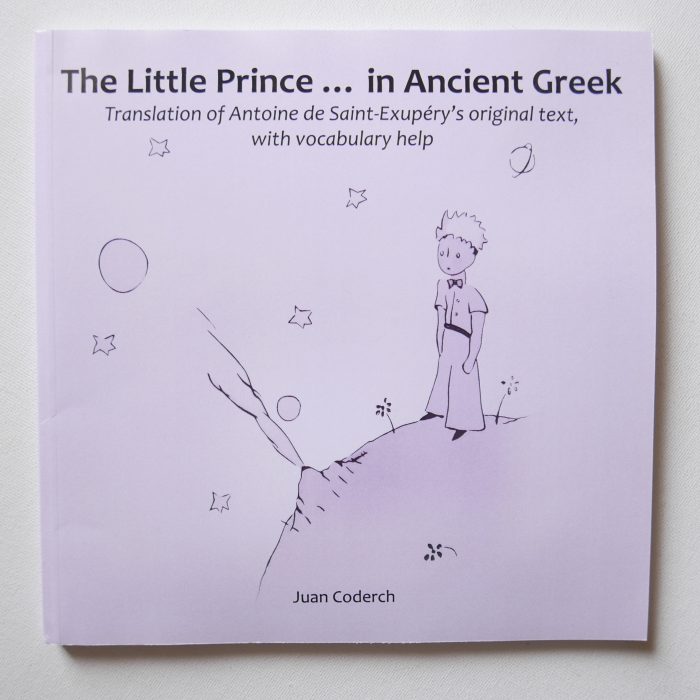
The Little Prince in ancient Greek language

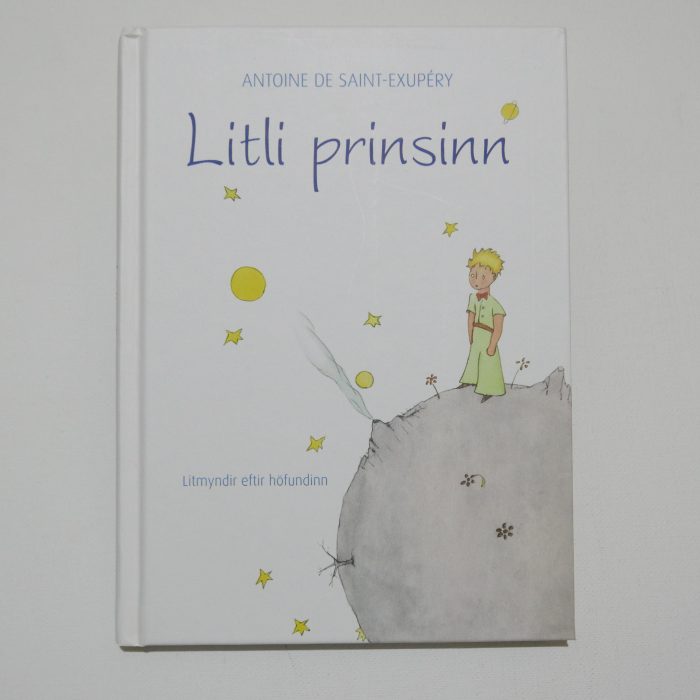
Litli Prinsinn — in Icelandic, the language of Iceland. Icelandic is an Indo-European language belonging to the North Germanic or Nordic branch of the Germanic languages. Historically, it was the westernmost of the Indo-European languages prior to the colonisation of the Americas. Icelandic, Faroese, Norn, and Western Norwegian formerly constituted West Nordic; Danish, Eastern Norwegian and Swedish constituted East Nordic.
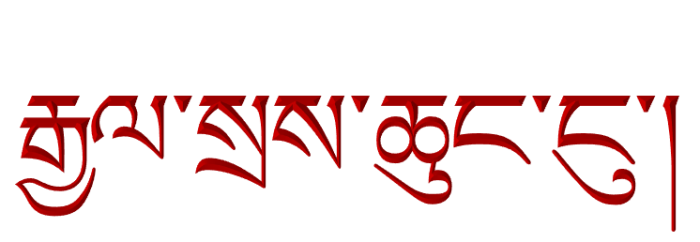
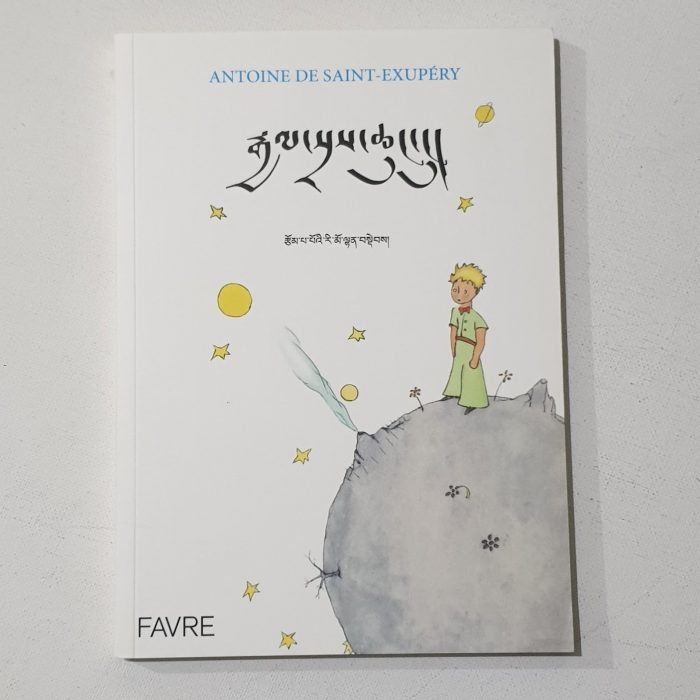
རྒྱལ་སྲས་ཆུང་ངུ་།
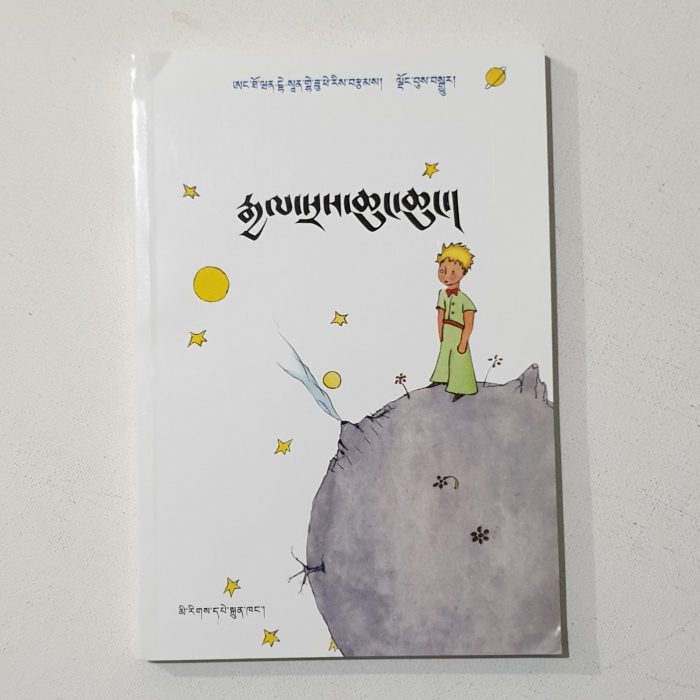

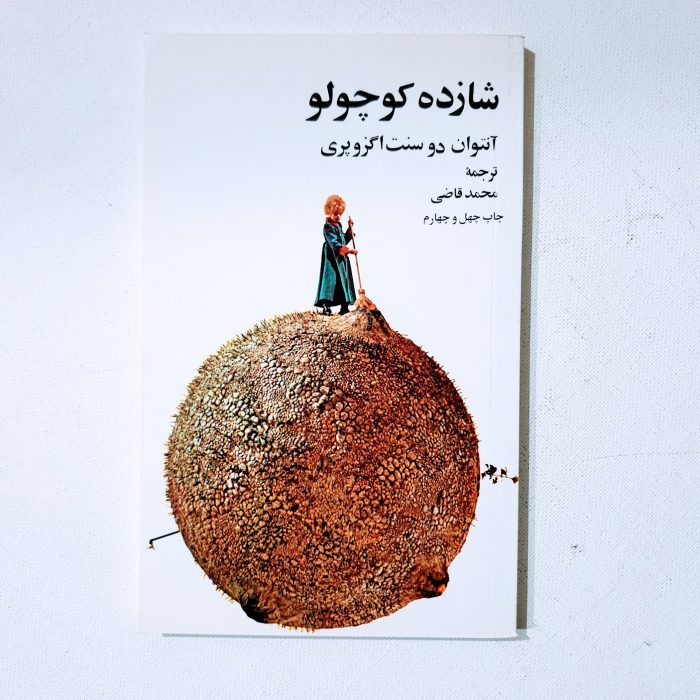
شازده كوجولو / Shazdah Kučulu — in the Iranian or Iranic languages, which are a branch of the Indo-Iranian languages in the Indo-European language family that are spoken natively by the Iranian people.

شازده كوجولو
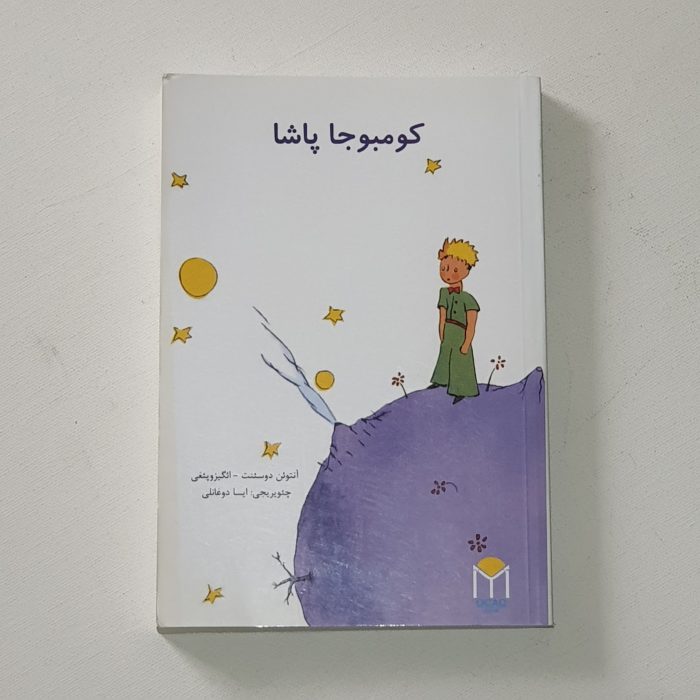
Kumbuca Paşa (کومبوجا پاشا) — in Qashqai, which is an Oghuz Turkic language spoken by the Qashqai people living mainly in the Fars Province of southern Iran.
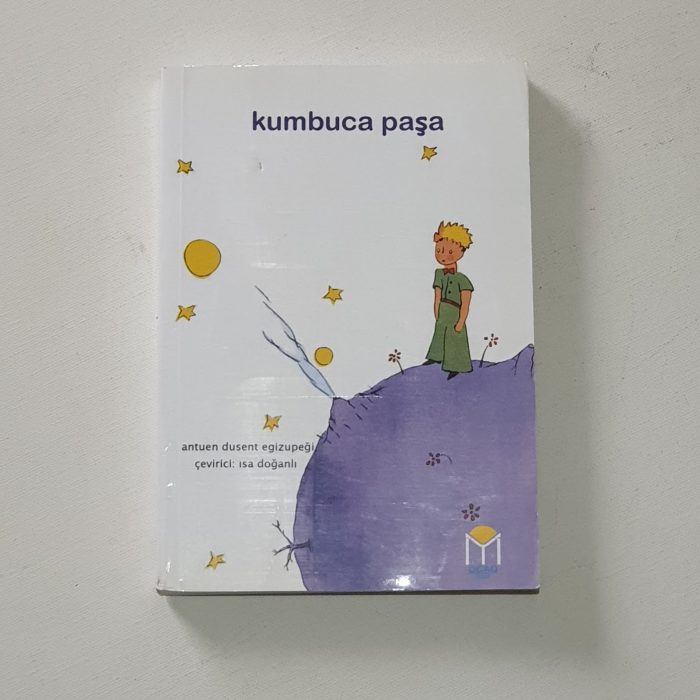
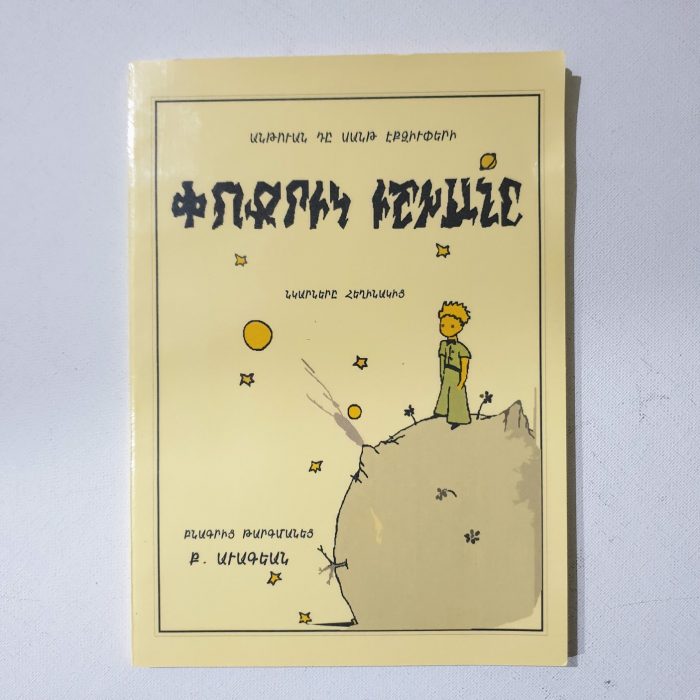
Փոքրիկ իշխանը — in Western Armenian spoken by Armenian community in Iran.
Küçük Prens, in Modern Turkish language. Turkish / Türkçe is the most widely spoken of the Turkic languages, with around 10–15 million native speakers in Southeast Europe (mostly in East and Western Thrace) and 60–65 million native speakers in Western Asia (mostly in Anatolia).
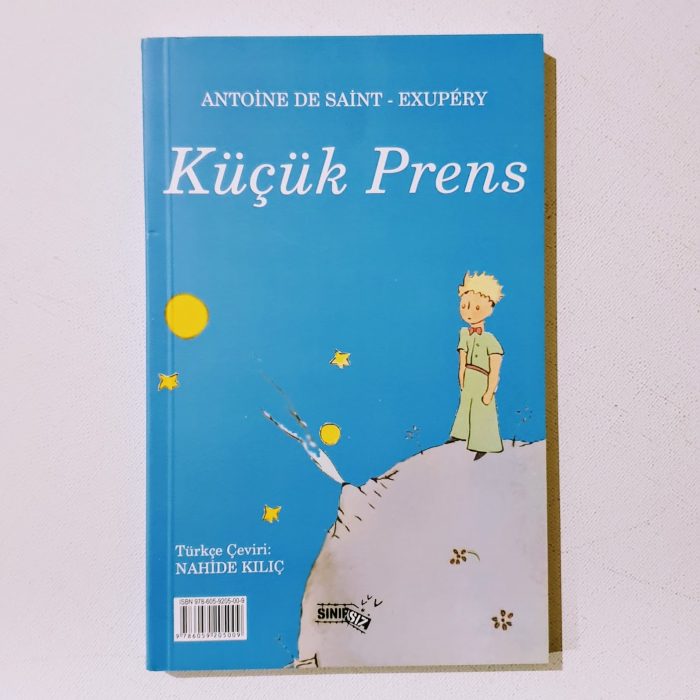
Küçük Prens, in Modern Turkish language

Küçük Prens, in modern Turkish language, but written in old Ottoman Turkish language, derived from Arabic abjad.
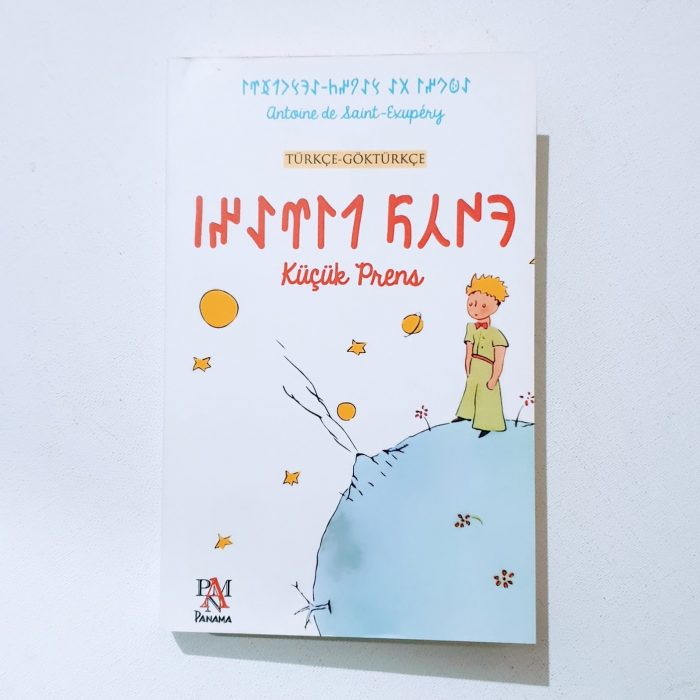
Küçük Pirens, in modern Turkey language, written in ancient Old Turkic script (also known as variously Göktürk script, Orkhon script, Orkhon-Yenisey script), which is the alphabet used by the Göktürks and other early Turkic khanates during the 8th to 10th centuries to record the Old Turkic language. The script is named after the Orkhon Valley in Mongolia where early 8th-century inscriptions were discovered in an 1889 expedition by Nikolai Yadrintsev. These Orkhon inscriptions were published by Vasily Radlov and deciphered by the Danish philologist Vilhelm Thomsen in 1893.
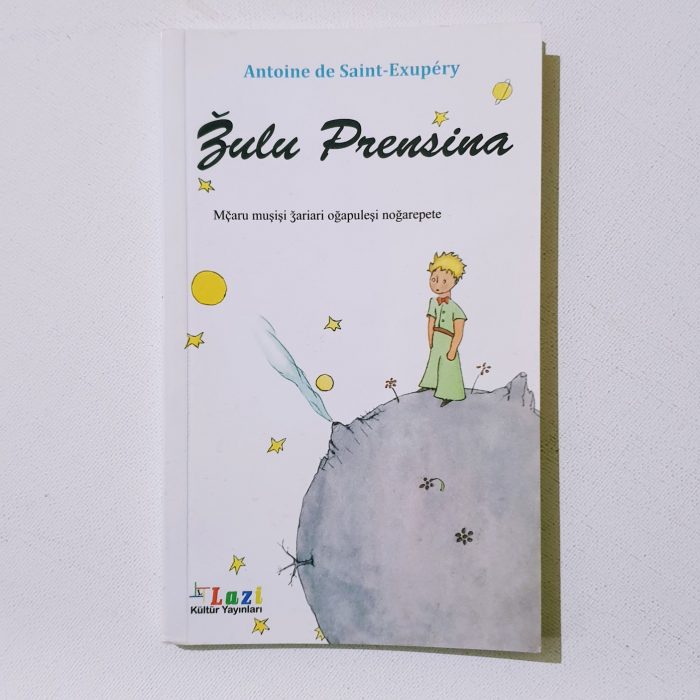
Ǯulu Prensina — in the Laz language. This language is a Kartvelian language spoken by the Laz people on the southeastern shore of the Black Sea. It is estimated that there are around 20,000 native speakers of Laz in Turkey, in a strip of land extending from Melyat to the Georgian border (officially called Lazistan until 1925), and about 2,000 in Georgia.
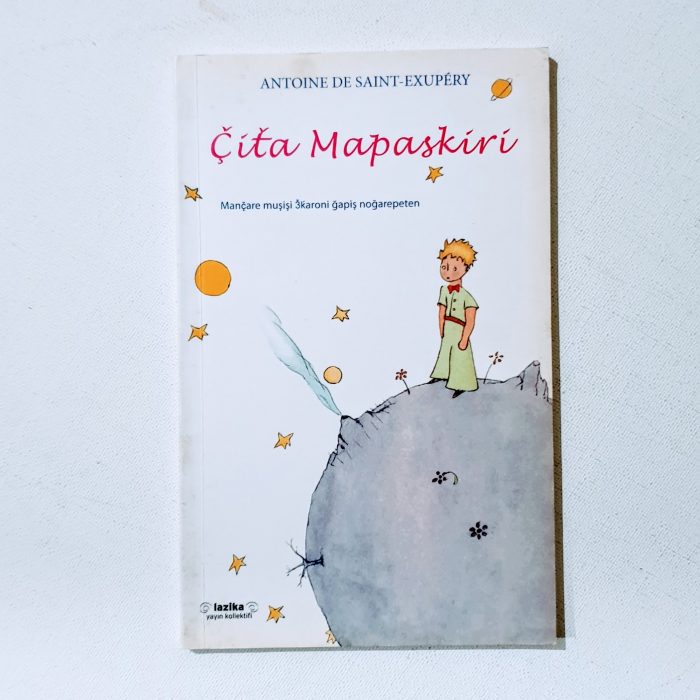
Çita Mapaskiri — also in the Laz language.
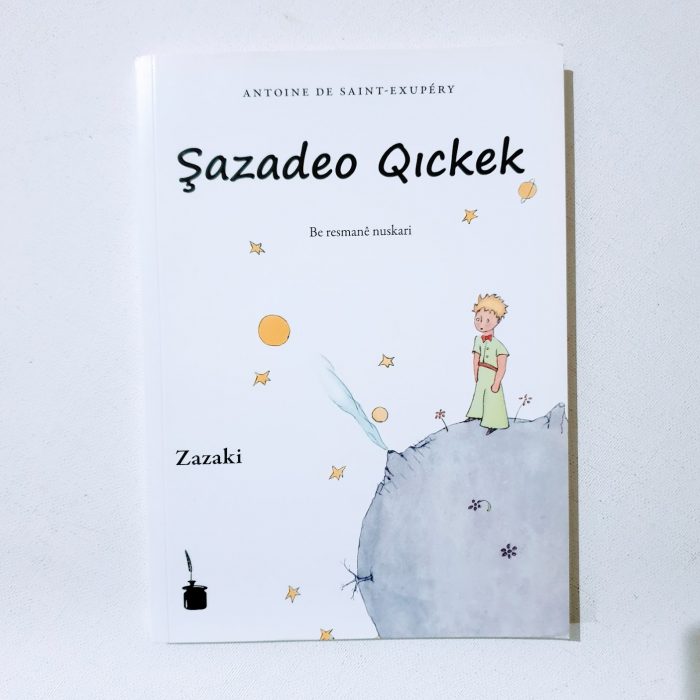
Sazadeo Qickek — in Zaza language, also called Zazaki, Kirmanjki, or Dimli. This is an Indo-European language (so, not a Turkic language) spoken primarily in eastern Turkey by the Zazas. The language is a part of the northwestern group of the Iranian section of the Indo-European family, and belongs to the Zaza–Gorani and Caspian dialect group. Zaza shares many features, structures, and vocabulary with Gorani (Hawrami), Shabaki, Bajelani and Sarli. Zaza also has some similarities with Talyshi and other Caspian languages.
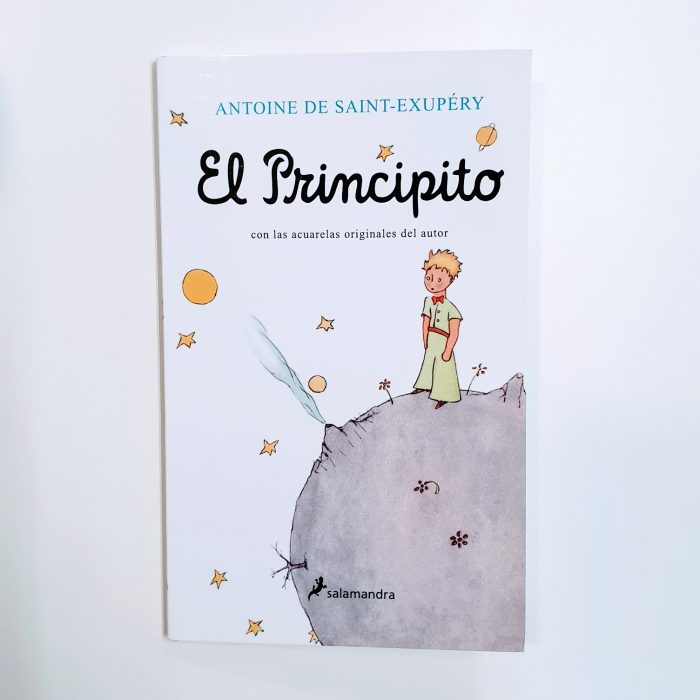
El Principito, in standard Spanish.
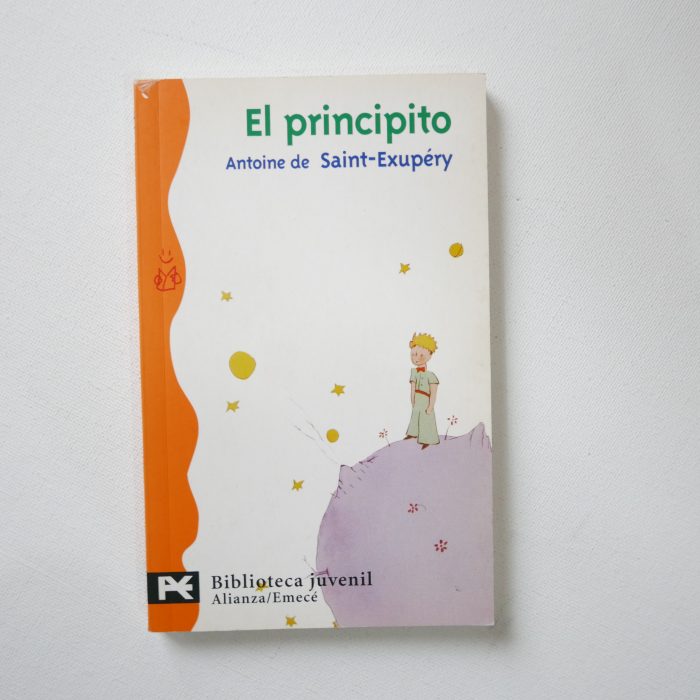
El Principito, in standard Spanish.
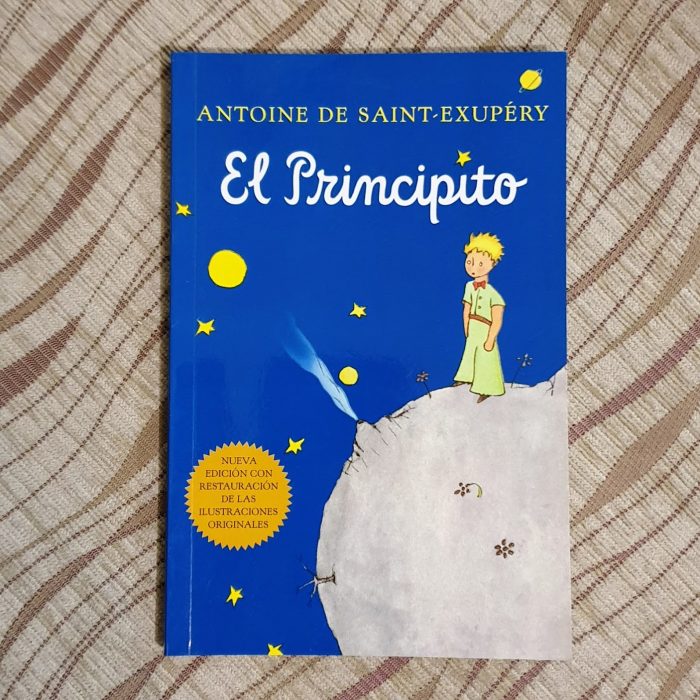
El Principito, in standard Spanish.
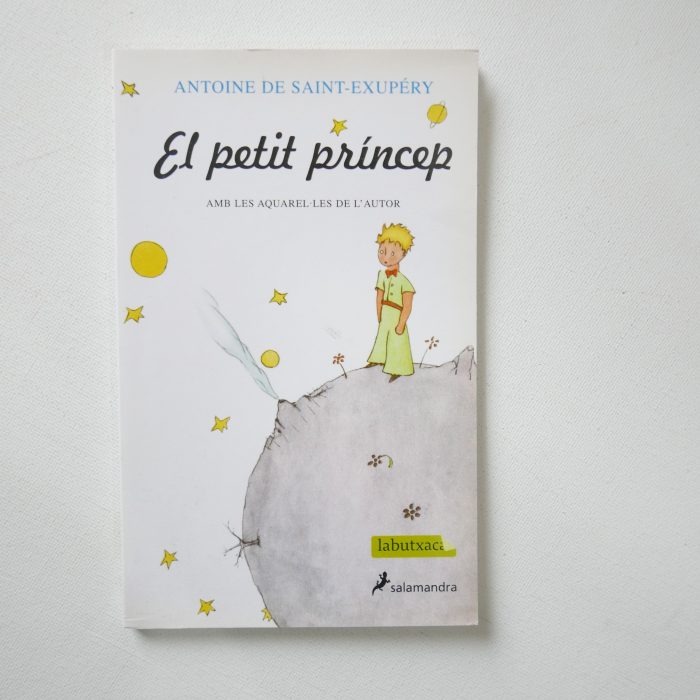
El Petit Príncep – in Catalan, a language spoken by a Latin ethnic group formed by the people from, or with origins in, Catalonia or the Catalan countries, who also form a nationality in northeastern Spain.
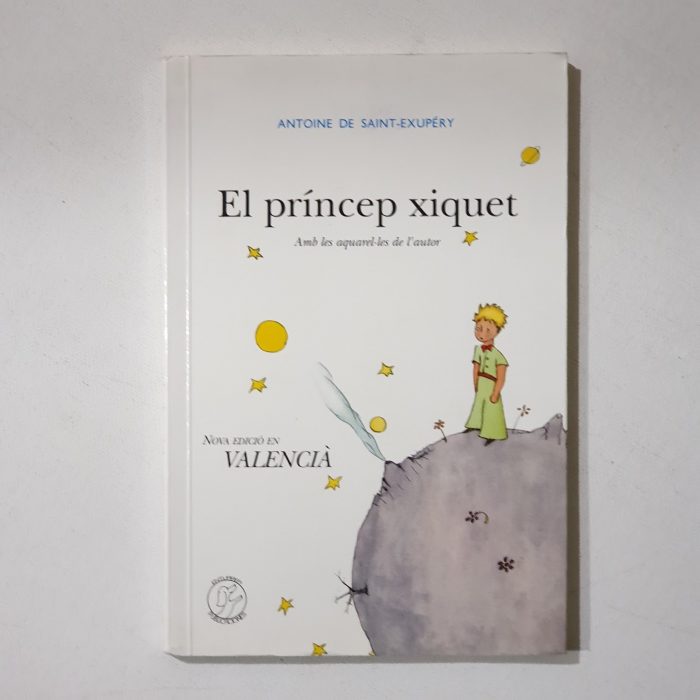
El Príncep Xiquet — in Valencian, which is a dialect of Catalan spoken in the Valencian Community, Spain.
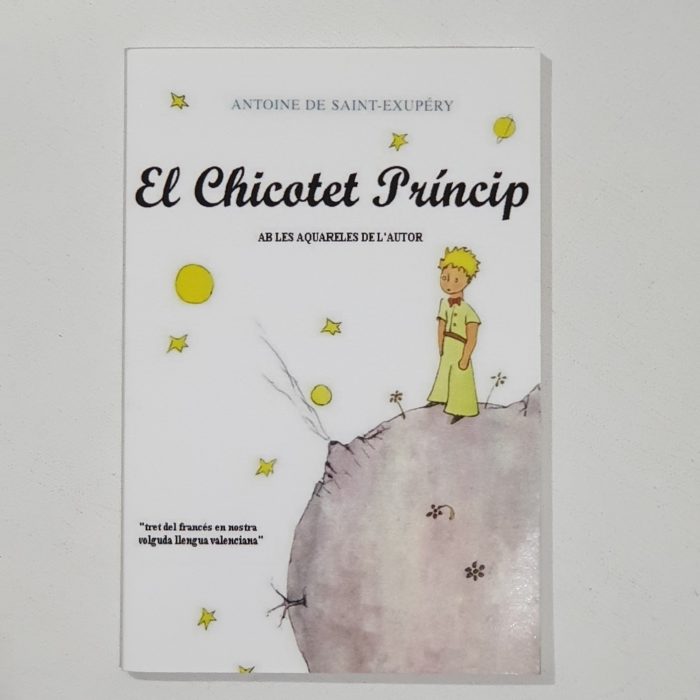
El Chicotet Príncip — in El Puig spelling of Valencian language.
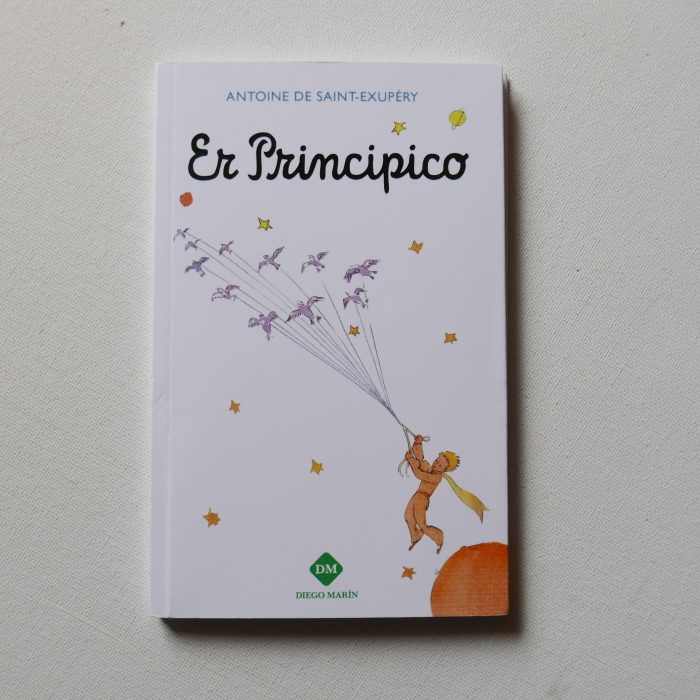
Er Principico — in Murcian dialect, which is one of the southern dialects of Spanish and tends to eliminate many syllable-final consonants and to emphasize regional vocabulary, much of which is derived from Aragonese, Catalan and Arabic words.
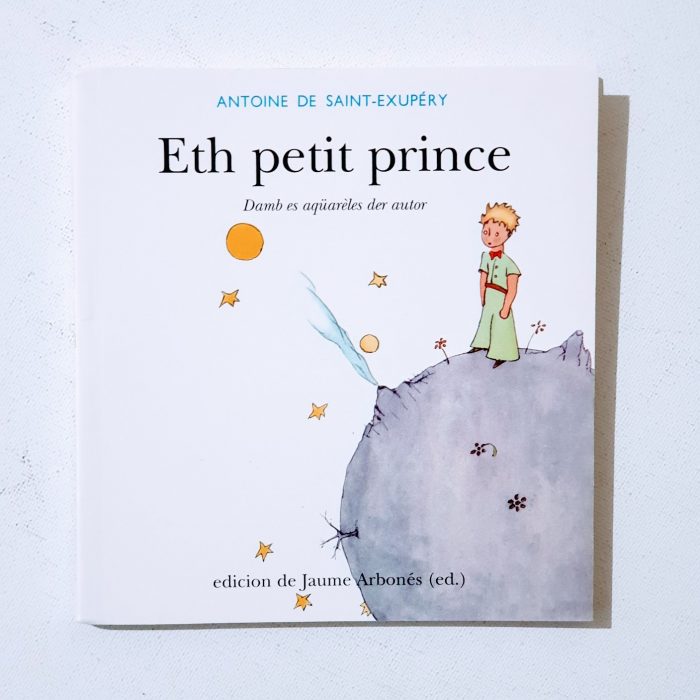
Eth Petit Prince — in Aranese, a standardised form of the Pyrenean Gascon variety of the Occitan language spoken in the Val d’Aran, in northwestern Catalonia close to the Spanish border with France, where it is one of the three official languages beside Catalan and Spanish. In 2010, it was named the third official language of the whole of Catalonia by the Parliament of Catalonia.
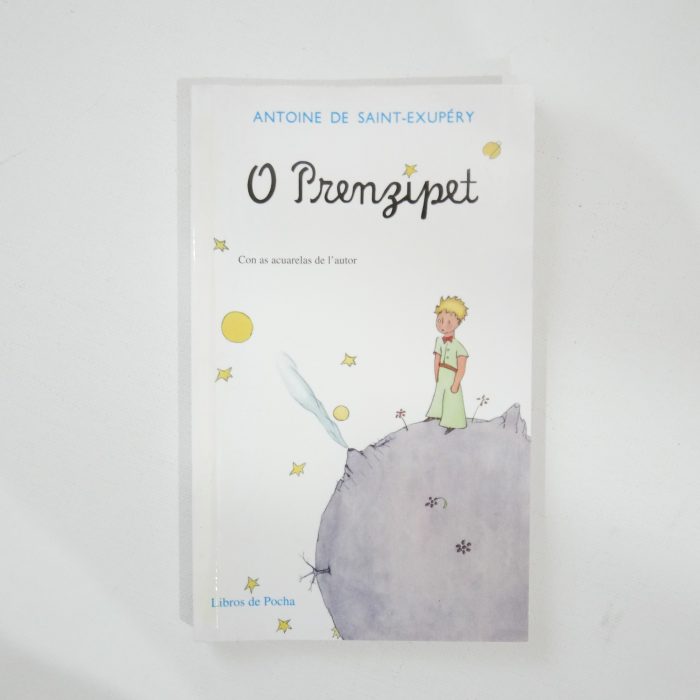
O Prenzipet — in Aragonese, a Romance language spoken in several dialects by 10,000 to 30,000 people in the Pyrenees valleys of Aragon, Spain, primarily in the comarcas of Somontano de Barbastro, Jacetania, Alto Gállego, Sobrarbe, and Ribagorza/Ribagorça. It is the only modern language which survived from medieval Navarro-Aragonese in a form distinctly different from Spanish.
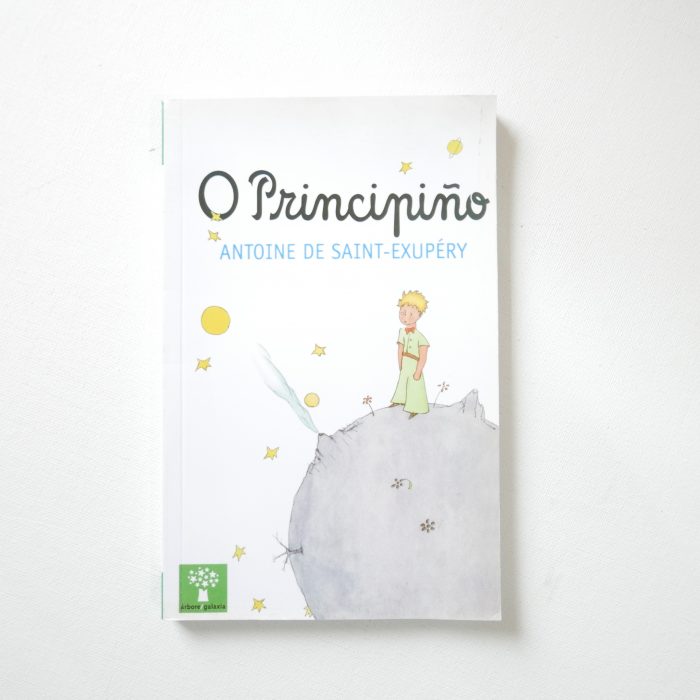
O Principiño — in Galician. Galician is an Indo-European language of the Western Ibero-Romance branch. It is spoken in Galicia, an autonomous community located in northwestern Spain, where it is official along with Spanish. Modern Galician and its sibling, Portuguese, originated from a common medieval ancestor designated variously by modern linguists as Galician-Portuguese.
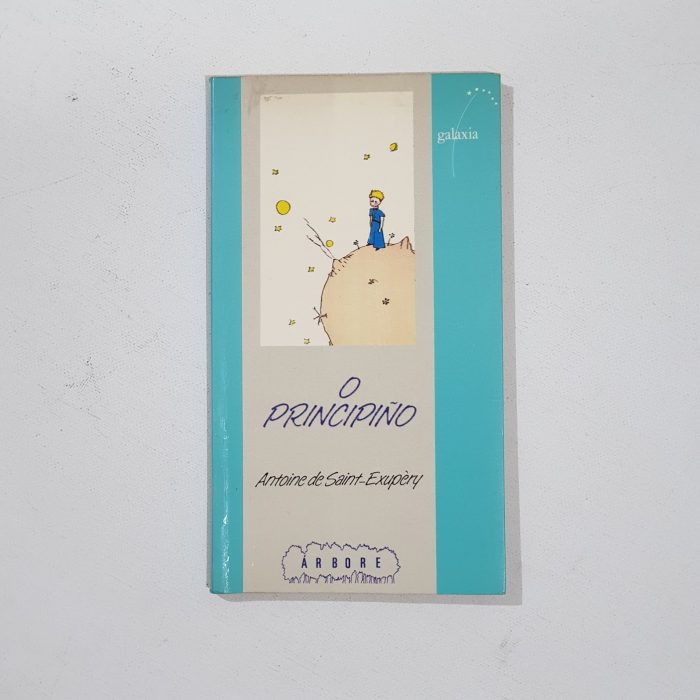
O Principiño — also in Galician.
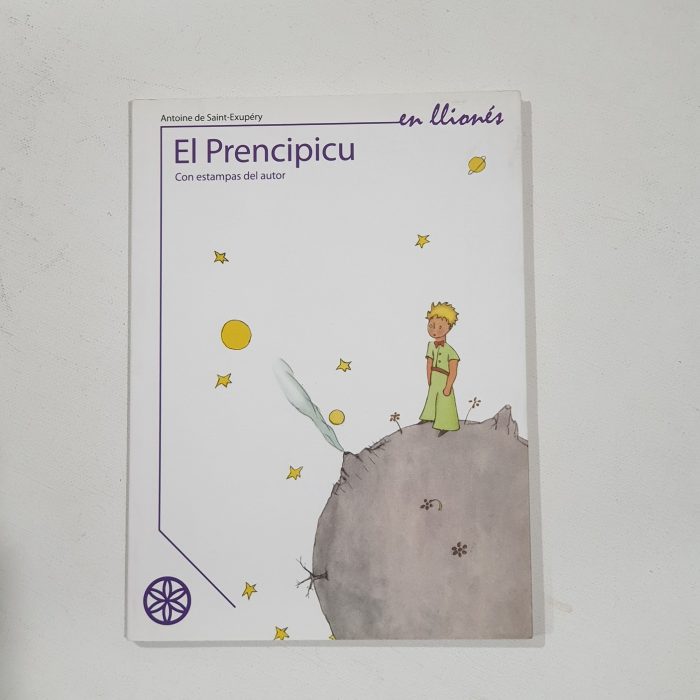
El Prencipicu — in Leonese, a Romance dialects currently spoken in northern and western portions of the historical region of León in Spain (the modern provinces of León, Zamora, and Salamanca) and a few adjoining areas in Portugal. In this narrow sense, Leonese is distinct from the dialects grouped under Asturian, although there is no clear linguistic division. In the past, it was spoken in a wider area, including most of the historical region. The current number of Leonese speakers is estimated at 20,000 to 50,000.
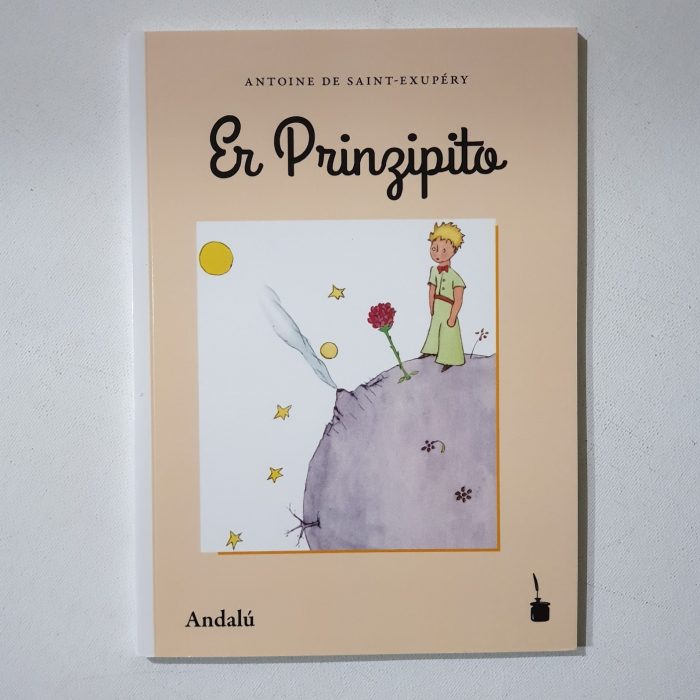
Er Prinzipito — in Spanish Andaluz, which is a dialect spoken in Andalusia, Ceuta, Melilla, and Gibraltar. They include perhaps the most distinct of the southern variants of peninsular Spanish, differing in many respects from northern varieties, and also from Standard Spanish.
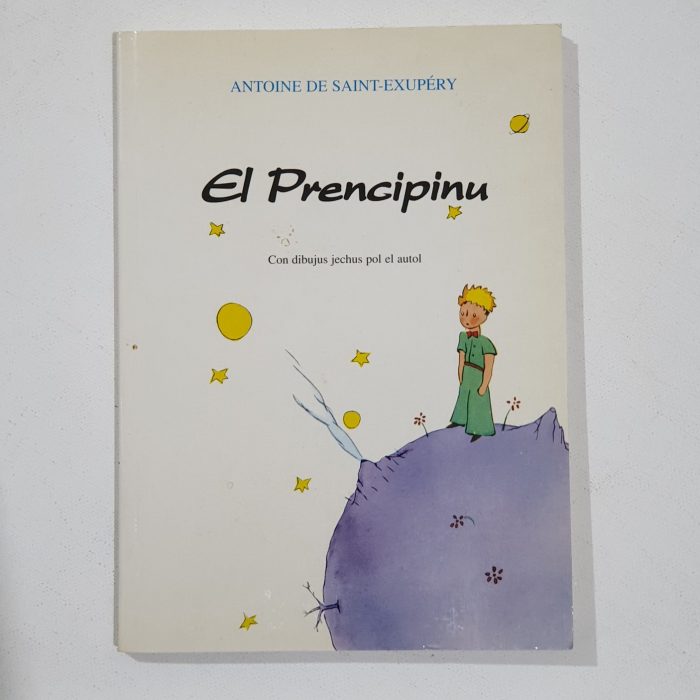
El Principinu — in Extremaduran language, a vernacular Romance dialects of the Asturleonese language spoken in Extremadura and adjoining areas in the province of Salamanca. I got this book directly from the translator, Antoniu Garrido Correas. Honestly, previously I know nothing about Extremadura. Then I realised that this area, together with Portugal, used to be the historical region of Lusitania.
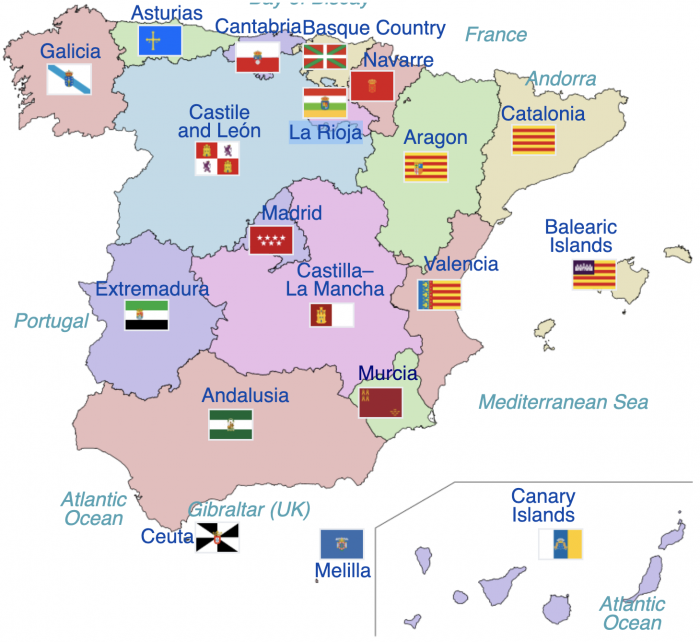
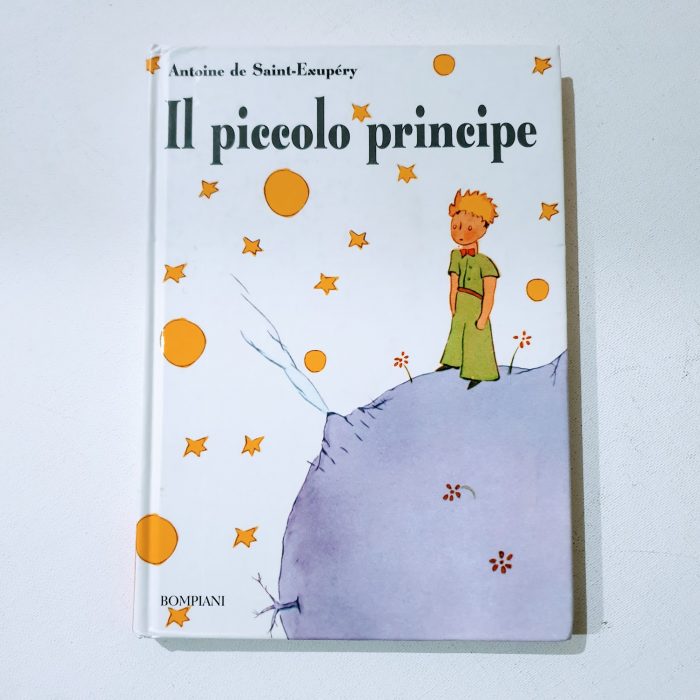
Il Piccolo Principe — in Italian.
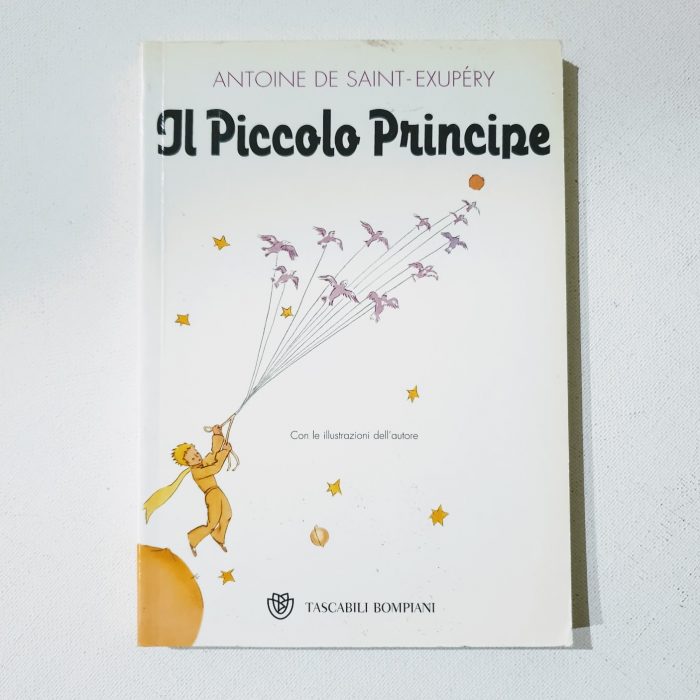
Il Piccolo Principe — also in Italian.
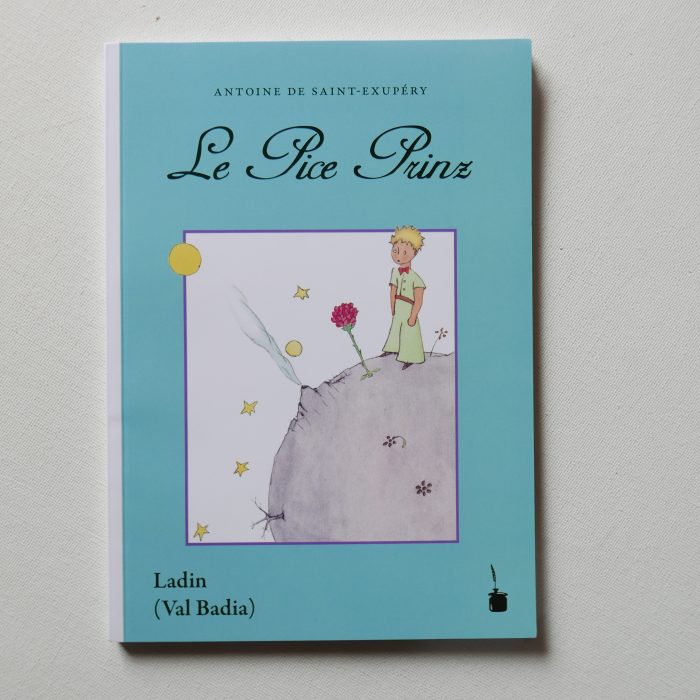
Le Pice Prinz — in Ladin, is a Romance language consisting of a group of dialects that some consider part of a unitary Rhaeto-Romance language, mainly spoken in the Dolomite Mountains in Northern Italy in the provinces of South Tyrol, the Trentino, and the Belluno, by the Ladin people. It exhibits similarities to Swiss Romansh and Friulian.
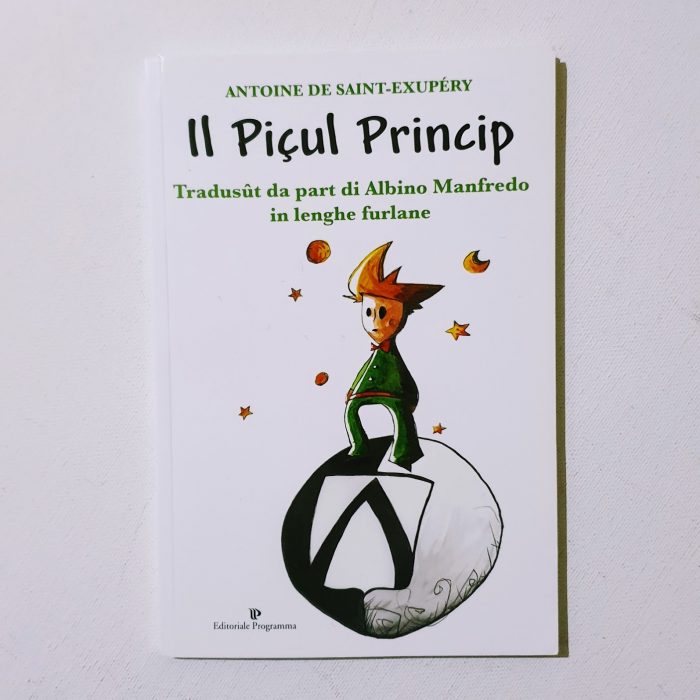
Il Piçul Princip — in Friulian, a Romance language belonging to the Rhaeto-Romance family, spoken in the Friuli region of northeastern Italy.
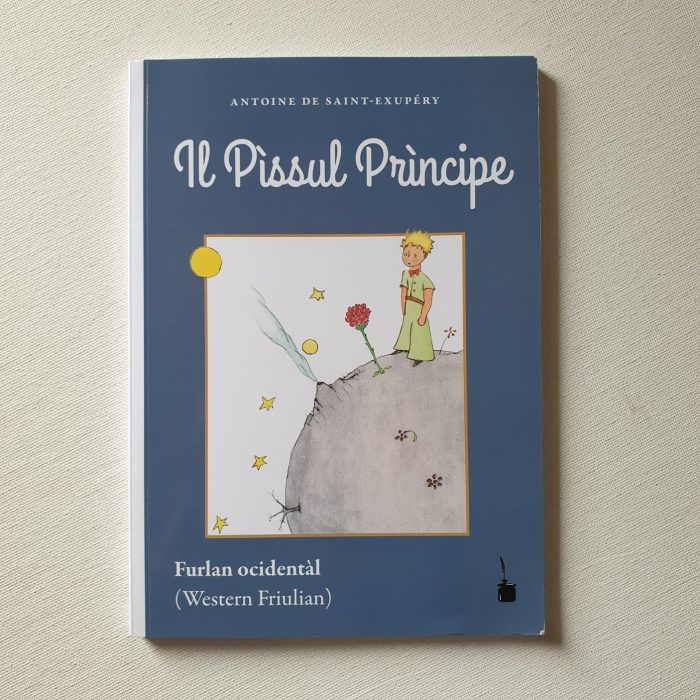
Il Pìssul Prìncipe — in Western dialect of Friulian language.
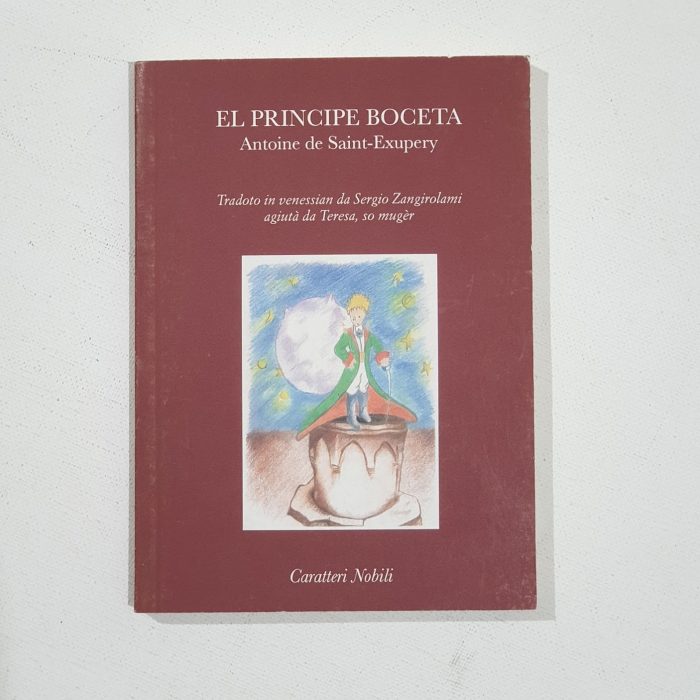
El Principe Boceta — in venetian / venetan / łéngoa vèneta / vèneto, which is a Romance language spoken as a native language by almost four million people in the northeast of Italy, mostly in the Veneto region of Italy, where most of the five million inhabitants can understand it, centered in and around Venice, which carries the prestige dialect.
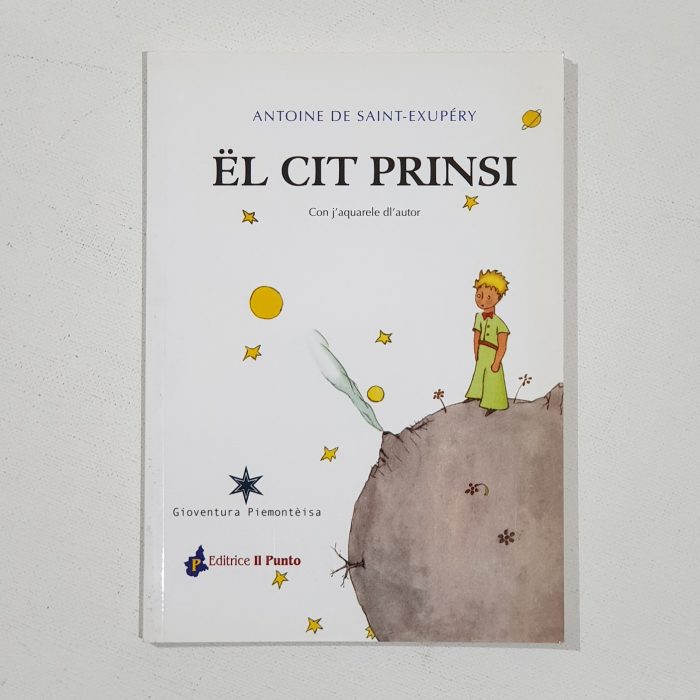
Ël Cit Prinsi — in piedmontese / piemontèis / lenga piemontèisa / piemontese, a Romance language spoken by some 700,000 people mostly in Piedmont, northwestern region of Italy. It is geographically and linguistically included in the Gallo-Italic languages group of Northern Italy (with Lombard, Emiliano-Romagnolo and Ligurian). It is part of the wider western group of Romance languages, which also includes French, Occitan, and Catalan. It is spoken in Piedmont (except est on Sesia river in the eastern part), Liguria (northwest part near Savona) and Lombardy (a very small part in Lomellina in the Pavia province).

E’ Prinzipì — in Emiliân-Rumagnōl / Emiliano-Romagnolo, which is a Gallo-Italic language spoken in the Northern Italian region of Emilia-Romagna, parts of Lombardy, Umbria, Marche, Liguria, Piedmont, Veneto, Tuscany, and San Marino.
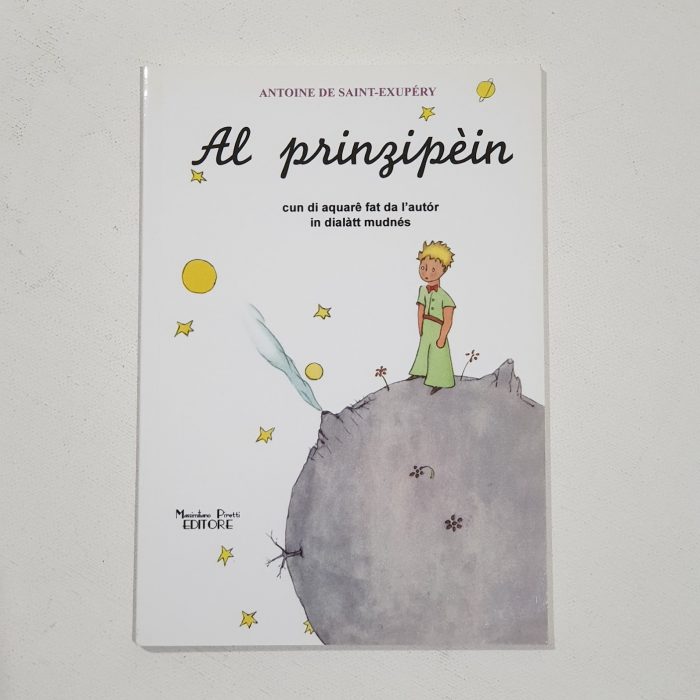
Al Prinzipèin — in Emilian-Modenese dialect spoken in the Province of Modena.
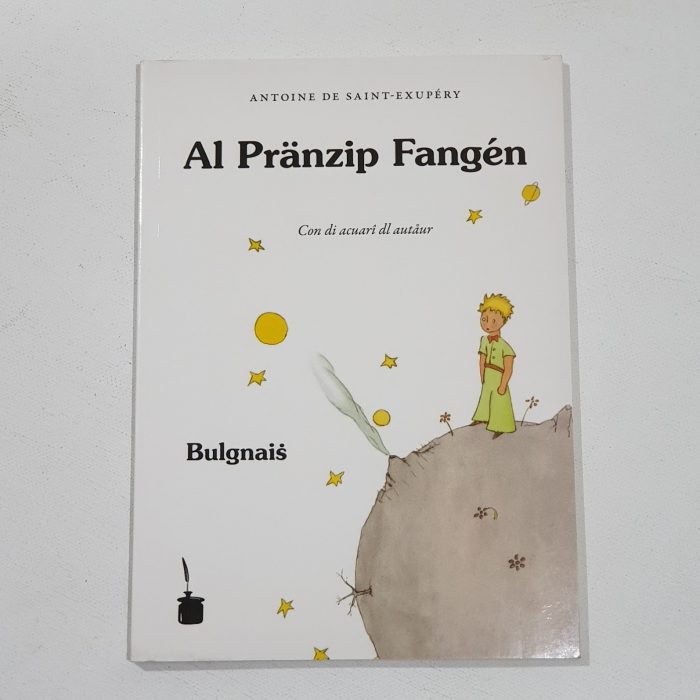
Al Pränzip Fangén — in Emilian-Bolognese dialect spoken in the Metropolitan City of Bologna and in around Castelfranco Emilia, Modena.

‘O Princepe Piccerillo — in Neapolitan / ‘O Napulitano / Napoletano, which is a Romance language of the Italo-Dalmatian group spoken across much of southern Italy, except for southern Calabria, southern Apulia, and Sicily, as well as in a small part of central Italy (the province of Ascoli Piceno in the Marche). It is not named specifically after the city of Naples, but rather the homonymous Kingdom that once covered most of the area, and of which the city was the capital.
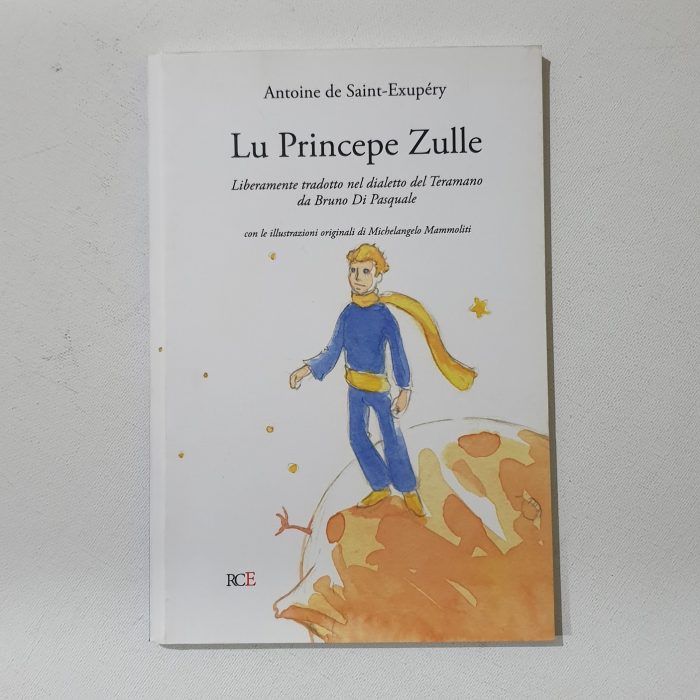
Lu Princepe Zulle — in Teramano, a dialect of Neapolitan language spoken in the province of Teramo; northern province of Pescara: Atri, Abruzzo.
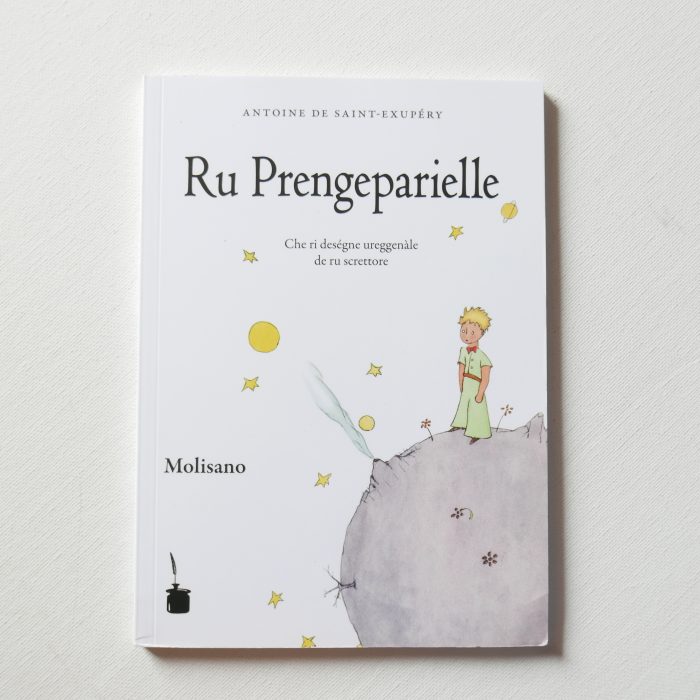
Ru Prengeparielle — in Molisano, a dialect of the Neapolitan language spoken in the Molise region of Southern Italy.
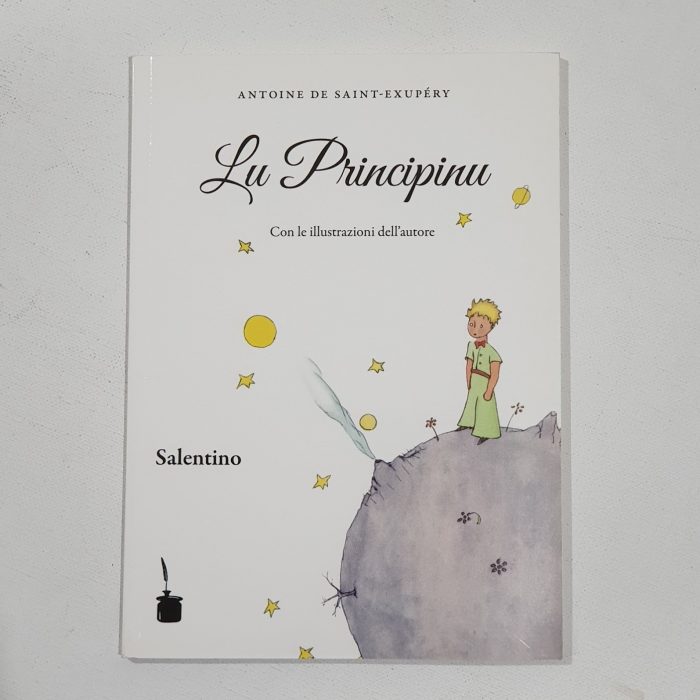
Lu Principinu — in Salentino, a dialect of the Sicilian language spoken in the Salento region (province of Lecce, almost all the province of Brindisi, and part of the province of Taranto).
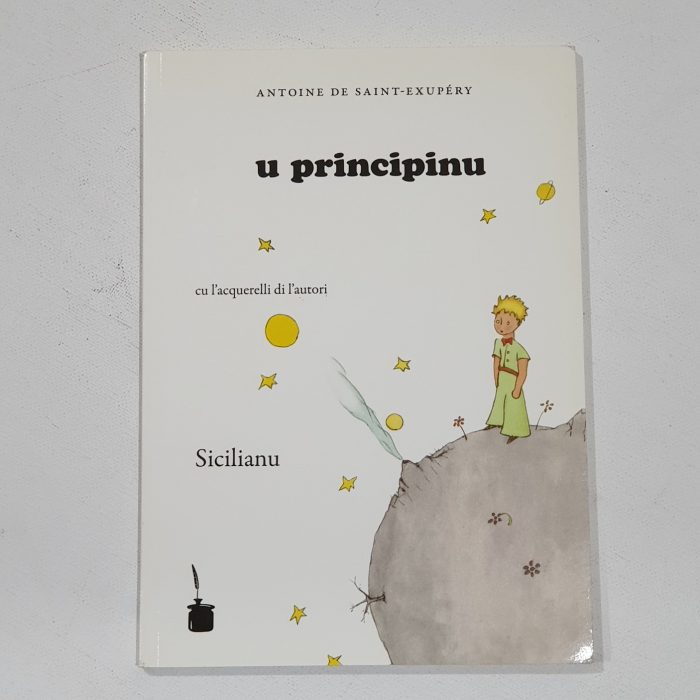
U Principinu — in Sicilian, which is a Romance language spoken on the island of Sicily and its satellite islands. It is also spoken in southern Calabria (where it is called Southern Calabro), specifically in the Province of Reggio Calabria, whose dialect is viewed as being part of the continuum of the Sicilian language.
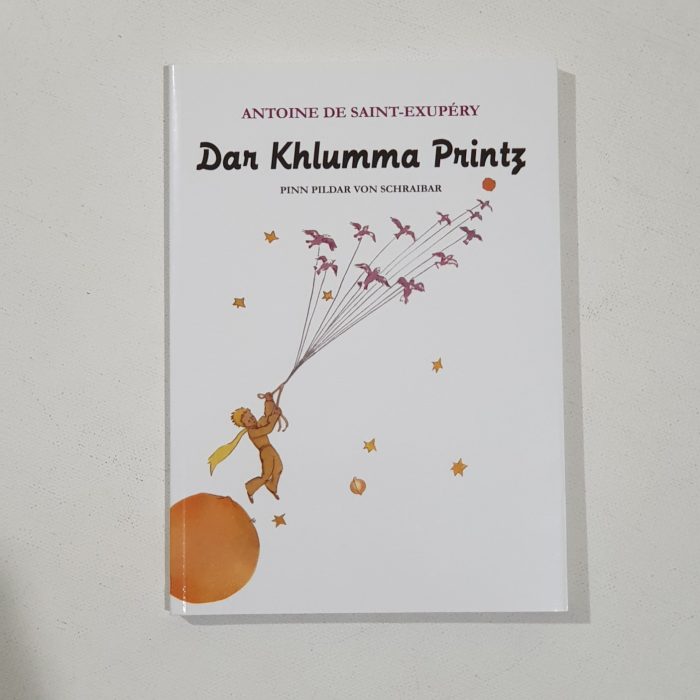
Dar Khlumma Printz — in Cimbrian. Cimbrian refers to any of several local Upper German varieties spoken in northeastern Italy. The speakers of the language are known as Zimbern. Cimbrian is a Germanic language related to Bavarian most probably deriving from a Southern Bavarian dialect (although a Lombardic origin cannot be ruled out). Its many essential differences in grammar as well as in vocabulary and pronunciation make it practically unintelligible for people speaking Standard German or Bavarian.

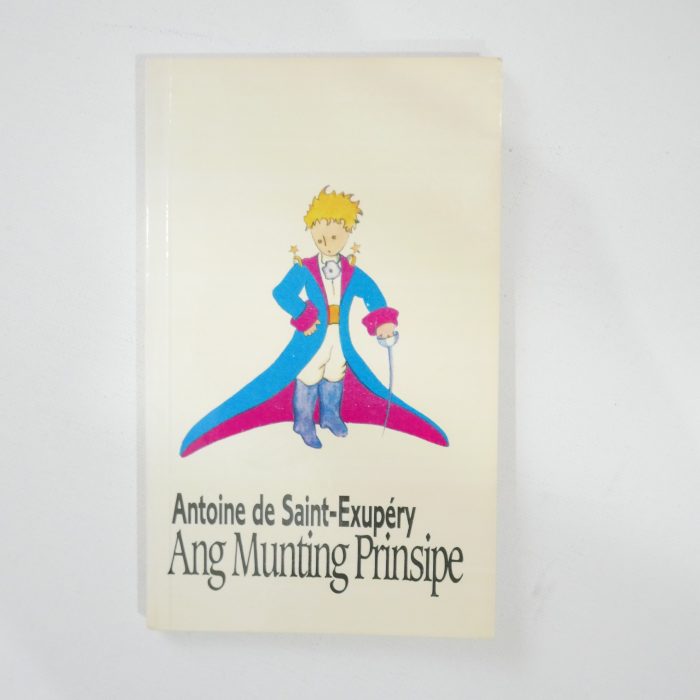
Ang Munting Prinsipe — in Tagalog, an Austronesian language spoken as a first language by a quarter of the population of the Philippines and as a second language by the majority.
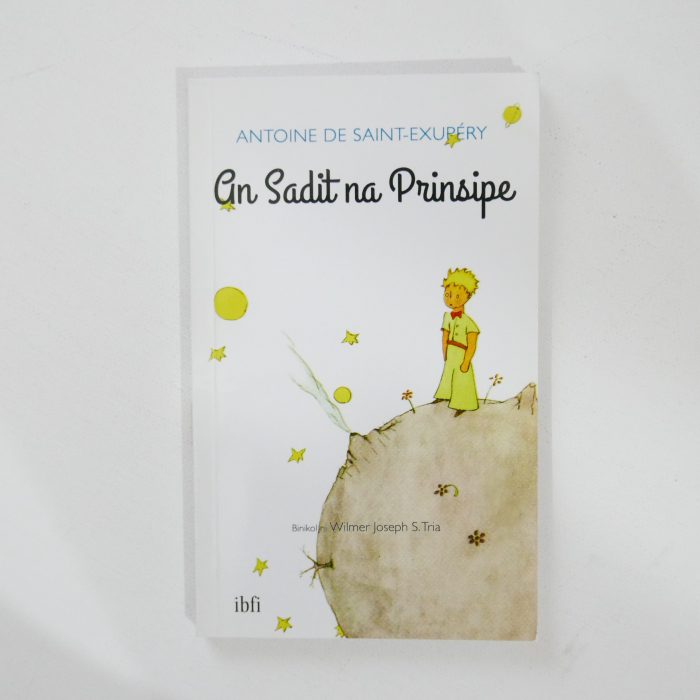
An Sadit na Prinsipe — in Bikol, a language spoken mostly on the Bicol Peninsula in the island of Luzon, the neighbouring island province of Catanduanes and the island of Burias of Masbate.
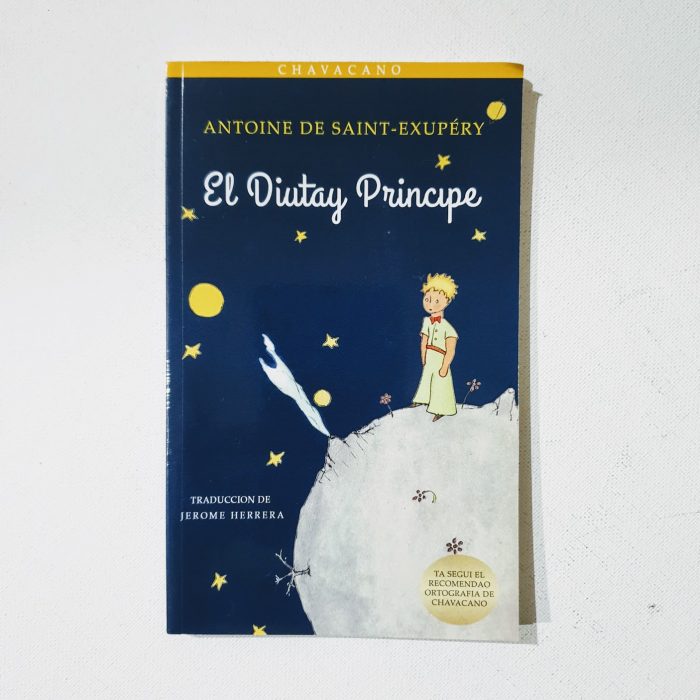
El Diutay Principe — in Chavacano / Chabacano, i.e. Spanish-based creole language varieties spoken in the Philippines. The variety spoken in Zamboanga City, located in the southern Philippine island group of Mindanao, has the highest concentration of speakers.

El Principe Niño — also in Chavacano / Chabacano.

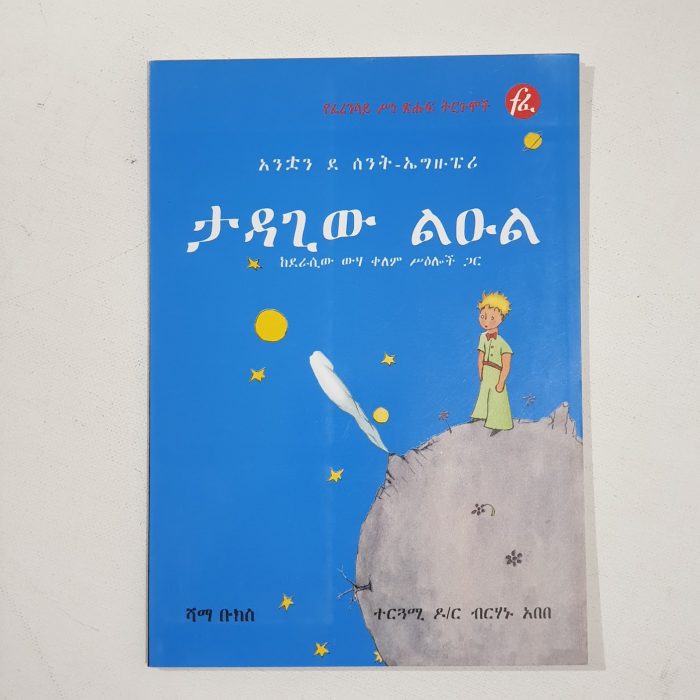
ታዳጊው ልዑል / Tadagiwe Leul — in Amharic letters & language used in Ethiopia. Amharic (አማርኛ) is one of the Ethiopian Semitic languages, which are a subgrouping within the Semitic branch of the Afroasiatic languages. It is spoken as a first language by the Amharas and as a lingua franca by other populations residing in major cities and towns of Ethiopia. The language serves as the official working language of Ethiopia, and is also the official or working language of several of the states within the Ethiopian federal system. Amharic is the second-most commonly spoken Semitic language in the world, after Arabic.
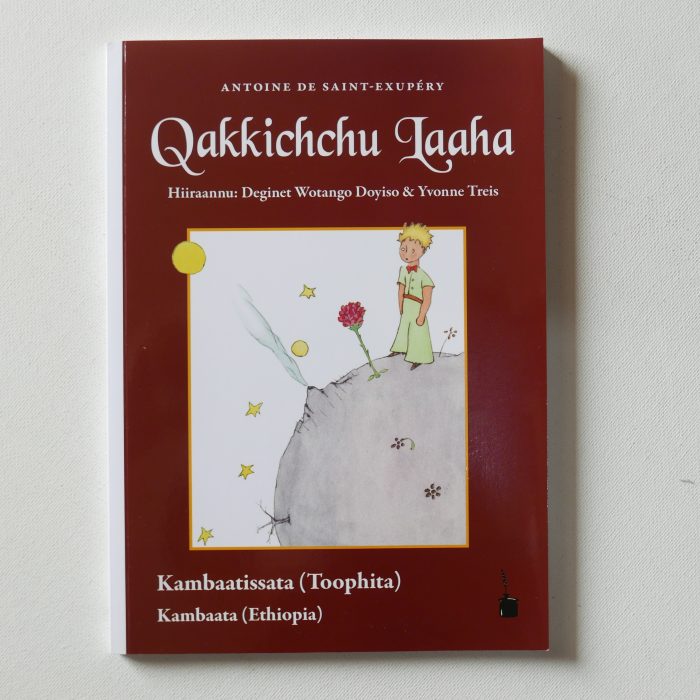
Qakkichchu Laaha — in Kambaata, a Highland East Cushitic language, part of the larger Afro-Asiatic family and spoken by the Kambaata people. Dialects are Kambaata, Tambaro, Alaba, and K’abeena. It is one of the official languages of Ethiopia.
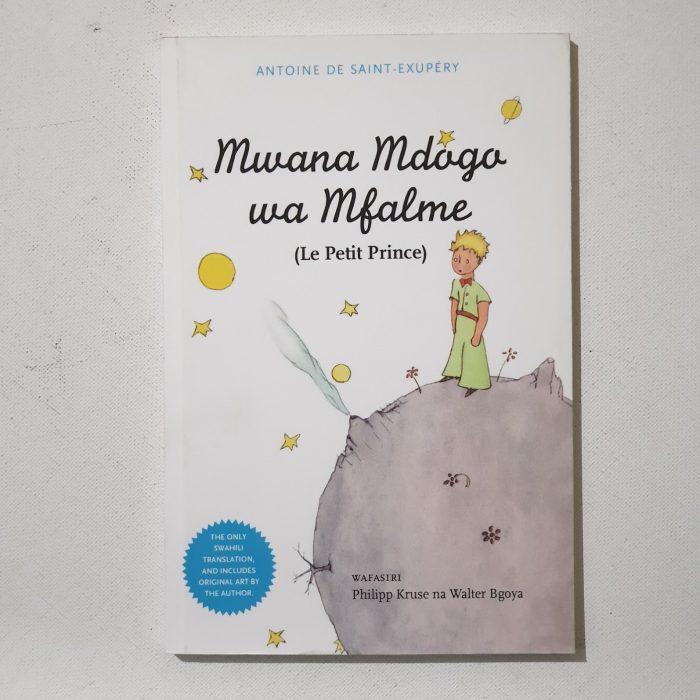
Mwana Mdogo wa Mfalme — in Swahili / Kiswahili, a Bantu language and the first language of the Swahili people. It is a lingua franca of the African Great Lakes region and other parts of eastern and south-eastern Africa, including Tanzania, Kenya, Uganda, Rwanda, Burundi, Mozambique, and the Democratic Republic of the Congo (DRC)

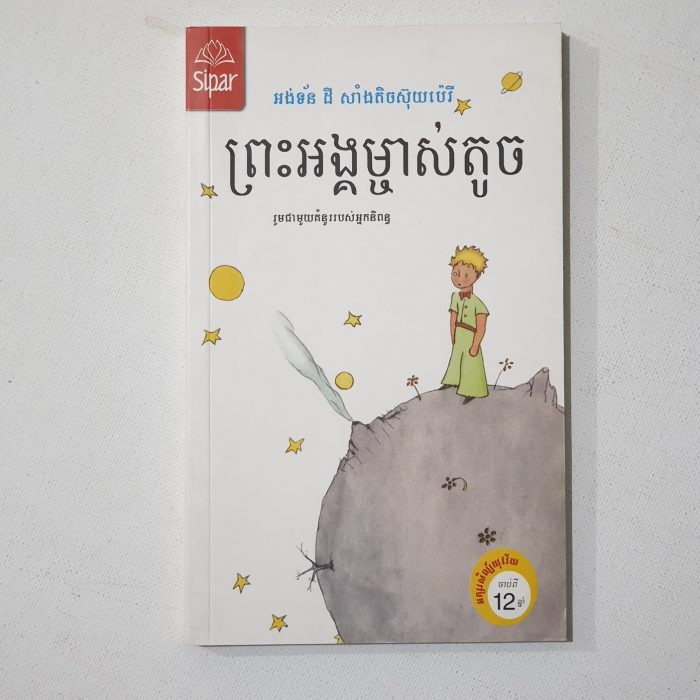
ព្រះអង្គម្ឆាស់តូច /Preah Angkmchah Toch, in Khmer. Khmer / Cambodian is the language of the Khmer people and the official language of Cambodia. With approximately 16 million speakers, it is the second most widely spoken Austroasiatic language (after Vietnamese). Khmer has been influenced considerably by Sanskrit and Pali, especially in the royal and religious registers, through Hinduism and Buddhism. The more colloquial registers have influenced, and have been influenced by, Thai, Lao, Vietnamese, and Cham, all of which, due to geographical proximity and long-term cultural contact, form a sprachbund in peninsular Southeast Asia.
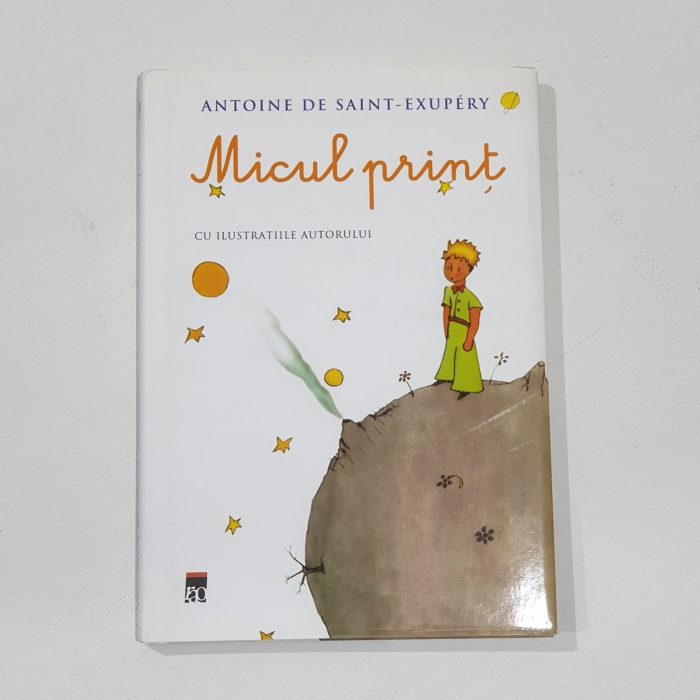
Micul Prinţ — in Romanian.
Romanian / Limba Română is an Eastern Romance language spoken as a native language primarily in Romania and Moldova. Romanian is a part of the Eastern Romance sub-branch of Romance languages, a linguistic group that evolved from several dialects of Vulgar Latin, which was separated from the Western Romance during the 5th–8th centuries. To distinguish it within that group in comparative linguistics it is called Daco-Romanian as opposed to its closest relatives, Aromanian, Megleno-Romanian, and Istro-Romanian.
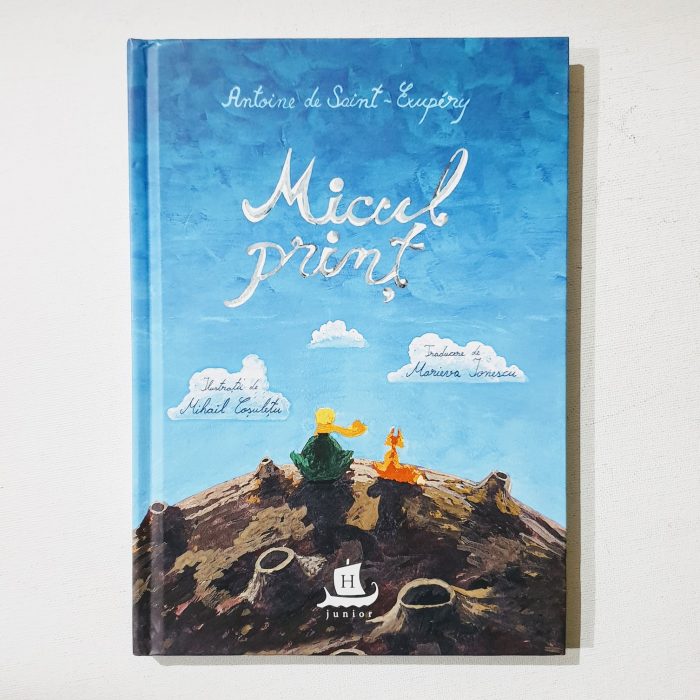
Somehow I call Romania my second home. Or third :). In 2001, I register a special domain for my personal site: KUN.CO.RO, and since then I considered myself as a virtual Romanian.
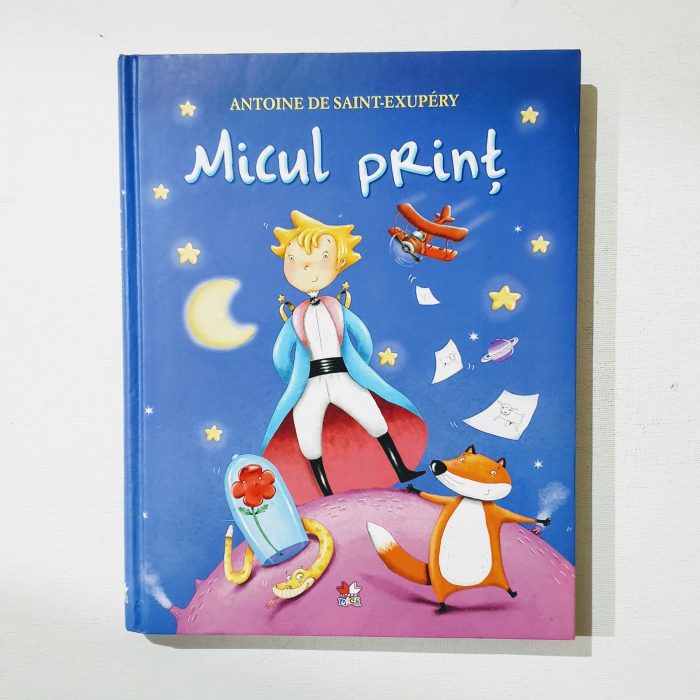
In June 2019, at last I could see Romania — visited Bucharest & Brasov. I bought 1 special edition of Micul Prinţ in each city.
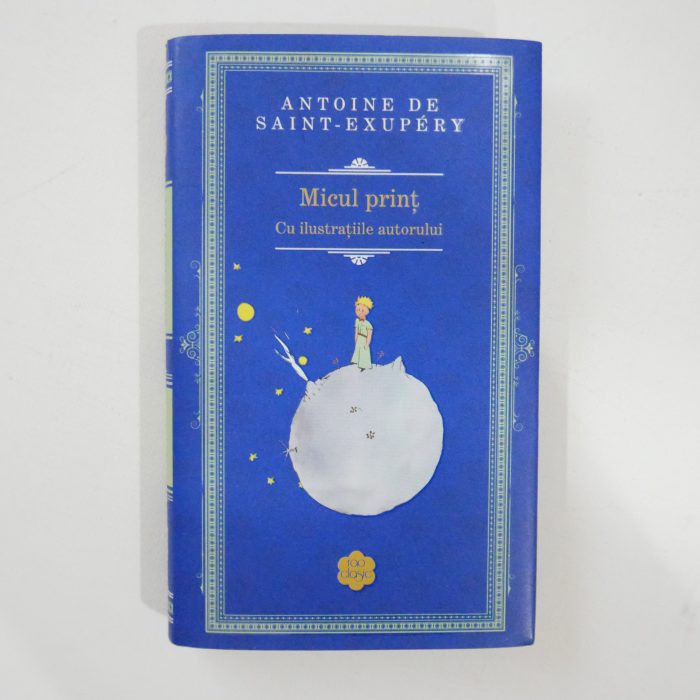

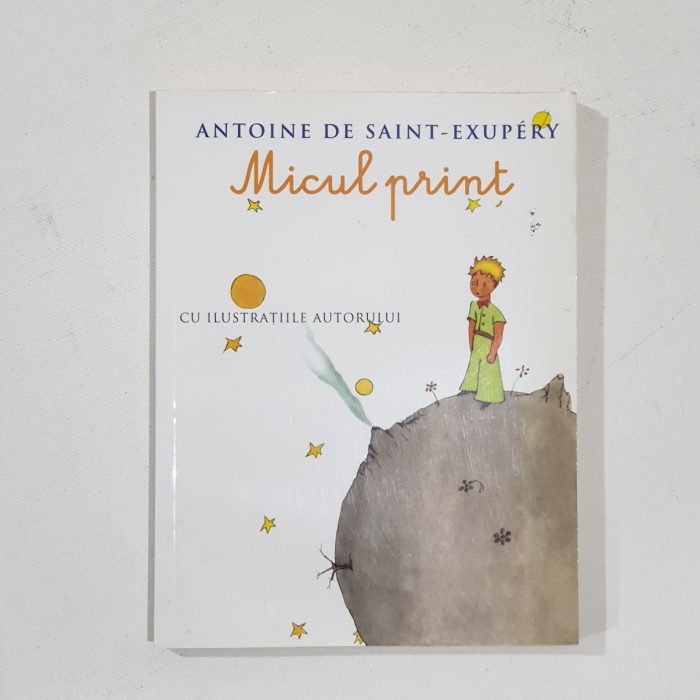
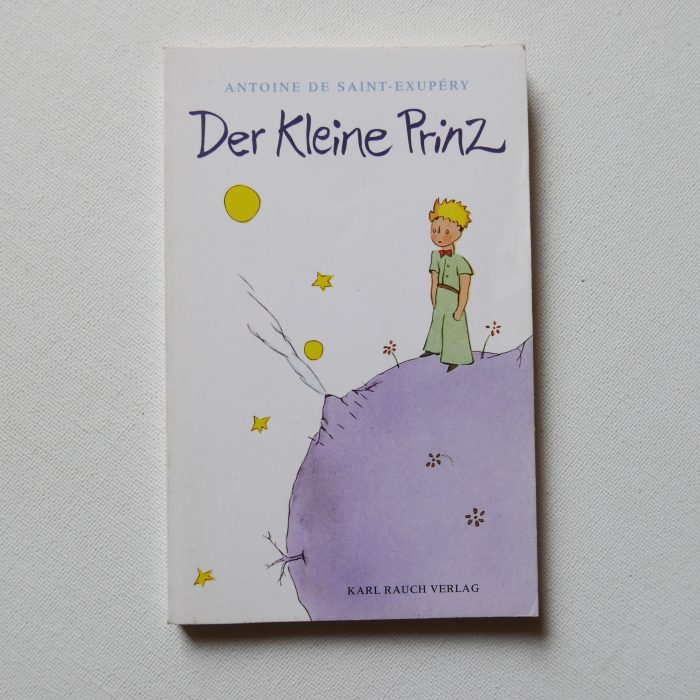
Der Kleine Prinz — in standard German.
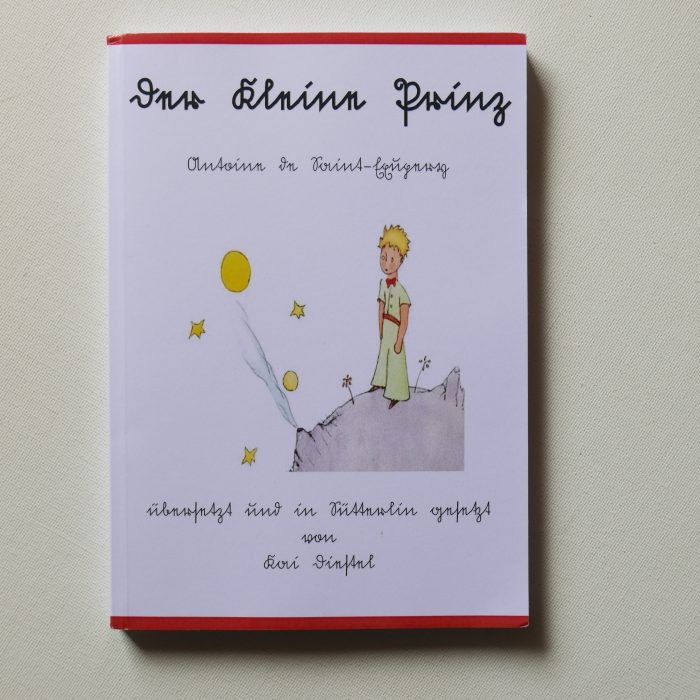
Der Kleine Printz — in Sütterlinschrift of standard German language

Der Kleine Printz — in Fraktur calligraphic typeface of standard German language
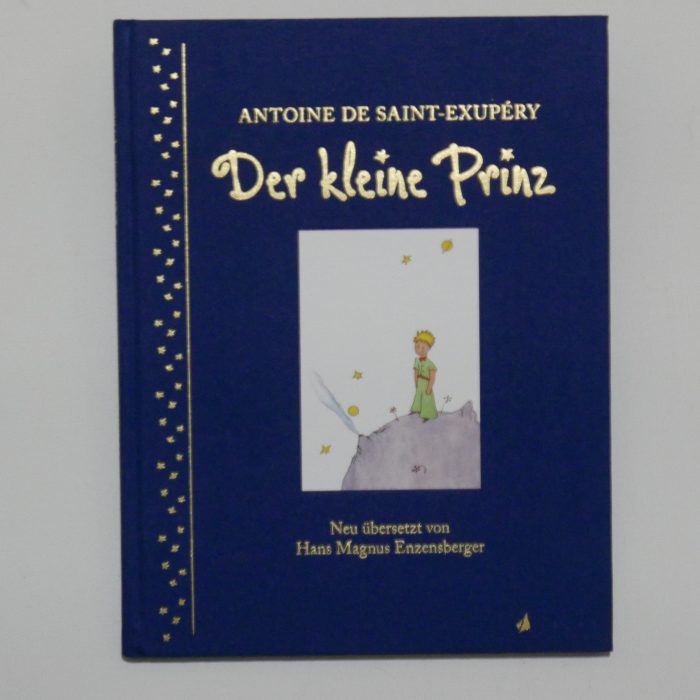
Der Kleine Prinz — in standard German.
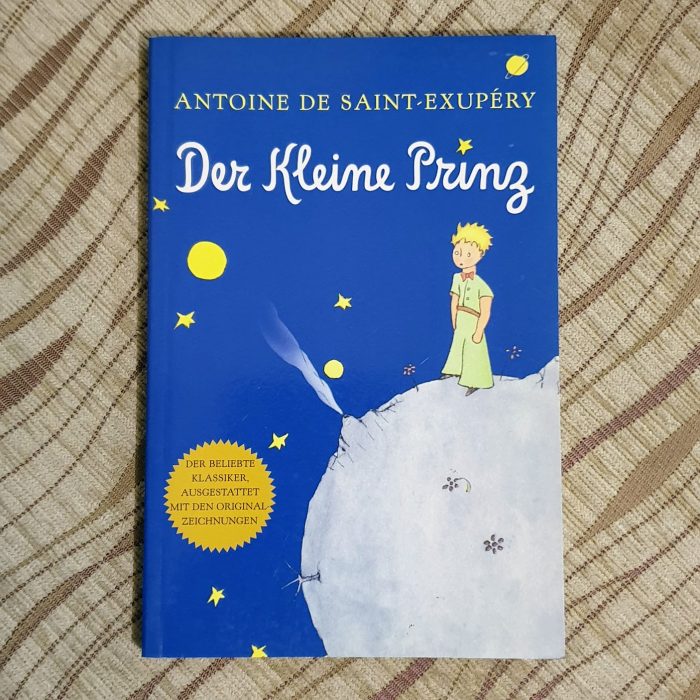
Der Kleine Prinz — in standard German.

Dher Luzzilfuristo — in old high German (Althochdeutsch).
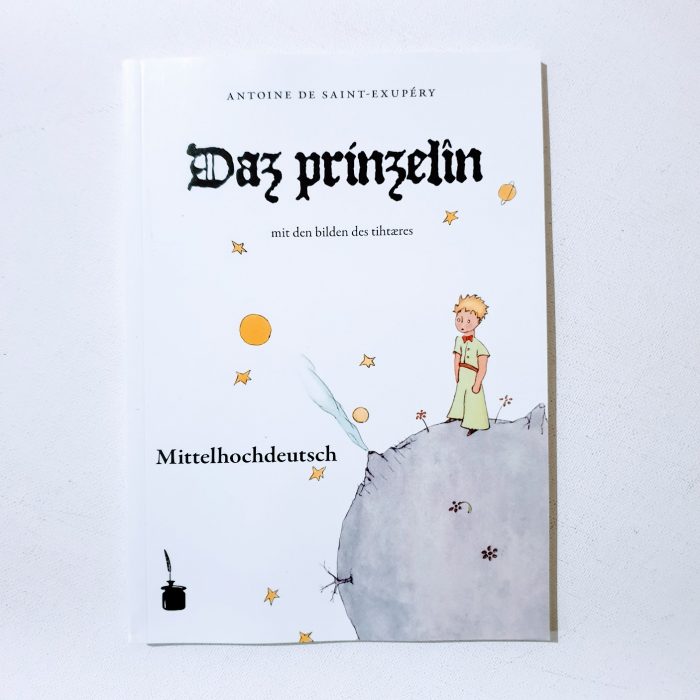
Daz Prinzelin — in Middle High German / Mittelhochdeutsch: a form of German language spoken in the High Middle Ages. It is conventionally dated between 1050 and 1350, developing from Old High German and into Early New High German.
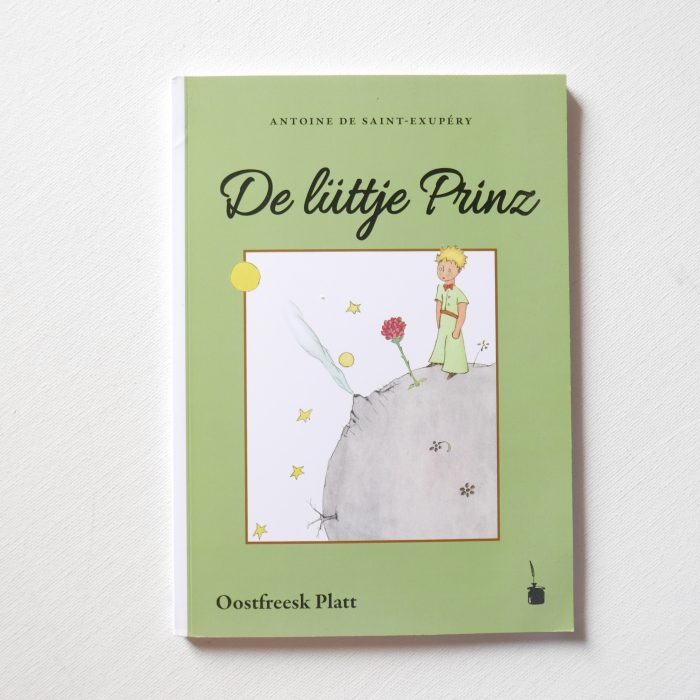
De Lüttje Prinz — in East Frisian language spoken in Niedersachsen.
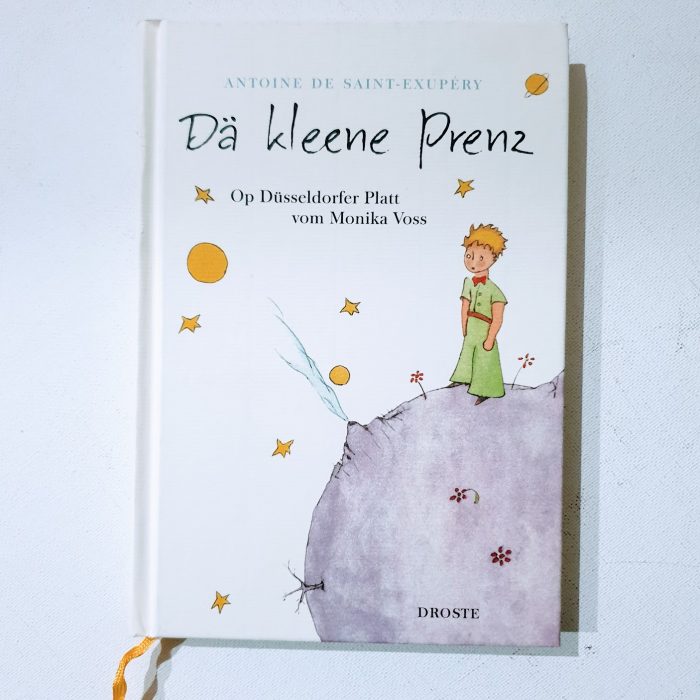
Dä Kleene Prenz — from Düsseldorf
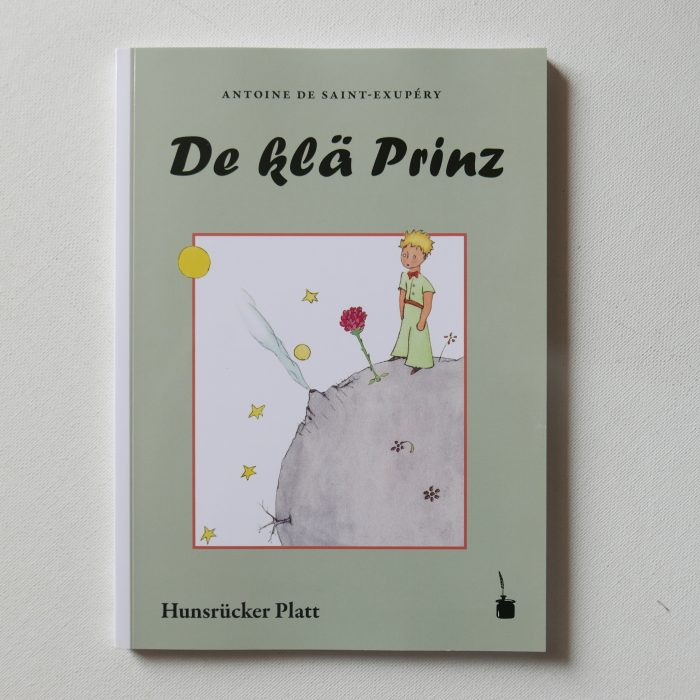
De Klä Prinz — from Hunsrück, Rheinland-Pfalz
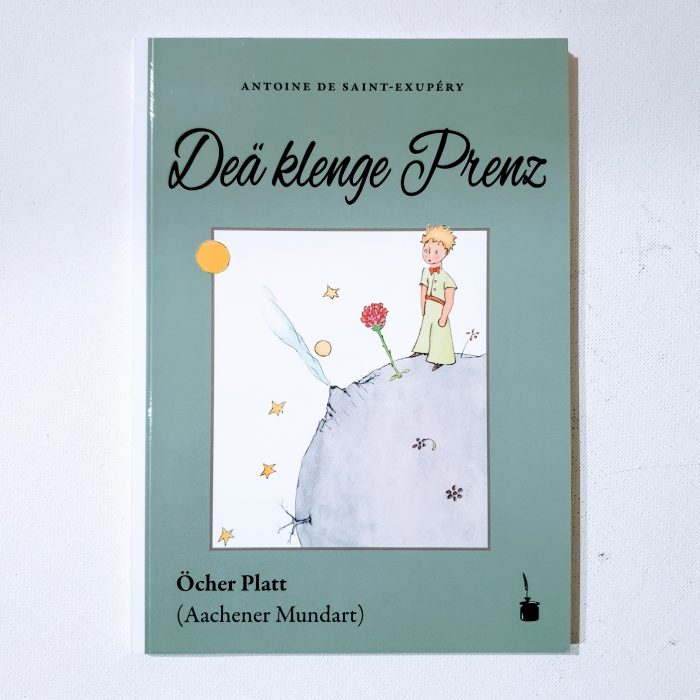
Deä Klenge Prenz — from Aachen
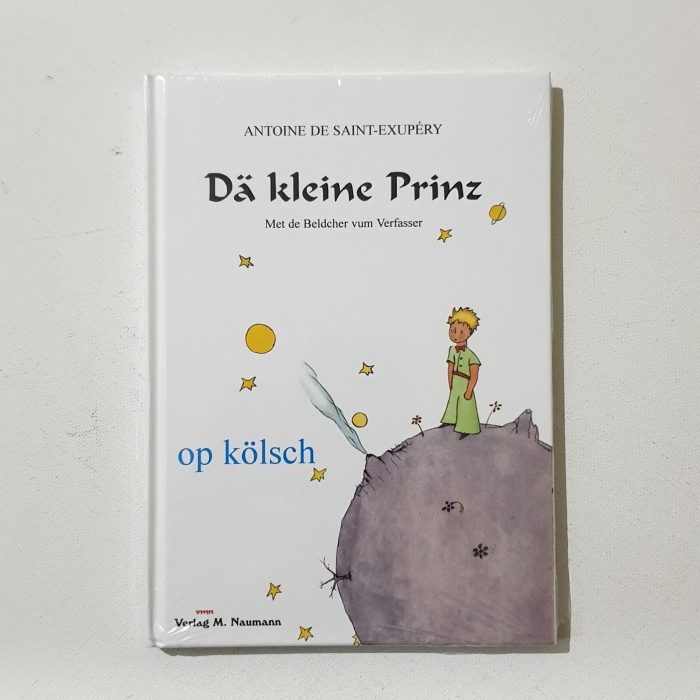
Dä Kleine Prinz — from Köln / Cologne
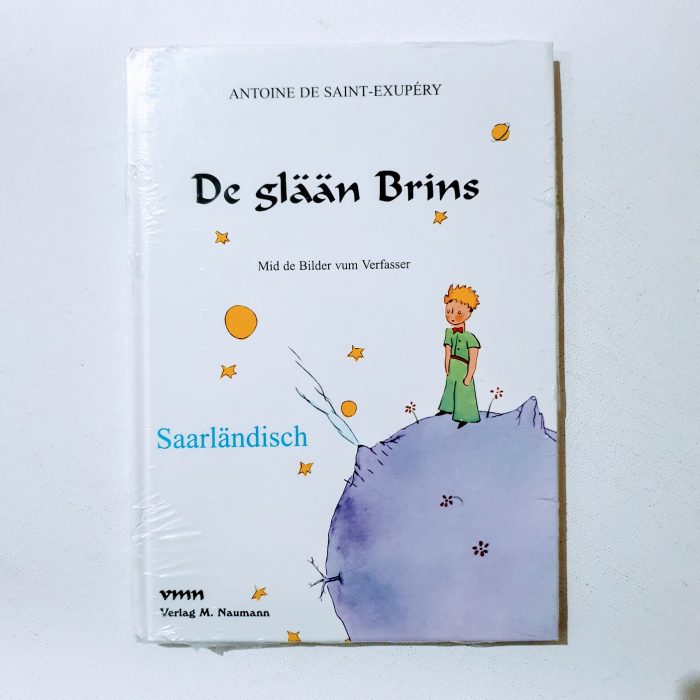
De Glään Brins — from Saarland

De Klaane Prinz — from Hessen
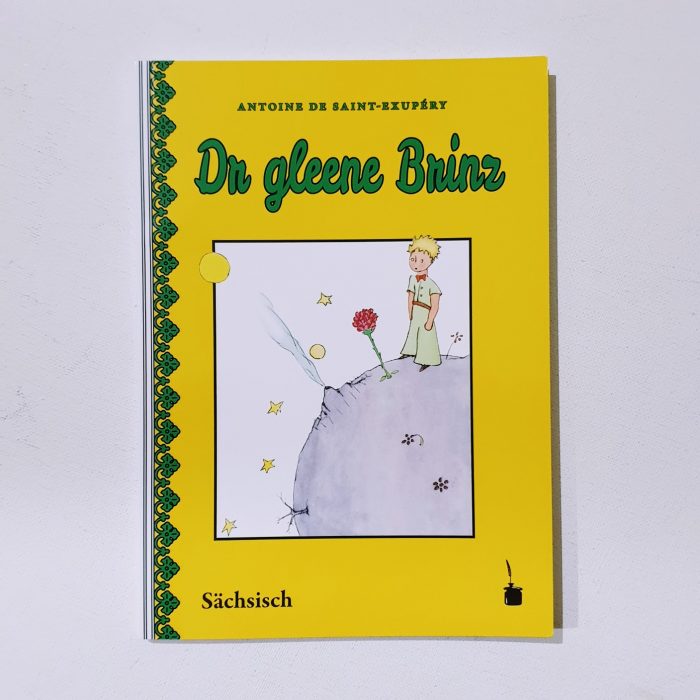
Dr Gleene Brins — in Saxon or Upper Saxon (Obersächsisch), an East Central German dialect spoken in much of the modern German State of Saxony and in the adjacent parts of Saxony-Anhalt and Thuringia. Though colloquially called Saxon (Sächsisch), it is not to be confused with the Low Saxon dialect group in Northern Germany.
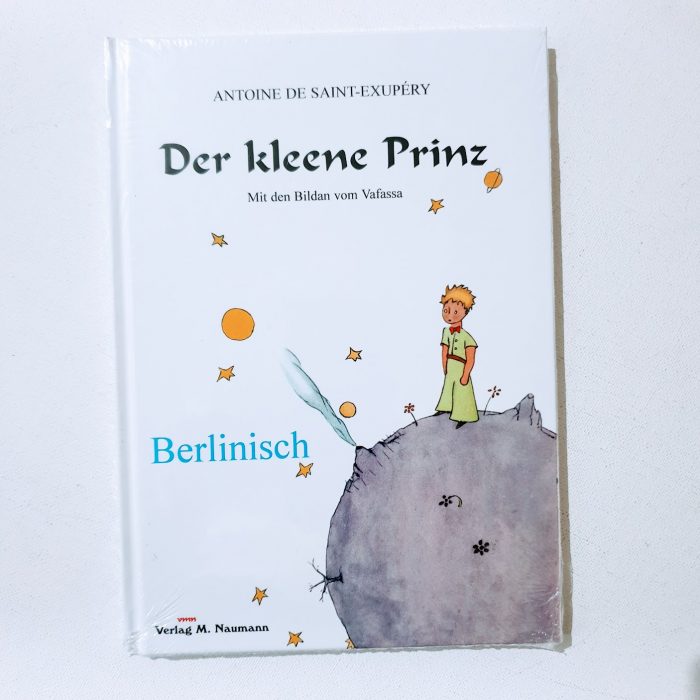
Der Kleene Prince — from Berlin
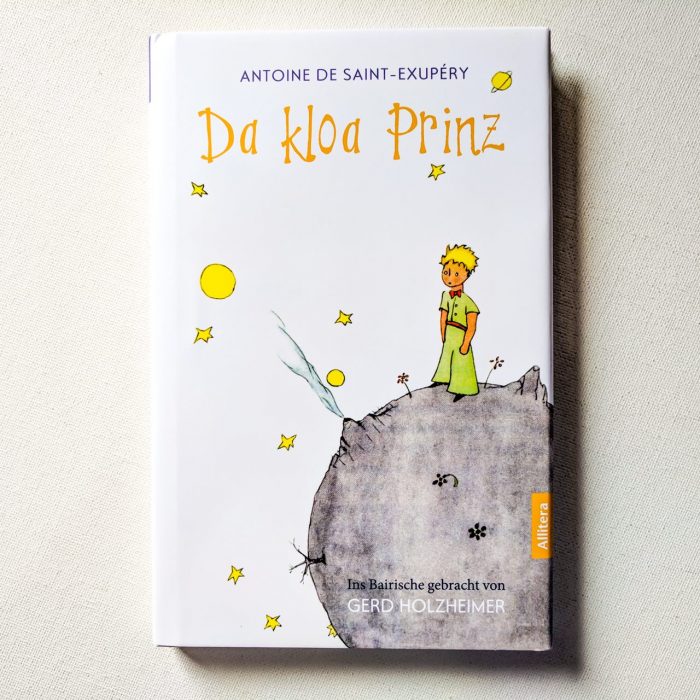
Da Kloa Prinz – in Bavarian. Bavarian (German: Bairisch; Bavarian: Boarisch) is a language belonging to Upper German group, spoken in Bavaria (German: Bayern), much of Austria, and South Tyrol in Italy.
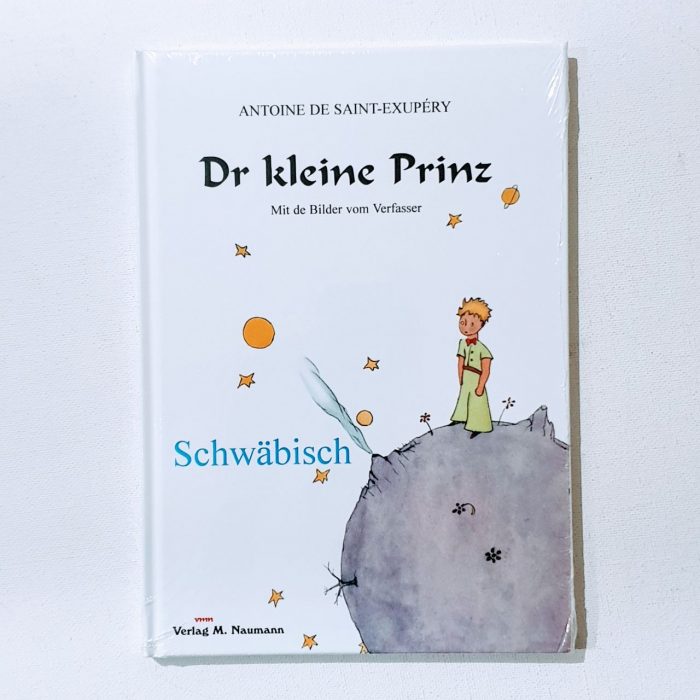
Dr Kleine Prinz — in Swabian. Swabian is one of the dialect groups of Alemannic German that belong to the High German dialect continuum. It is mainly spoken in Swabia which is located in central and southeastern Baden-Württemberg and the southwest of Bavaria.
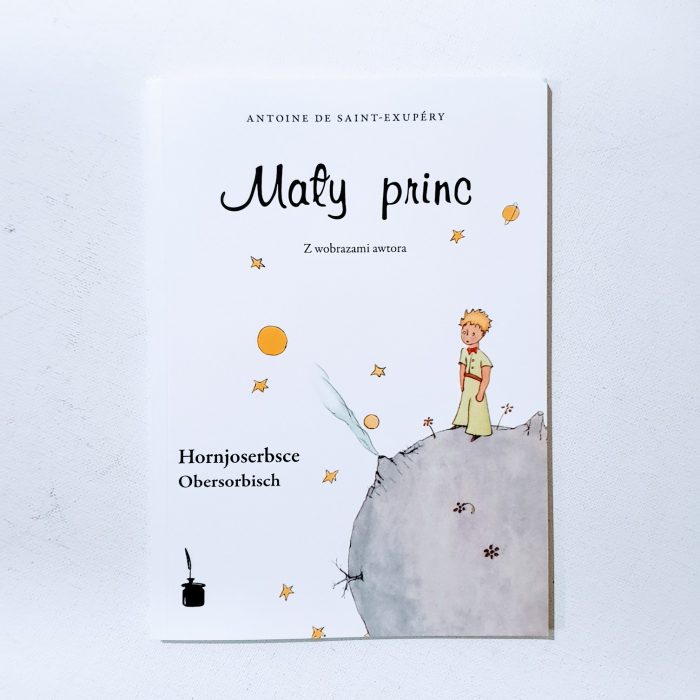
Mały Princ — in Upper Sorbian. Upper Sorbian (hornjoserbšće) is a minority language spoken by Sorbs in Germany in the historical province of Upper Lusatia, which is today part of Saxony. It is grouped in the West Slavic language branch, together with Lower Sorbian, Czech, Polish, Slovak and Kashubian.
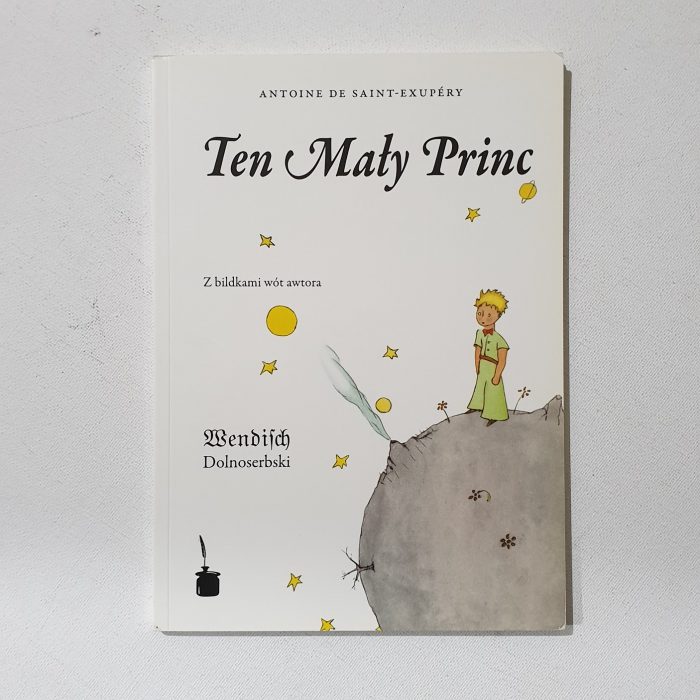
Ten Mały Princ — in Lower Sorbian (dolnoserbski), which is a Slavic minority language spoken in eastern Germany in the historical province of Lower Lusatia, today part of Brandenburg. It is one of the two literary Sorbian languages, the other being the more lively Upper Sorbian. Lower Sorbian is spoken in and around the city of Cottbus in Brandenburg. It is a heavily endangered language.


Be þam Lẏtlan Æþelinge, in Anglo Saxon language
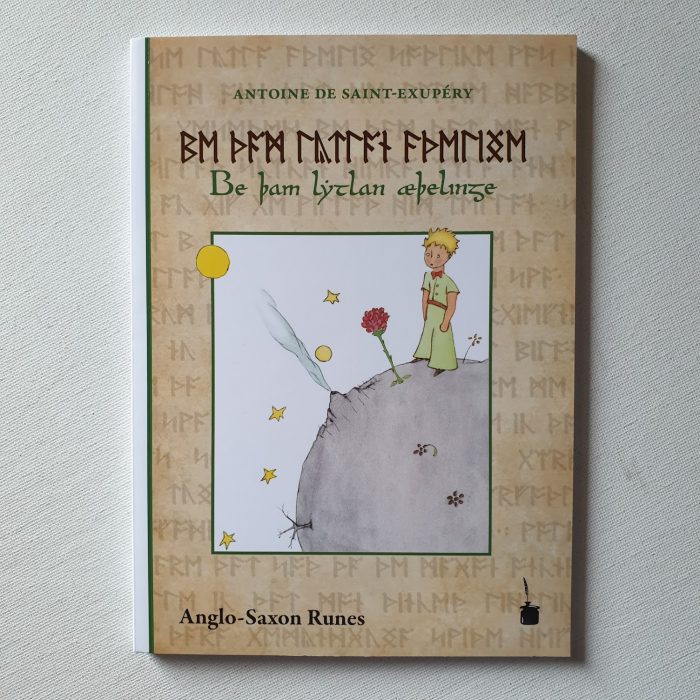
Be þam Lẏtlan Æþelinge, in Anglo Saxon Runes characters
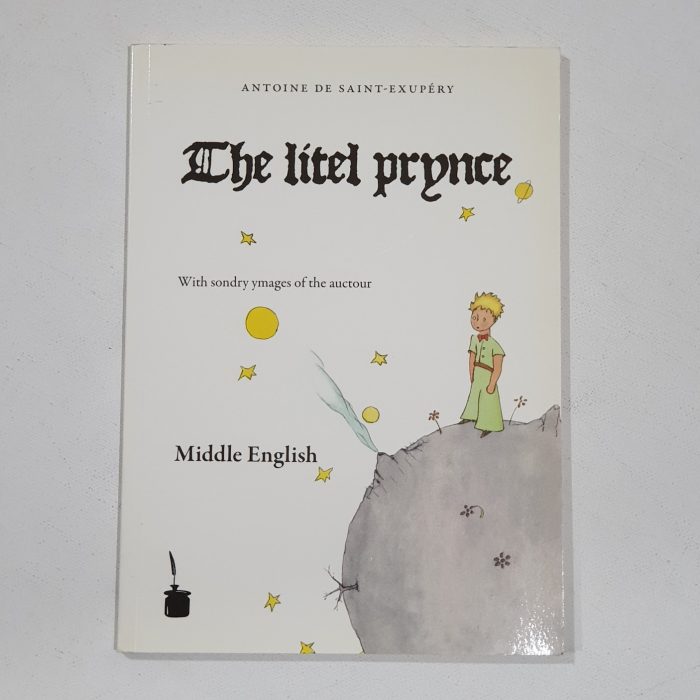
The Litel Prynce, in Middle English
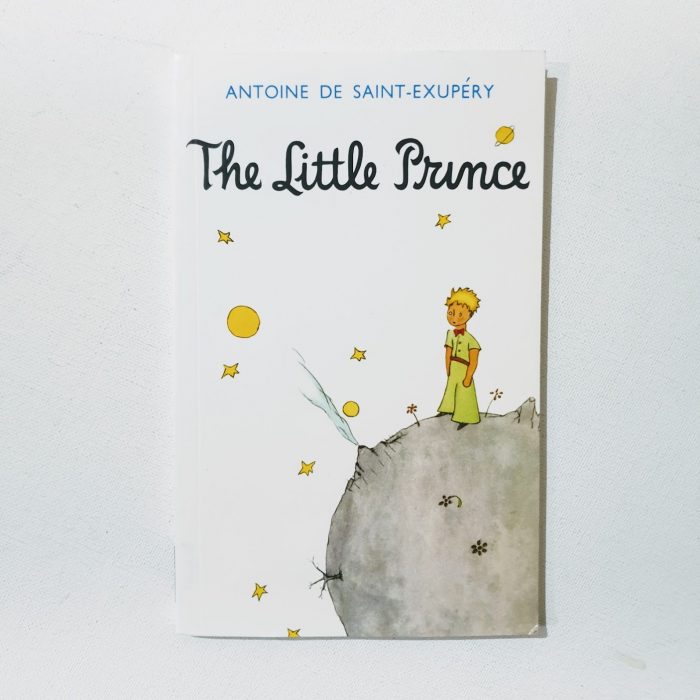
The Little Prince — in modern English.
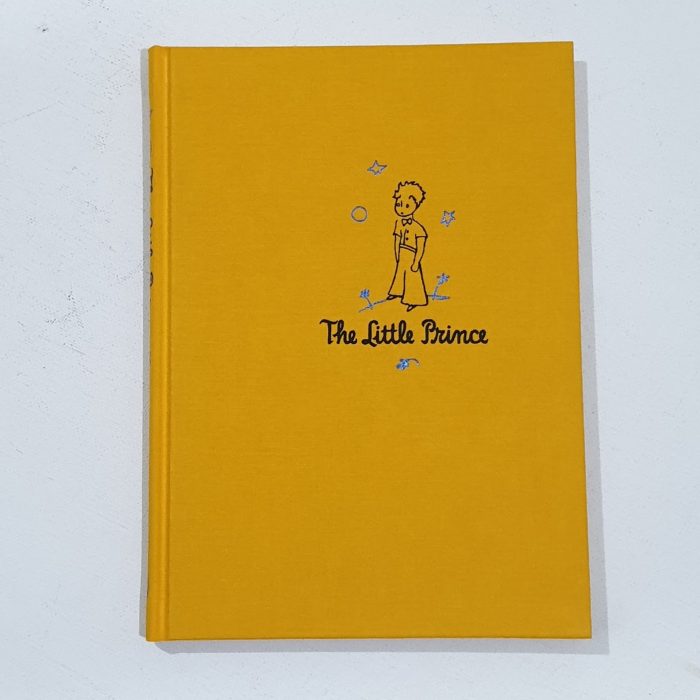
The Little Prince — special edition by the Folio Society
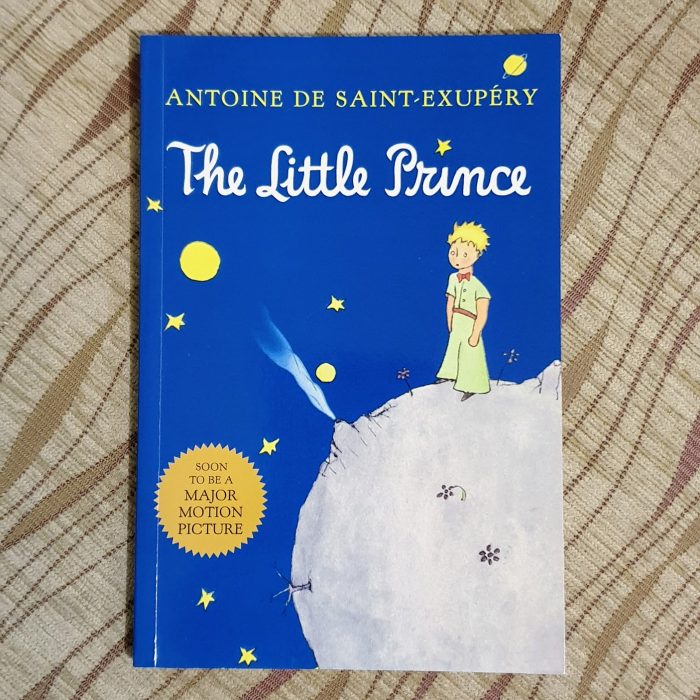
The Little Prince — in Modern English.
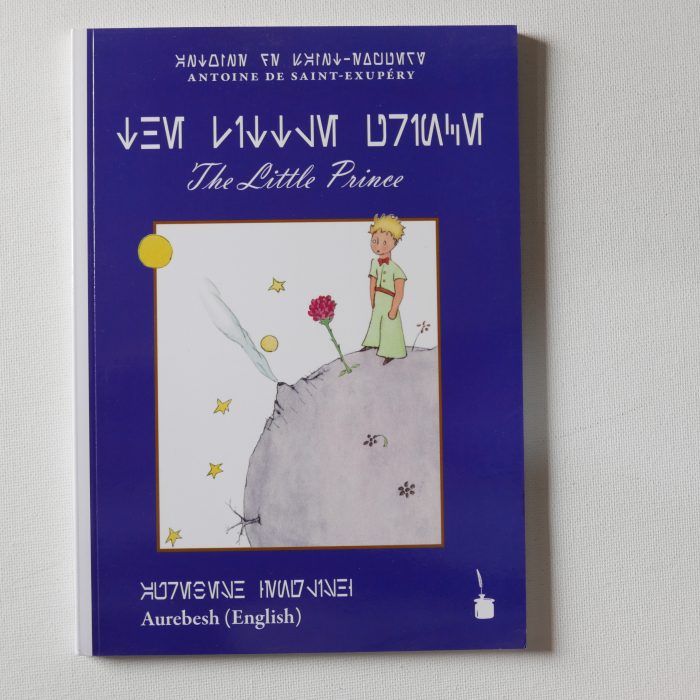
The Little Prince — in Star Wars script of English language
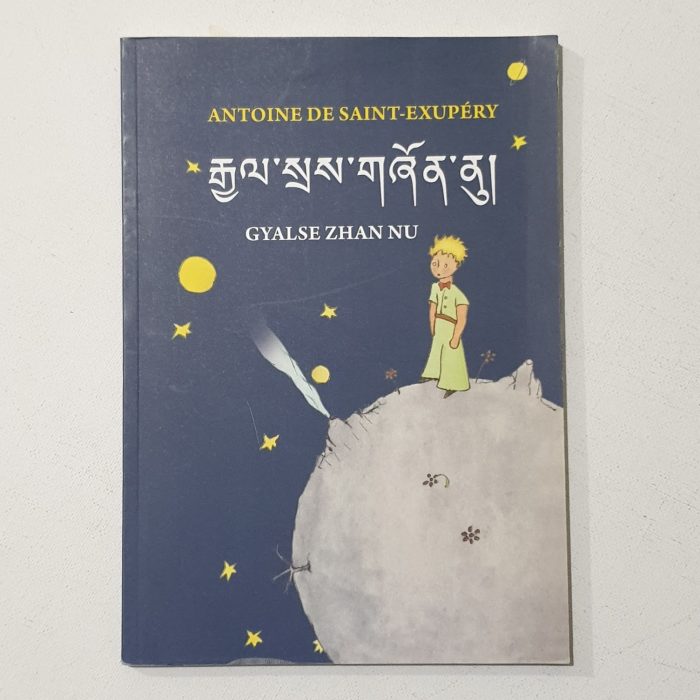
Gyalse Zhan Nu — in Dzongkha, a Sino-Tibetan language spoken by over half a million people in Bhutan and also national language of the Kingdom of Bhutan.
Malý Princ – in ceská / čeština language, which is a West Slavic language of the Czech–Slovak group. Spoken by over 10 million people, it serves as the official language of the Czech Republic. Like other Slavic languages, Czech is a fusional language with a rich system of morphology and relatively flexible word order. Its vocabulary has been extensively influenced by Latin and German.

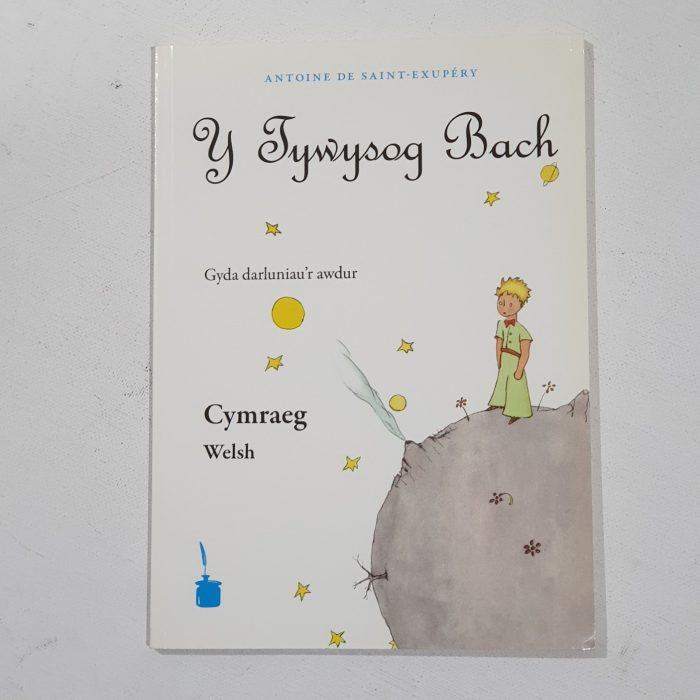
Y Tywysog Bach, in Welsh.
Welsh (Cymraeg) is also a Celtic language, spoken in Wales (Cymru), UK. I failed to visit Wales in 2001, due to a big flood. But a last I could make a visit to Cardiff (Caerdydd), Wales, in 2010. The use of dual languages – English & Welsh – make cities in Wales more interesting to visit.

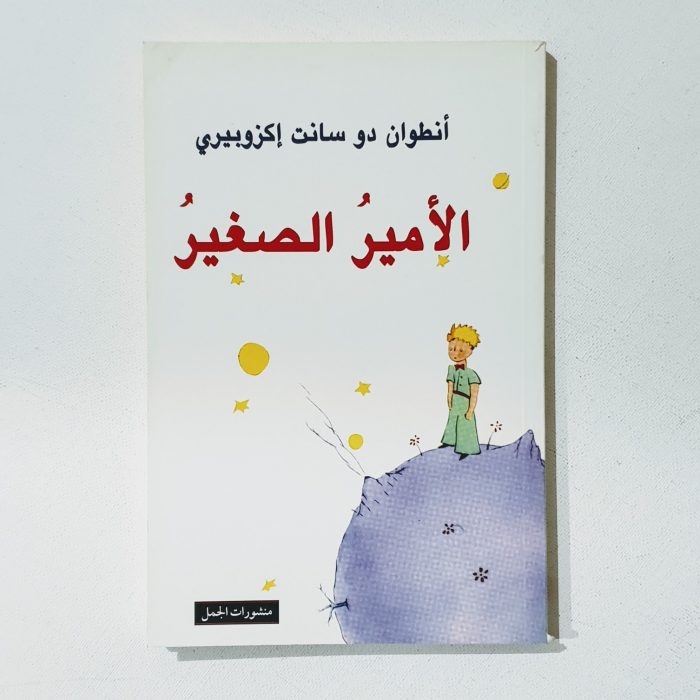
الأمير الصغير(Al Amirus Shaghir), in Arab language

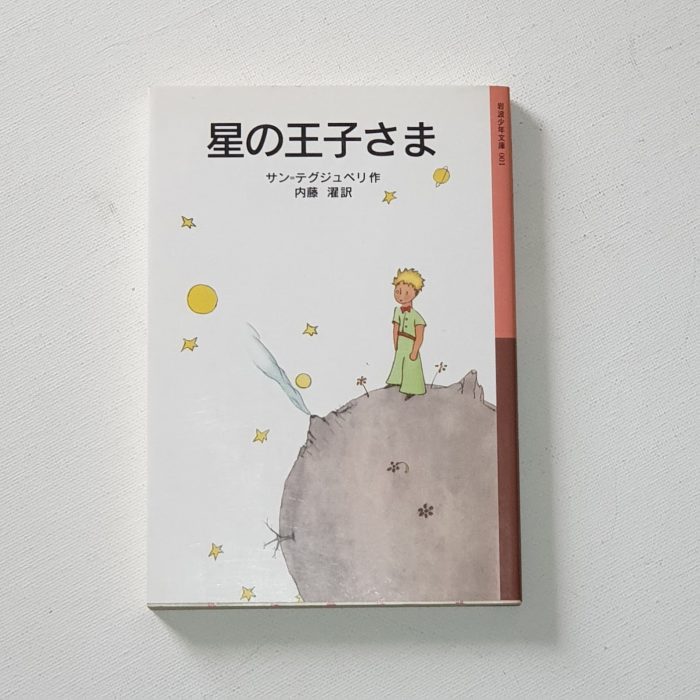
星の王子さま — in Japanese. Japanese / 日本語 / Nihongo is an East Asian language spoken by about 128 million people, primarily in Japan, where it is the national language. It is a member of the Japonic (or Japanese-Ryukyuan) language family, and its relation to other languages, such as Korean, is debated. Japanese has been grouped with language families such as Ainu, Austroasiatic, and the now-discredited Altaic, but none of these proposals has gained widespread acceptance.
Japanese has no genetic relationship with Chinese, but it makes extensive use of Chinese characters, or kanji (漢字), in its writing system, and a large portion of its vocabulary is borrowed from Chinese.
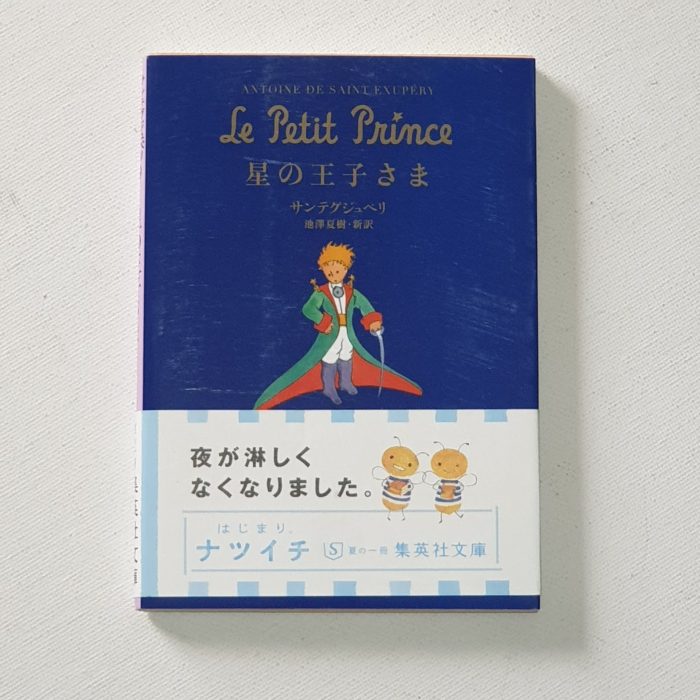
星の王子さま
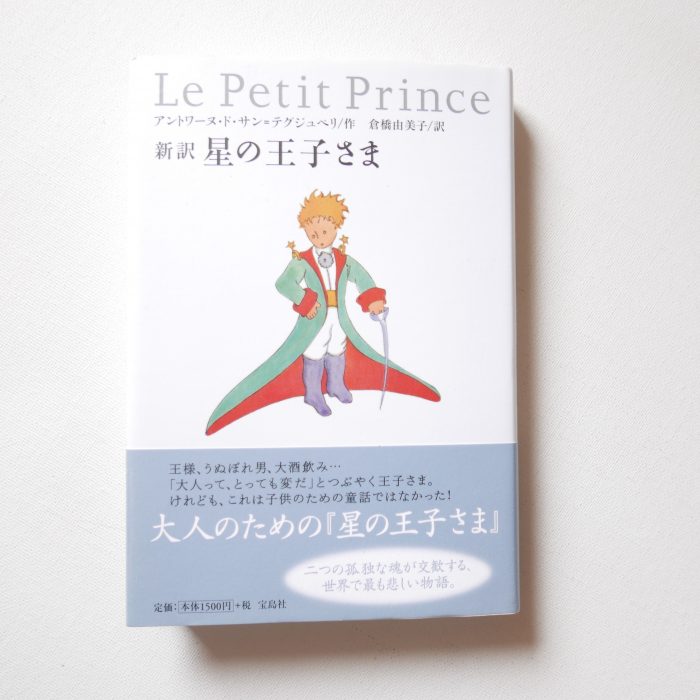
星の王子さま
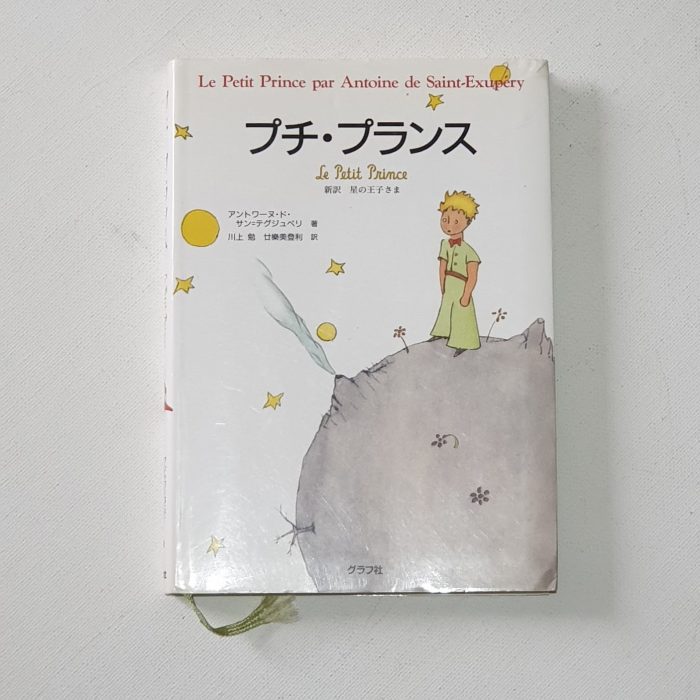
プチ・プランス — in hiragana and katakana characters combined with simple kanji, in Japanese language. Along with kanji, the Japanese writing system primarily uses two syllabic (or moraic) scripts, hiragana (ひらがな or 平仮名) and katakana (カタカナ or 片仮名).
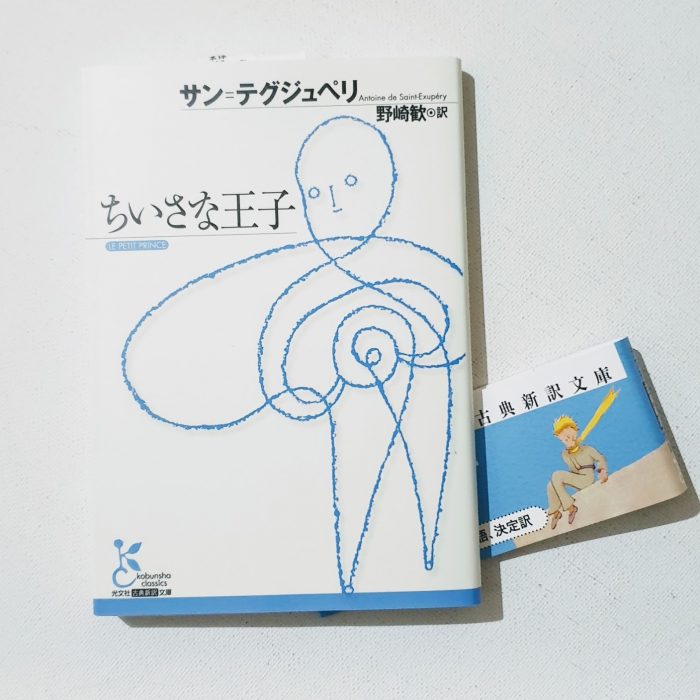
ちいさな王子 —

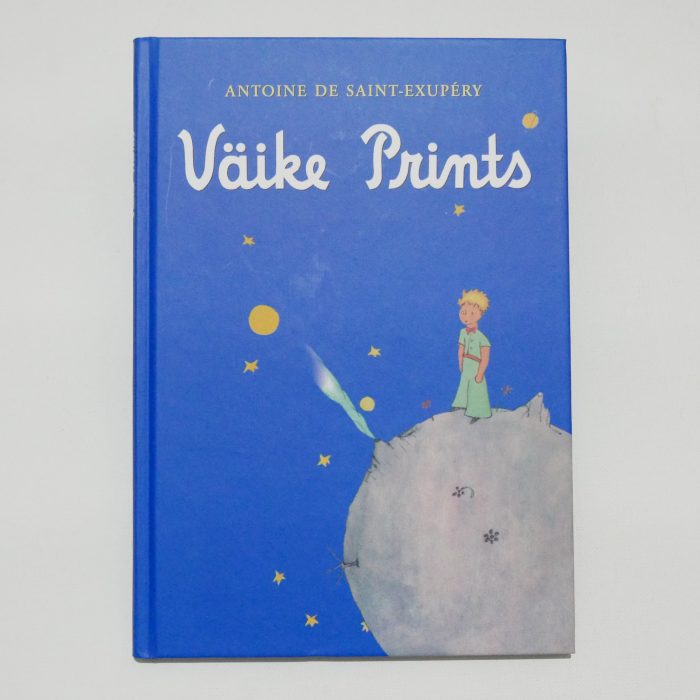
Väike Prints — in Estonian. Estonian is spoken natively by about 1 million people in Estonia. This language belongs to the Finnic branch of the Uralic language family.
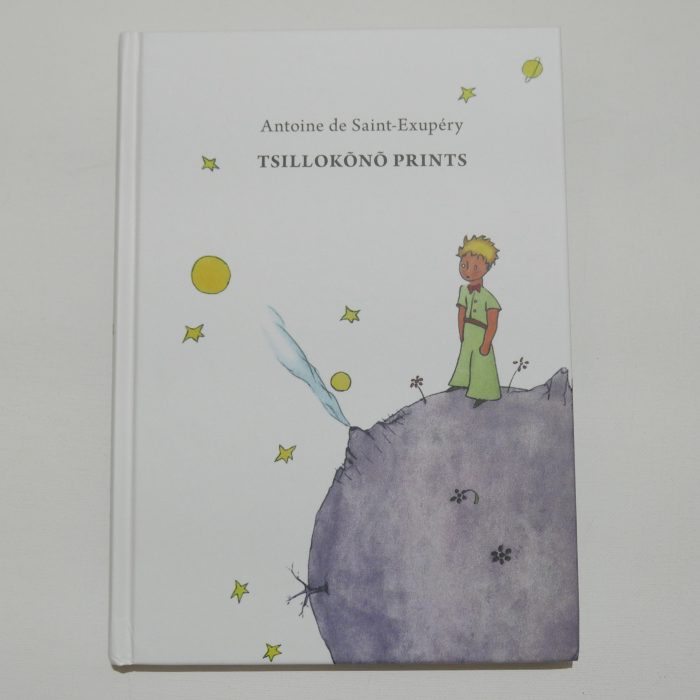
Tsillokõnõ Prints — in Seto, a language spoken by the Setos. Setos are an indigenous ethnic and linguistic minority in south-eastern Estonia and north-western Russia. The Seto language — like Finnish and Estonian — belongs to the Finnic group of the Uralic languages.

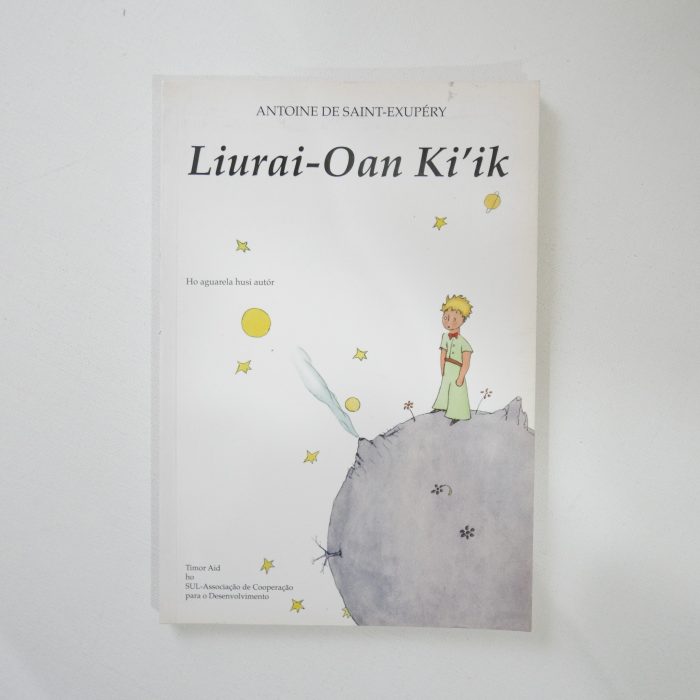
Liurai-Oan Ki’ik, in Tetun language spoken by East Timorese.
East Timor shares a land border with Indonesia. But it was very difficult to find this book from Indonesia, even via online. At last, Jean-Marc Probst sent this book from Genève. For free. Thanks, Jean-Marc.

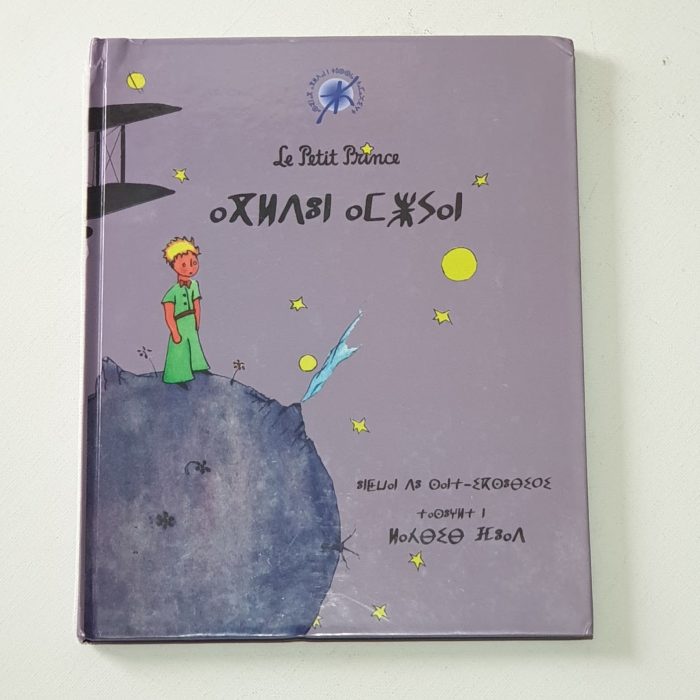
Agldun Amẓyan — in Berber Amazigh. Berber languages are spoken by around thirty to forty million people in Africa. These Berber speakers are mainly concentrated in Morocco and Algeria, followed by Mali, Niger and Libya. Tamazight is a generic name for all of the Berber languages. They consist of many closely related varieties/dialects. Among these Berber idioms are Riff, Kabyle, Shilha, Siwi, Zenaga, Sanhaja, Tazayit (Central Atlas Tamazight), Tumẓabt (Mozabite), Nafusi, and Tamasheq, as well as the ancient Guanche language.
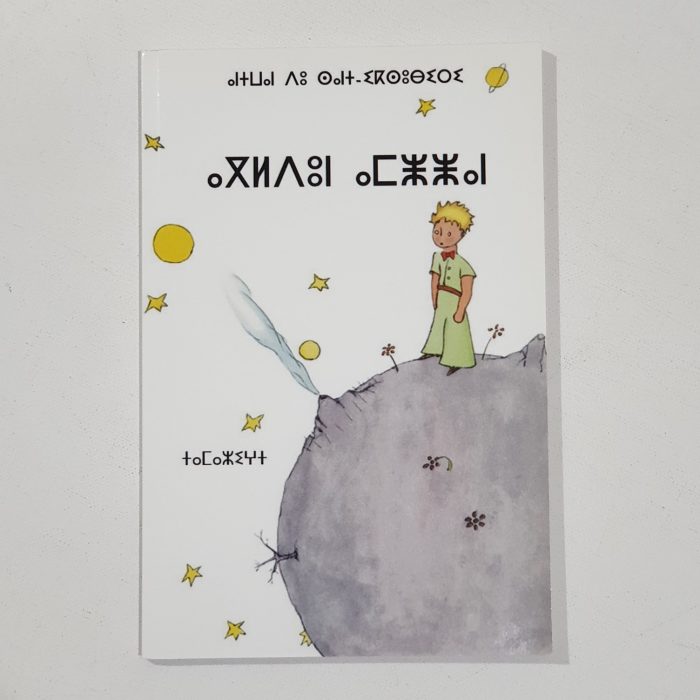
Agldun Amẓẓan — also in Berber Amazigh.
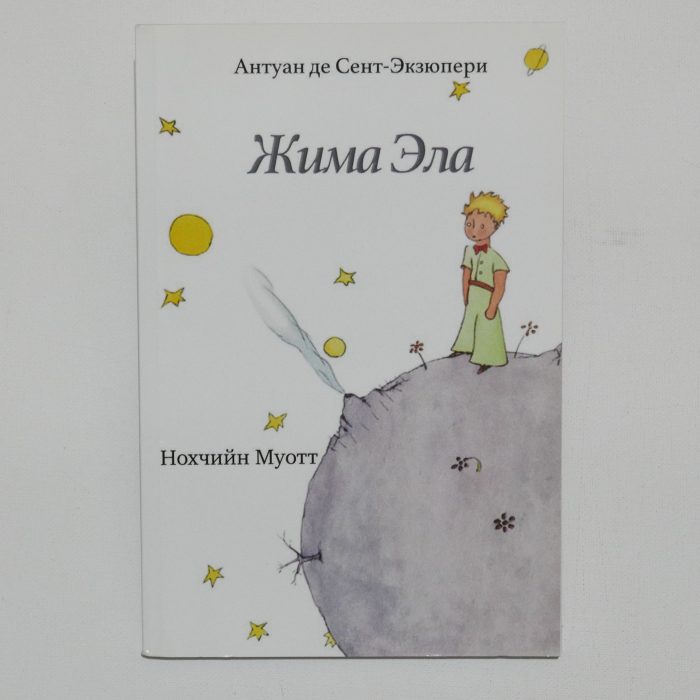
Жима Эла (Zhima Ela), in Chechen language. Chechen language (Нохчийн Мотт / نَاخچیین موٓتت / Nohçiyn Muot) is a Northeast Caucasian language spoken mostly in Chechnya (Чечня́ / Нохчийчоь / Noxçiyçö), currently a republic within Russia Federation.


Маленькі прынц (Malen’ki Prynts) – in Belarusian language (беларуская мова), which is an official language of Belarus. Before Belarus gained independence from the Soviet Union in 1991, the language was only known in English as Byelorussian or Belorussian, transliterating the Russian name, белорусский язык, or alternatively as White Ruthenian / White Russian (with the meaning Rus’ but not Russia).
Belarusian is one of the East Slavic languages and shares many grammatical and lexical features with other members of the group. To some extent, Russian, Ukrainian, and Belarusian are mutually intelligible. Its predecessor stage is known as Ruthenian.
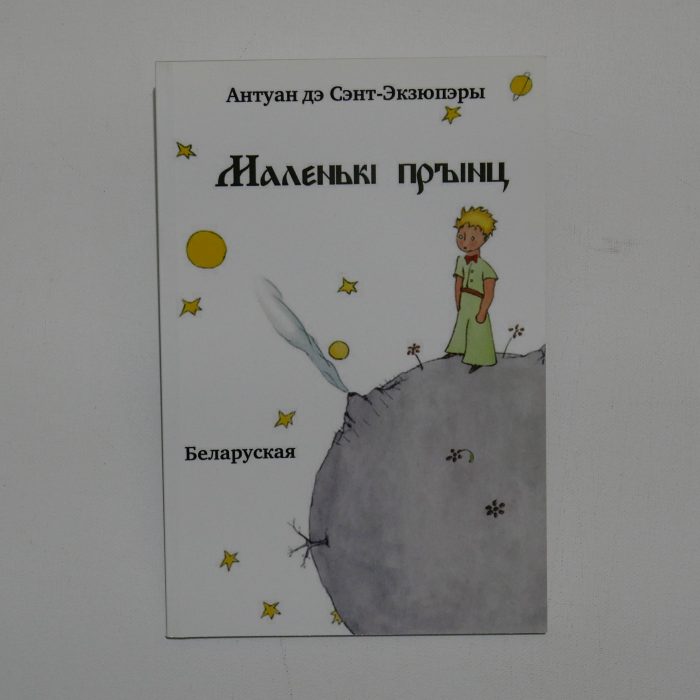
Маленькі прынц (Malen’ki Prynts) – also in Belarusian language.

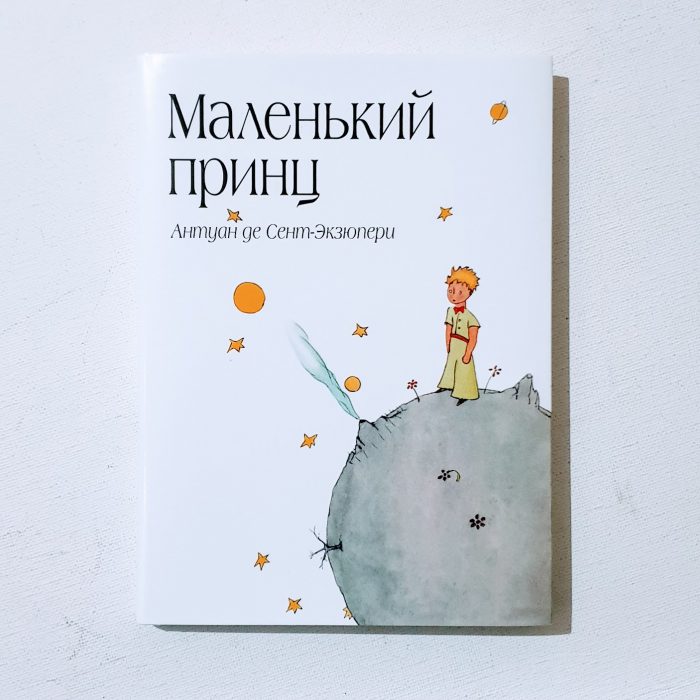
Маленький Принц (Malenky Prints) — published by Eksmo, Moscow 2019.
This book is in Russian (русский язык), an East Slavic language, which is official in the Russian Federation, as well as being widely used throughout Eastern Europe, the Baltic states, the Caucasus and Central Asia. It was the de facto language of the Soviet Union until its dissolution on 25 December 1991. Russian is the largest native language in Europe and the most geographically widespread language in Eurasia. It is the most widely spoken of the Slavic languages, with 144 million speakers in Russia, Ukraine and Belarus. Russian is the eighth most spoken language in the world by number of native speakers and the seventh by total number of speakers.
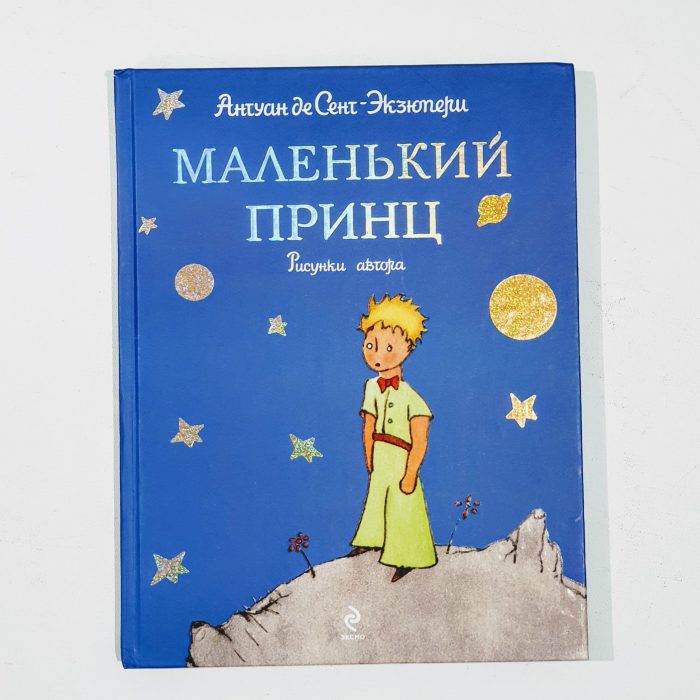
Маленький Принц (Malenky Prints) — published by Eksmo, Moscow 2014.
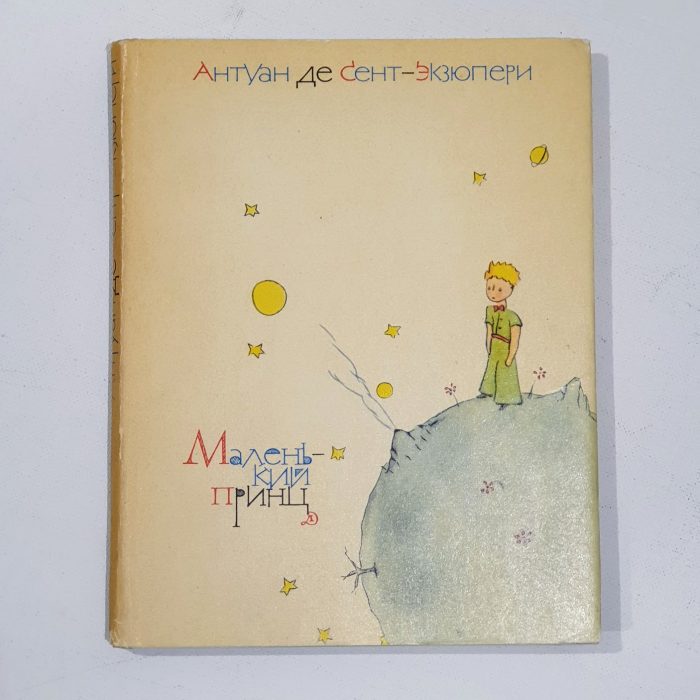
Маленький Принц (Malenky Prints) — published by Detskaya Literatura, Moscow 1967.

Маленький Принц (Malenky Prints) — published by Detskaya Literatura, Moscow 2004. The first Russian translation I got. The printing technology used will remind us of old time books.

Le Petit Prince, in French language, published by different publishers in years:
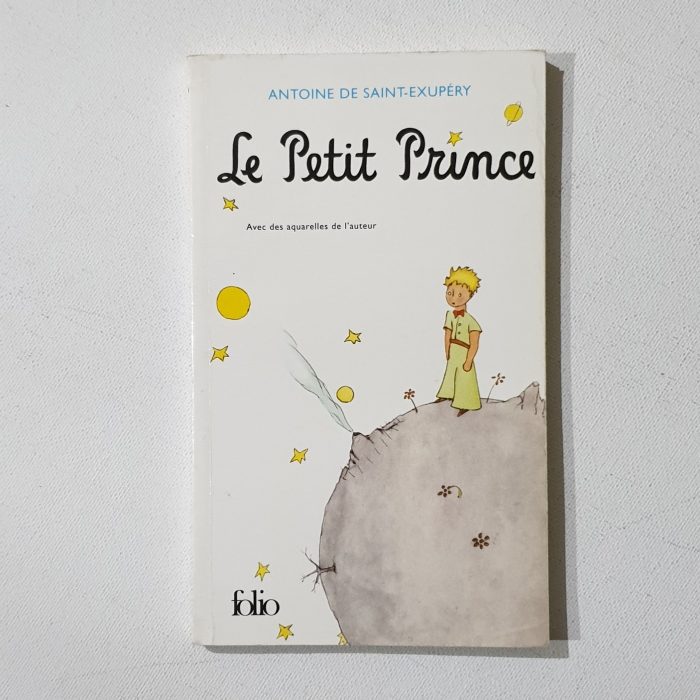
— published by Folio
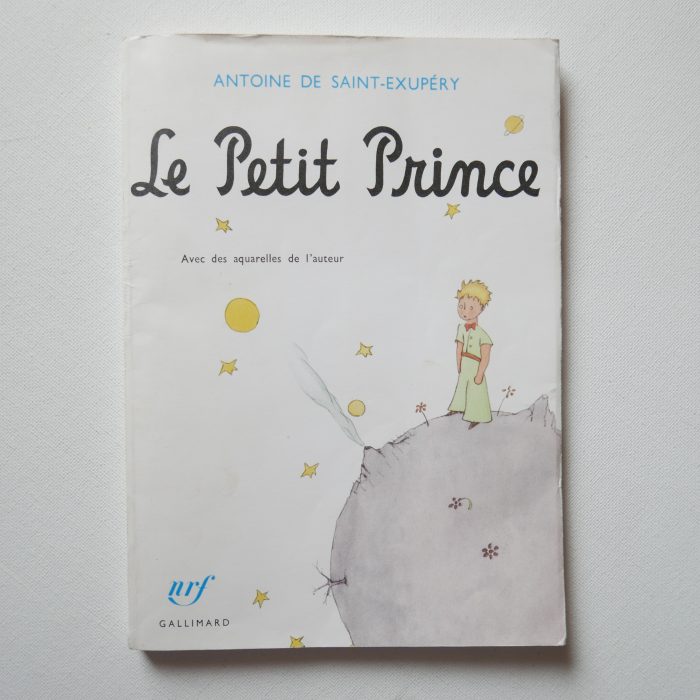
— published by Gallimard, 1999.
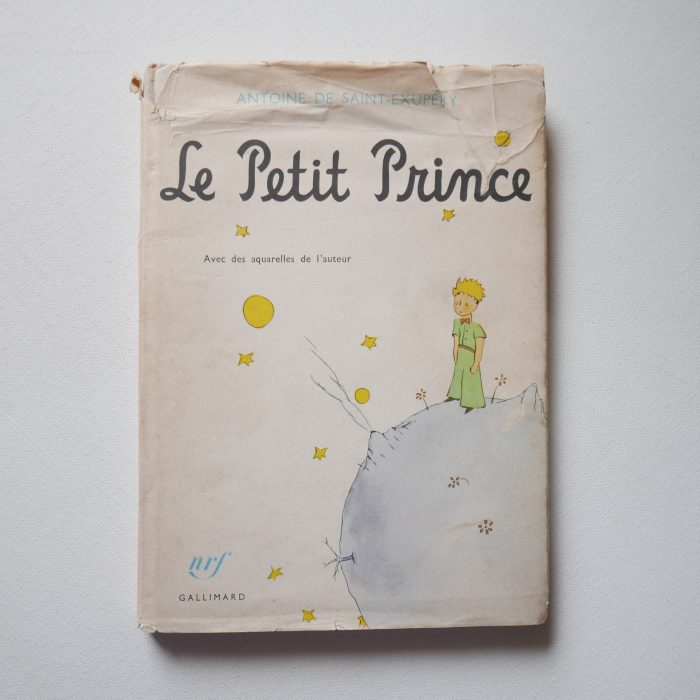
— published by Gallimard, 1946.
Le Petit Prince, special editions in French:
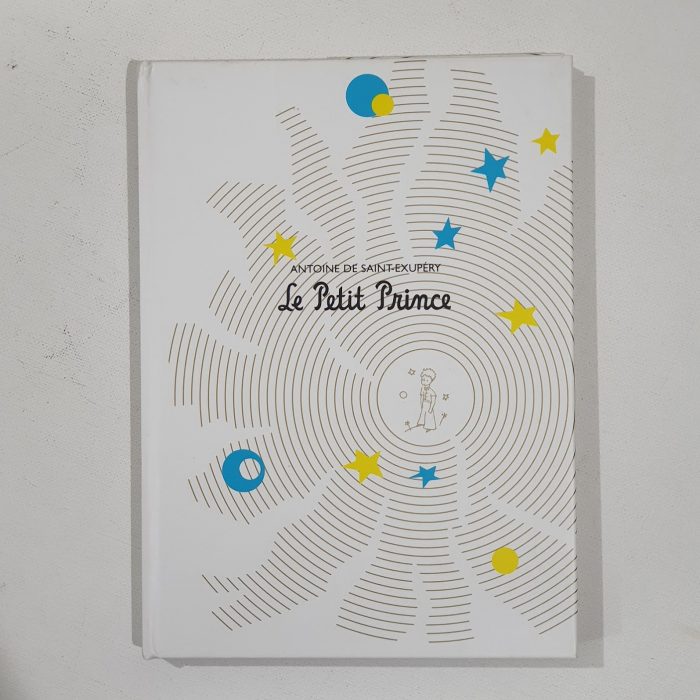
70th Anniversary Edition, published by Gallimard, 2013.
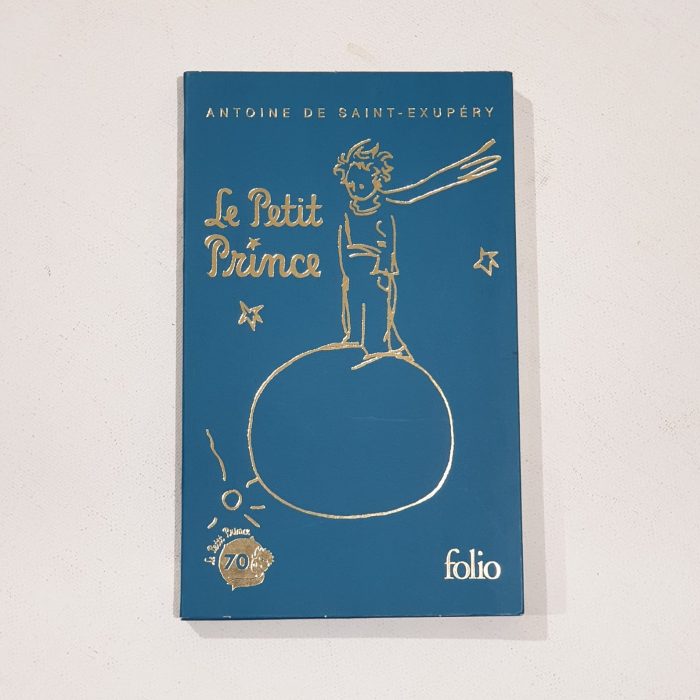
Small 70th Anniversary Edition, published by Folio. I bought this one in Luxembourg.
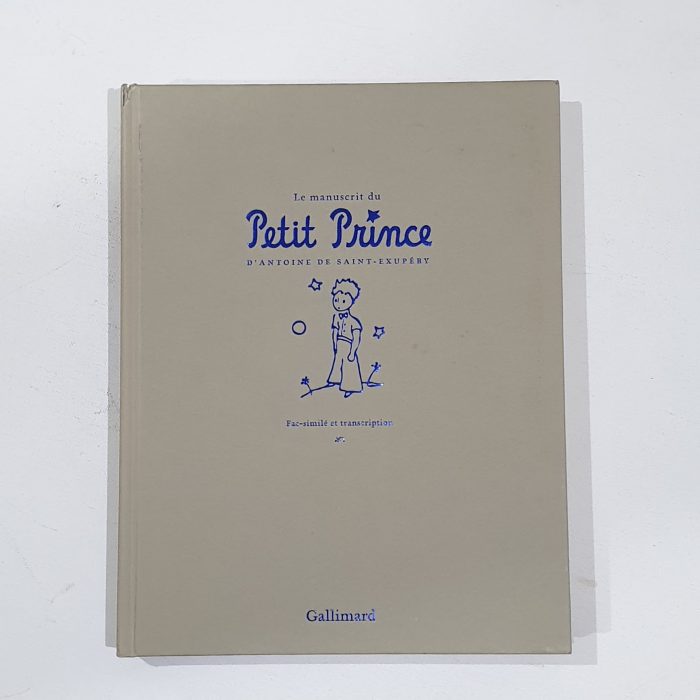
The Original Manuscript. This one, I bought in Paris.
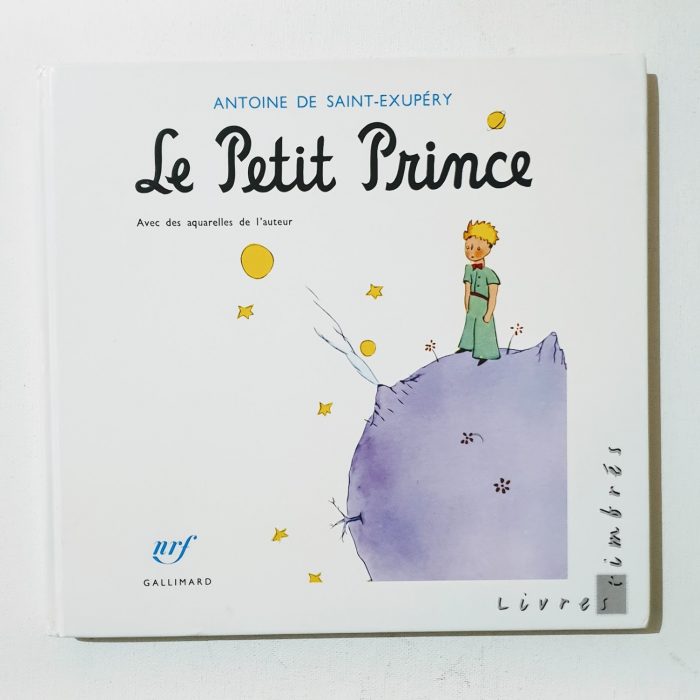
Special edition with commemoration stamps.

Li Juenes Princes – in ancient french (12th century)
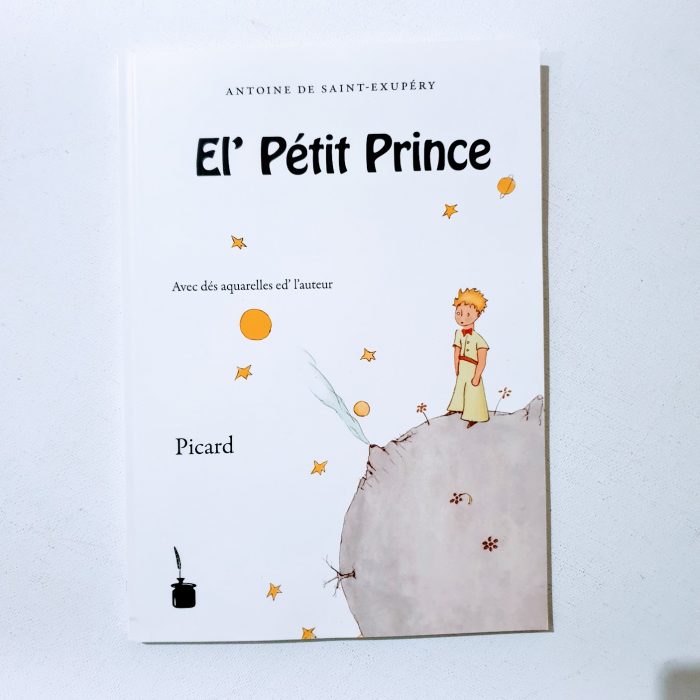
El’ Pétit Prince — in Picard language, a langues d’oïl dialect of the Indo-European language family spoken in the northernmost part of France and southern Belgium.
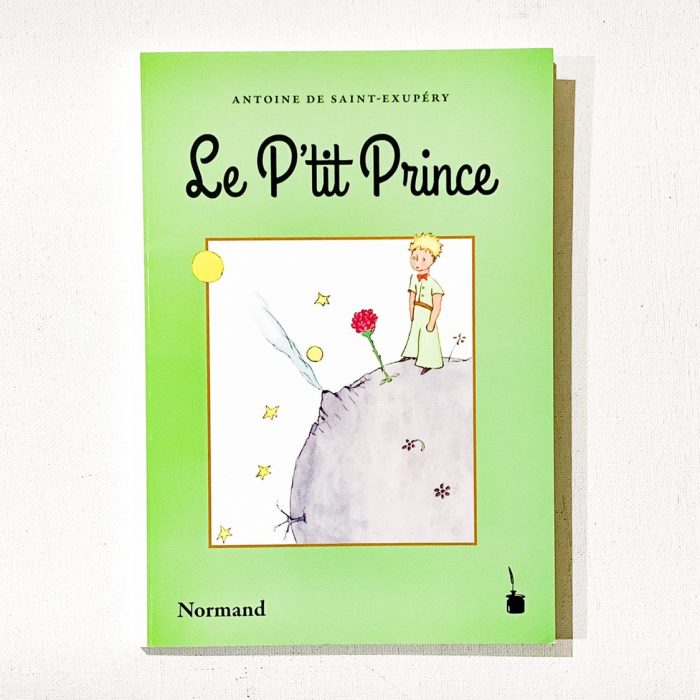
Le P’tit Prince — in Norman, a Romance language classified as one of the Oïl languages along with French, Picard and Walloon. The name Norman-French is sometimes used to describe not only the Norman language, but also the administrative languages of Anglo-Norman and Law French used in England. For the most part, the written forms of Norman and modern French are mutually intelligible. This intelligibility was largely caused by Norman language’s planned adaptation to French orthography.
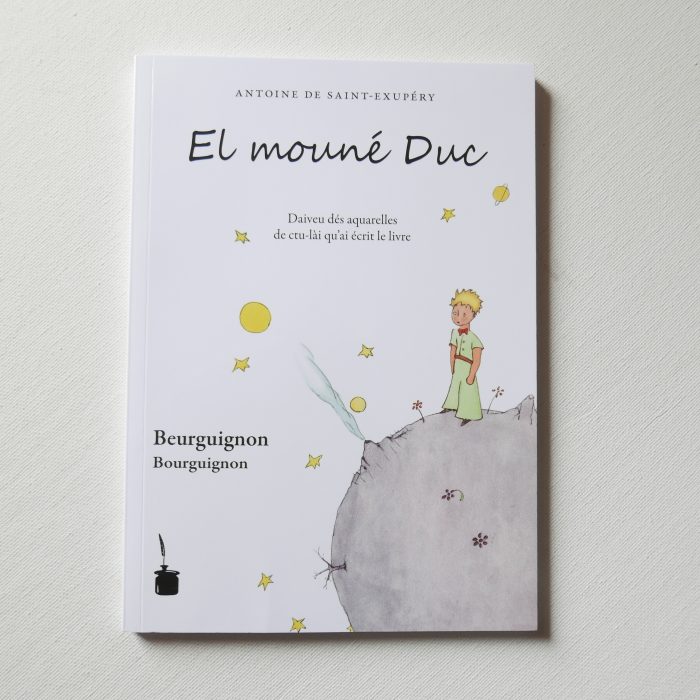
El Mouné Duc — in the Burgundian language, also known by French names Bourguignon, spoken in Burgundy and particularly in the Morvan area of the region.
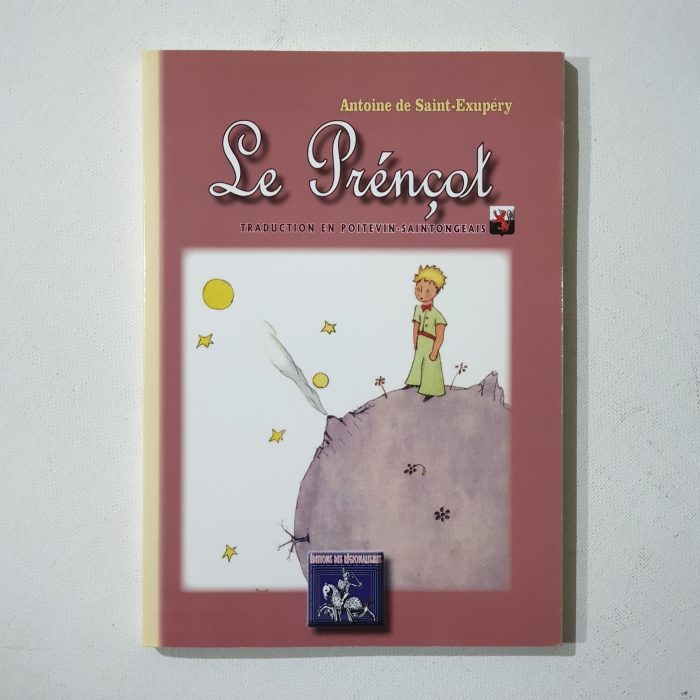
Le Prénçot — in Poitevin language spoken in Poitou, France. Poitevin is now classified as one of the langues d’oïl but is distinguished by certain features of the langue d’oc. The language is spoken on what was the border between the two language families of oïl and oc (Occitan). The langue d’oïl subsequently spread south, absorbing oc features.

Lo Prinçòt — in Gascon language, a dialect of Occitan language mostly spoken in Gascony and Béarn in southwestern France (in parts of the following French départements: Pyrénées-Atlantiques, Hautes-Pyrénées, Landes, Gers, Gironde, Lot-et-Garonne, Haute-Garonne, and Ariège) and in the Aran Valley of Catalonia.

Lou Pichin Prince — in Niçard / Nissart / Niçart / Niçois / Nizzardo, which is considered a distinct subdialect of the Occitan language (Provençal dialect) spoken in the city of Nice and in the historical County of Nice (since 1860 the main part of the current French département of Alpes-Maritimes). In addition to Monégasque, Niçard is also spoken by some in Monaco.

Lou Princihoun — in Provençal, a variety of Occitan language spoken by a minority of people in southern France, mostly in Provence.

Lo Prinçonet — in Limousin / Lemosin dialect of the Occitan language, which is spoken in the three departments of Limousin, parts of Charente and the Dordogne in the southwest of France.
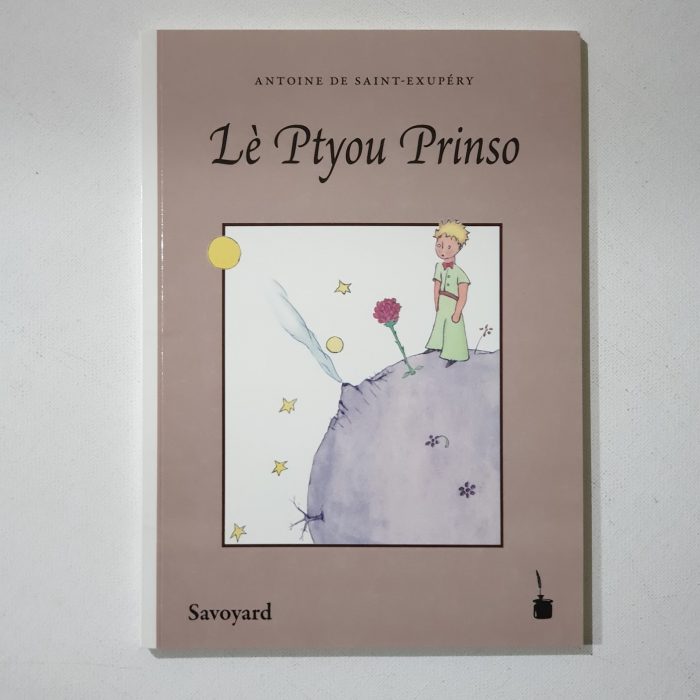
Lè Ptyou Prinso — in Savoyard dialect of the Franco-Provençal language spoken in some territories of the historical Duchy of Savoy, nowadays a geographic area spanning Savoie and Haute-Savoie, France and the Canton of Geneva, Switzerland.
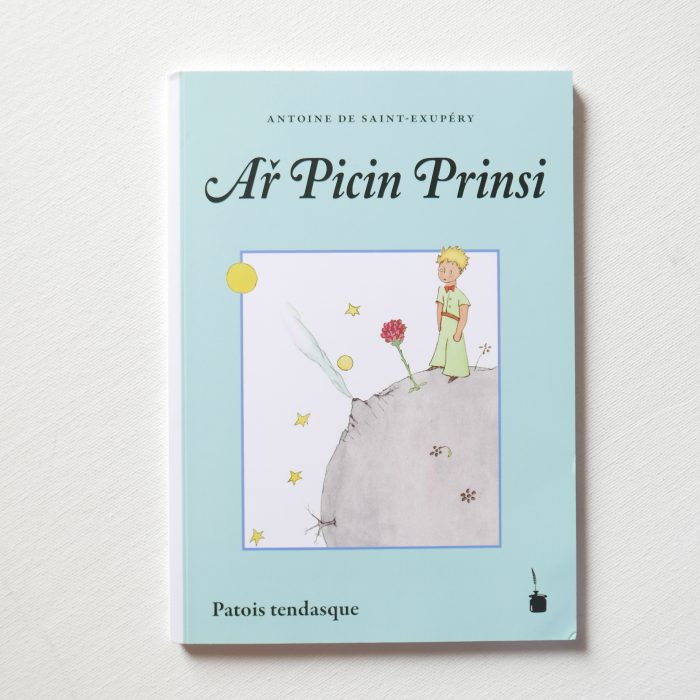
Ar Picin Prinsi — in Tendasque, a variety of the Ligurian language with Provençal influences spoken around Tende, a commune in the Alpes-Maritimes department in southeastern France.

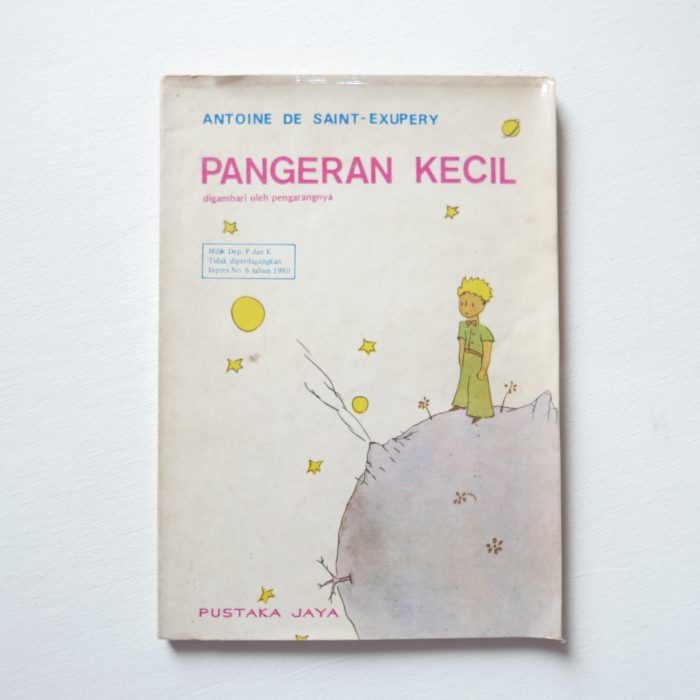
Pangeran Kecil, 1979. This is the first Indonesian translation of Le Petit Prince, published by Pustaka Jaya in 1979. The translation started when an author, Wing Karjo, asked his students to make a project to translate Le Petit Prince into Indonesian language.
The blue box mentioned that this book “Belongs to the Ministry of Education and Culture. Not for Sale. Presidential Order No 6/1980.”
It is extremely difficult to find this book, even in Indonesia. I found this one in a flea book market of Palasari, in Bandung city. I consider this book too valuable, so I read it only once. So I read Le Petit Prince more in english and french editions.
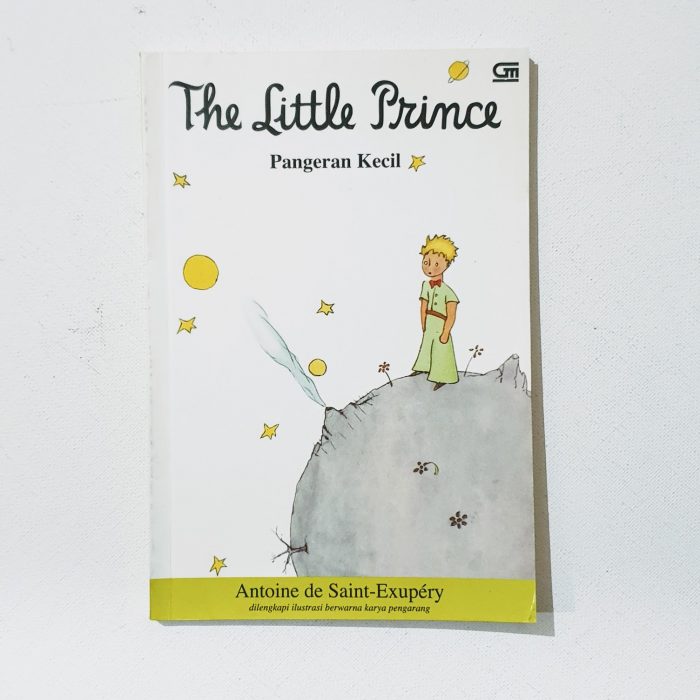
Le Petit Prince – Pangeran Kecil, 2003. And Le Petit Prince – Pangeran Cilik, 2007. Two translations by Gramedia. Like many Gramedia translation book, the book title is kept in its original language, subtitled by the Indonesian translation of the title.
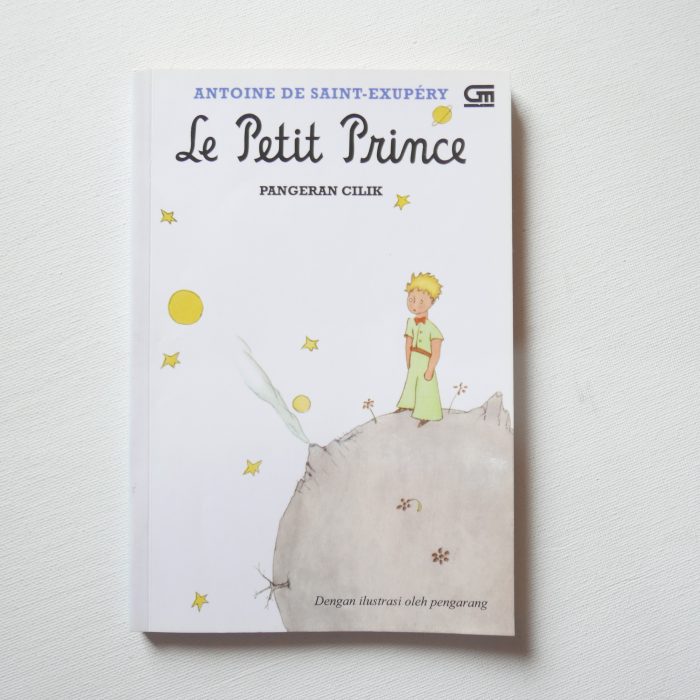

Si Pangeran Kecil, 2013. Experiencing the difficulty to find an Indonesian translation, I started to translate the book myself. This translation was written to commemorate the 70th anniversary of the publication of Le Petit Prince. I wrote this translation while travelling to some Indonesian cities, including Makassar, Semarang, Palembang, Denpasar, Bandung, and Jakarta. The source of the translation was a text in french, found in Australian Gutenberg project website.
I found a local publisher willing to publish this book. But the progress was awfully slow. Then I decided to self-published it via Lulu, so any LPP lovers can buy it directly from Lulu with virtually no constraints.
In 2018, this book was republished with standardised illustration throughout the book (drawing location etc).
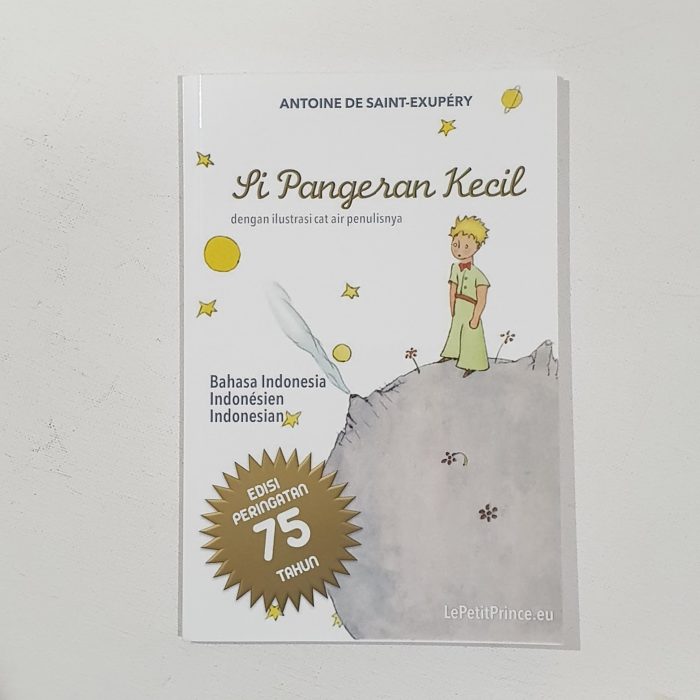
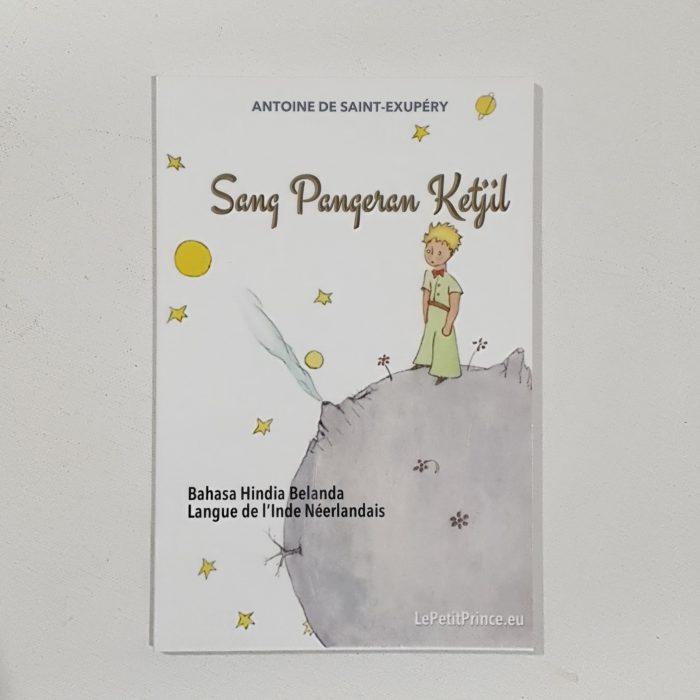
Sang Pangeran Ketjil, 2014. I rewrote Si Pangeran Kecil into an old Indonesian style. This books uses old idioms and old spelling system, called Van Ophuijsen orthography, used in Indonesia when this country was called Hindia Belanda, under Dutch administration, before 1942.
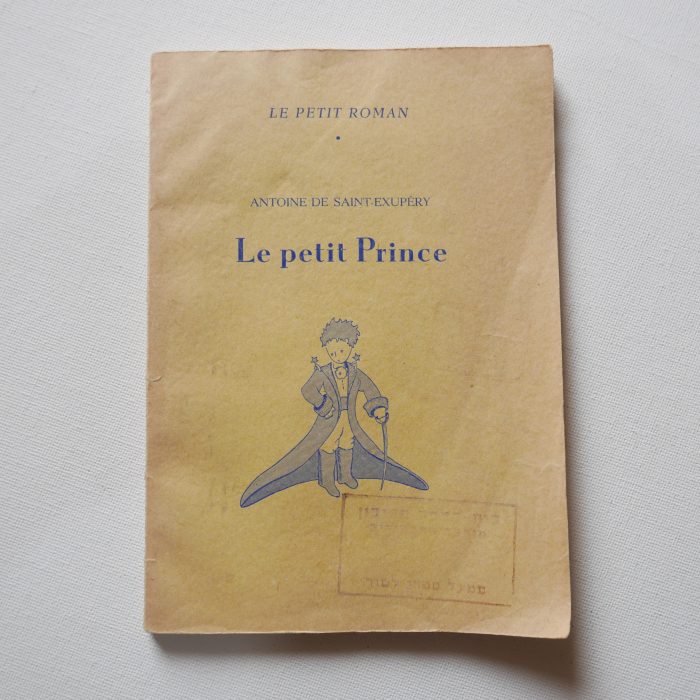
Le Petit Prince, 1950. in French and some Dutch annotation, was published in Groningen and Jakarta, 1950. I could not get more information, including whether this particular edition was printed / published in Groningen or Jakarta.
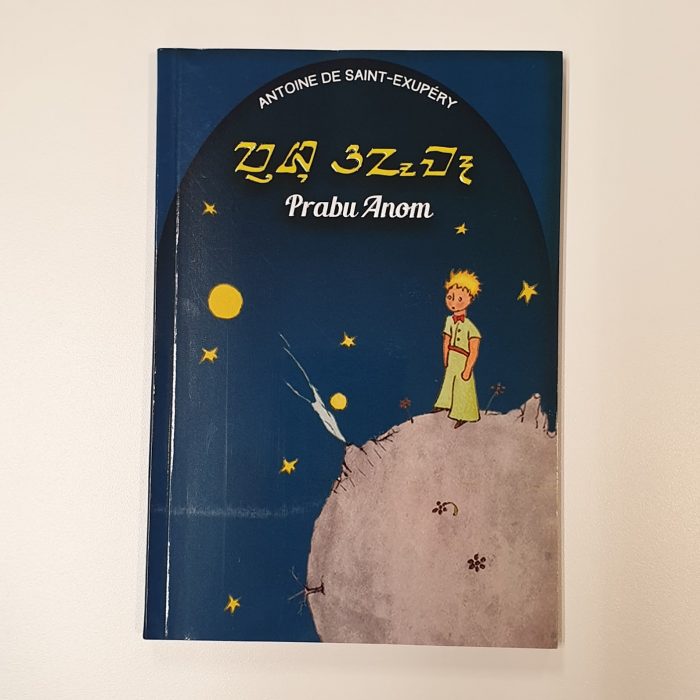
Prabu Anom — in Sundanese, a language spoken by more than 30 million people in West Java province in Indonesia. This edition is translated by Syauqi Stya Lacksana. Written in both Sundanese character and latin letter, this first edition (above) is not for sale. It is only distributed freely for selected school and libraries in West Java, and strictly prohibited for redistribution outside Indonesia. The teams, however, have prepared the second edition (below), with different cover, to be distributed more flexibly.
